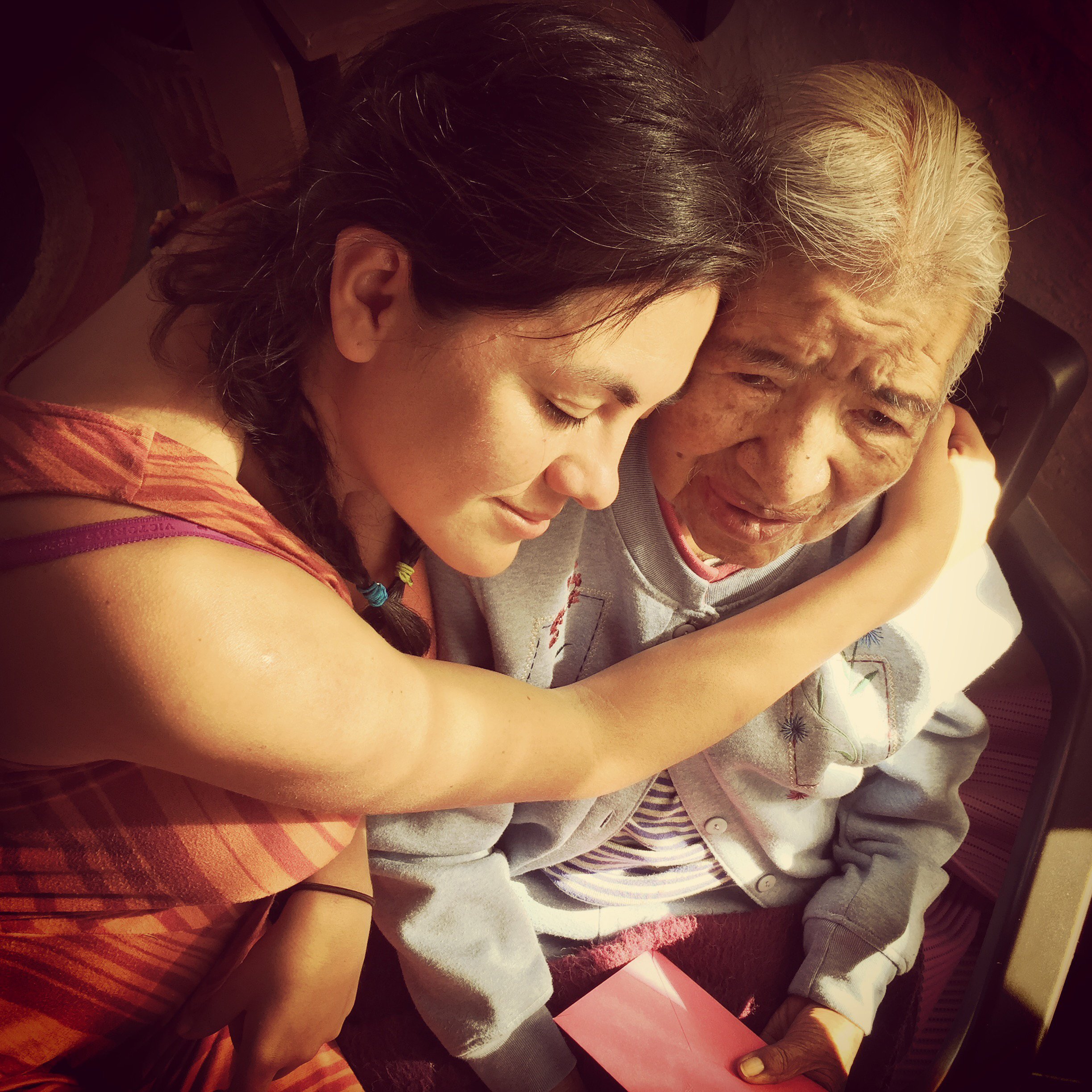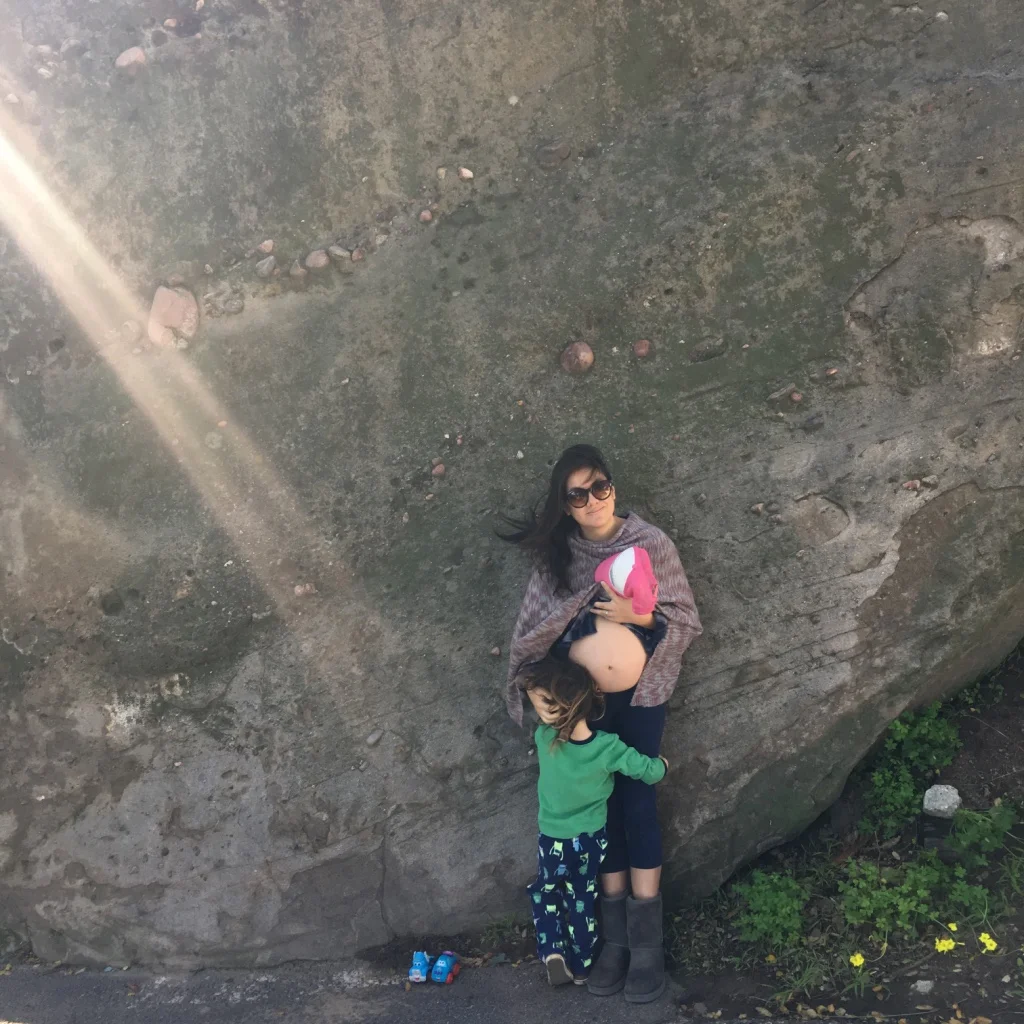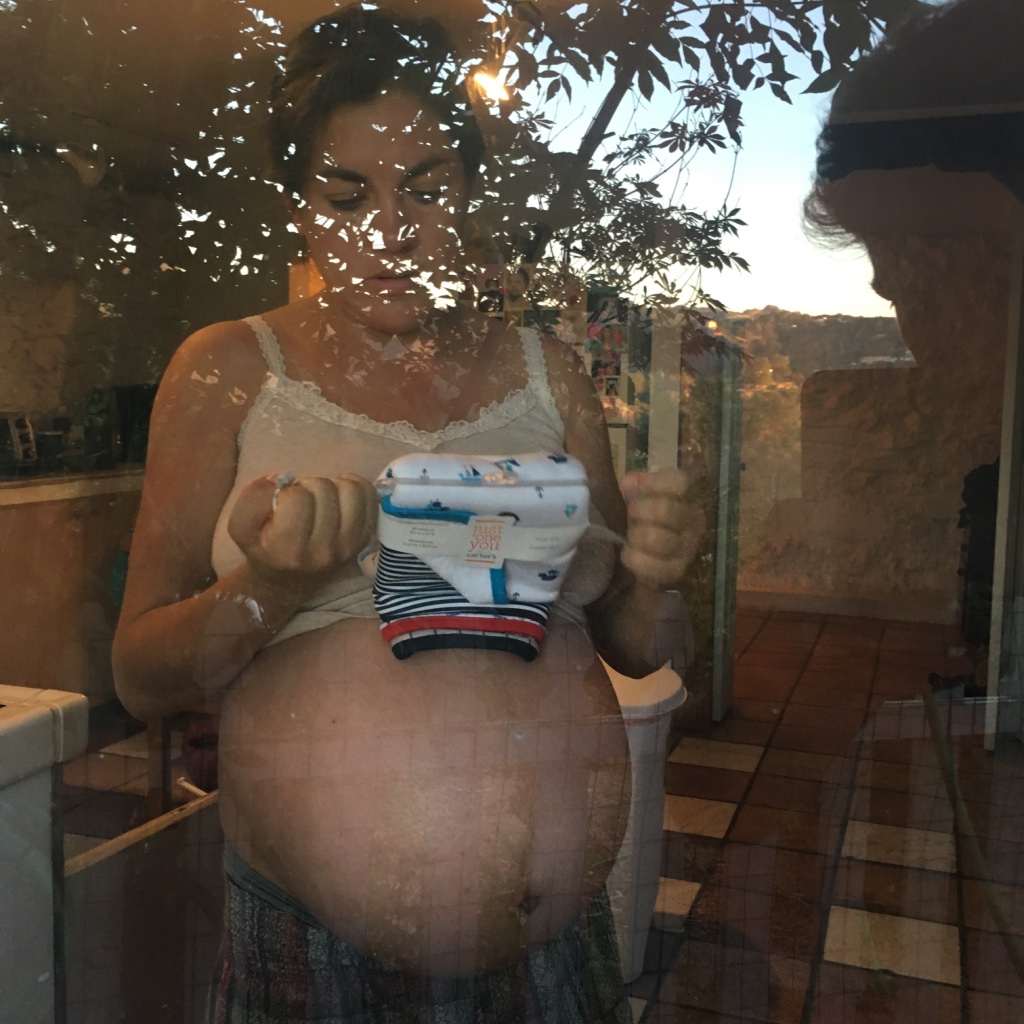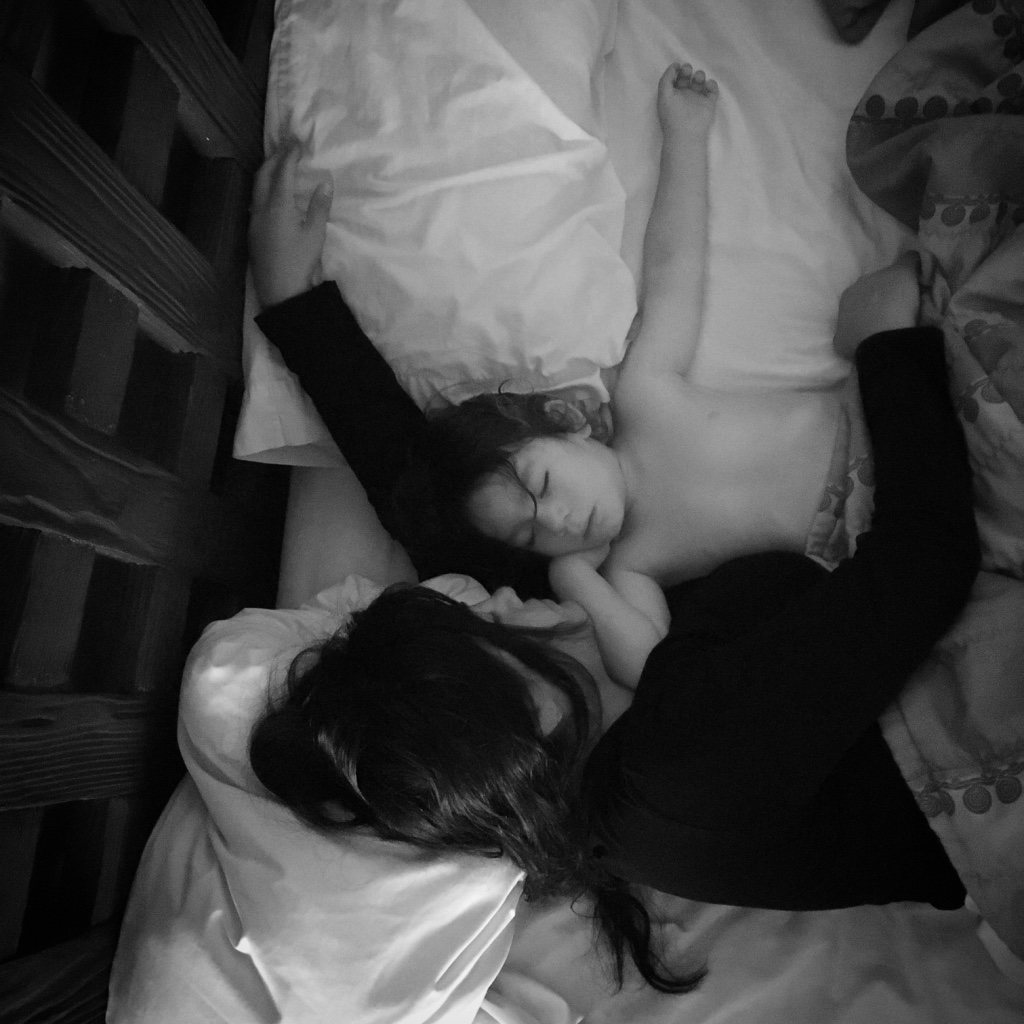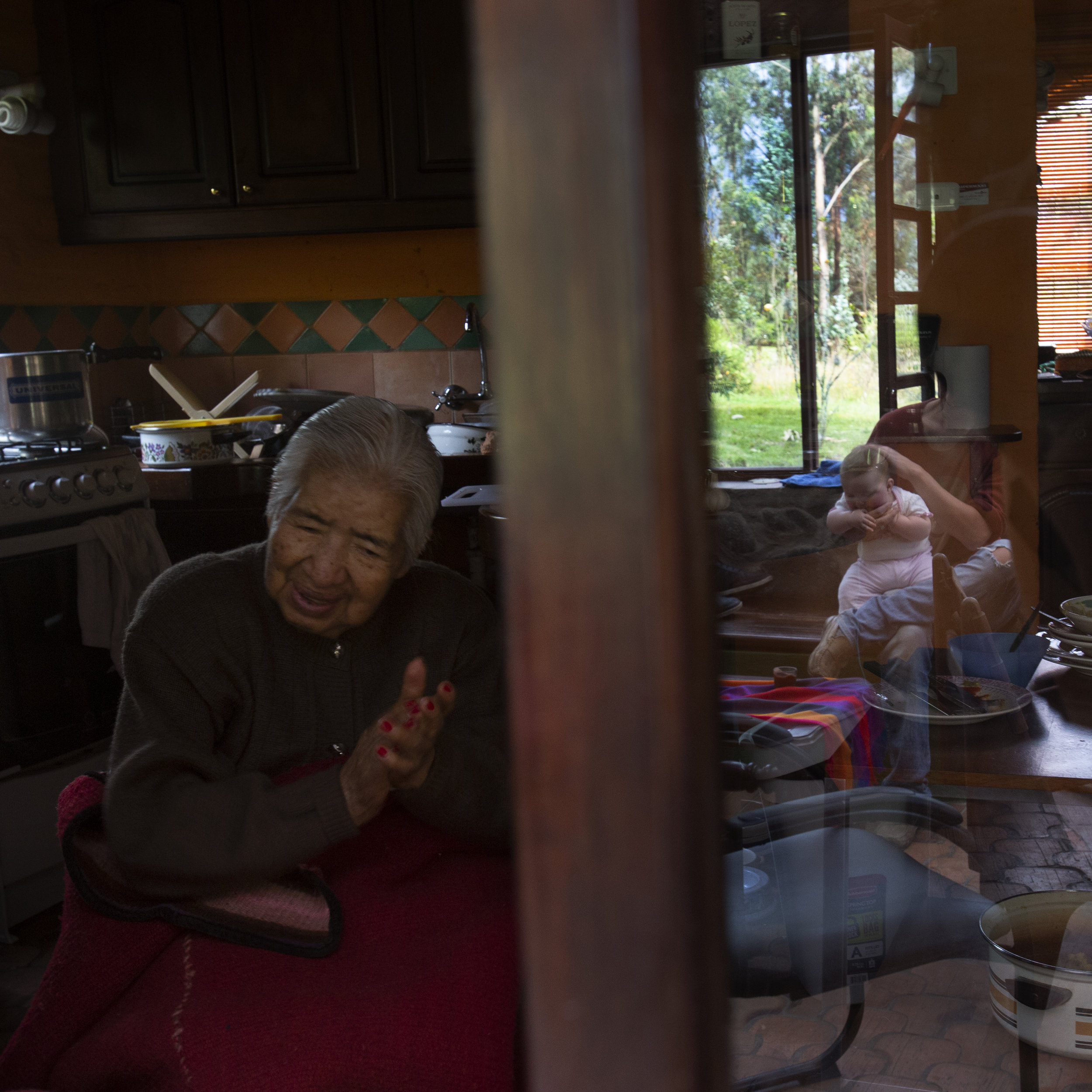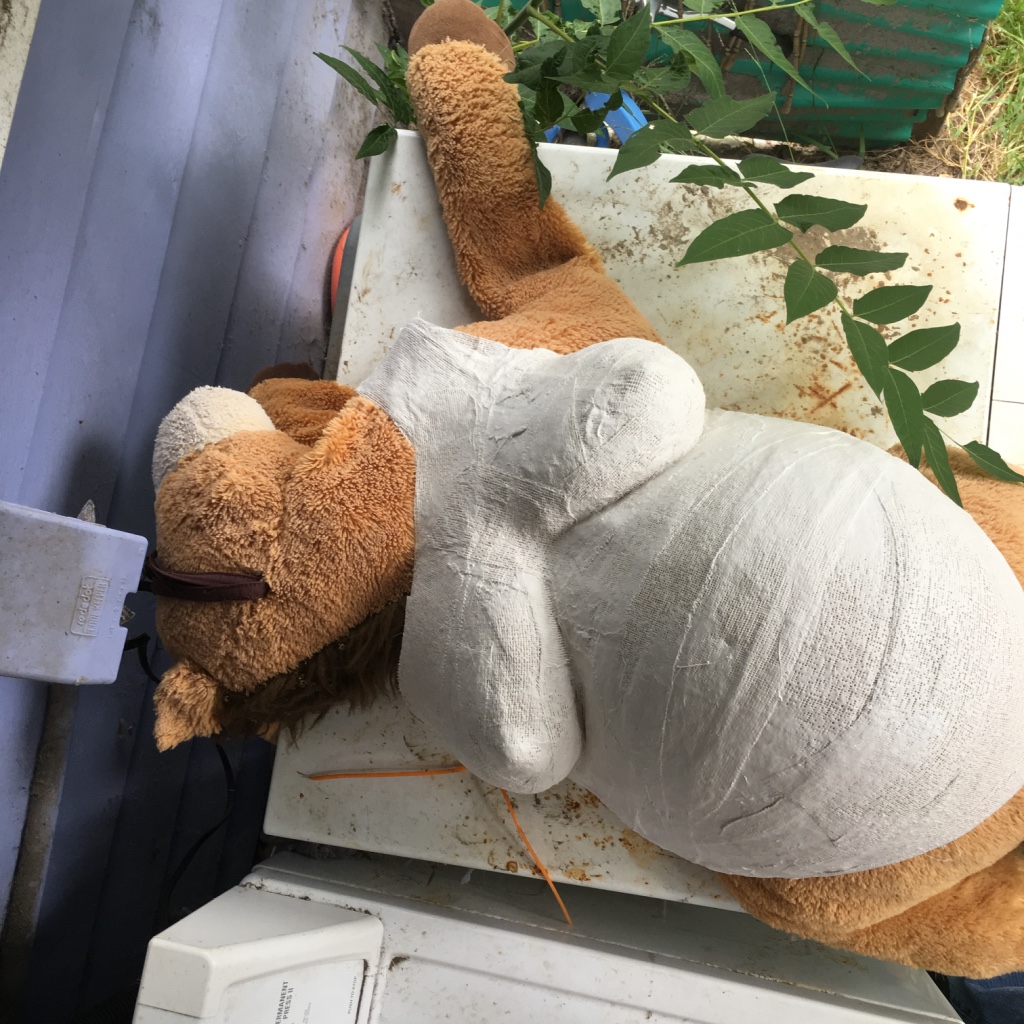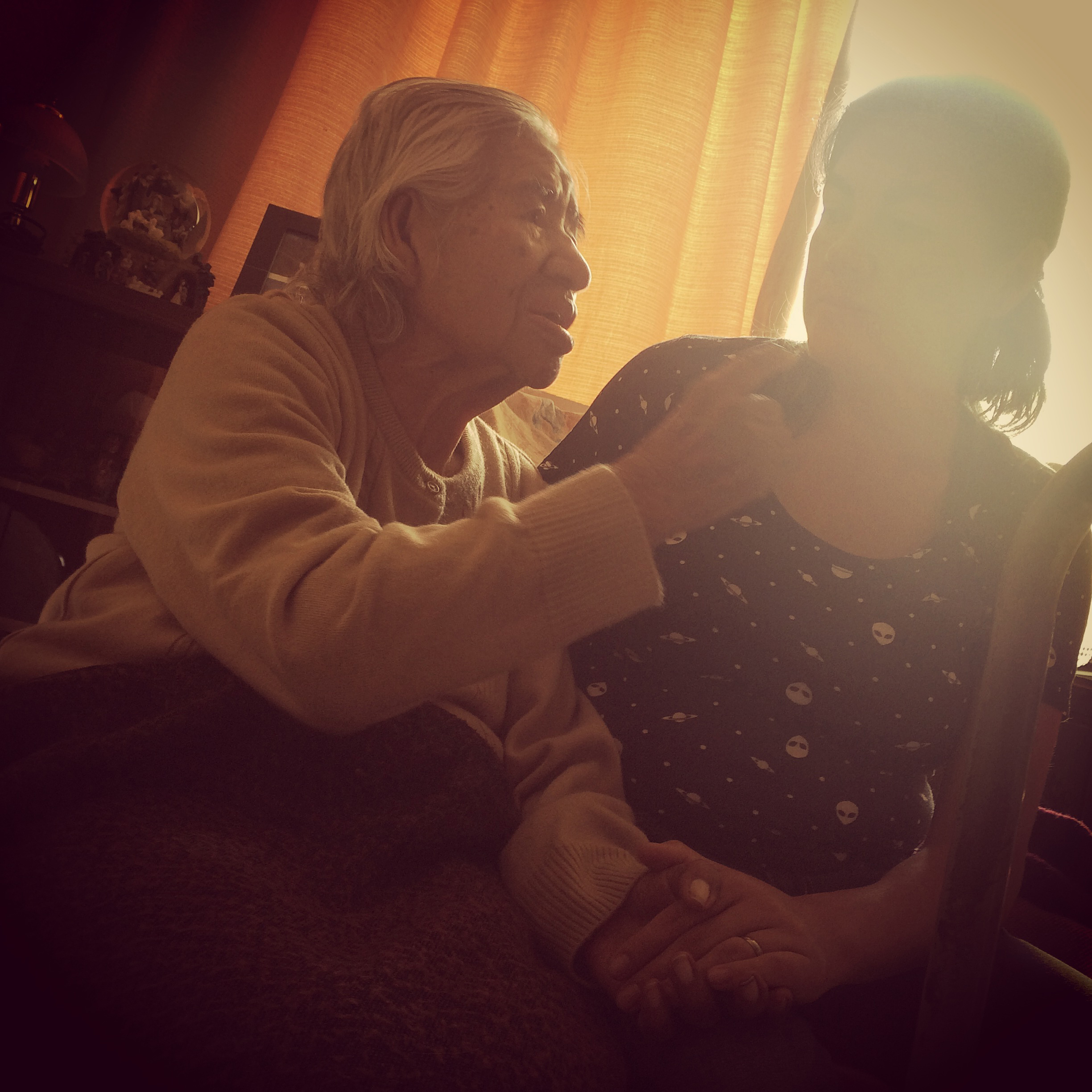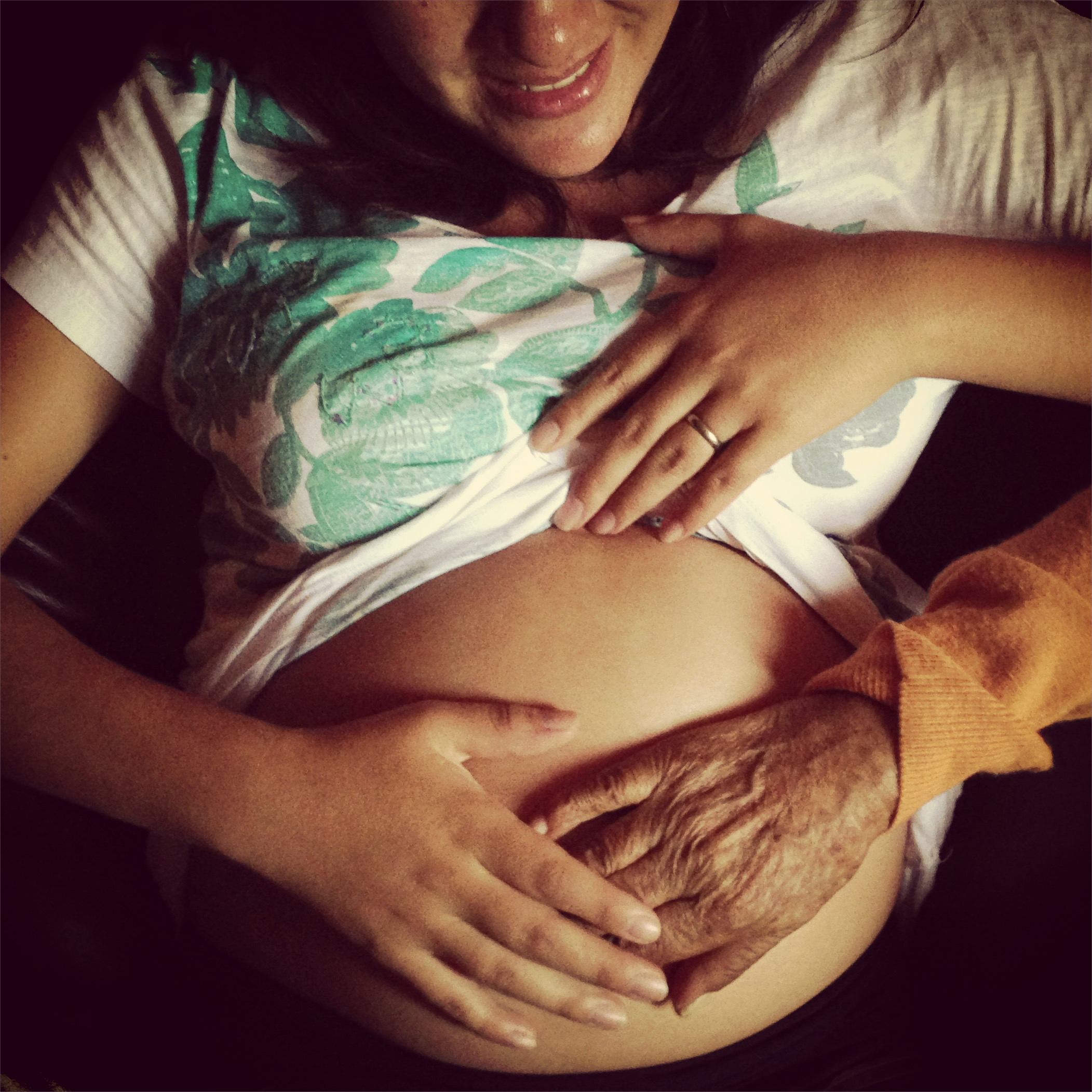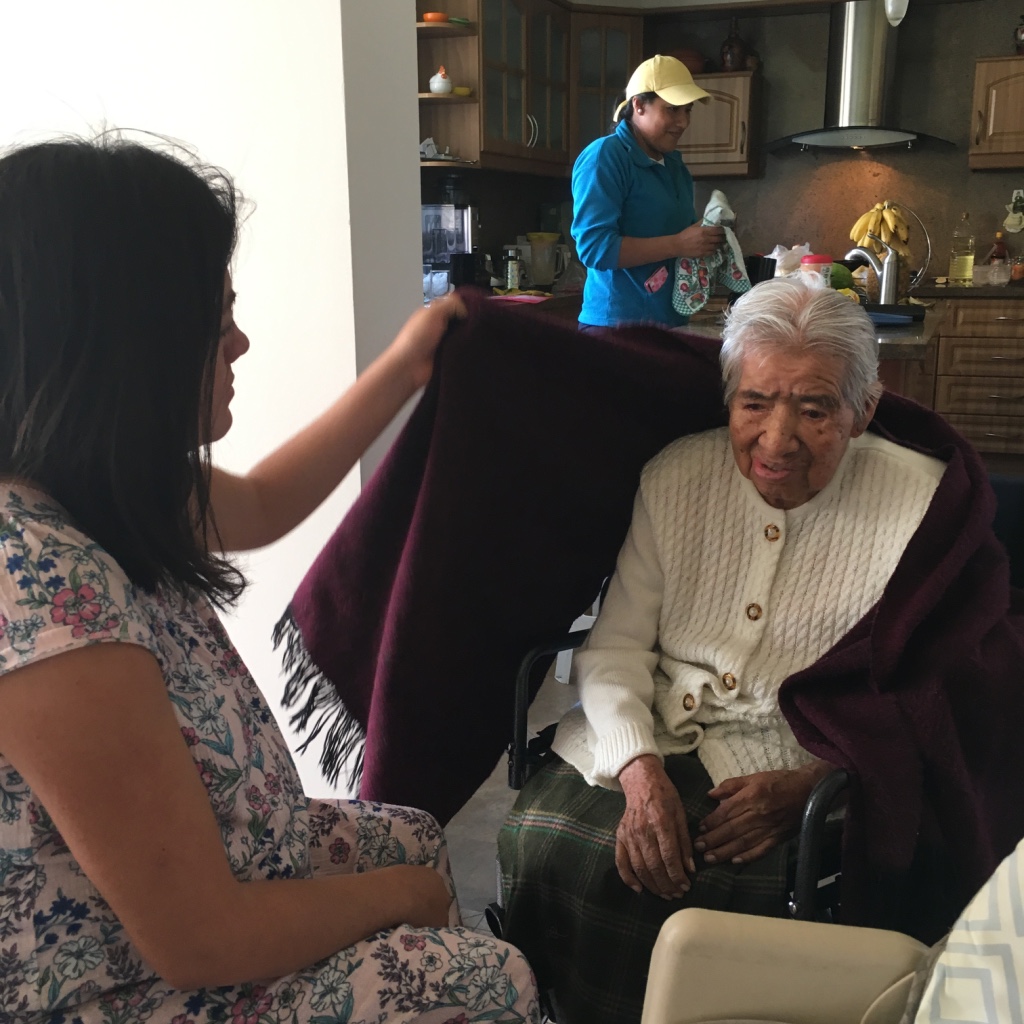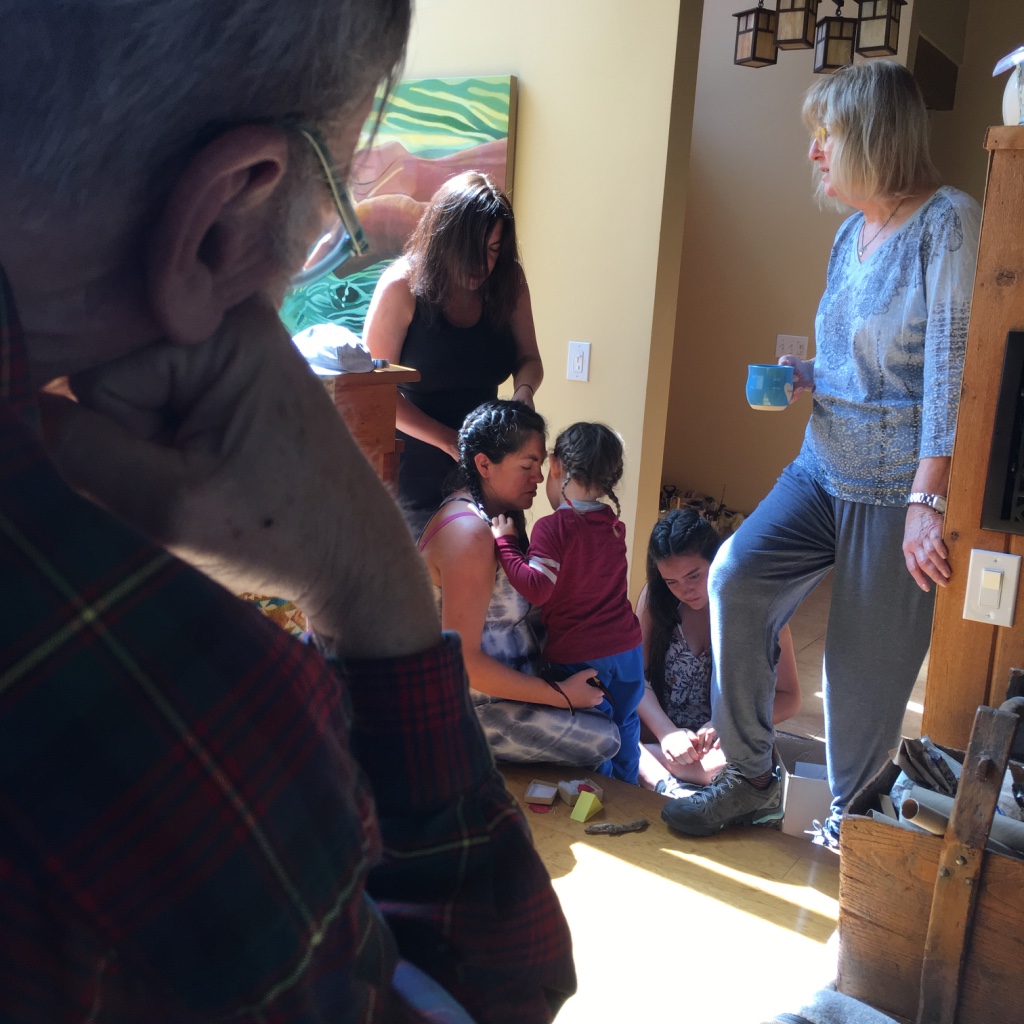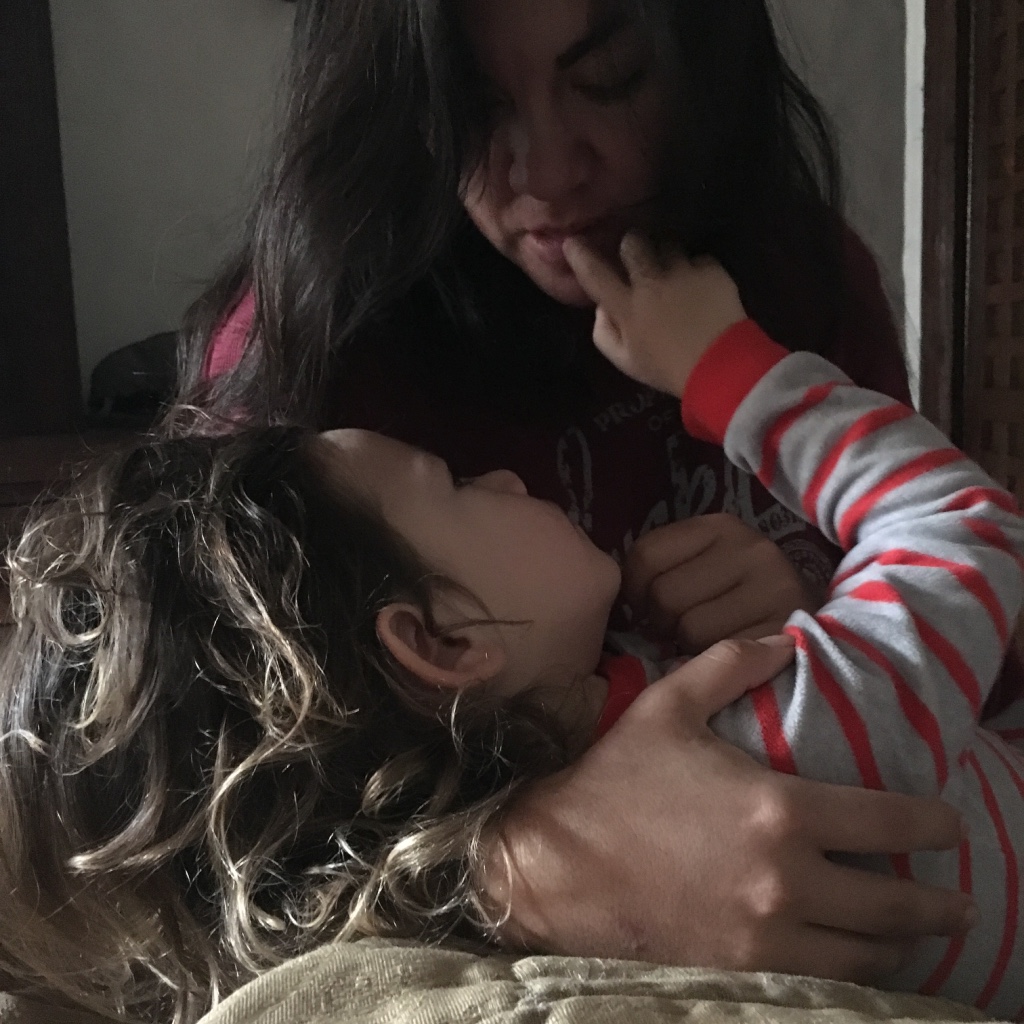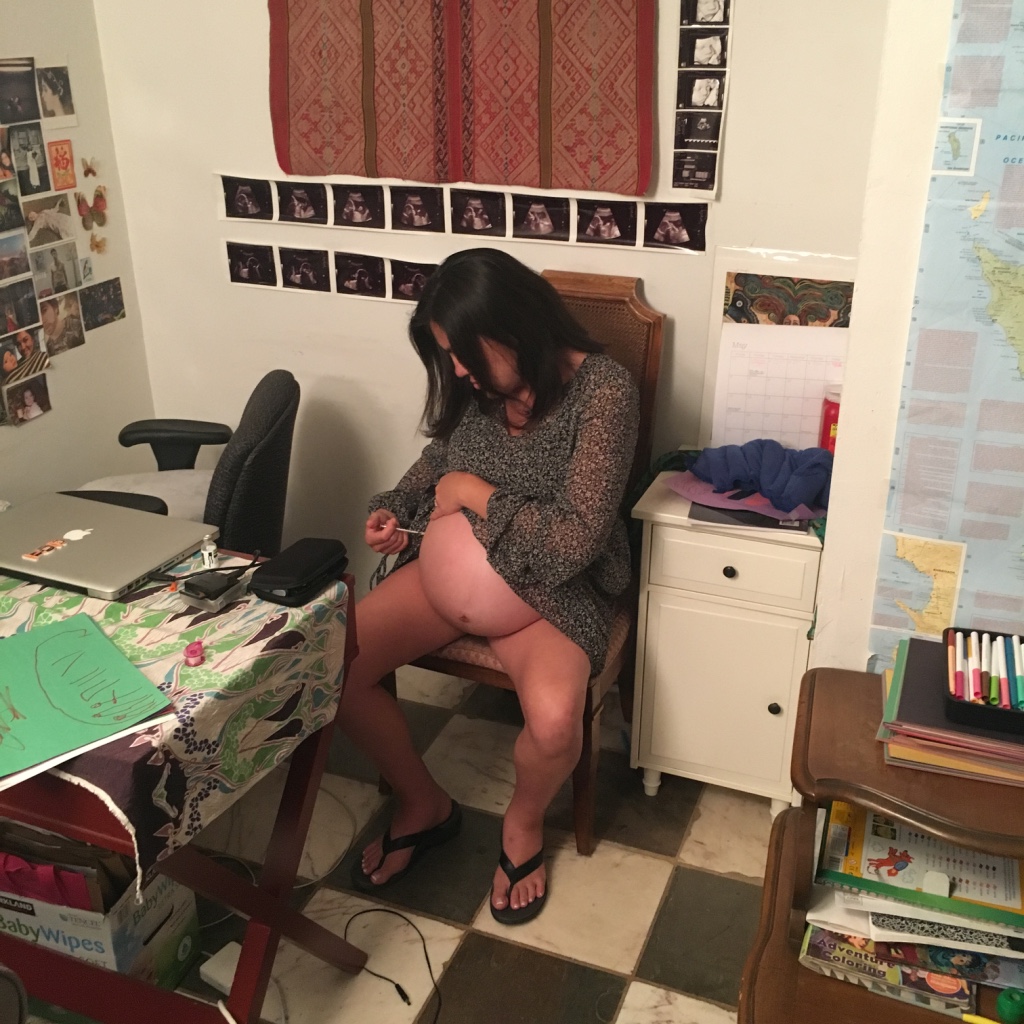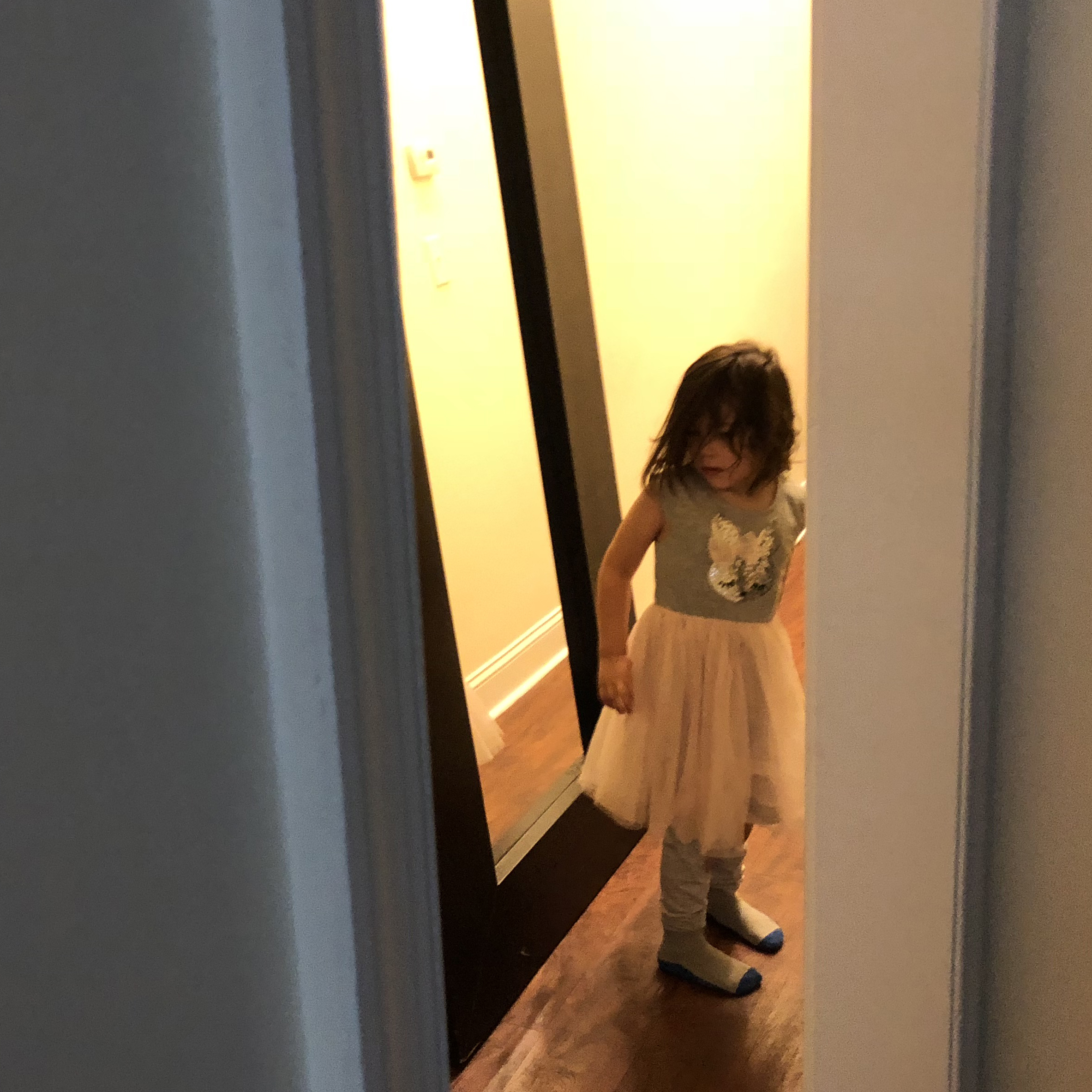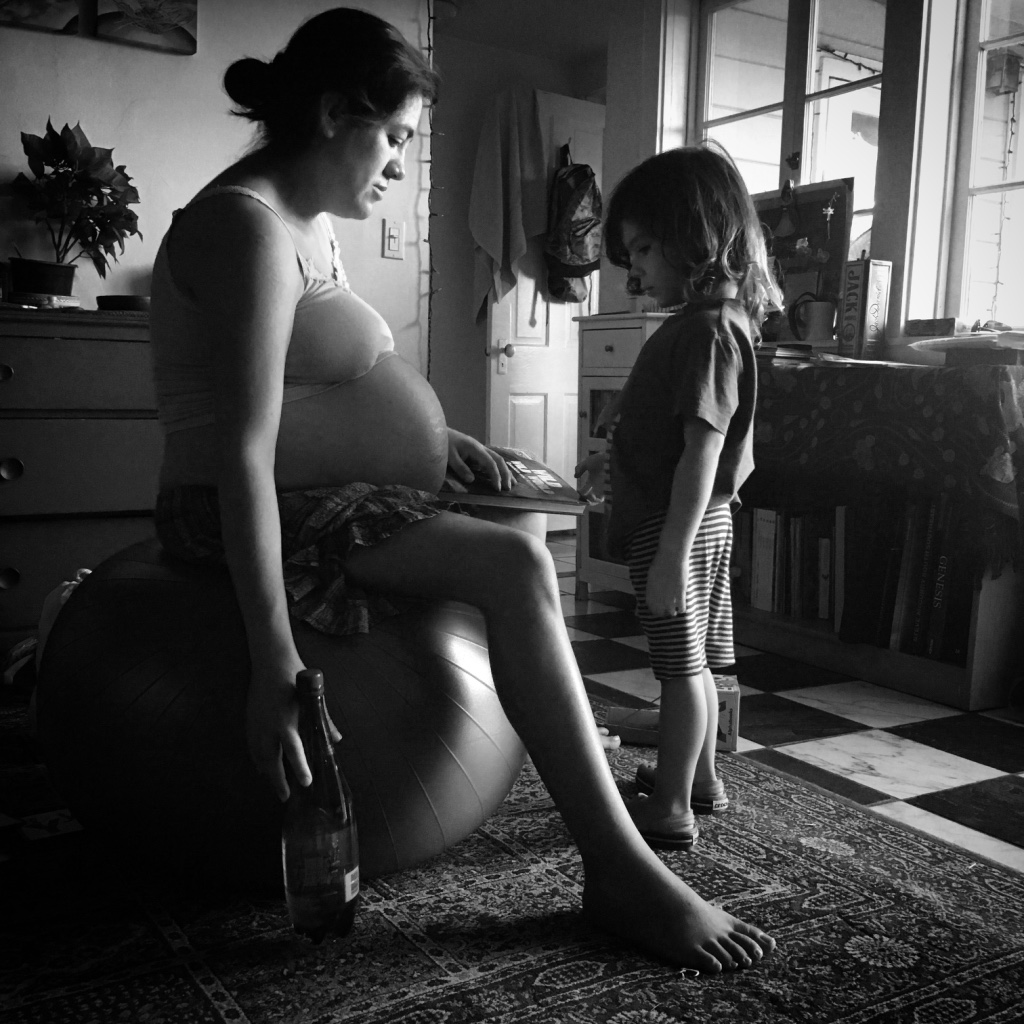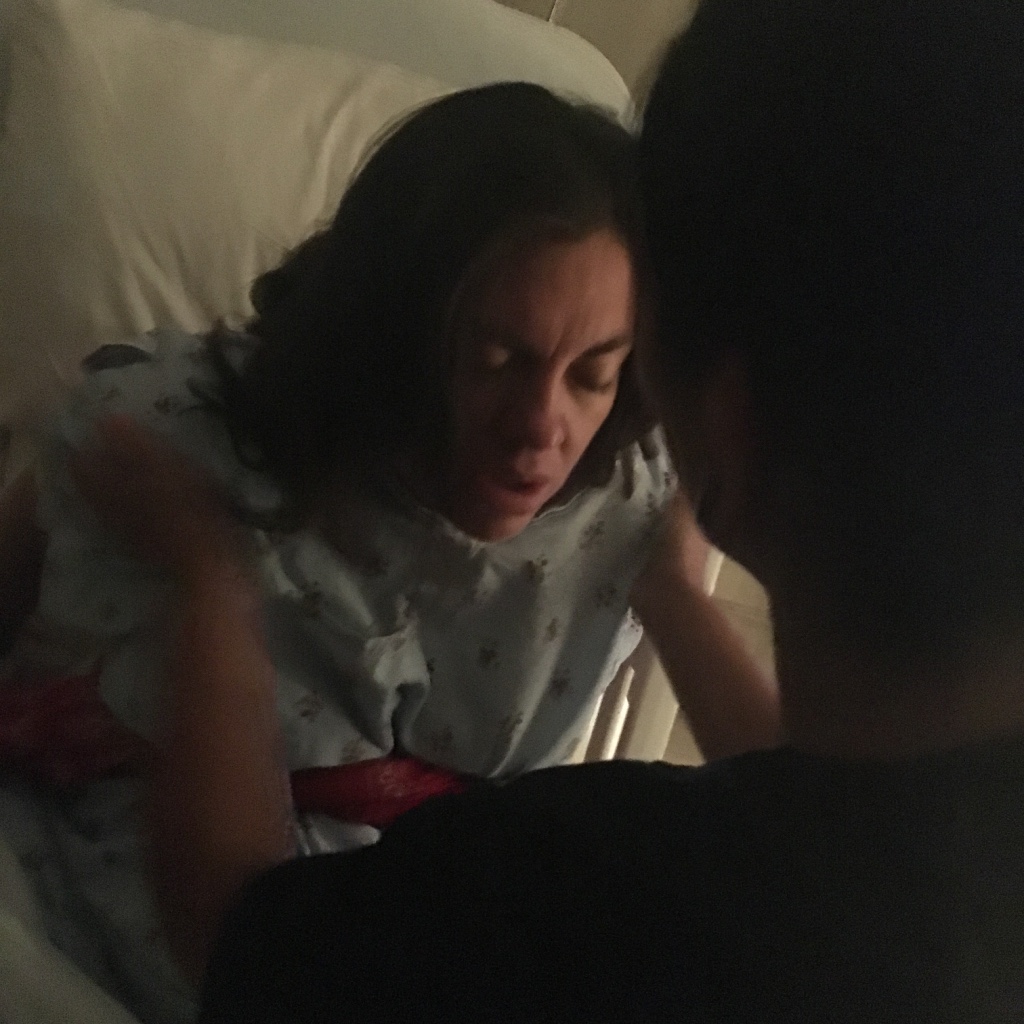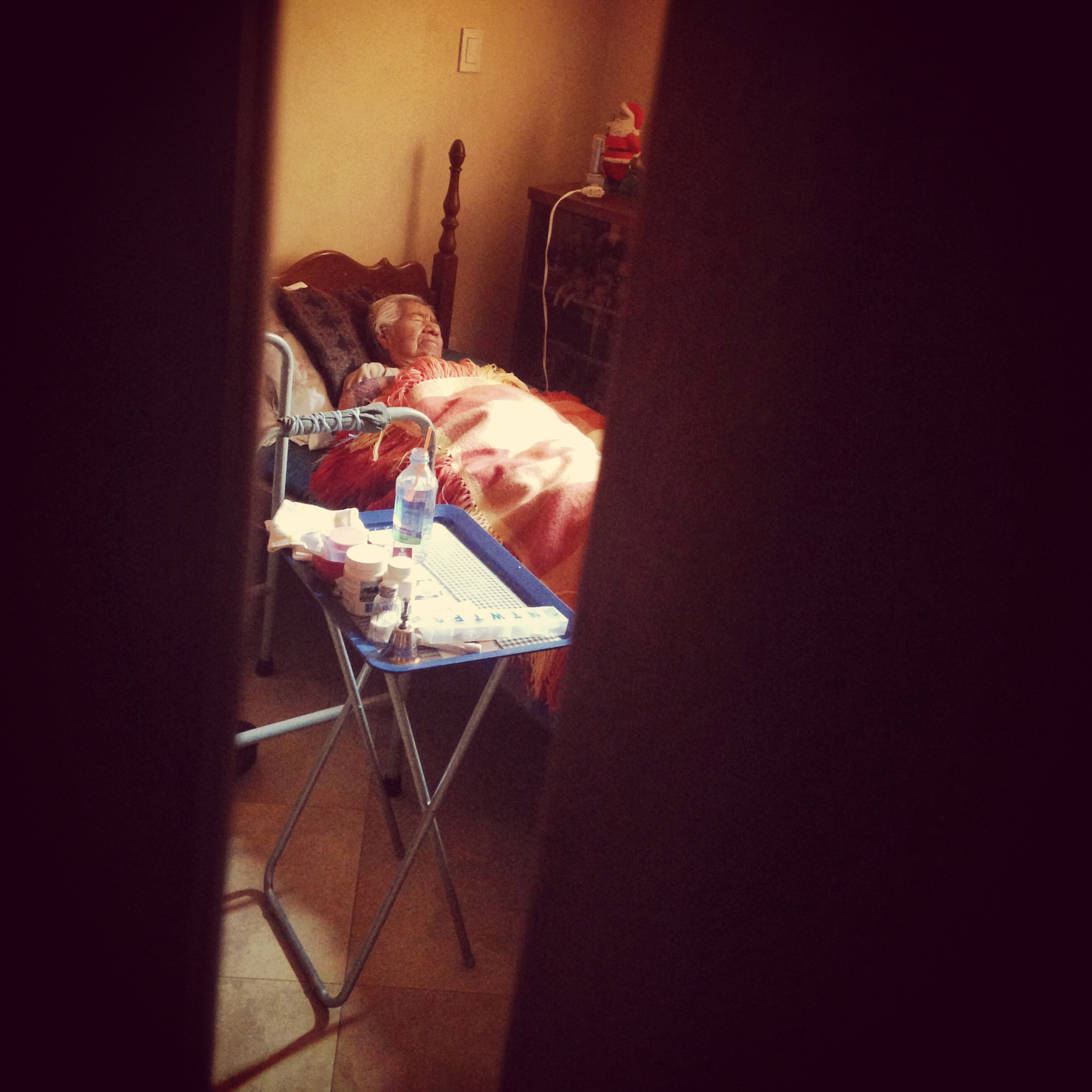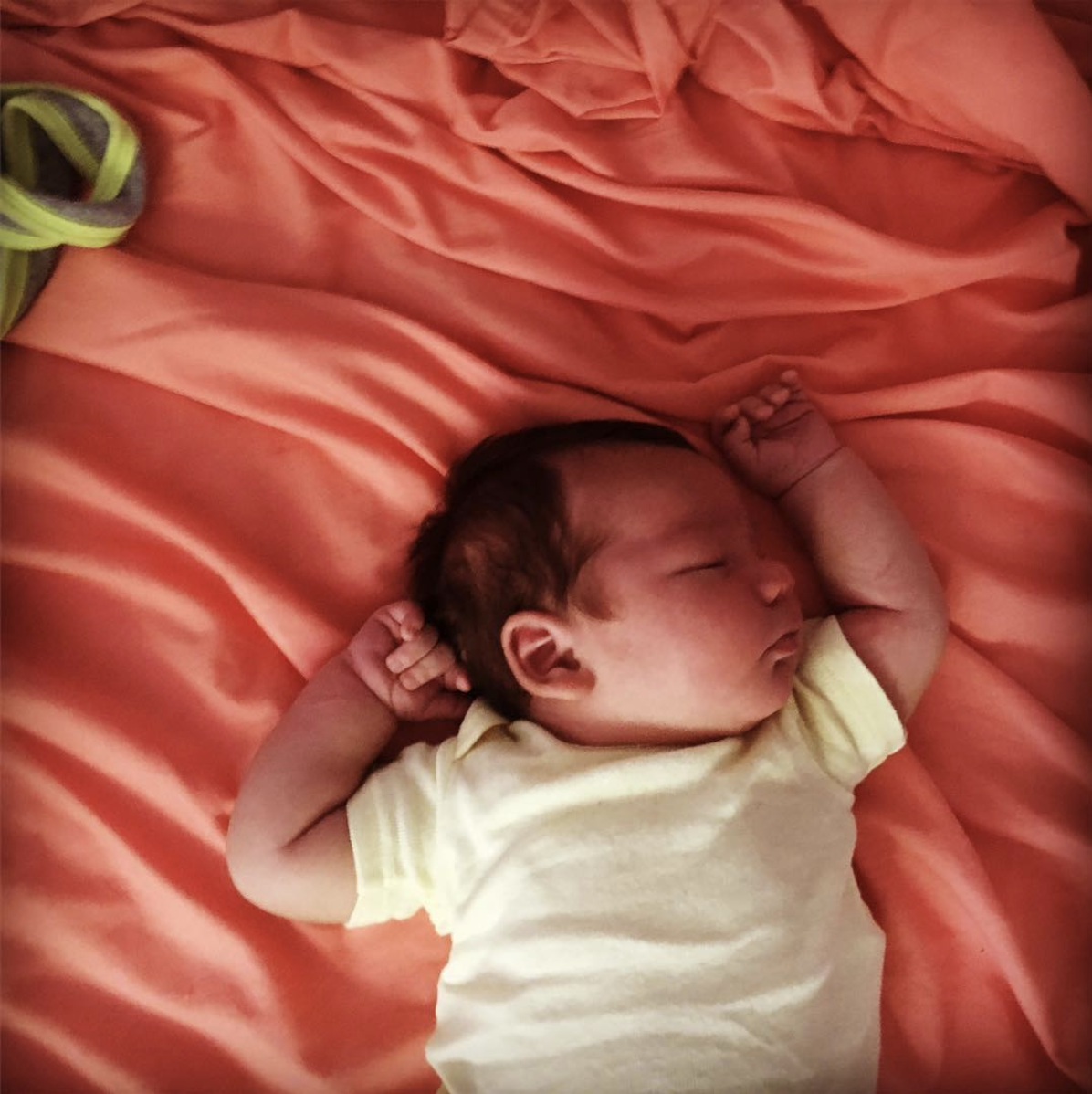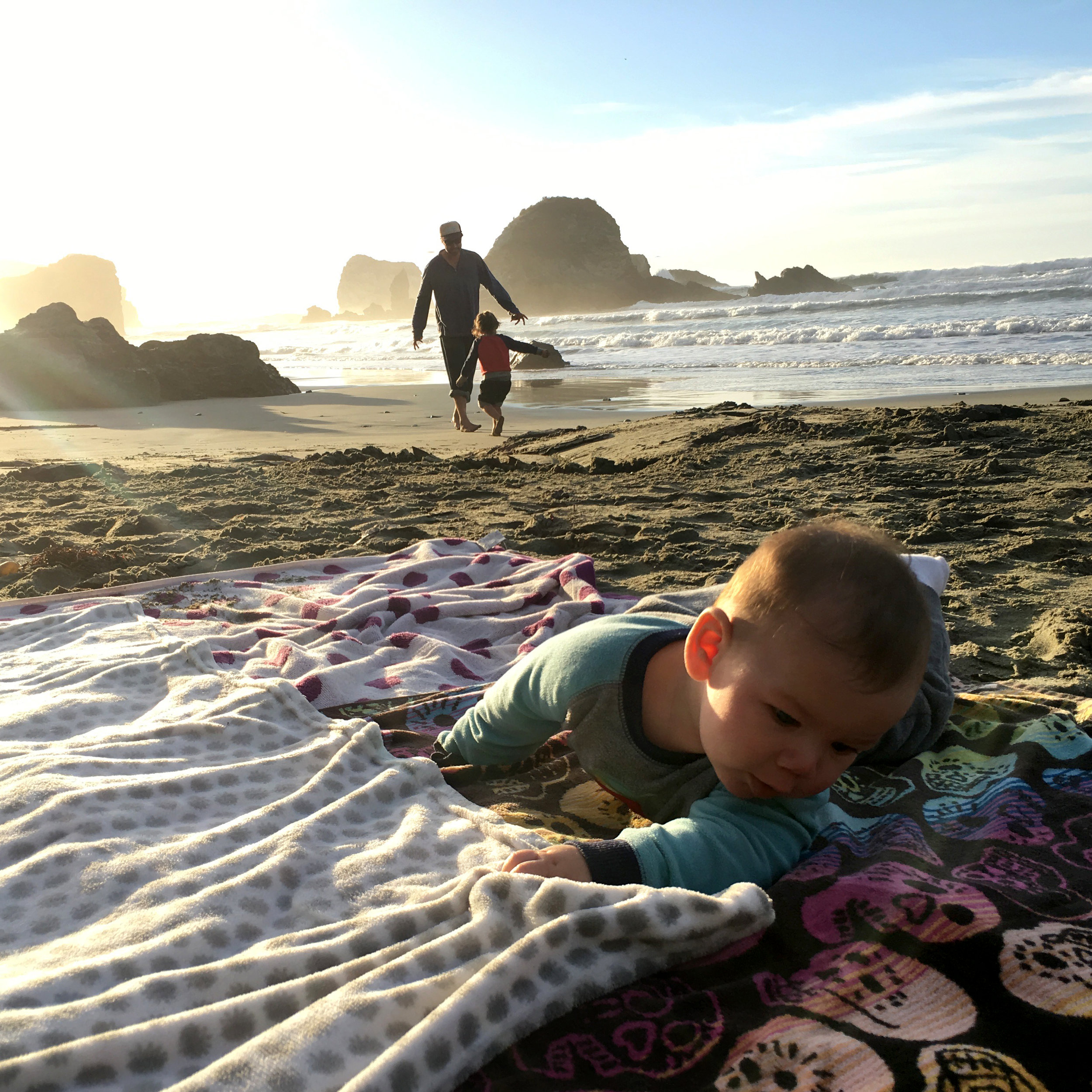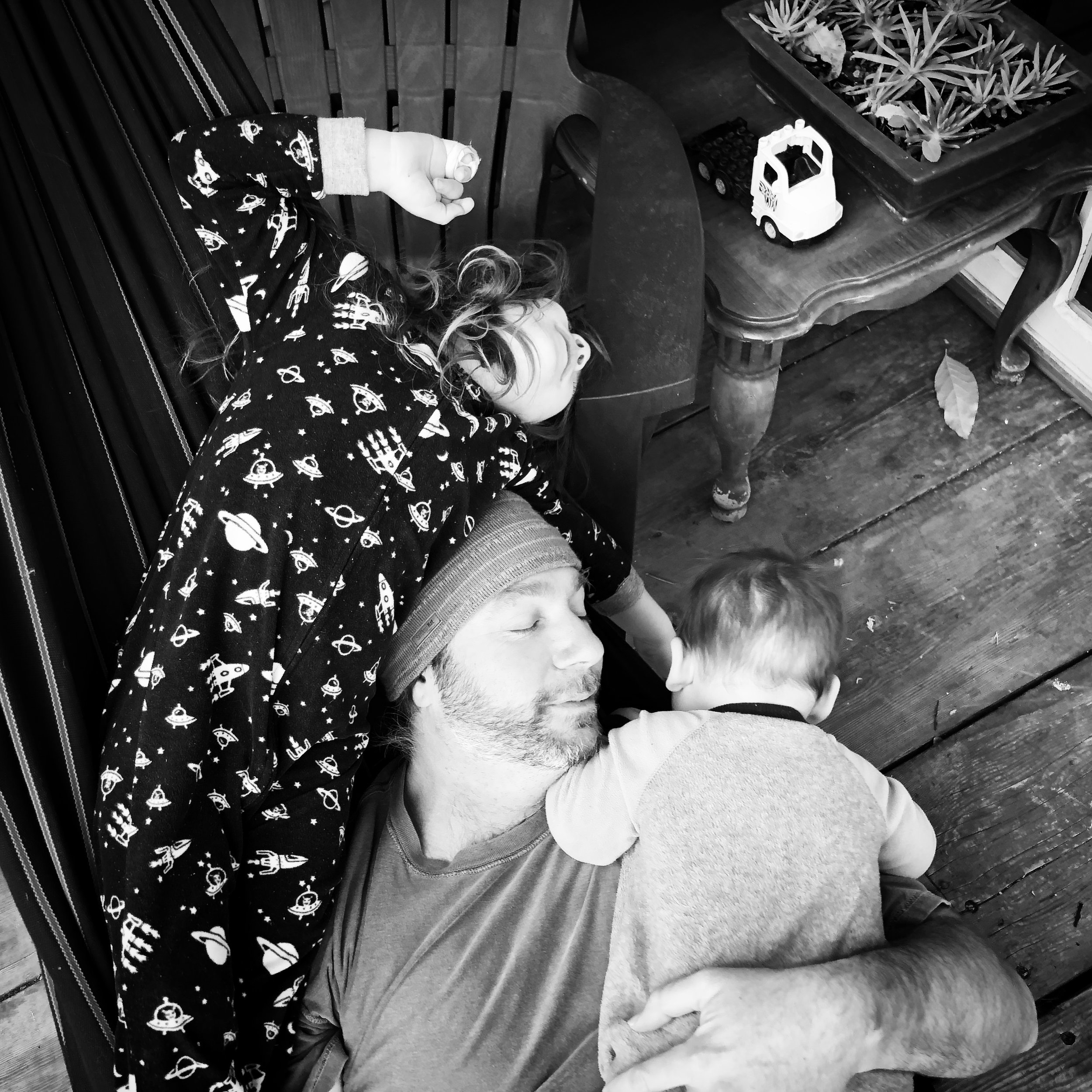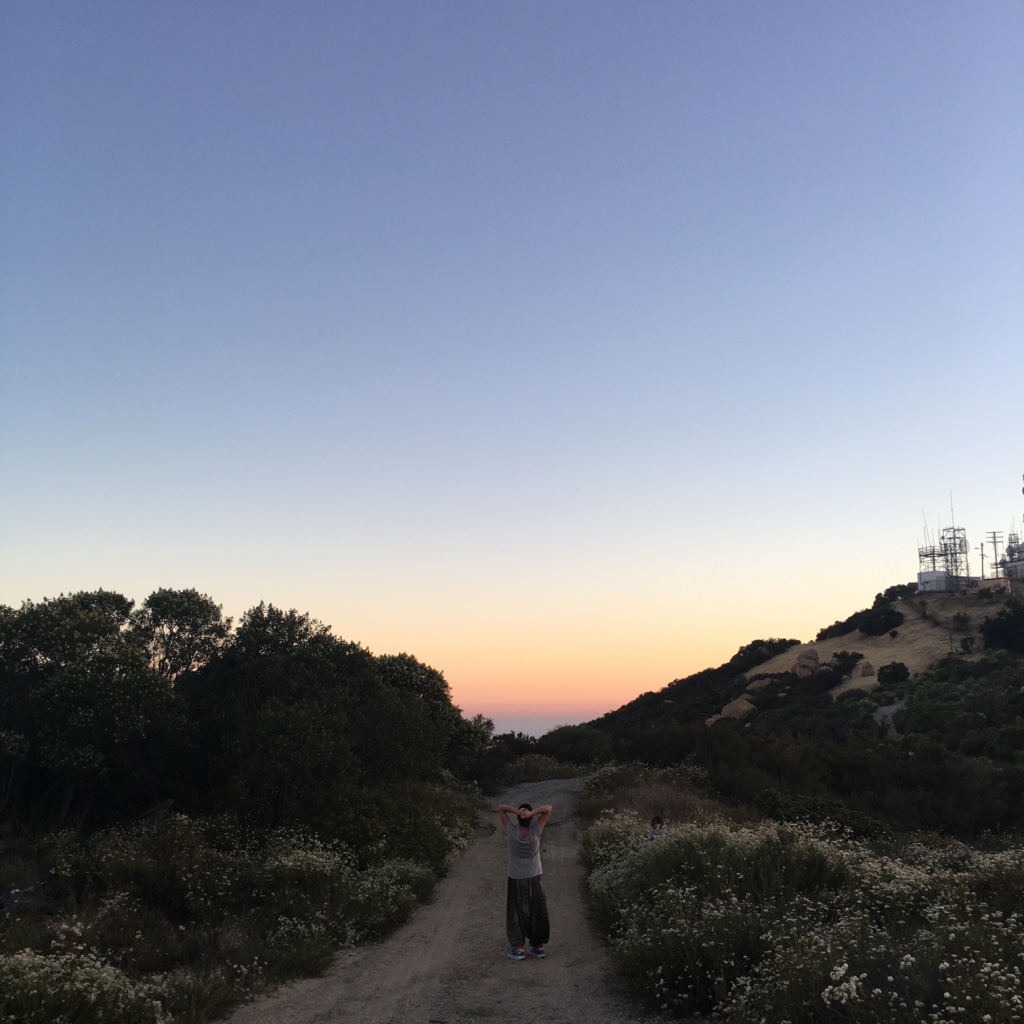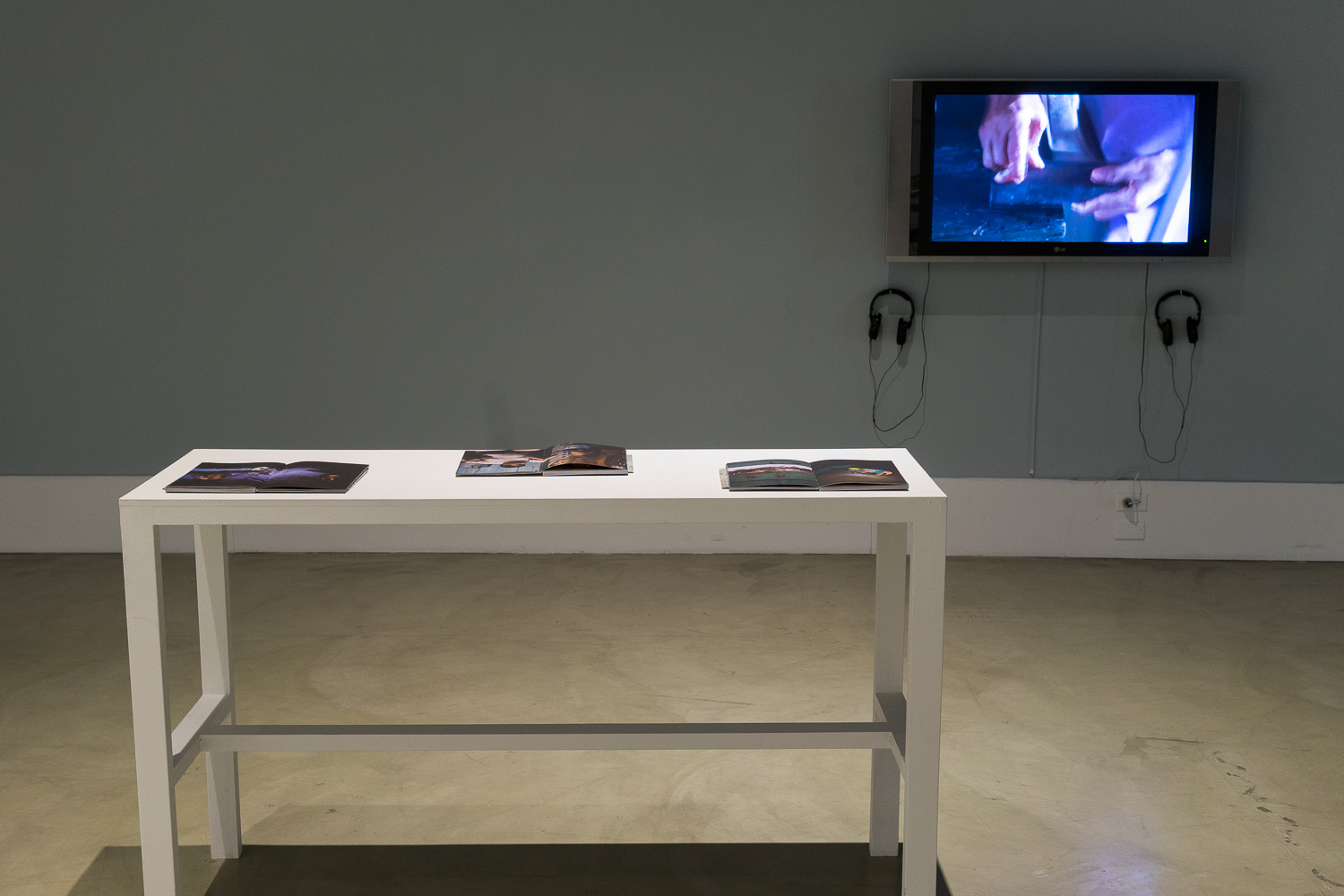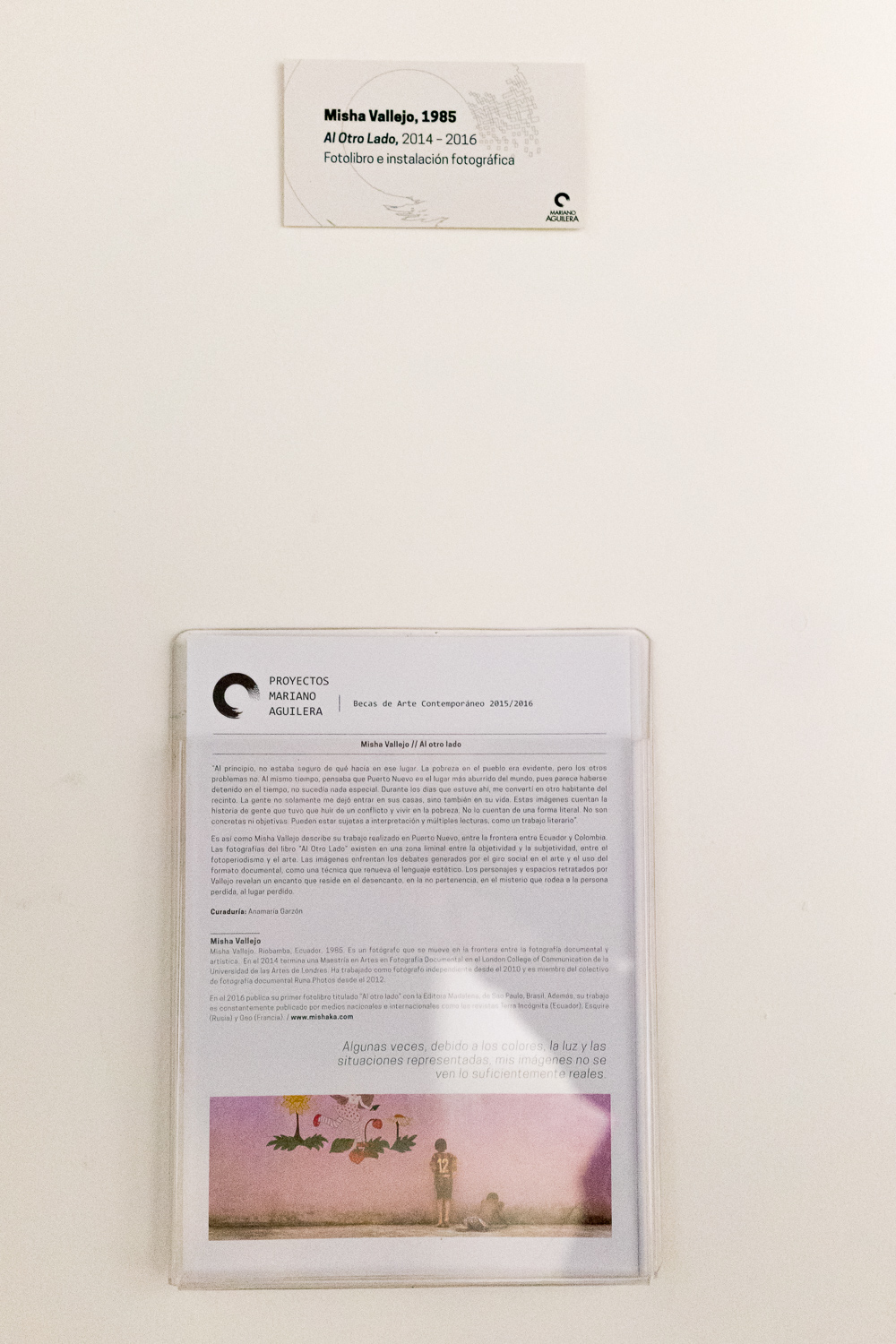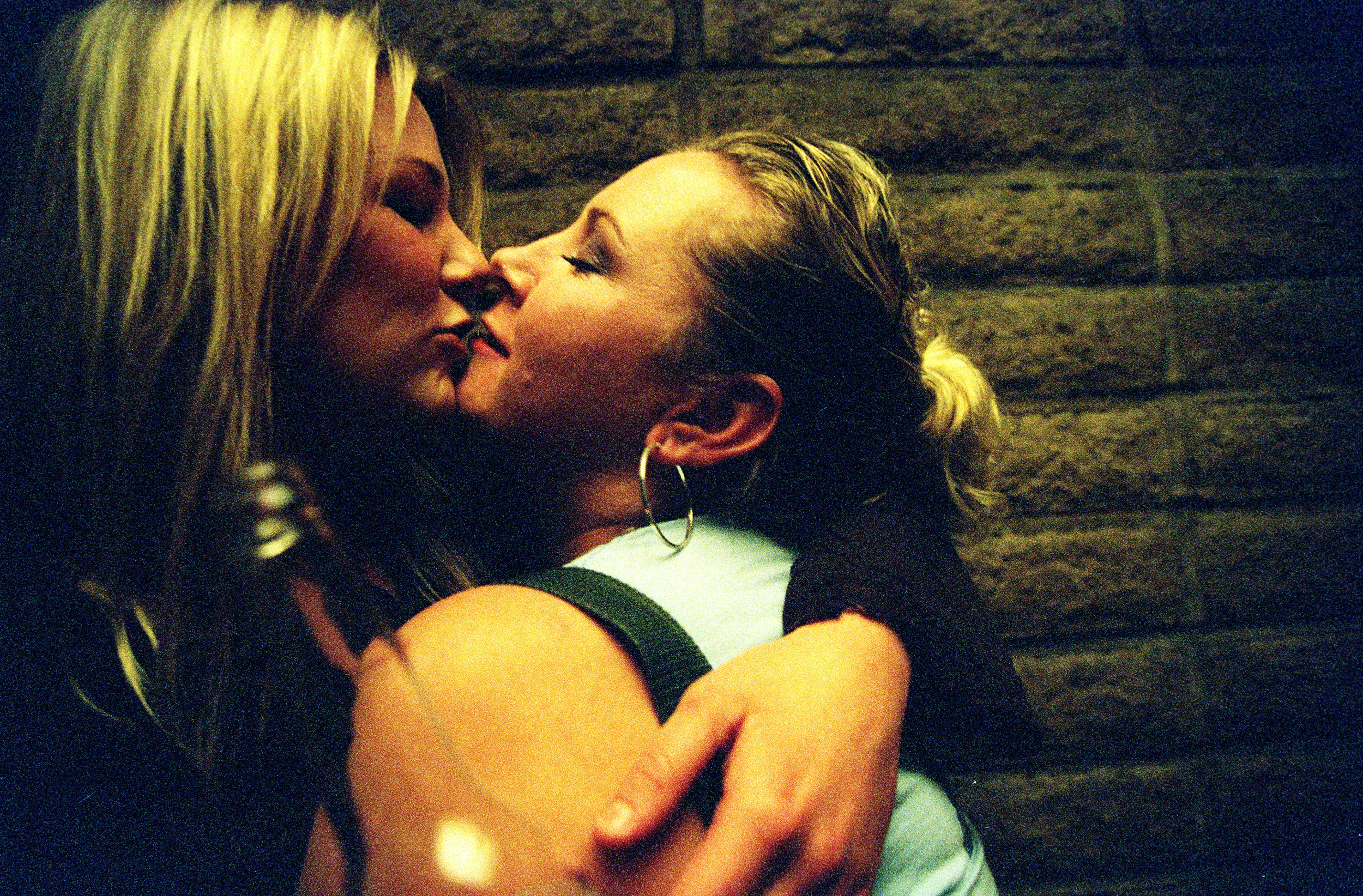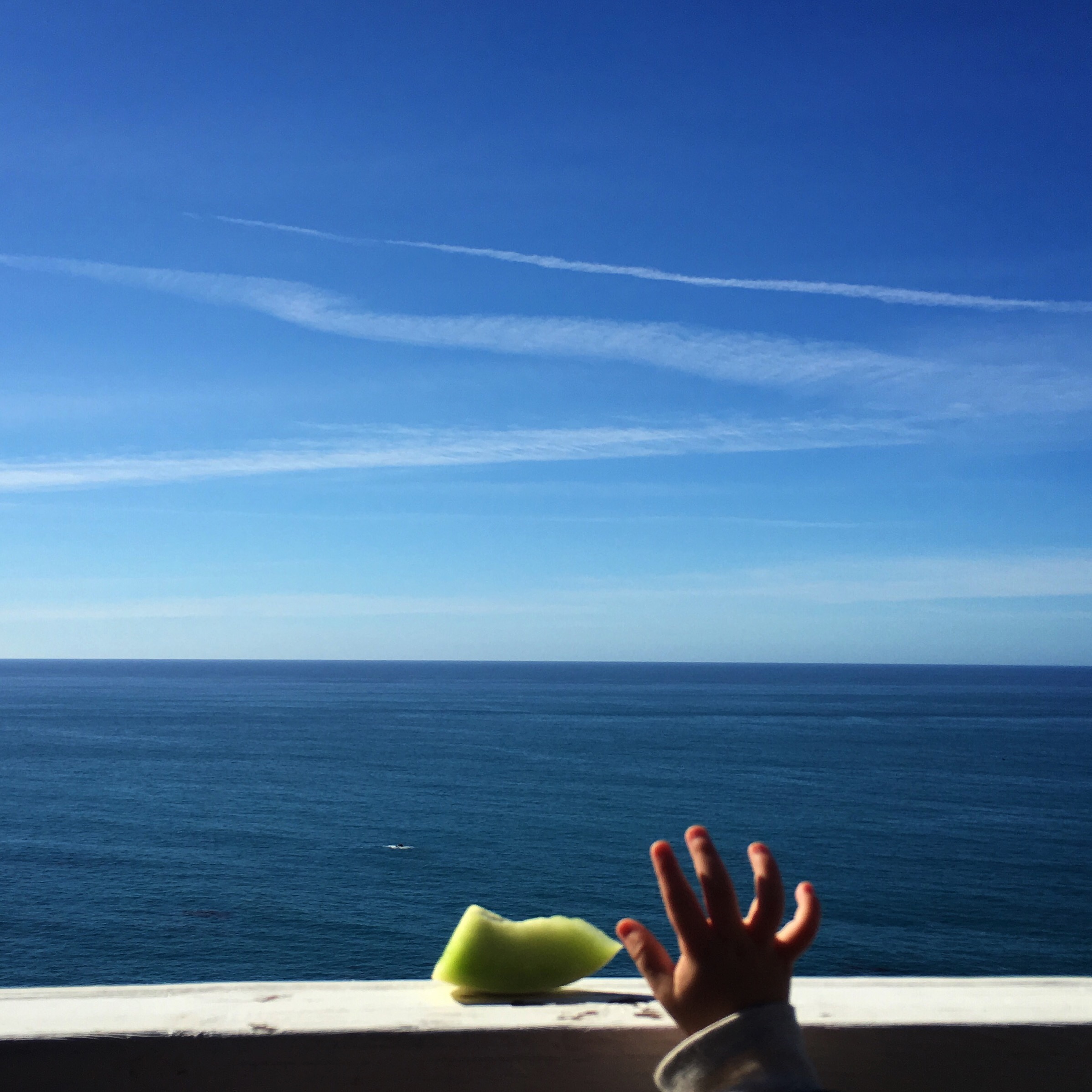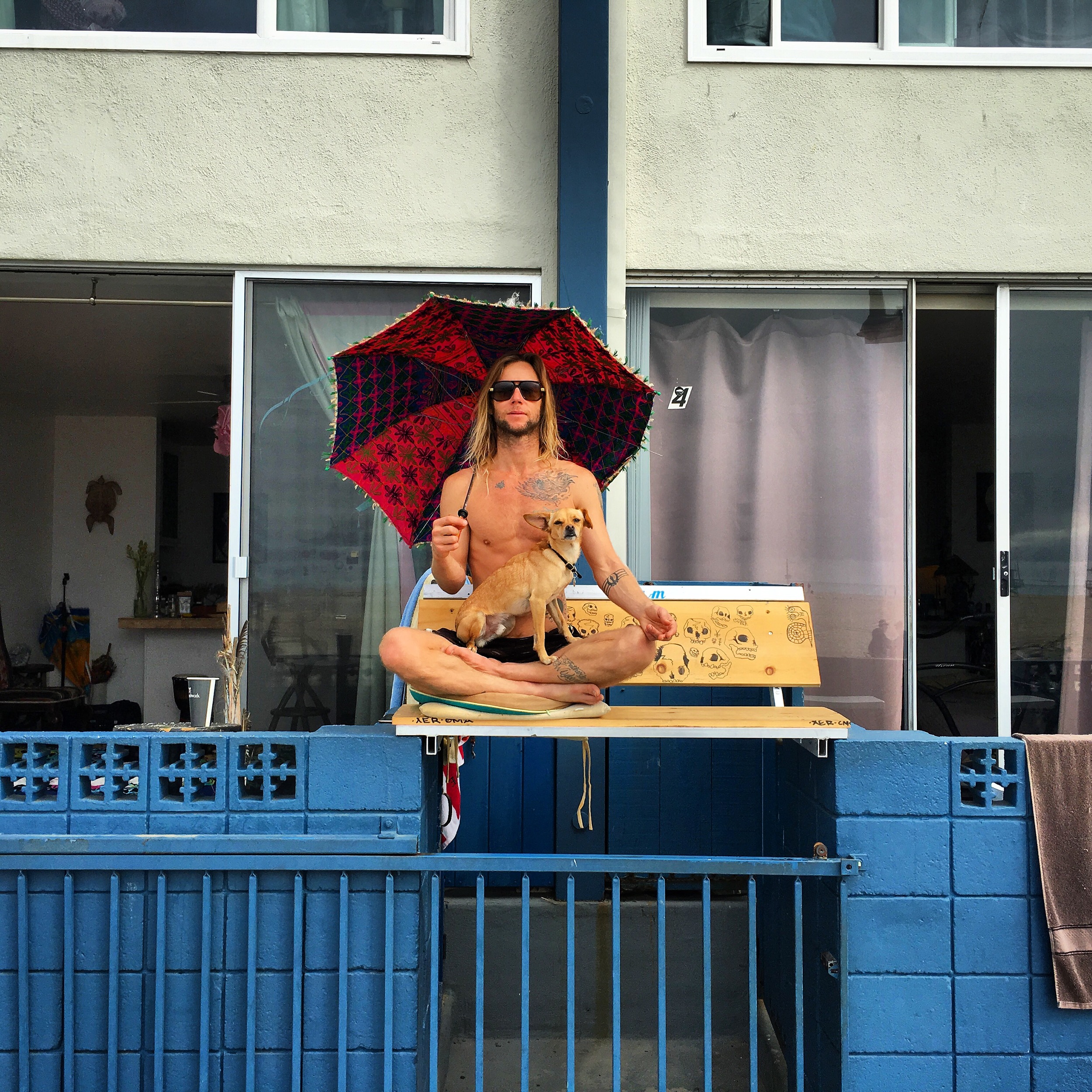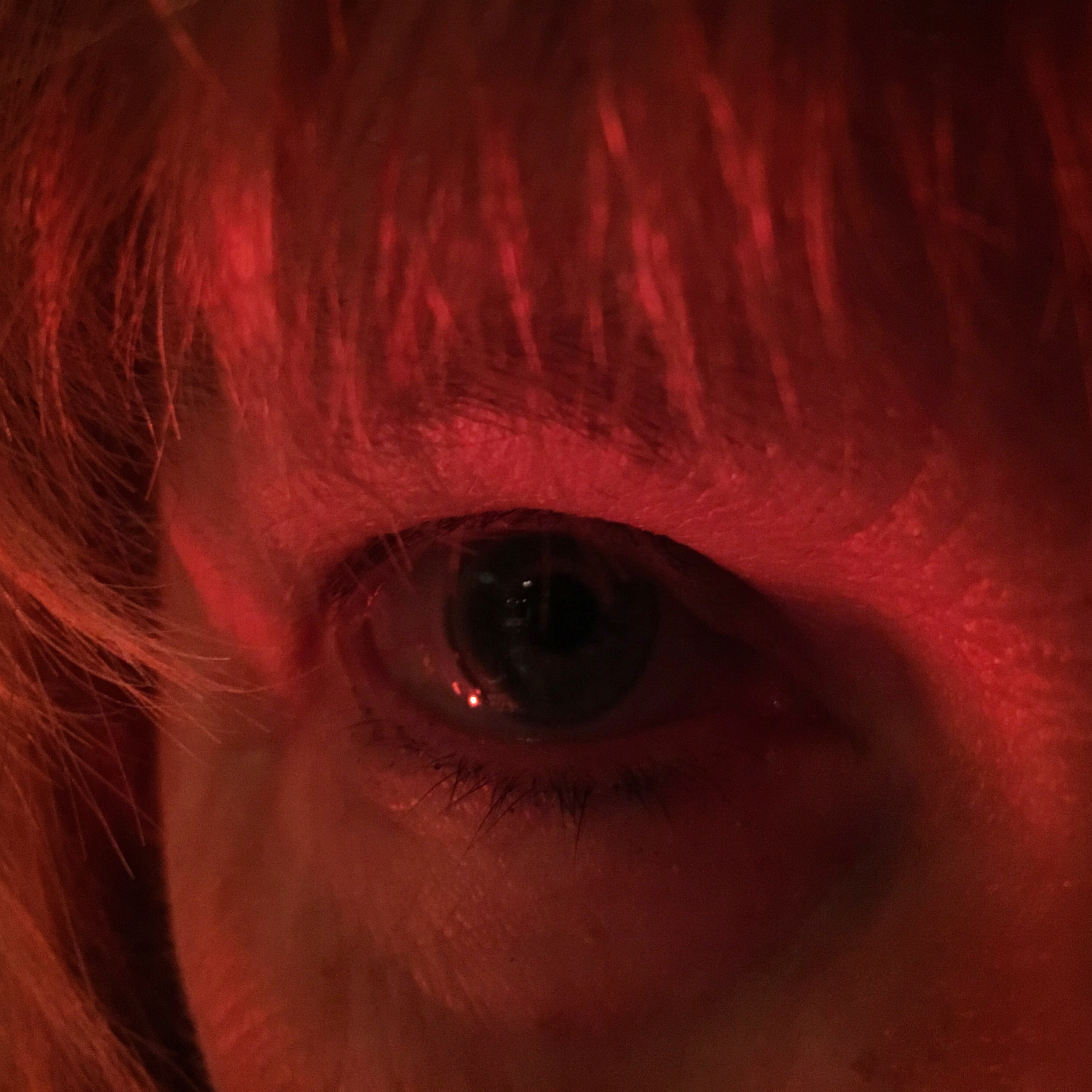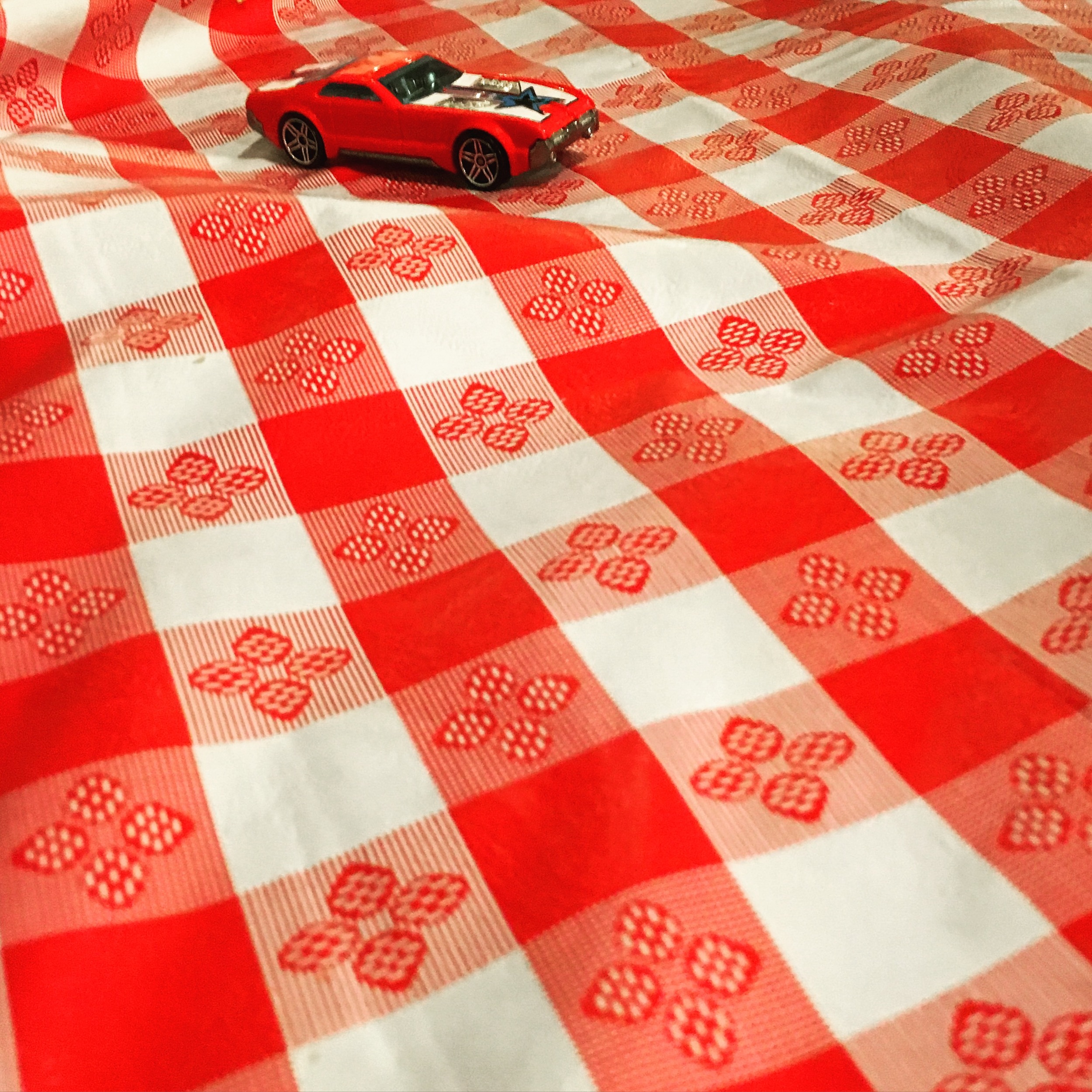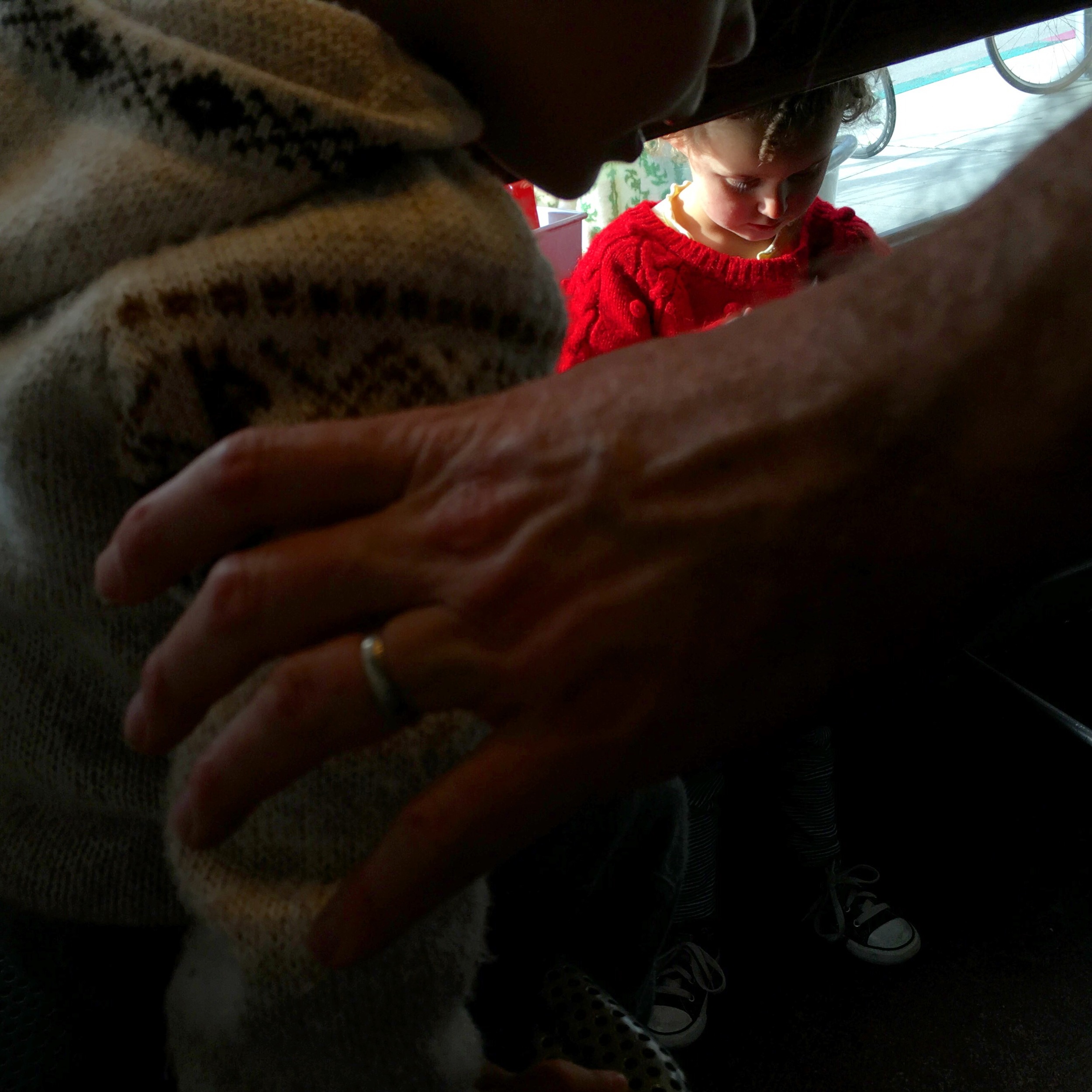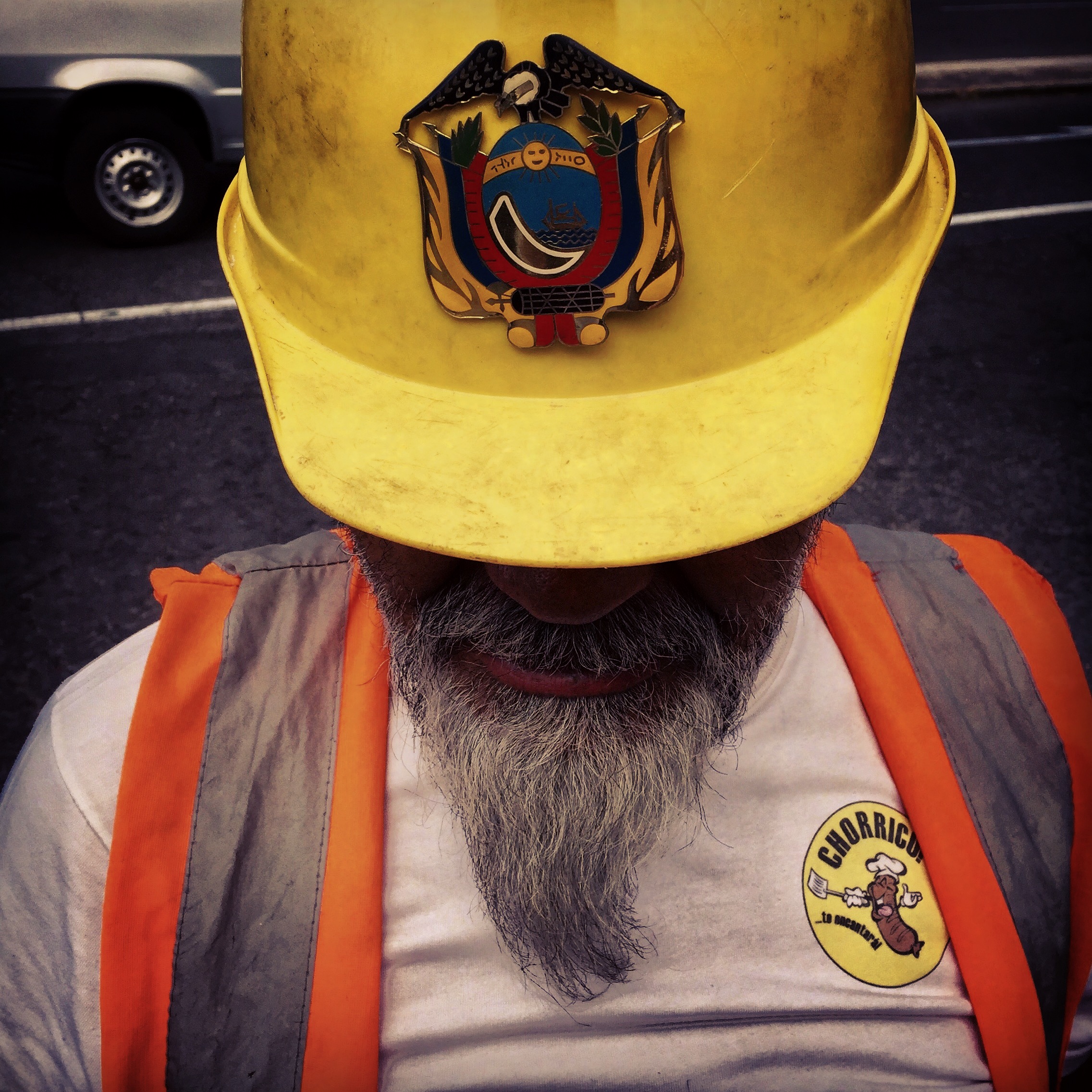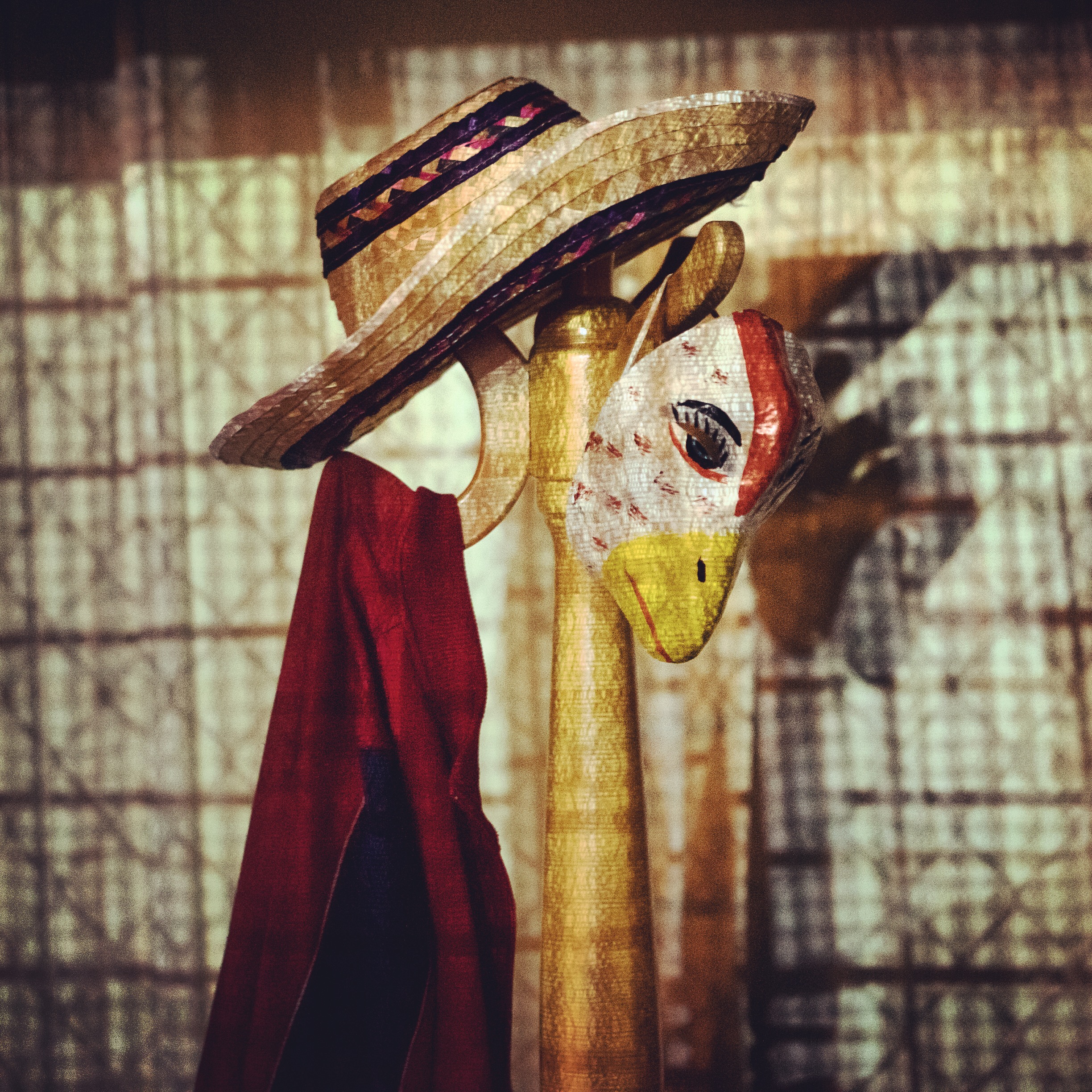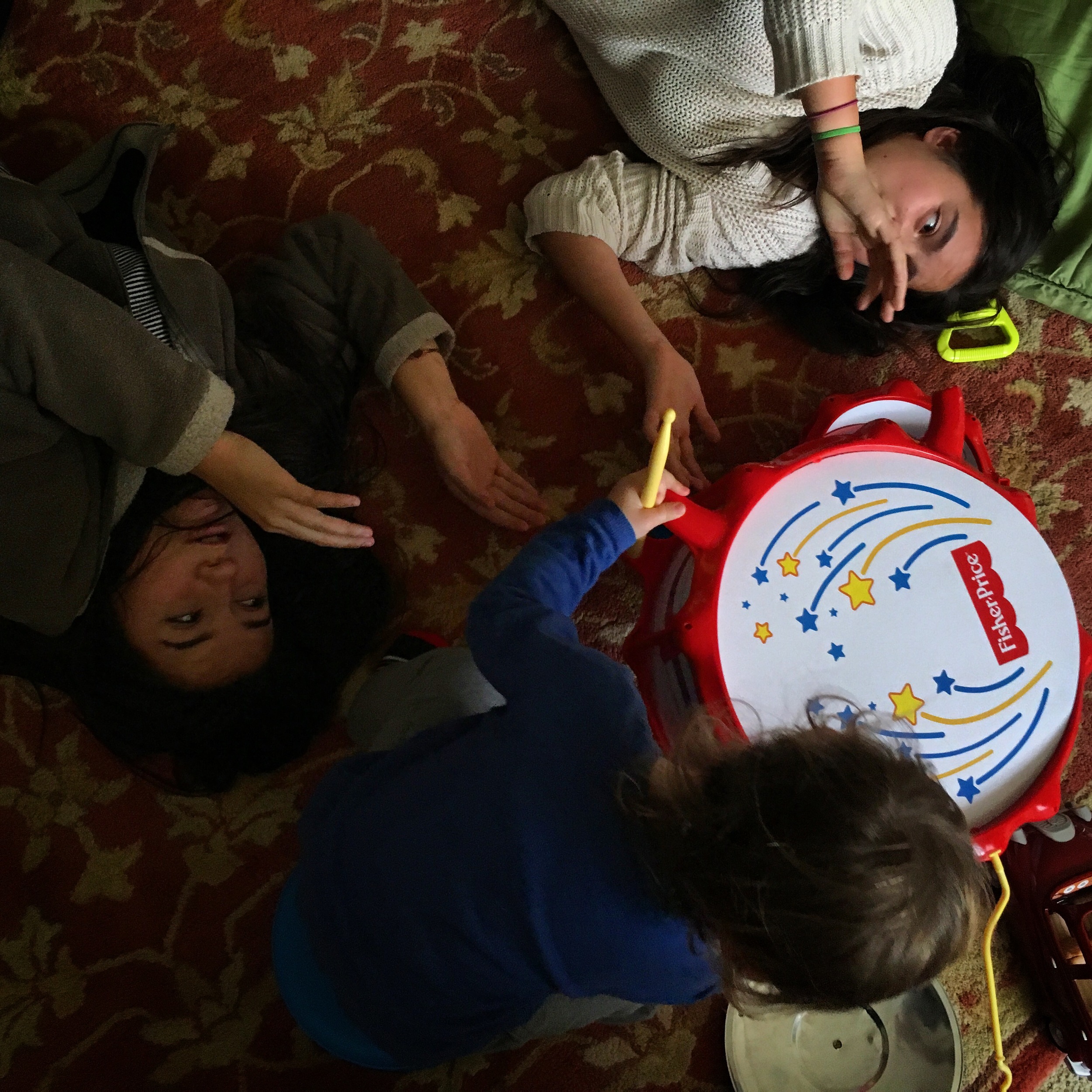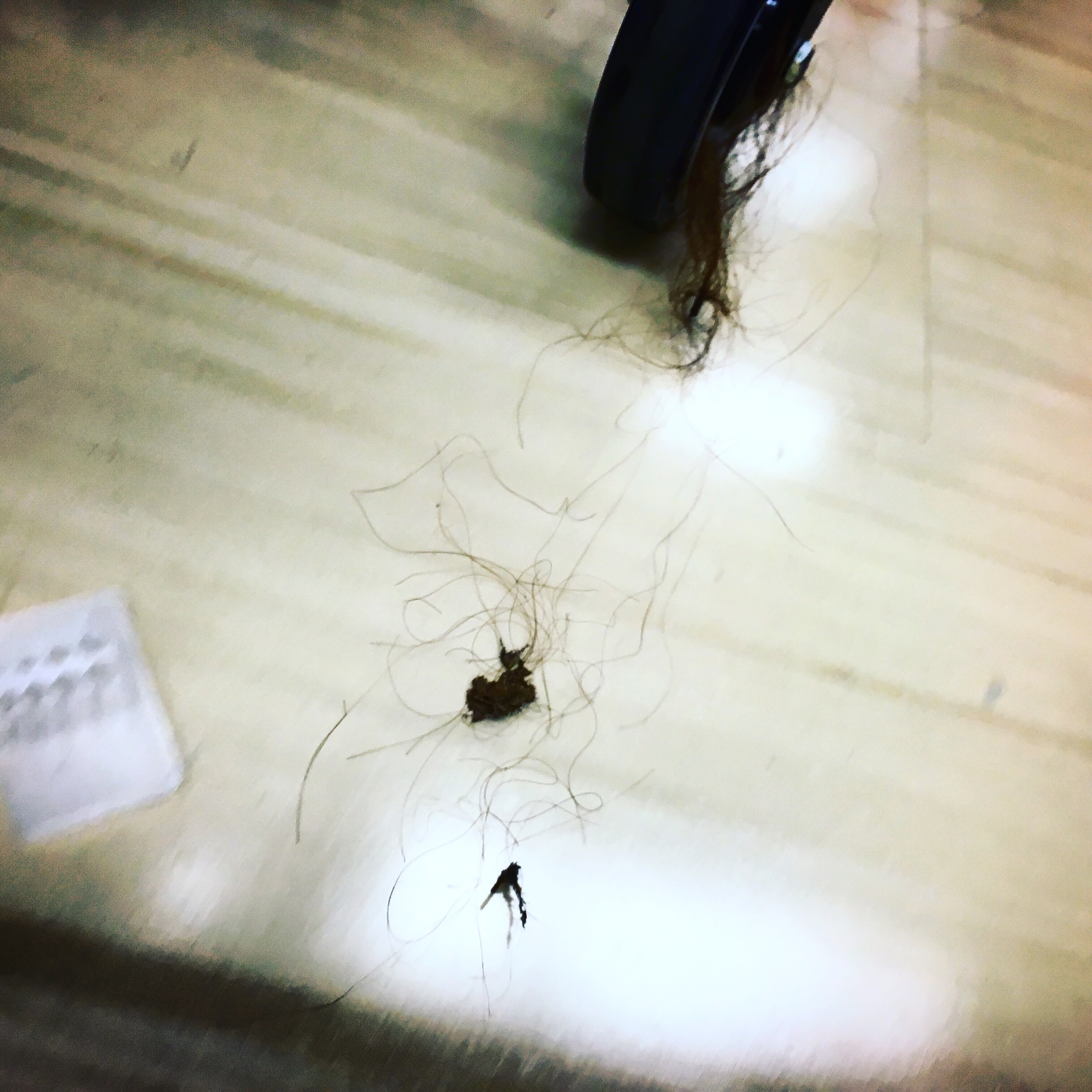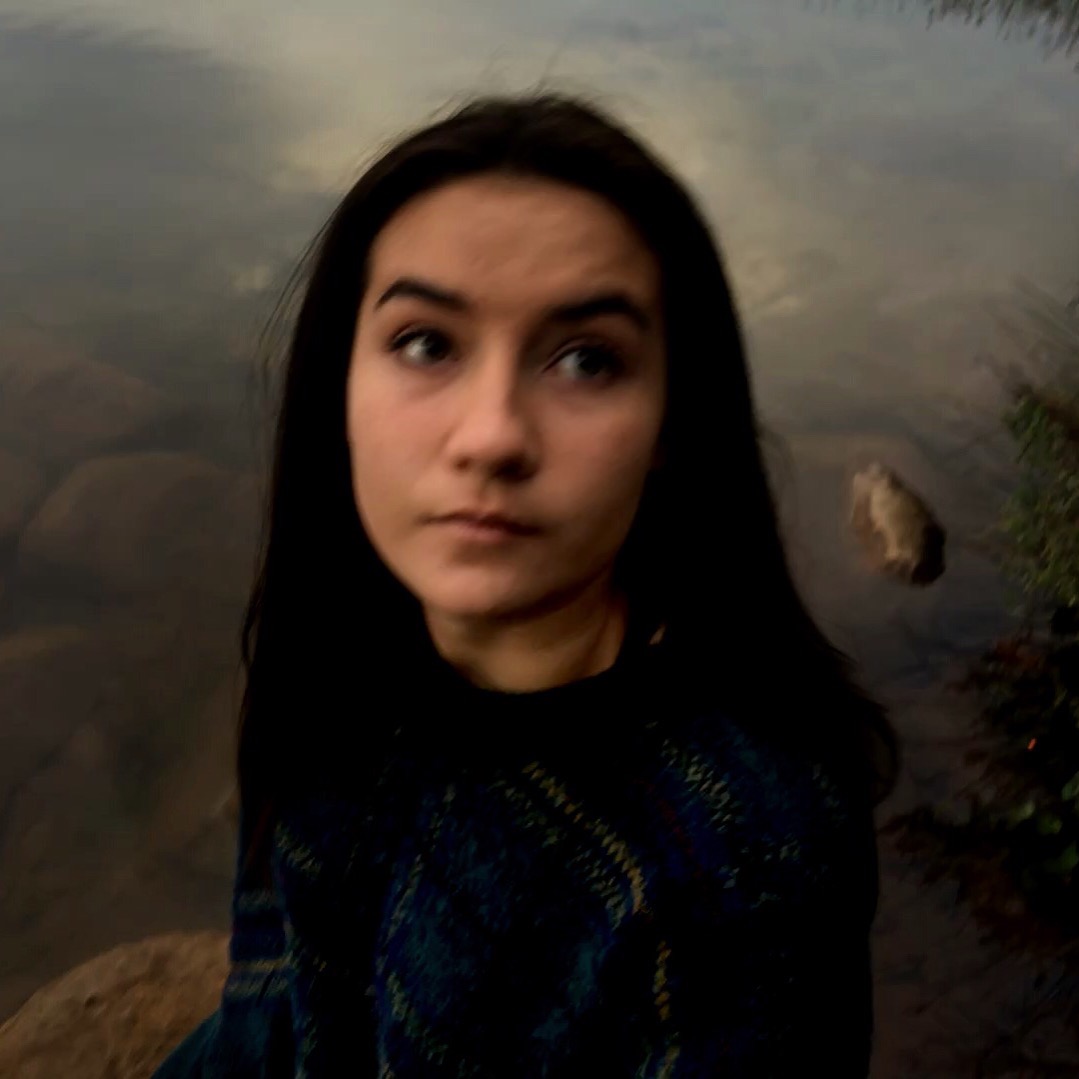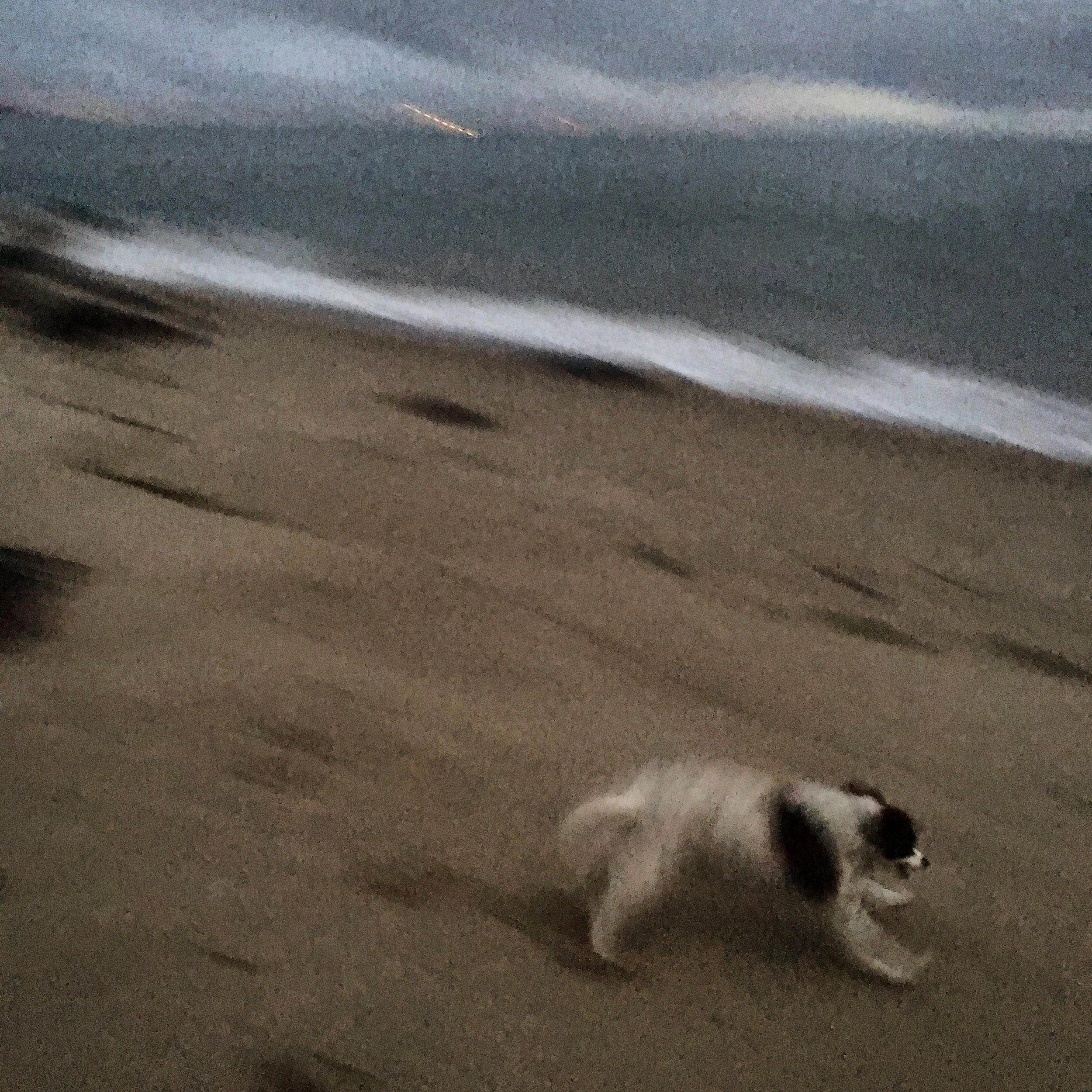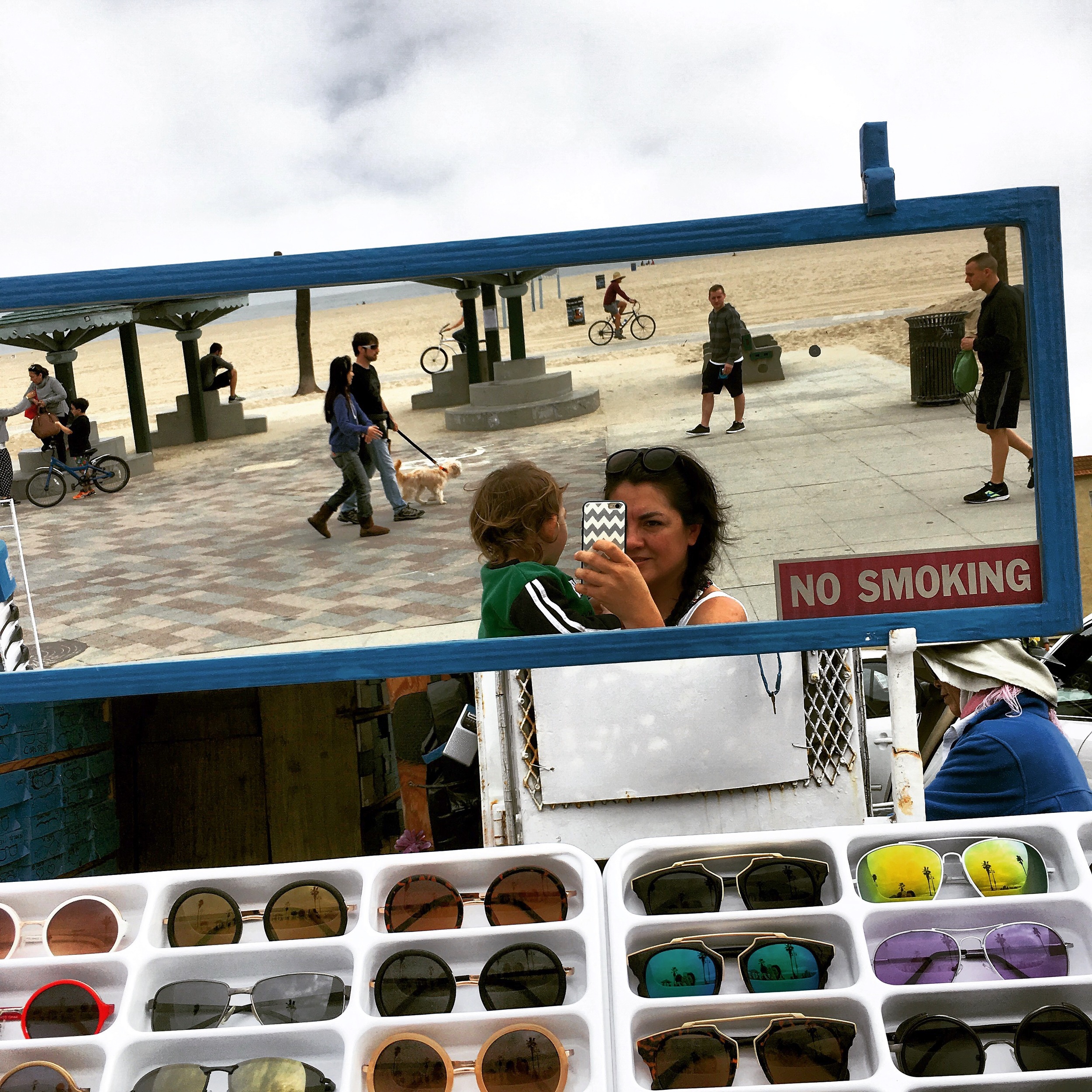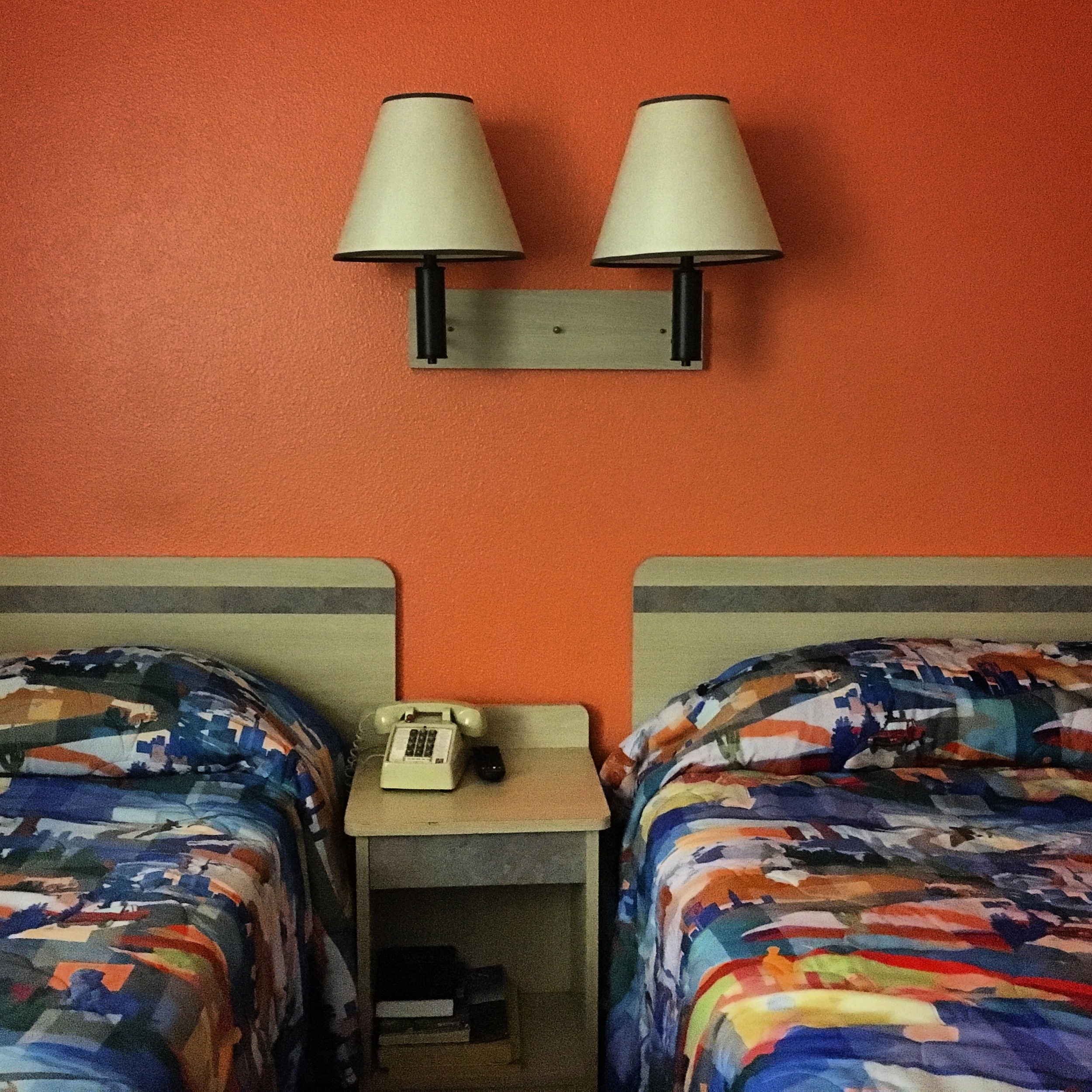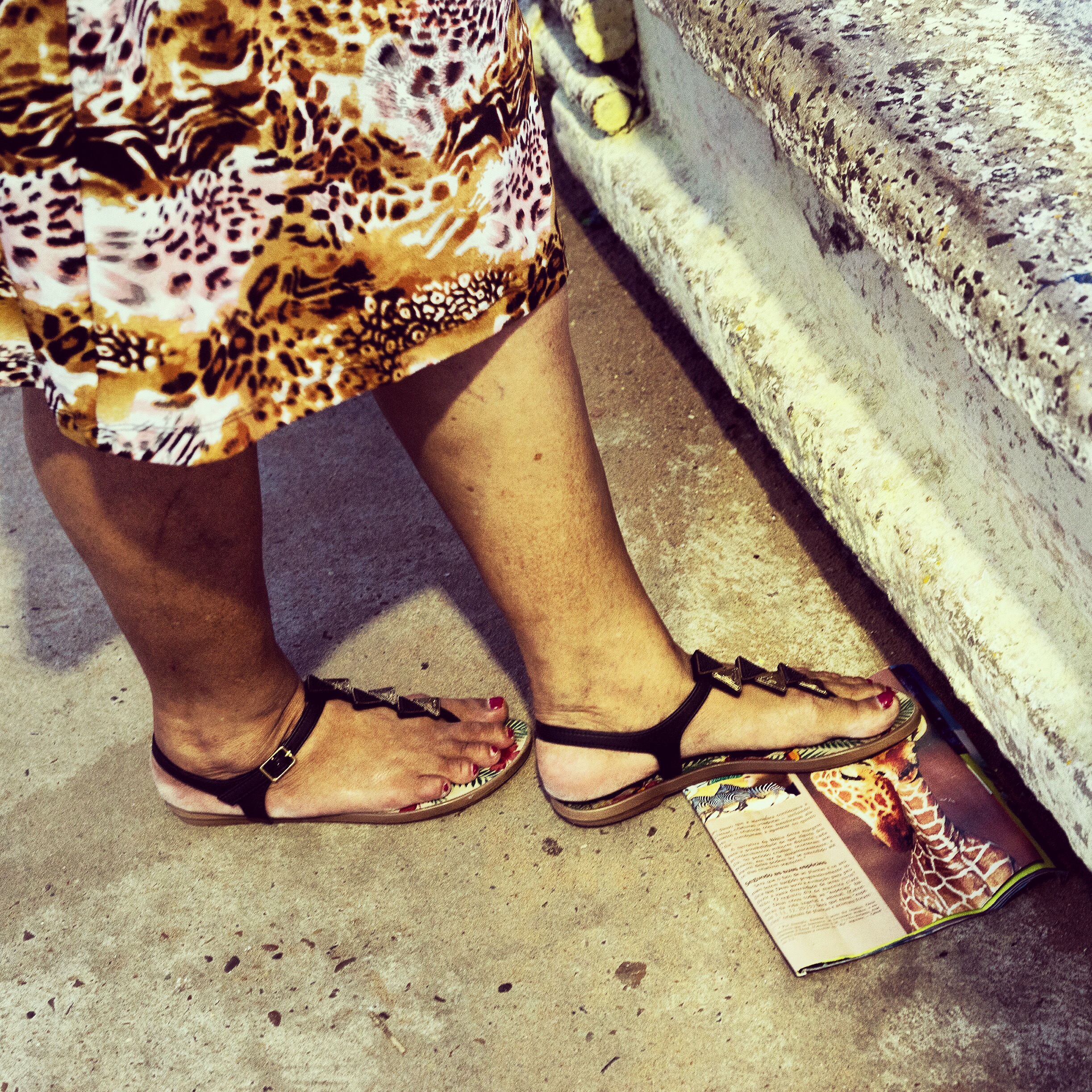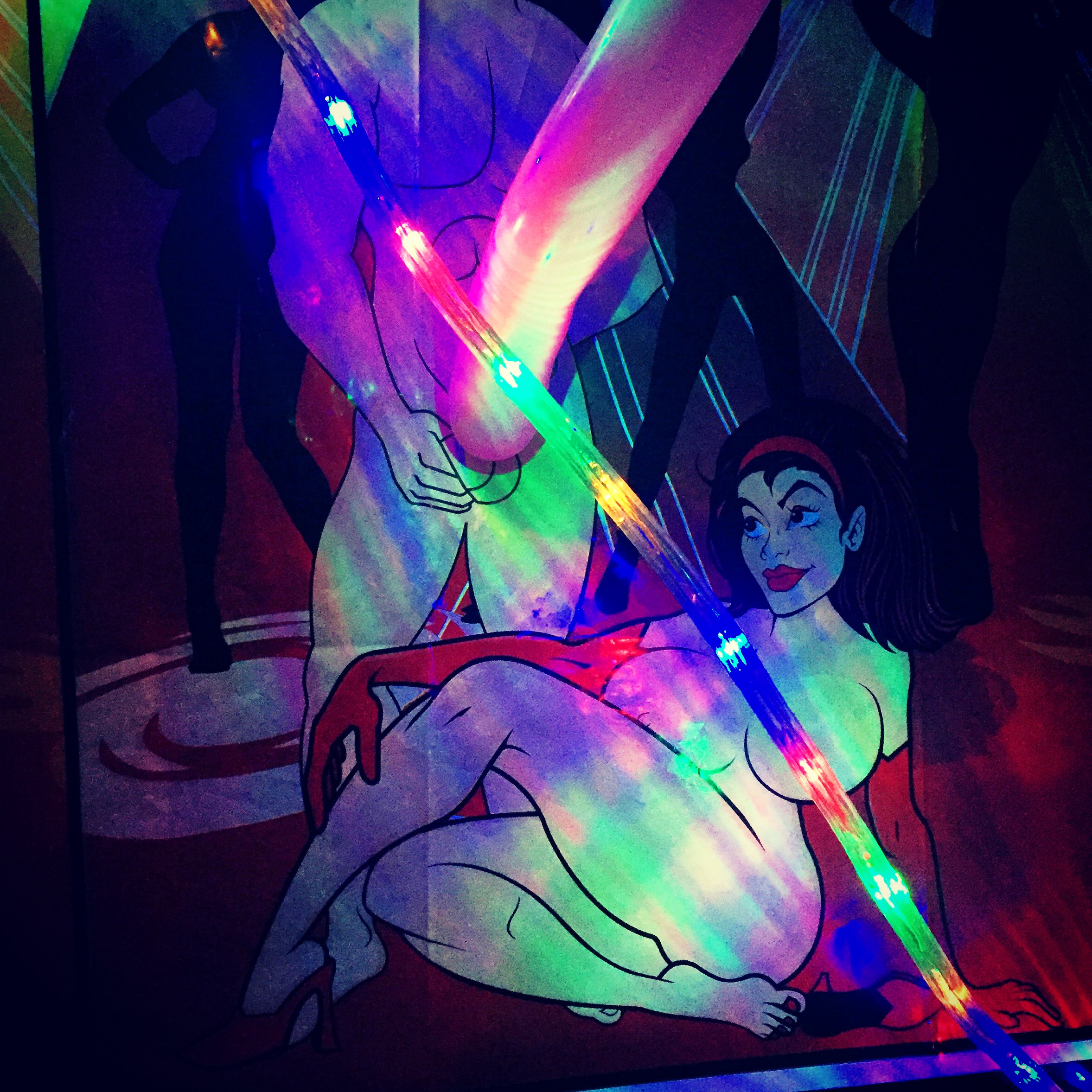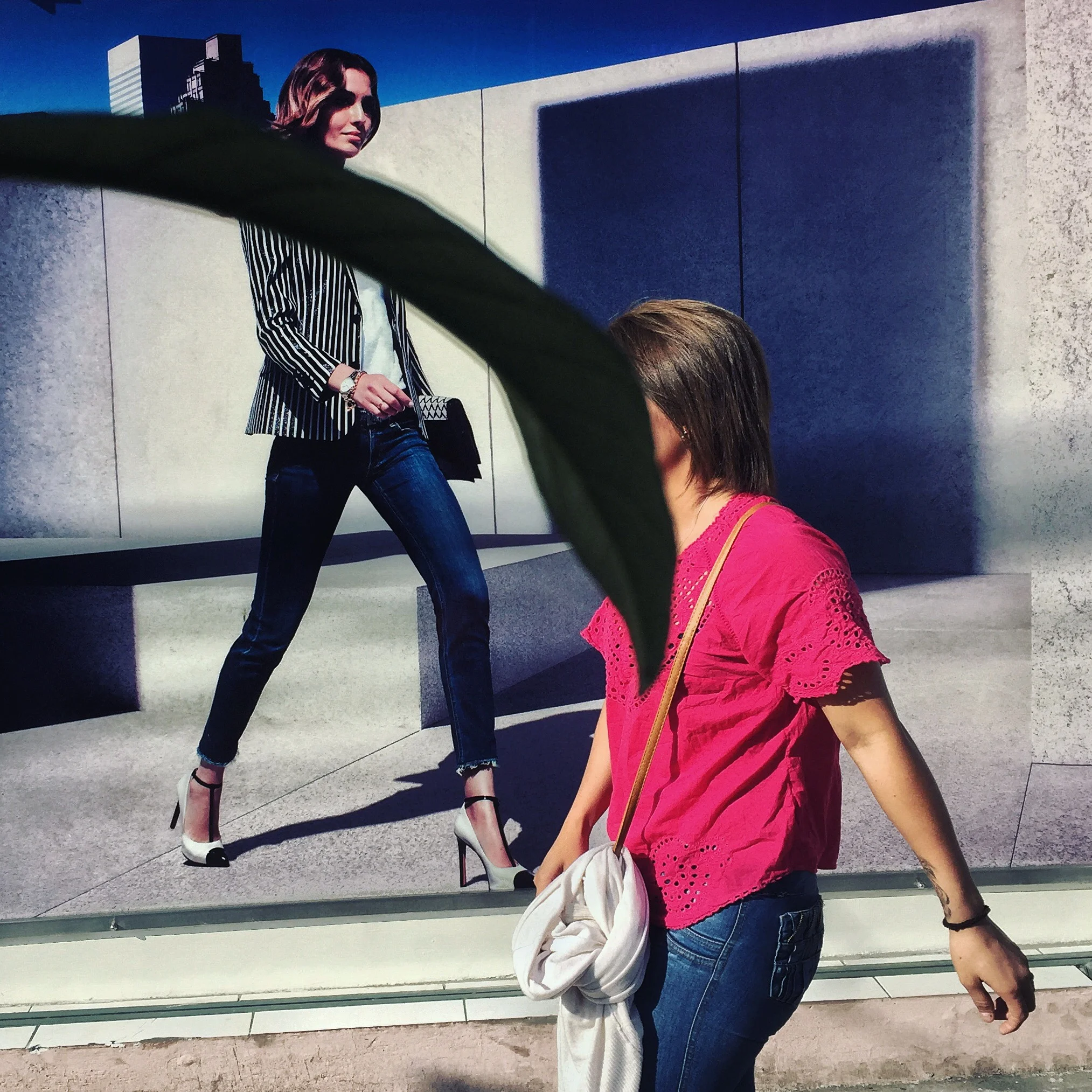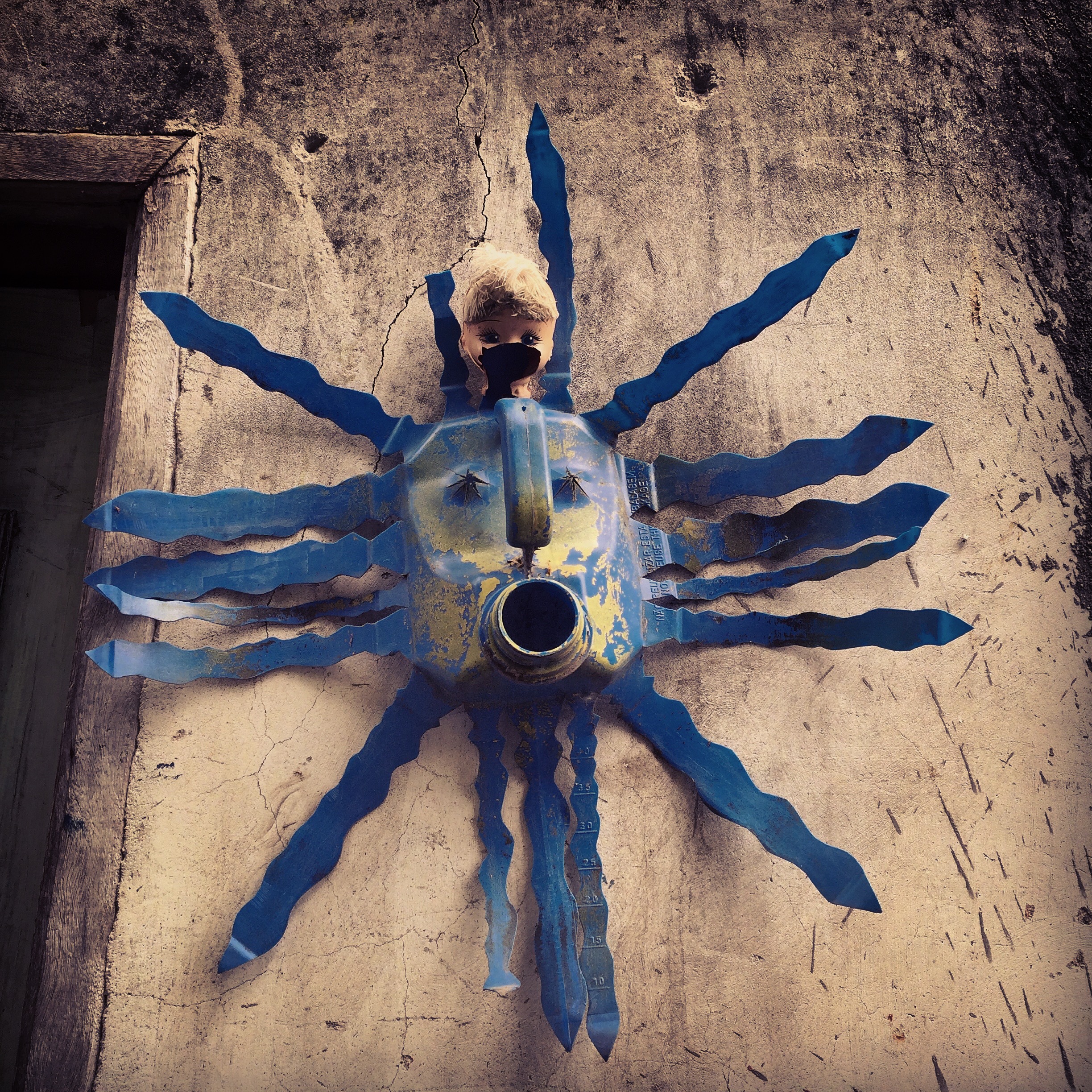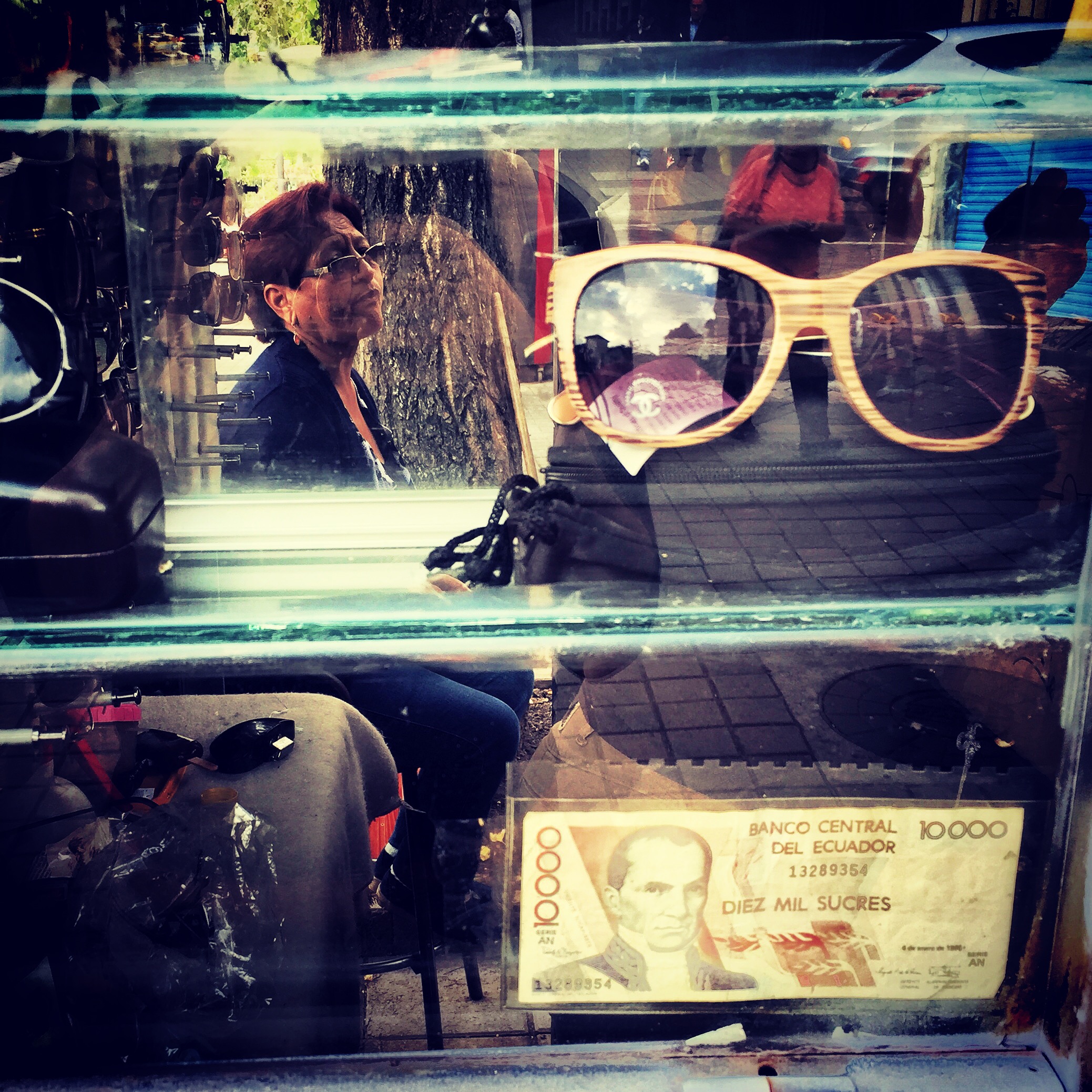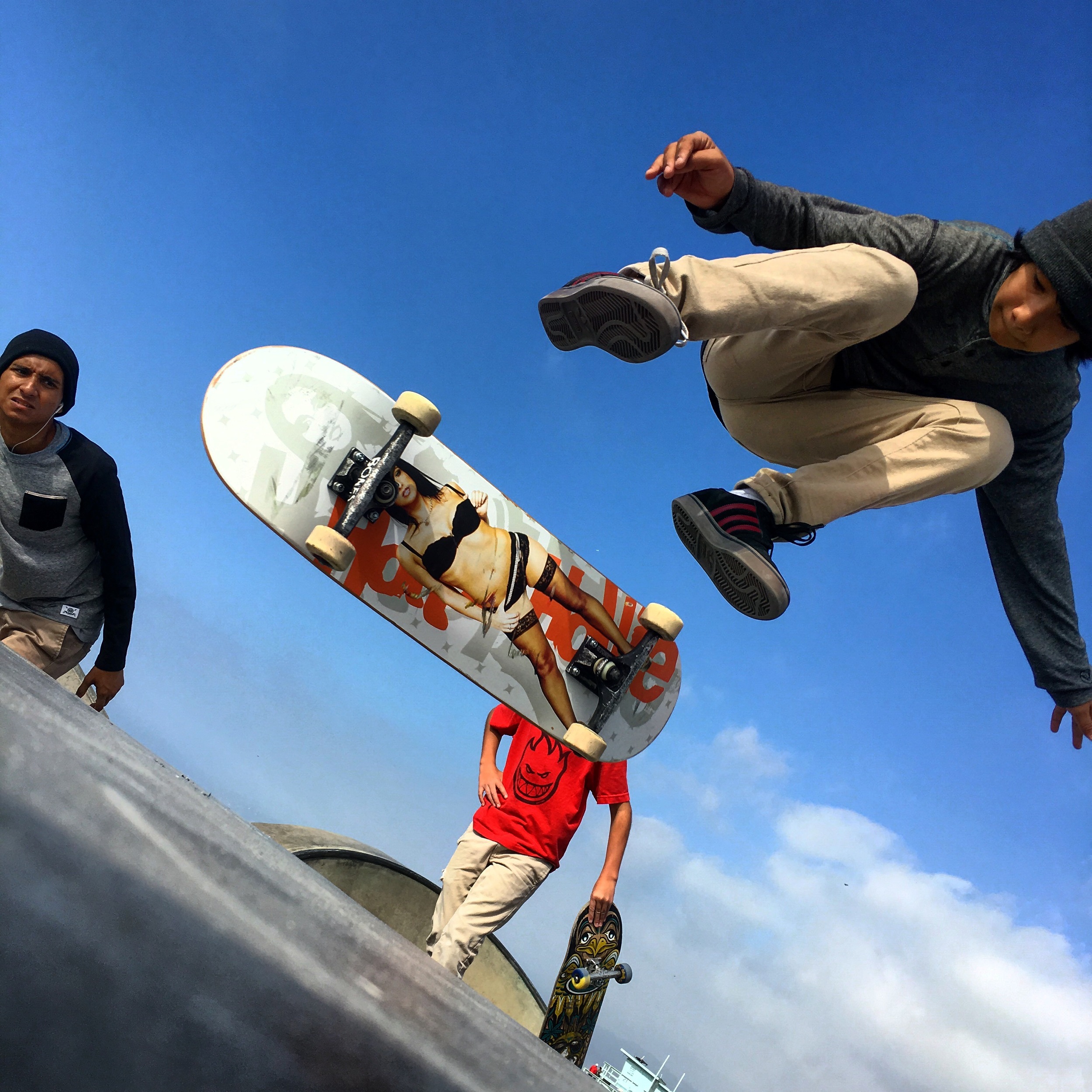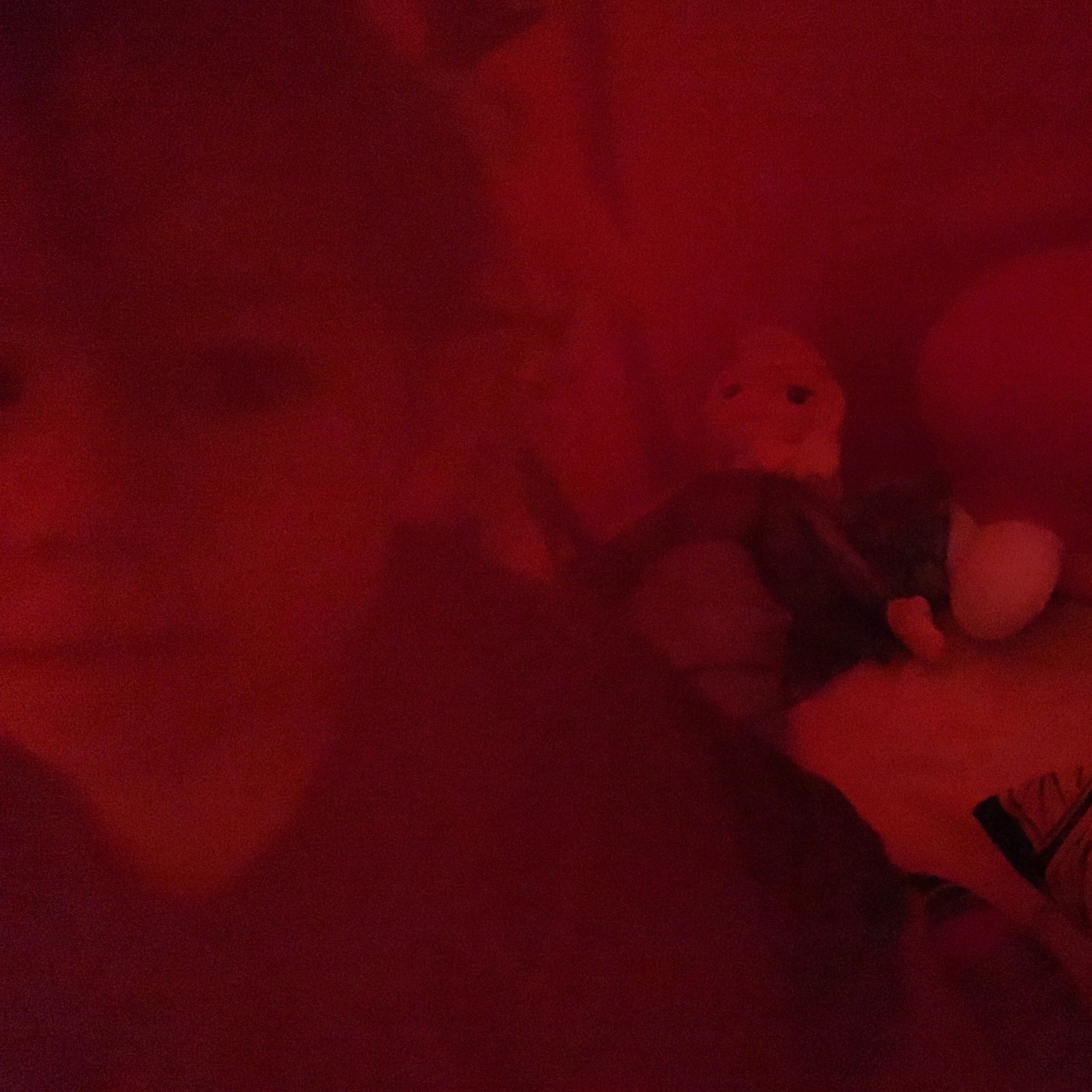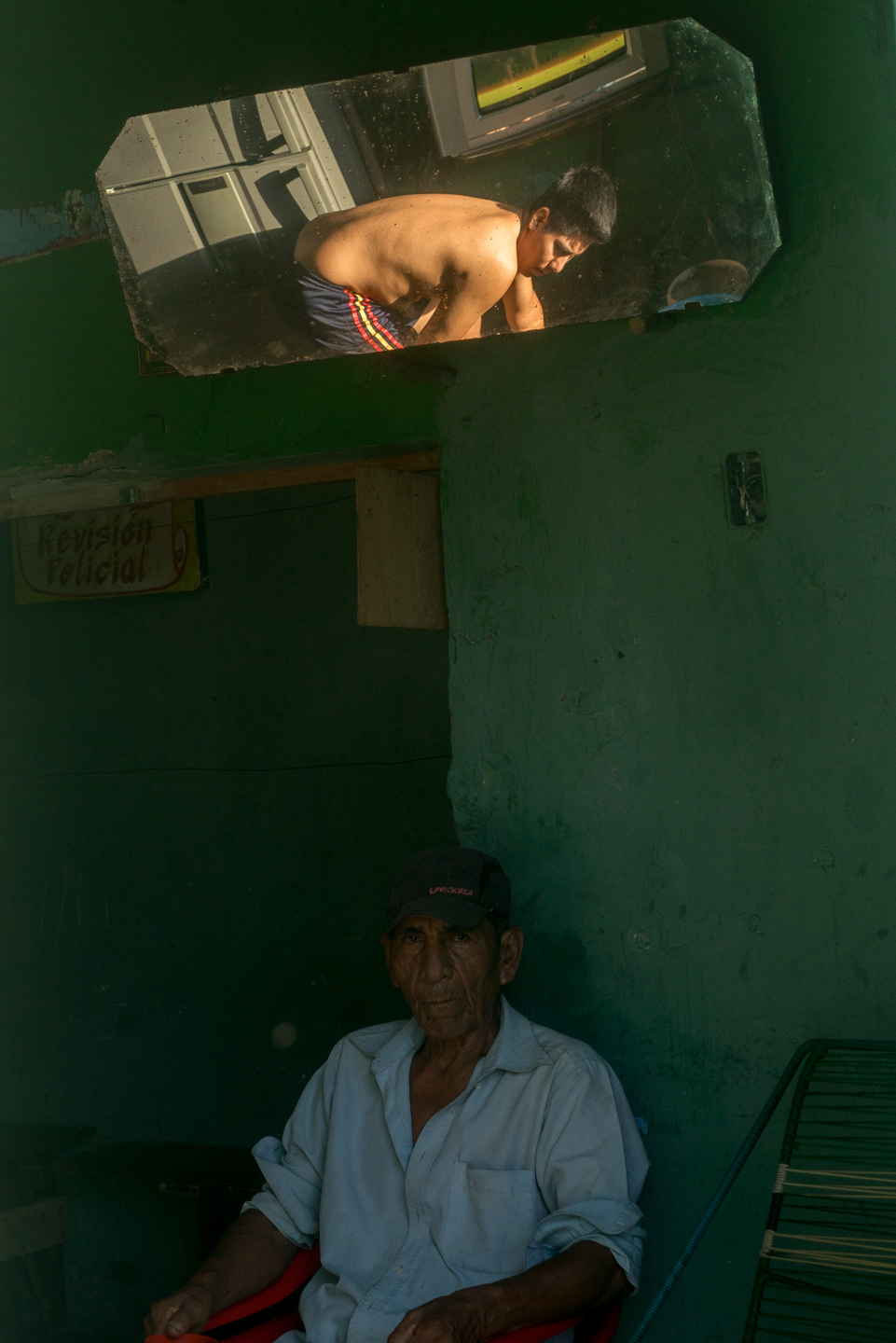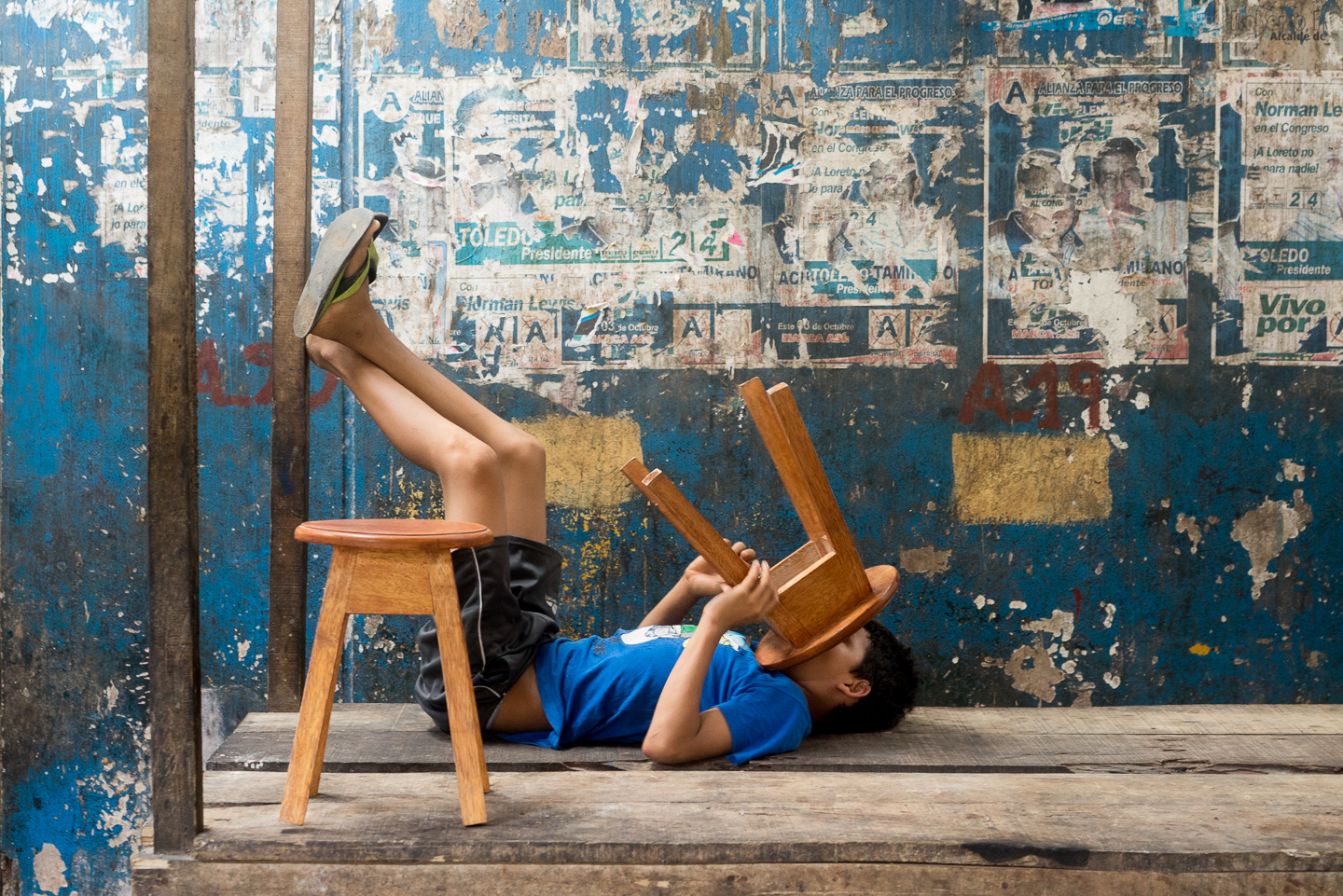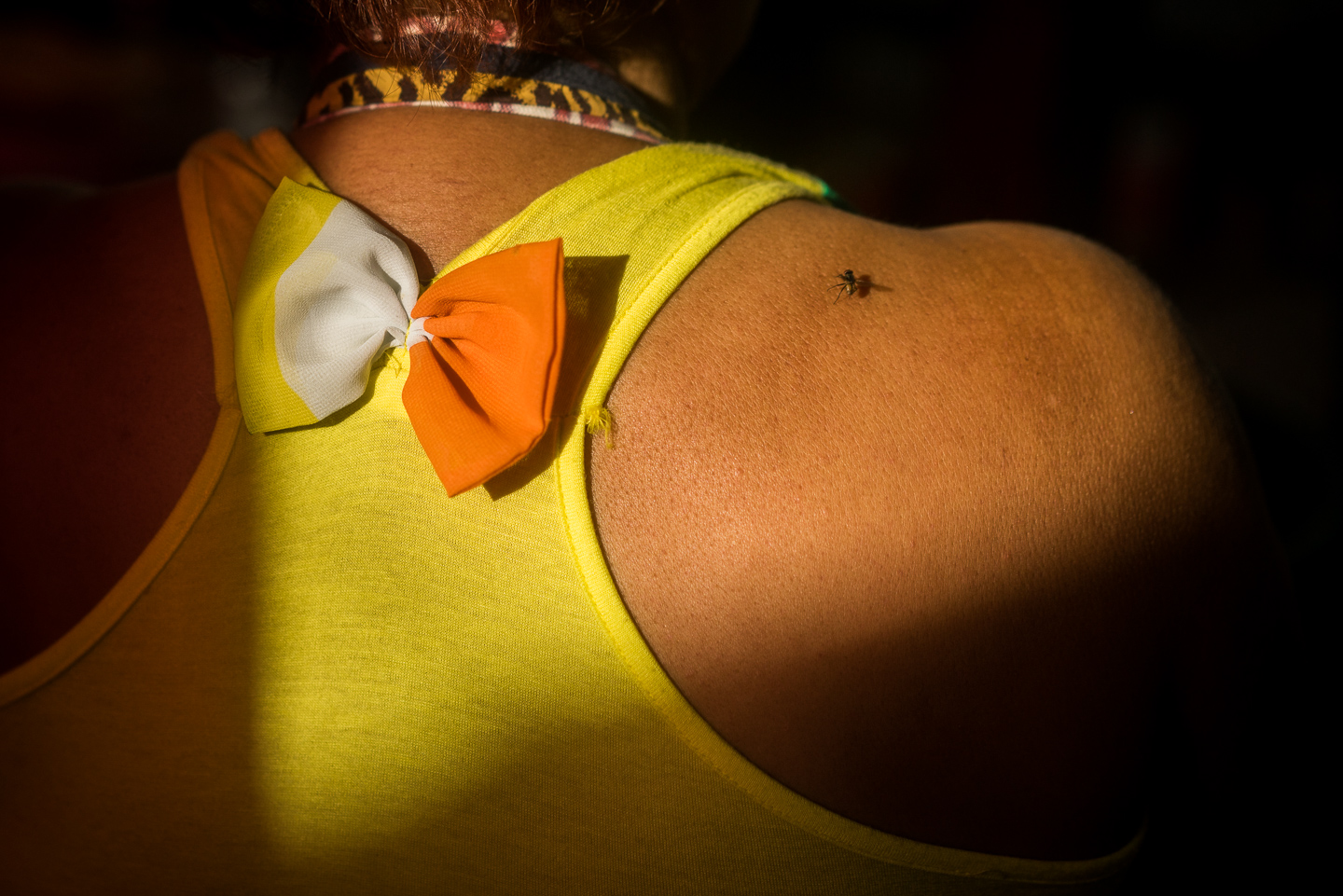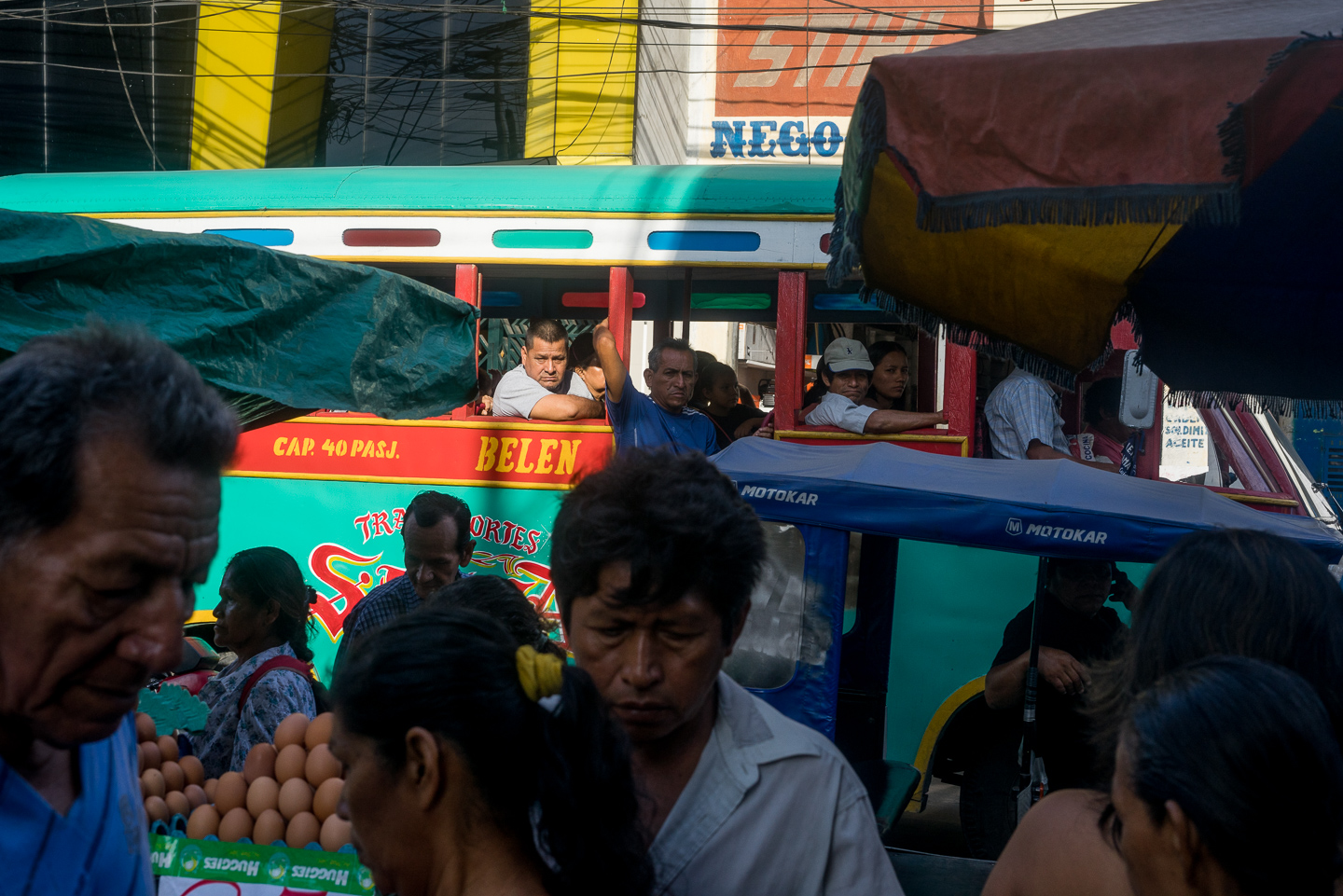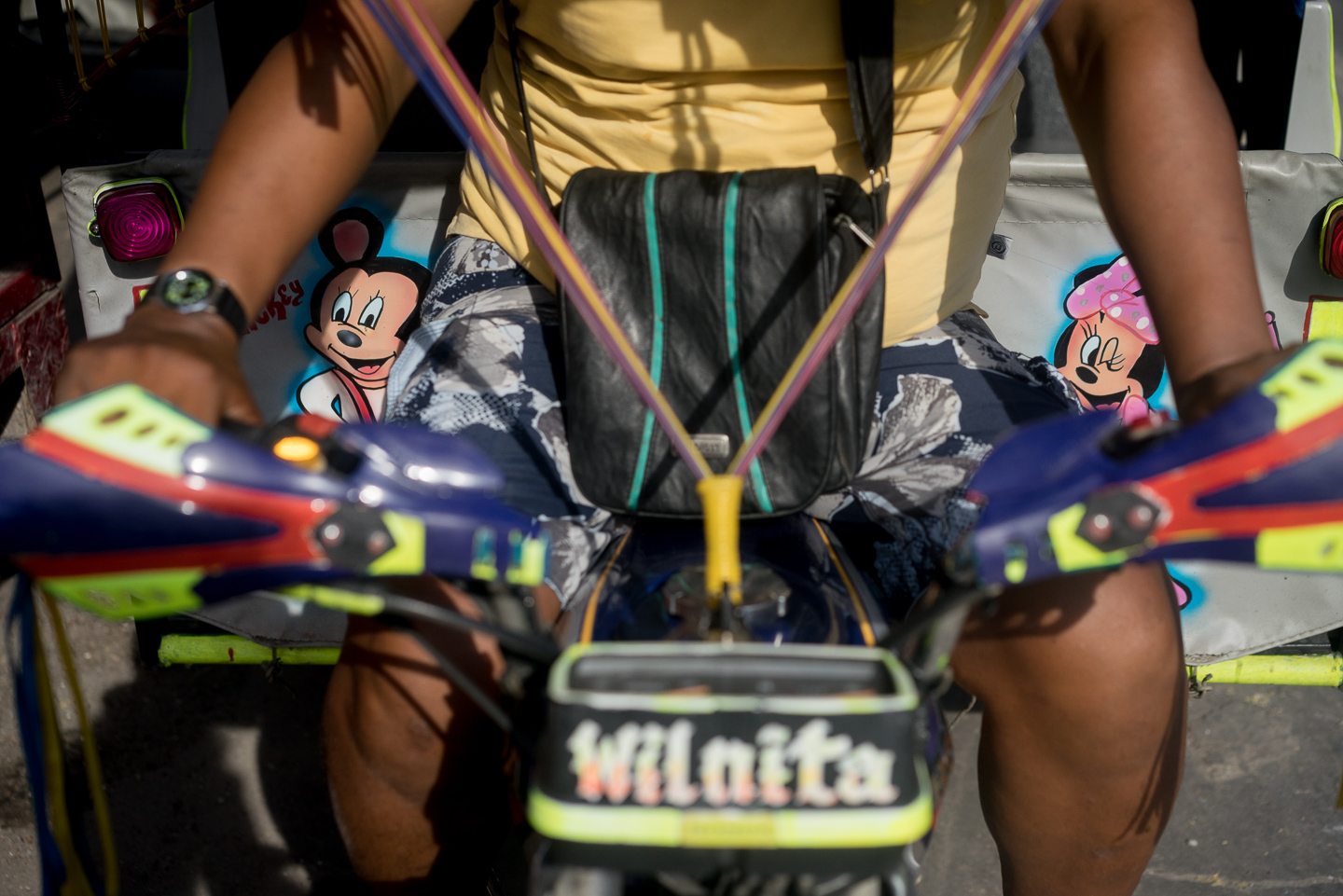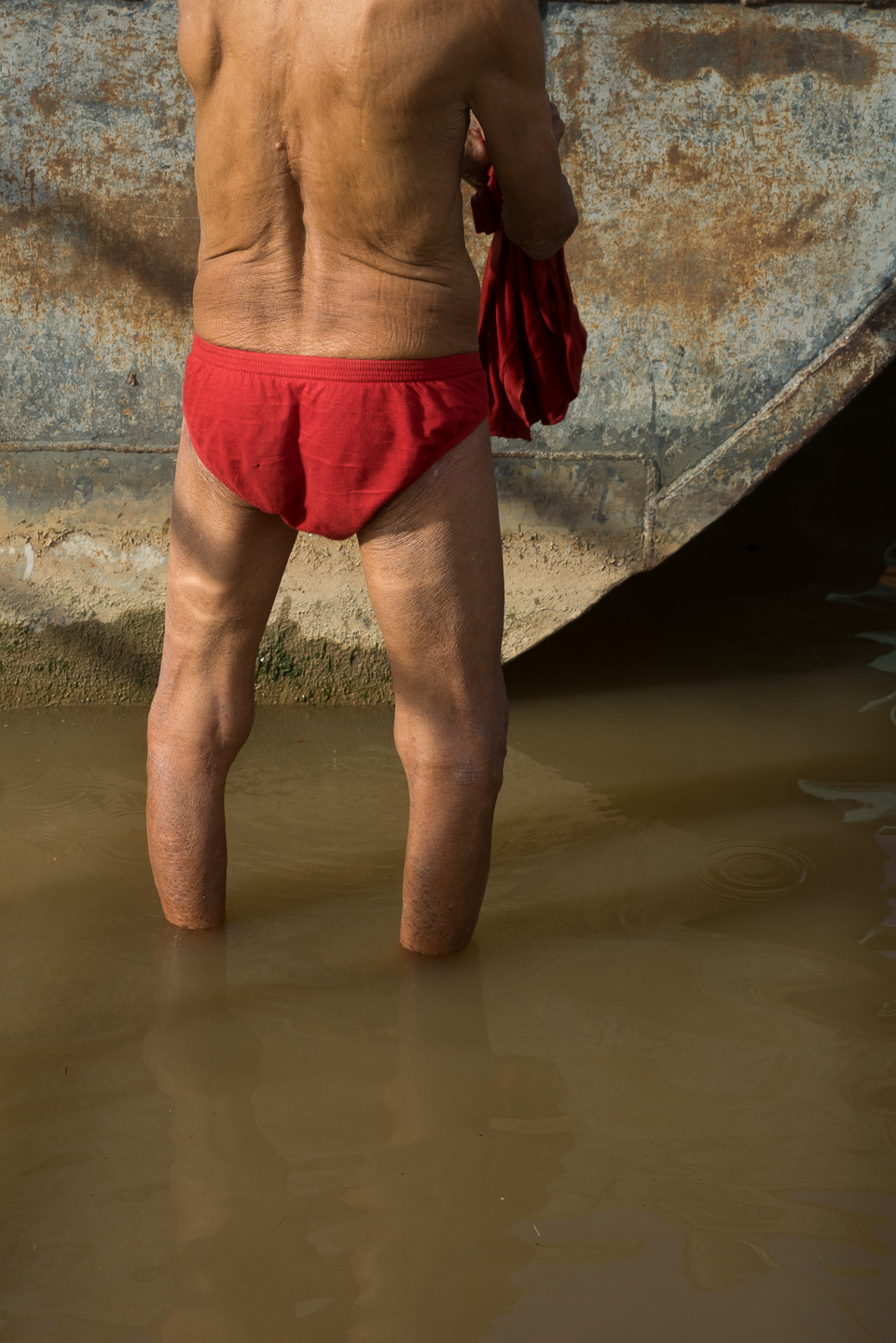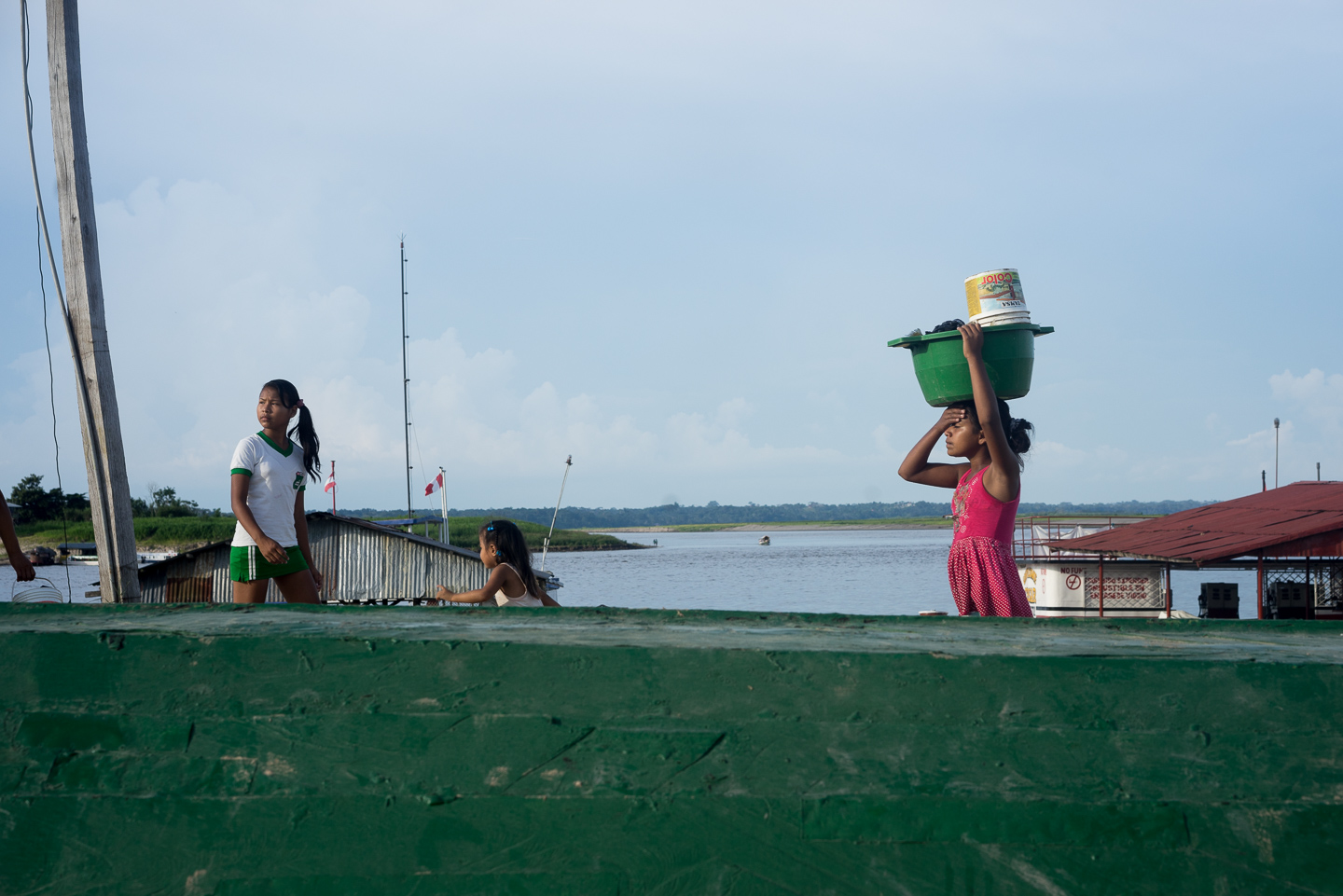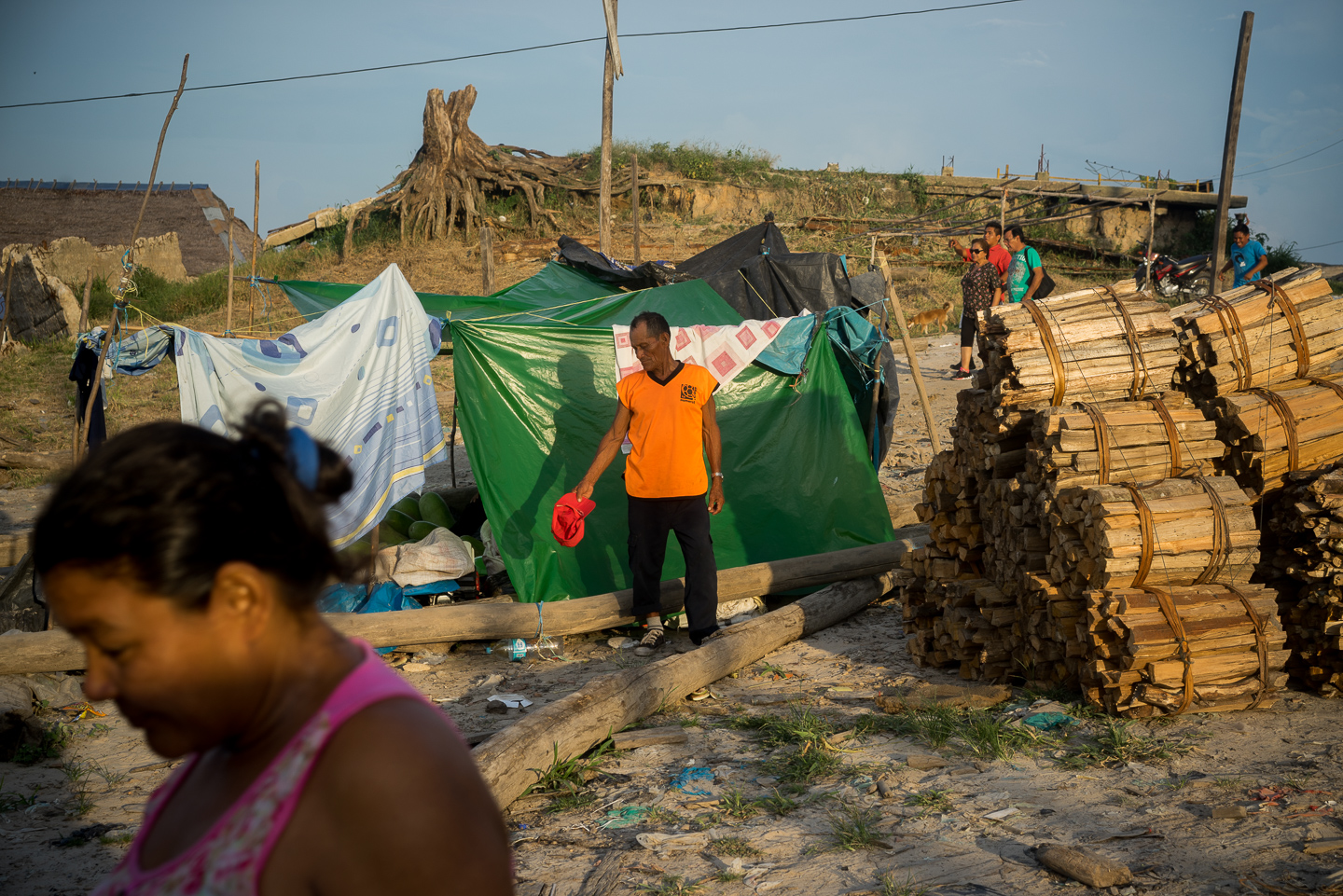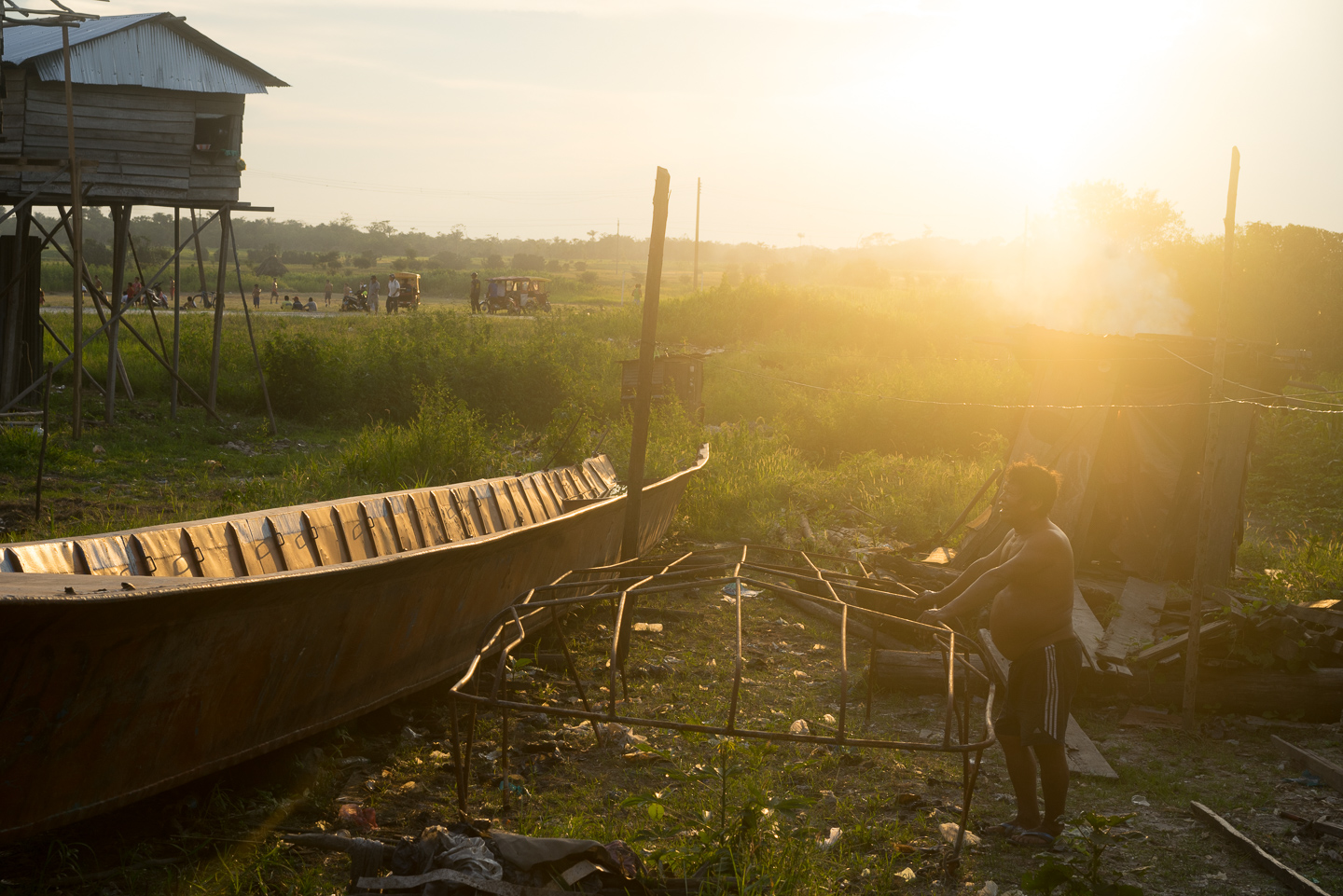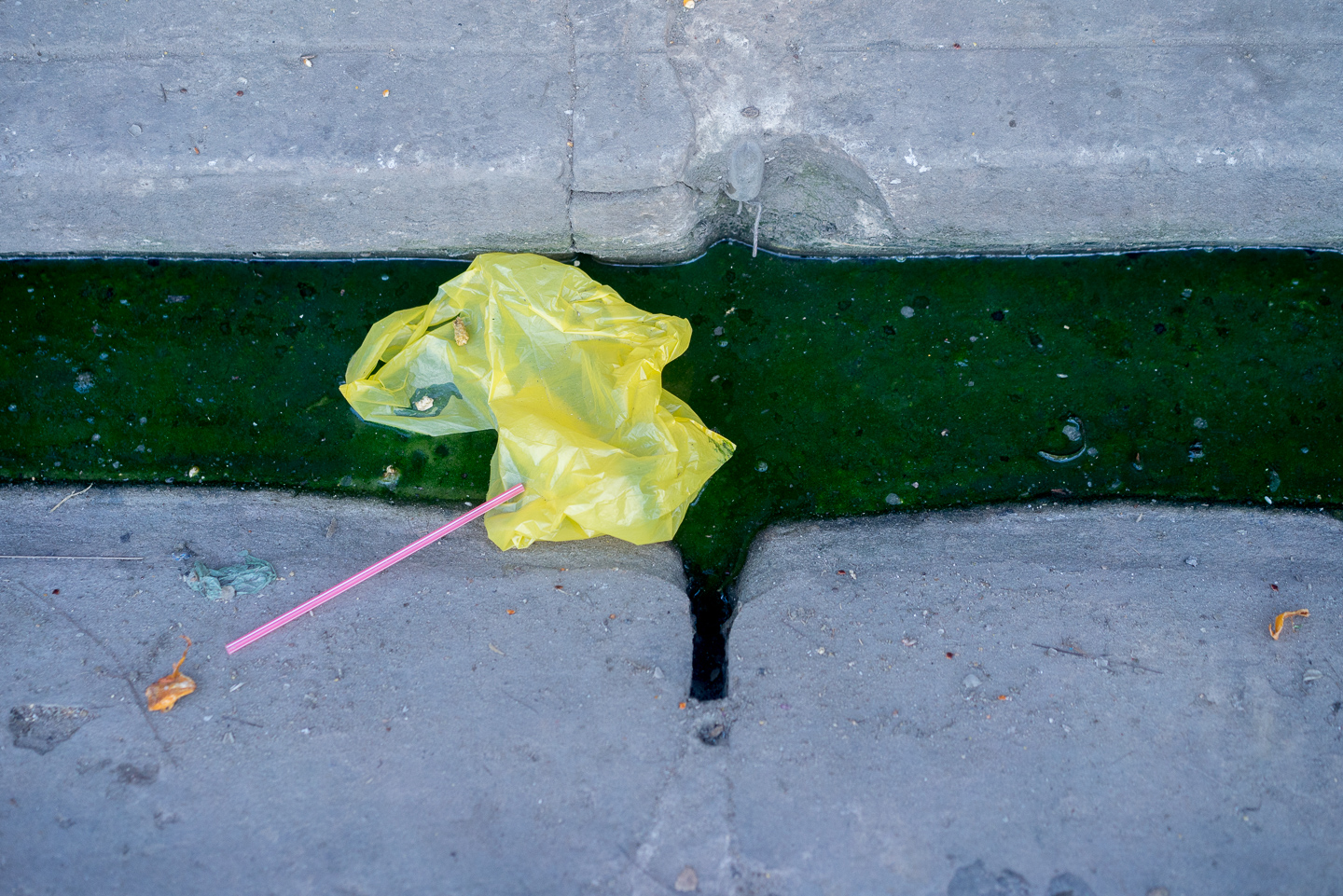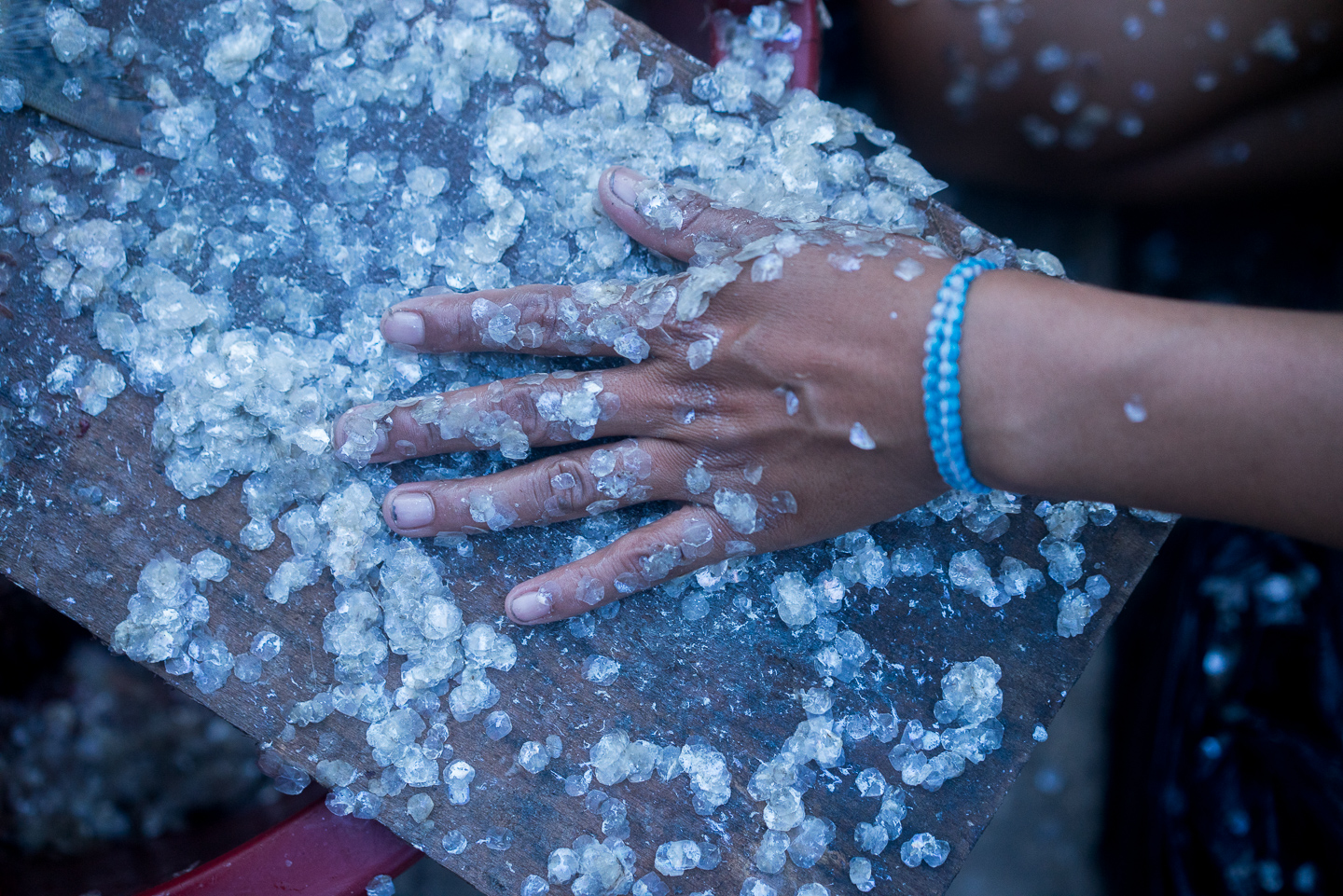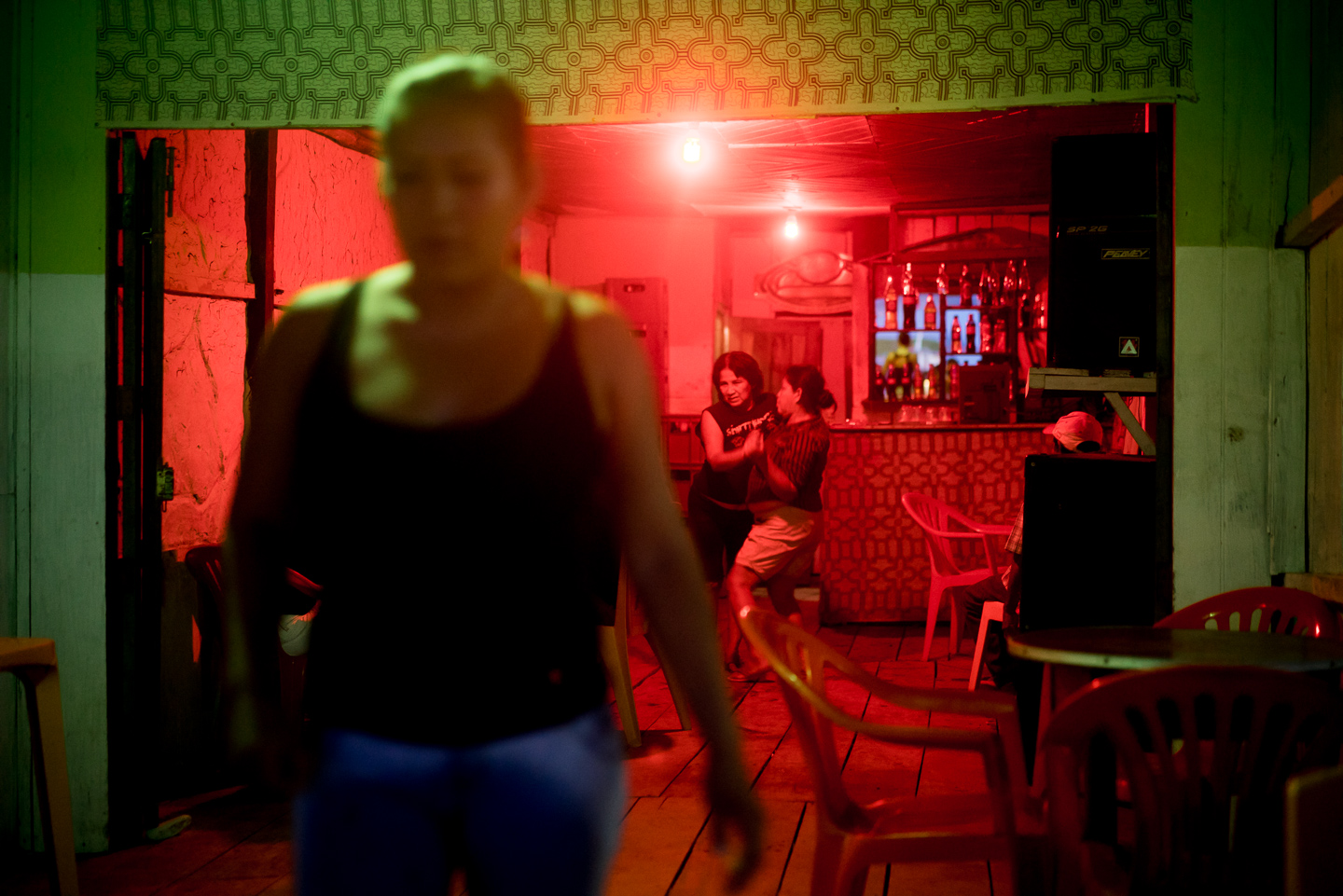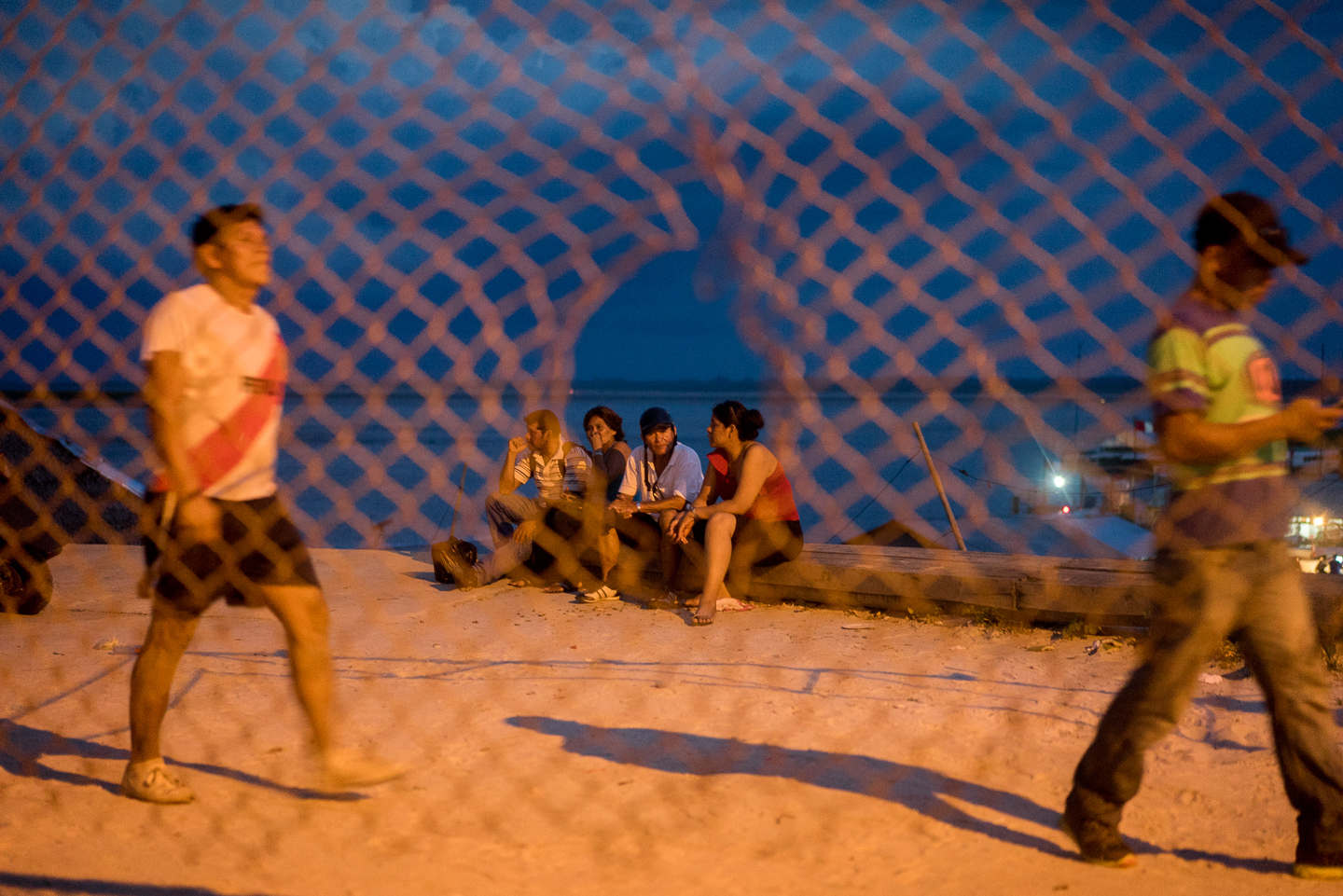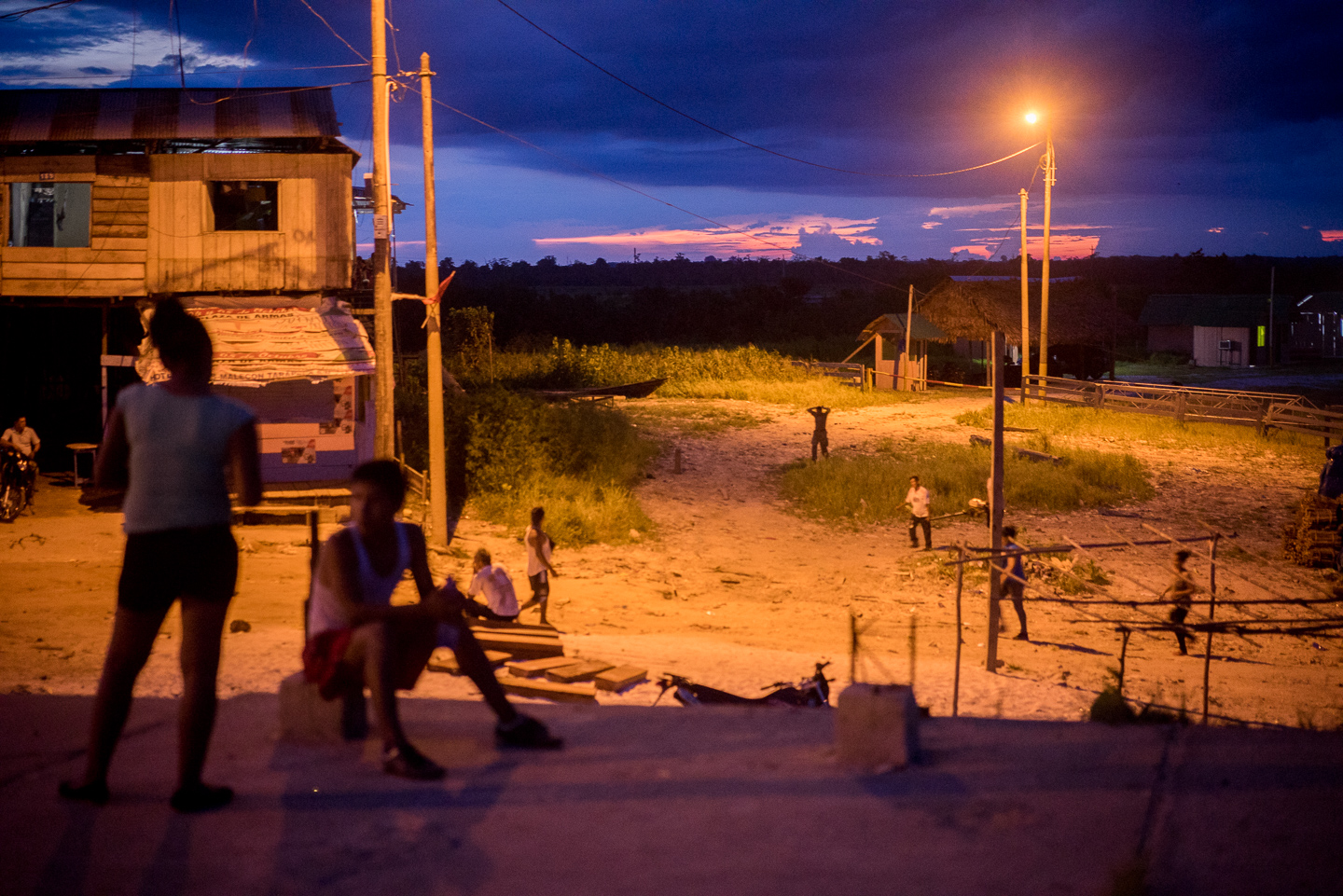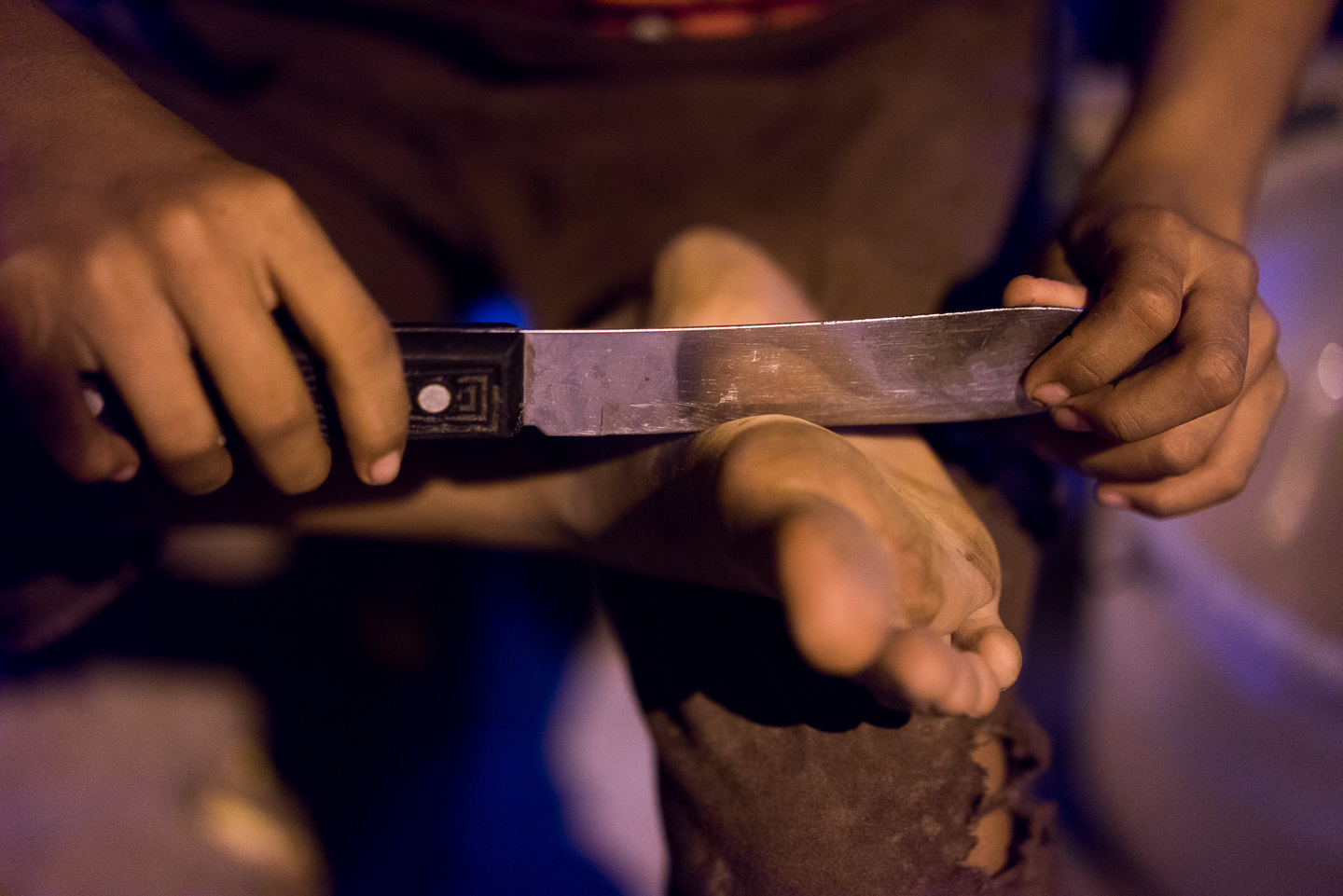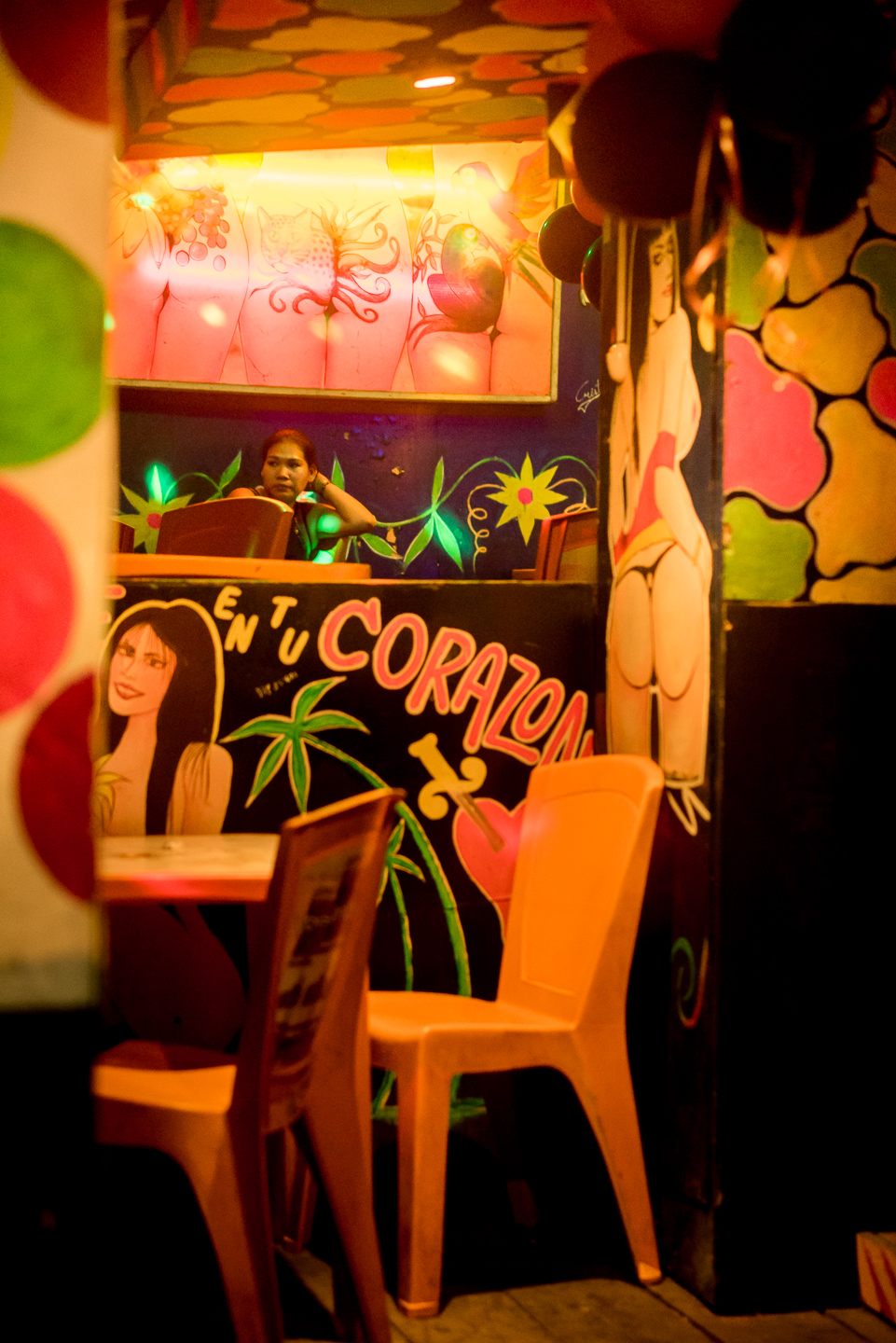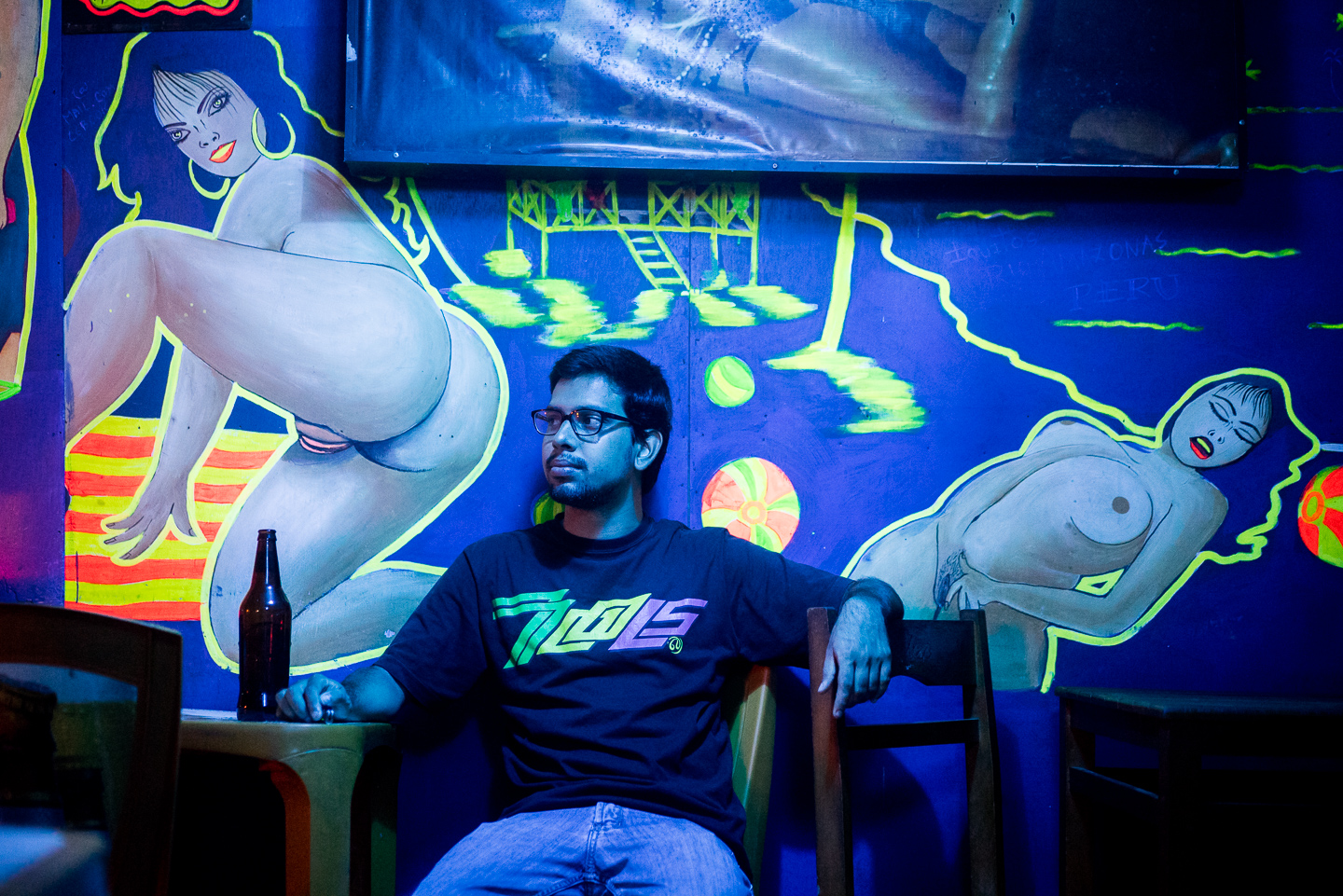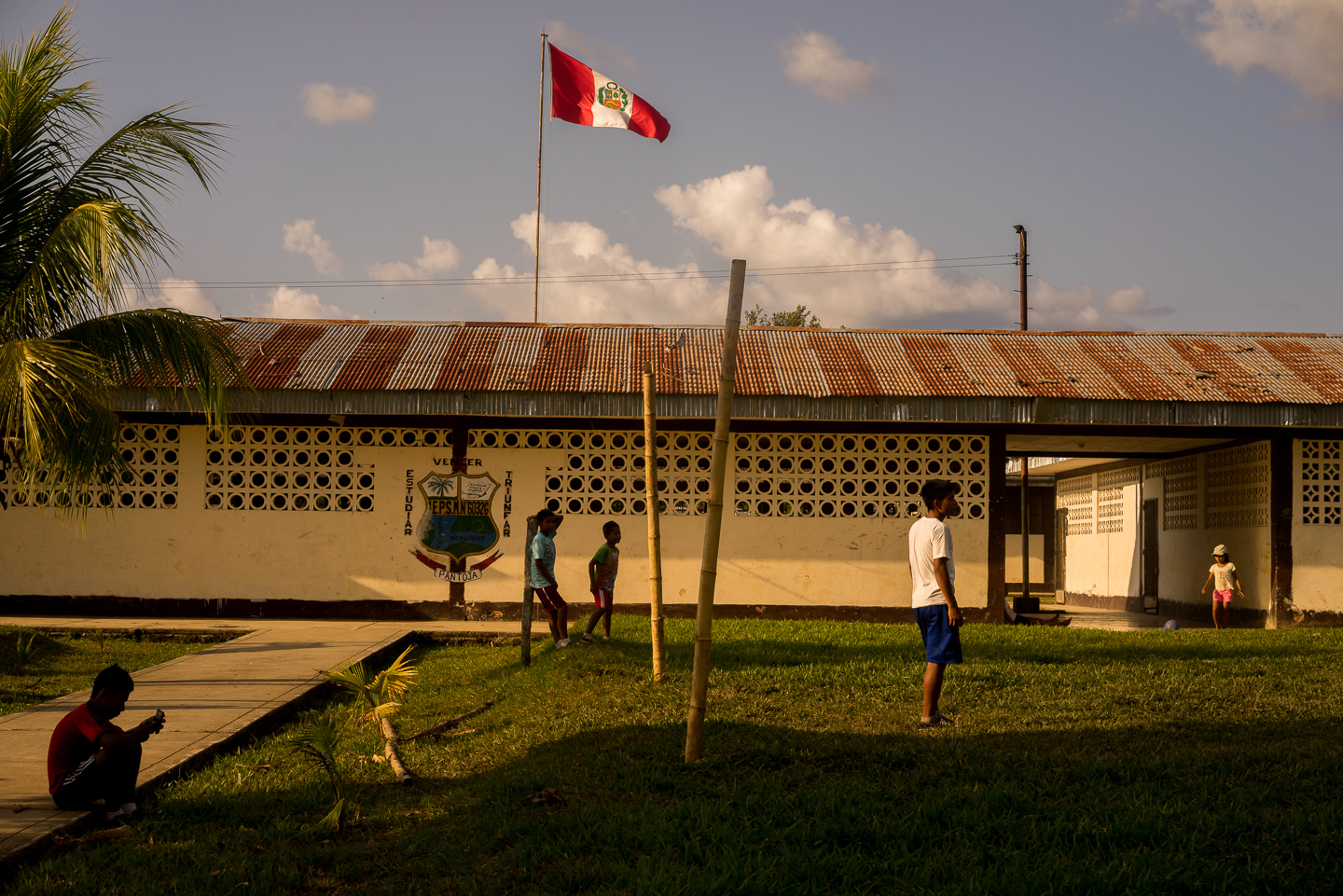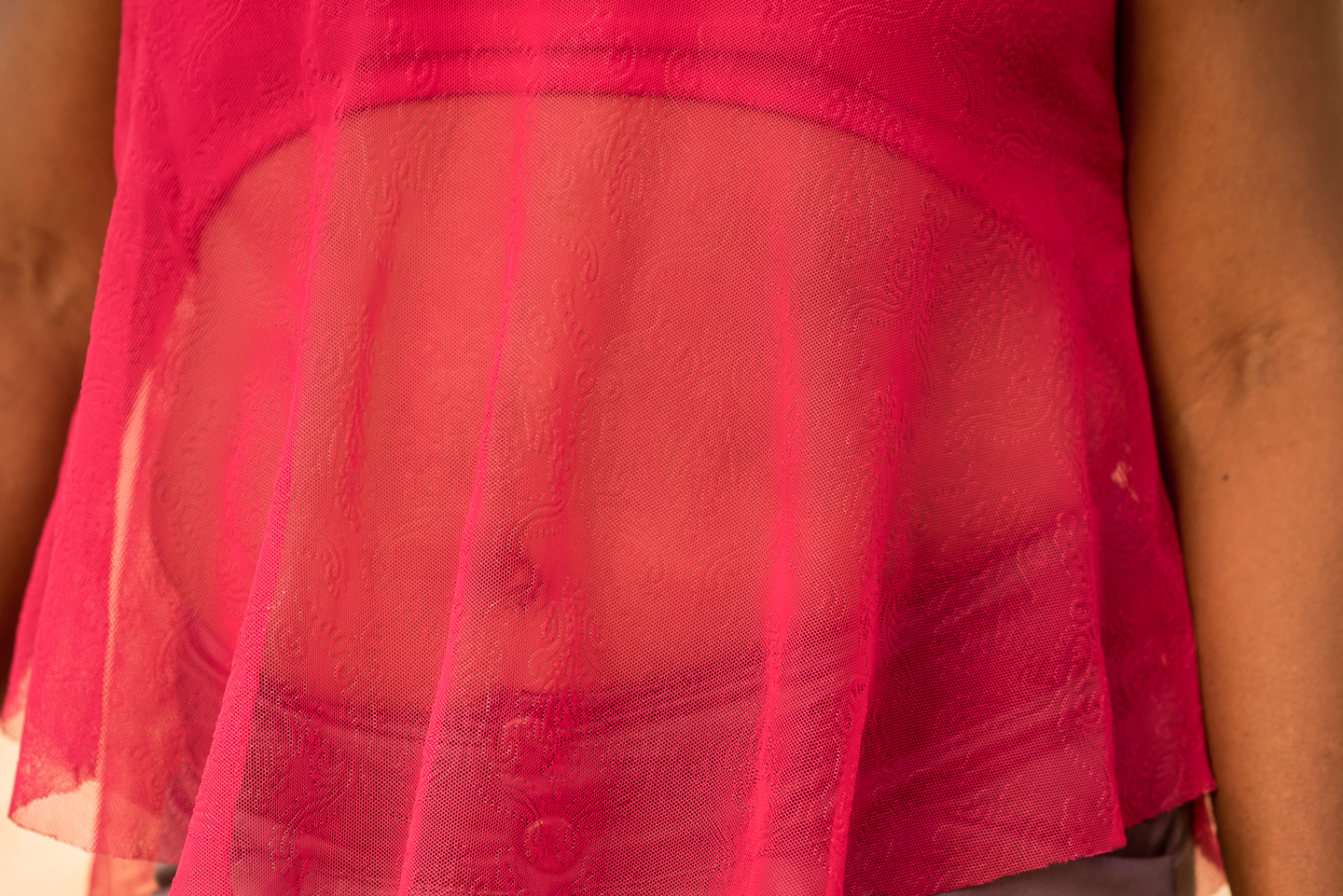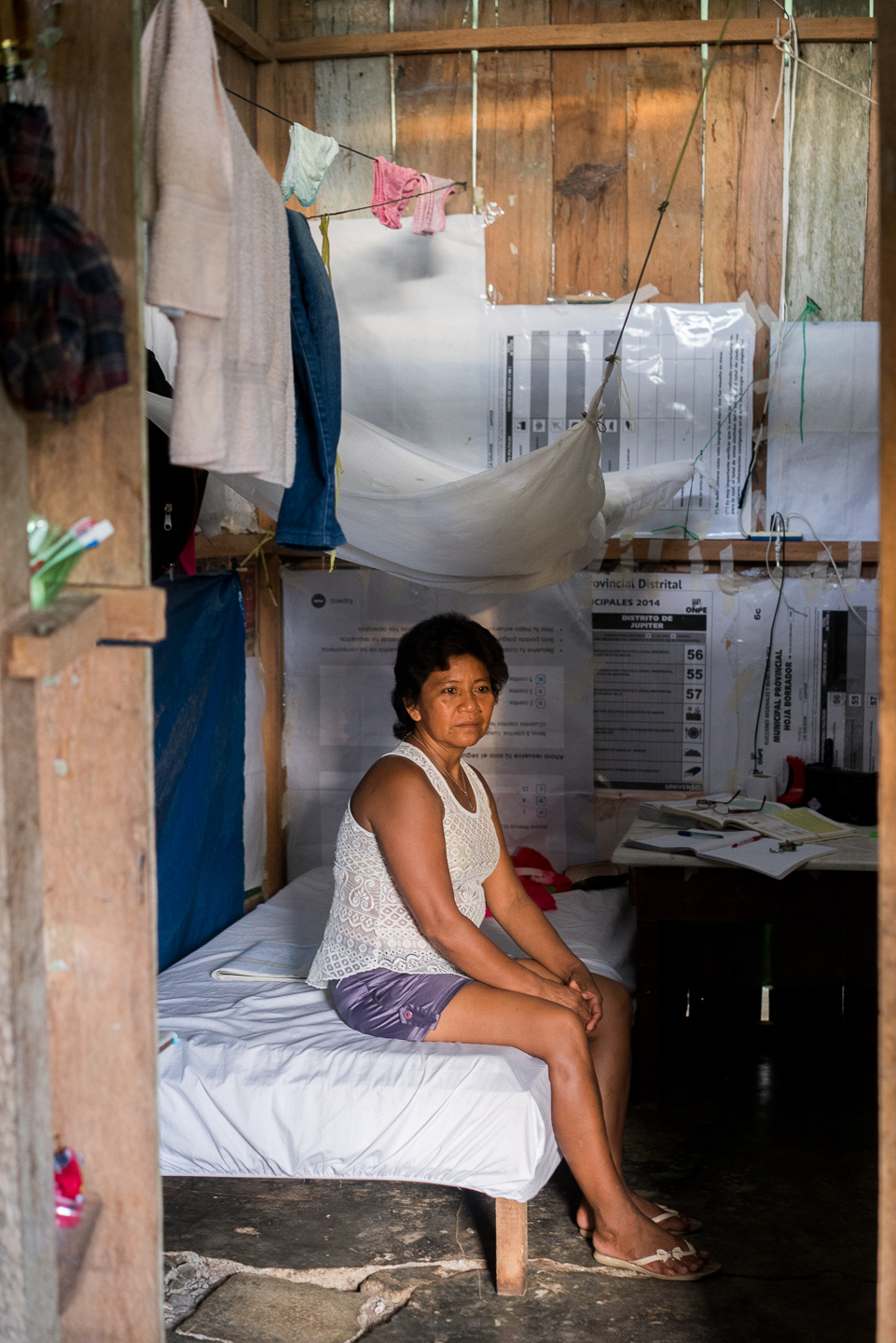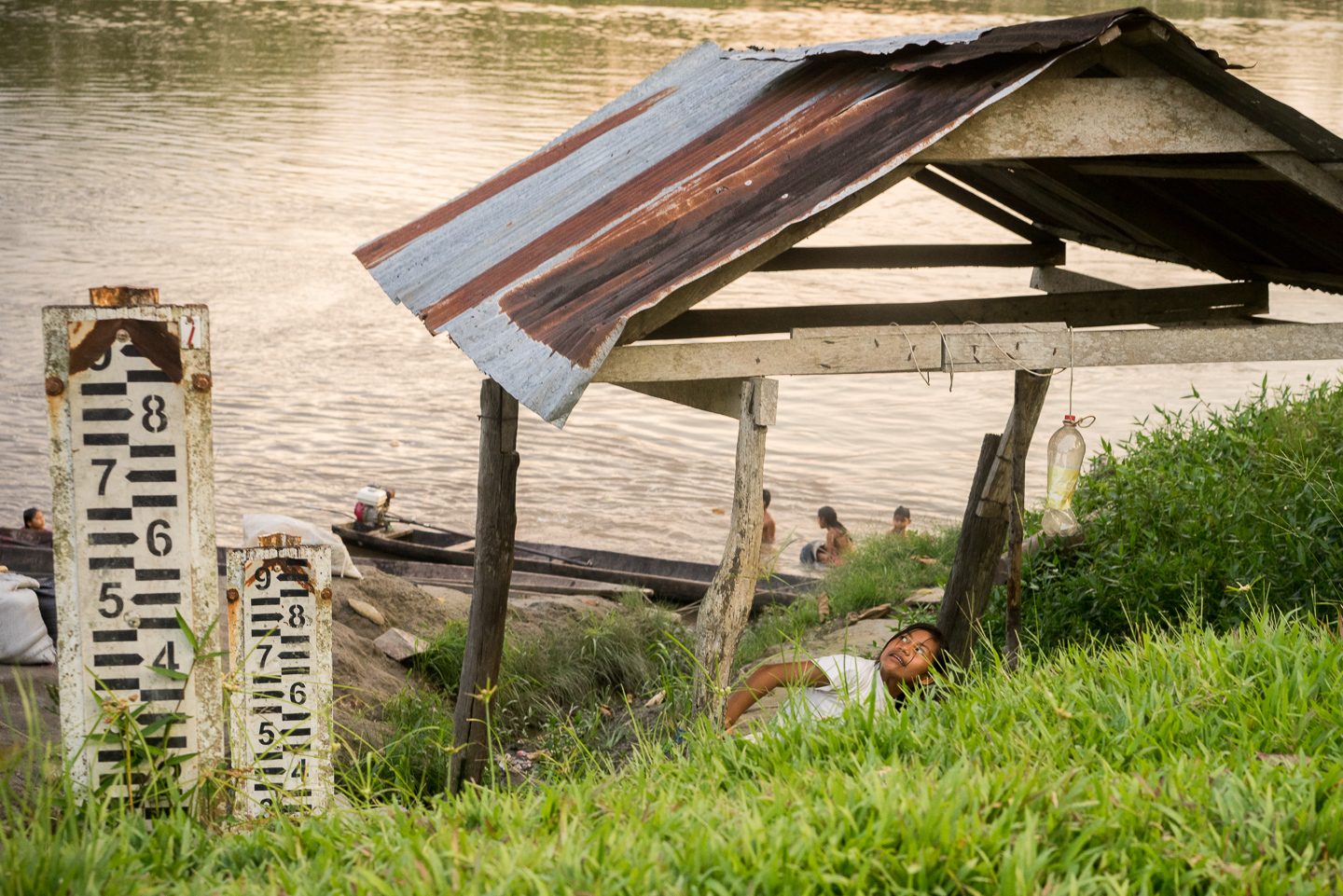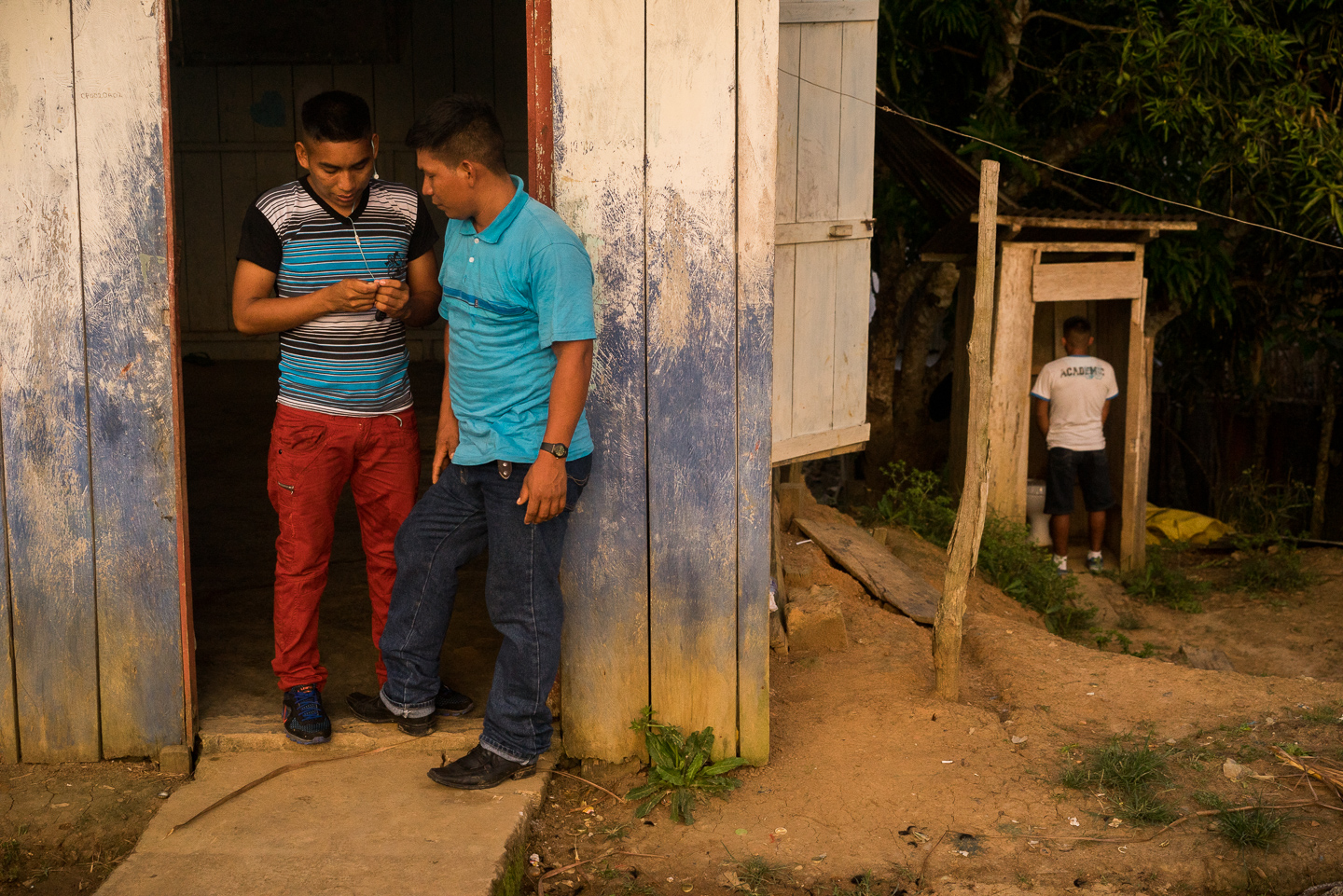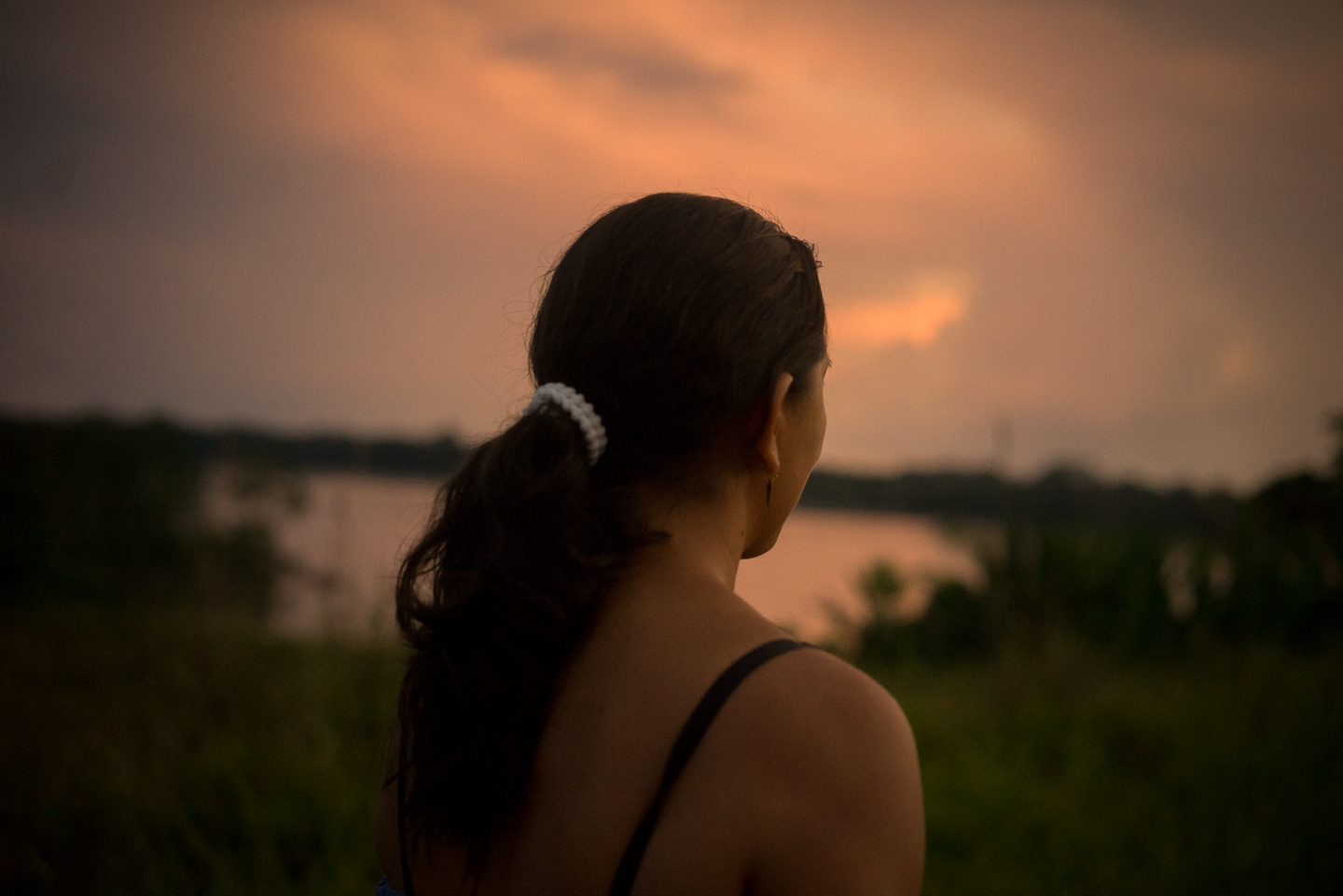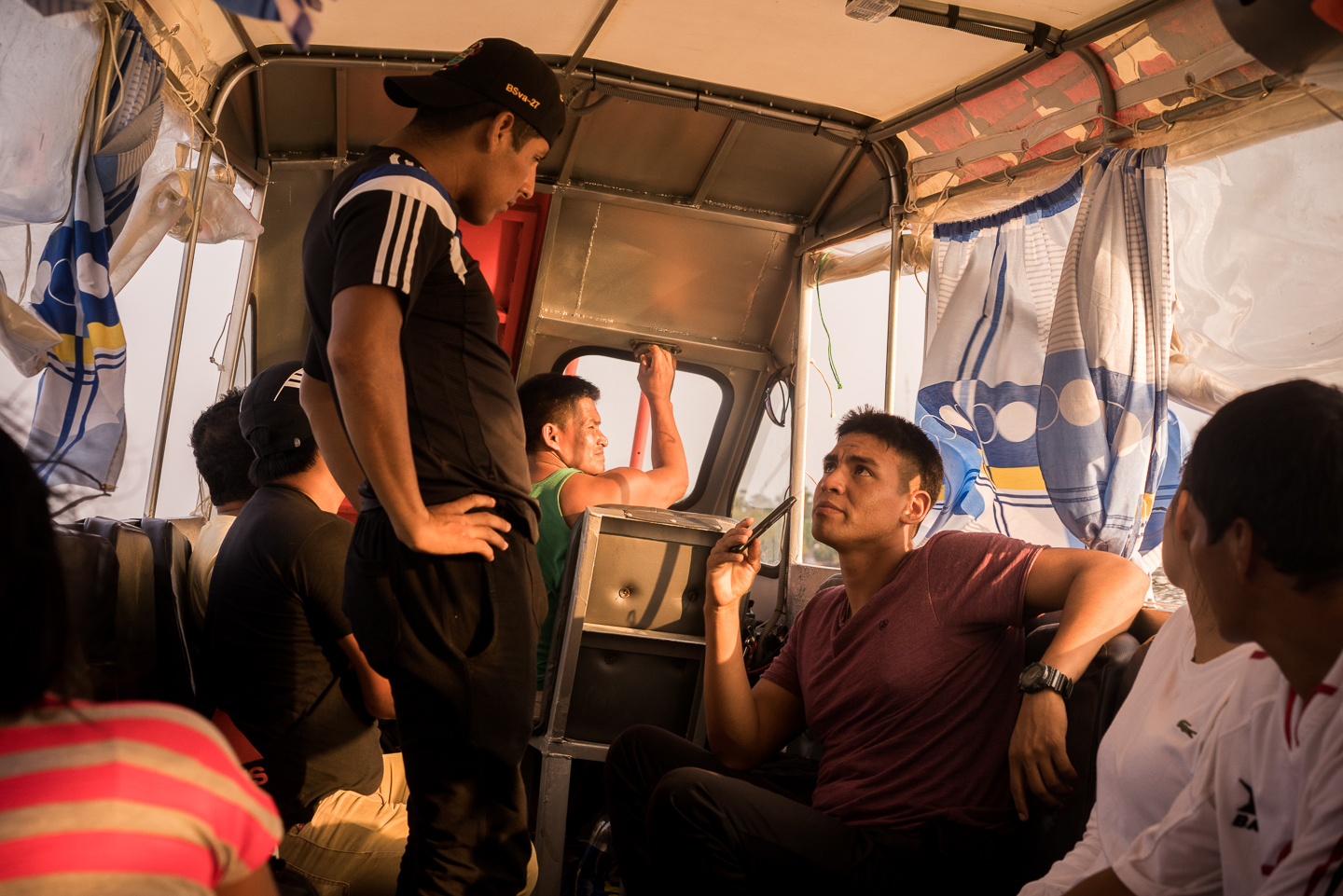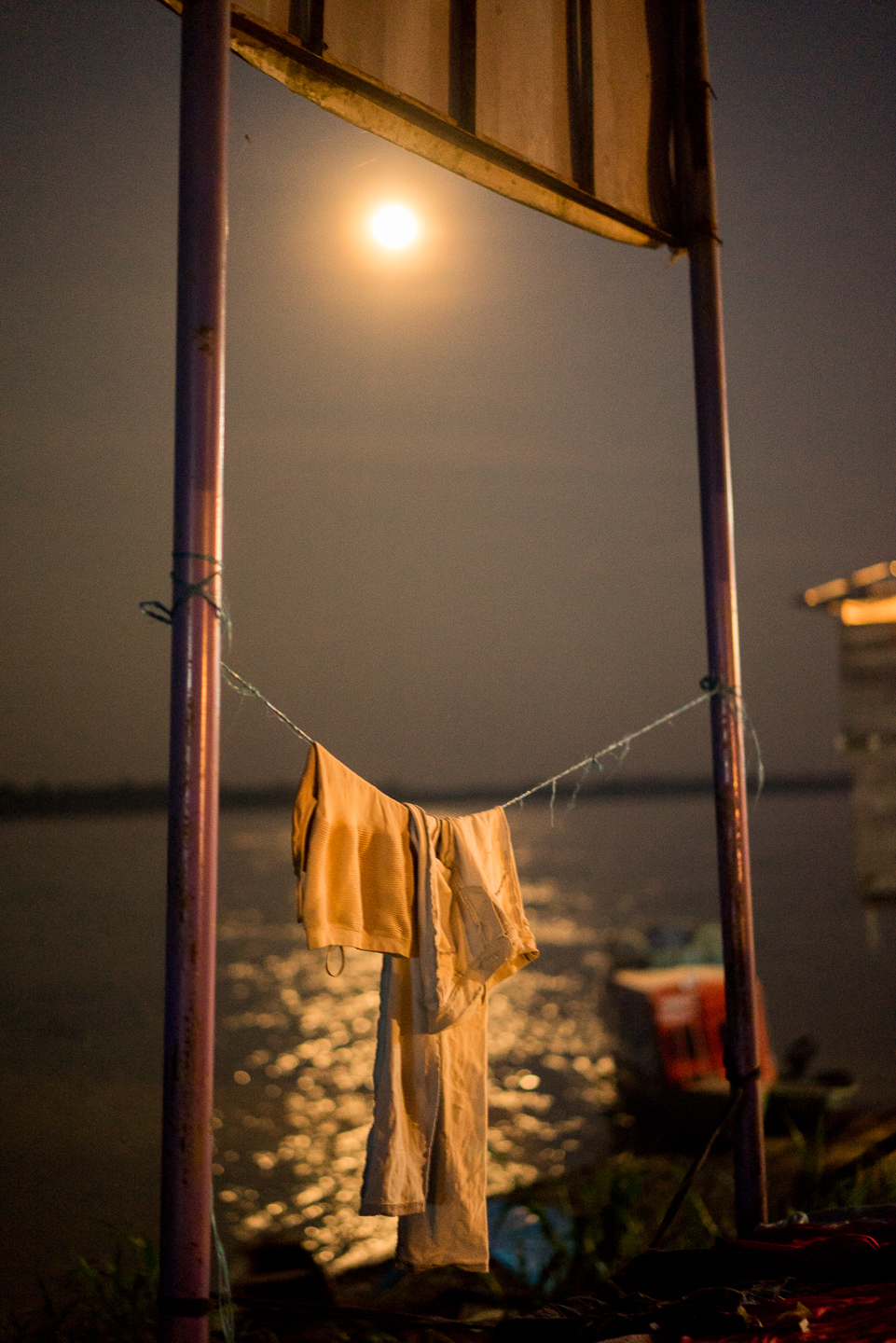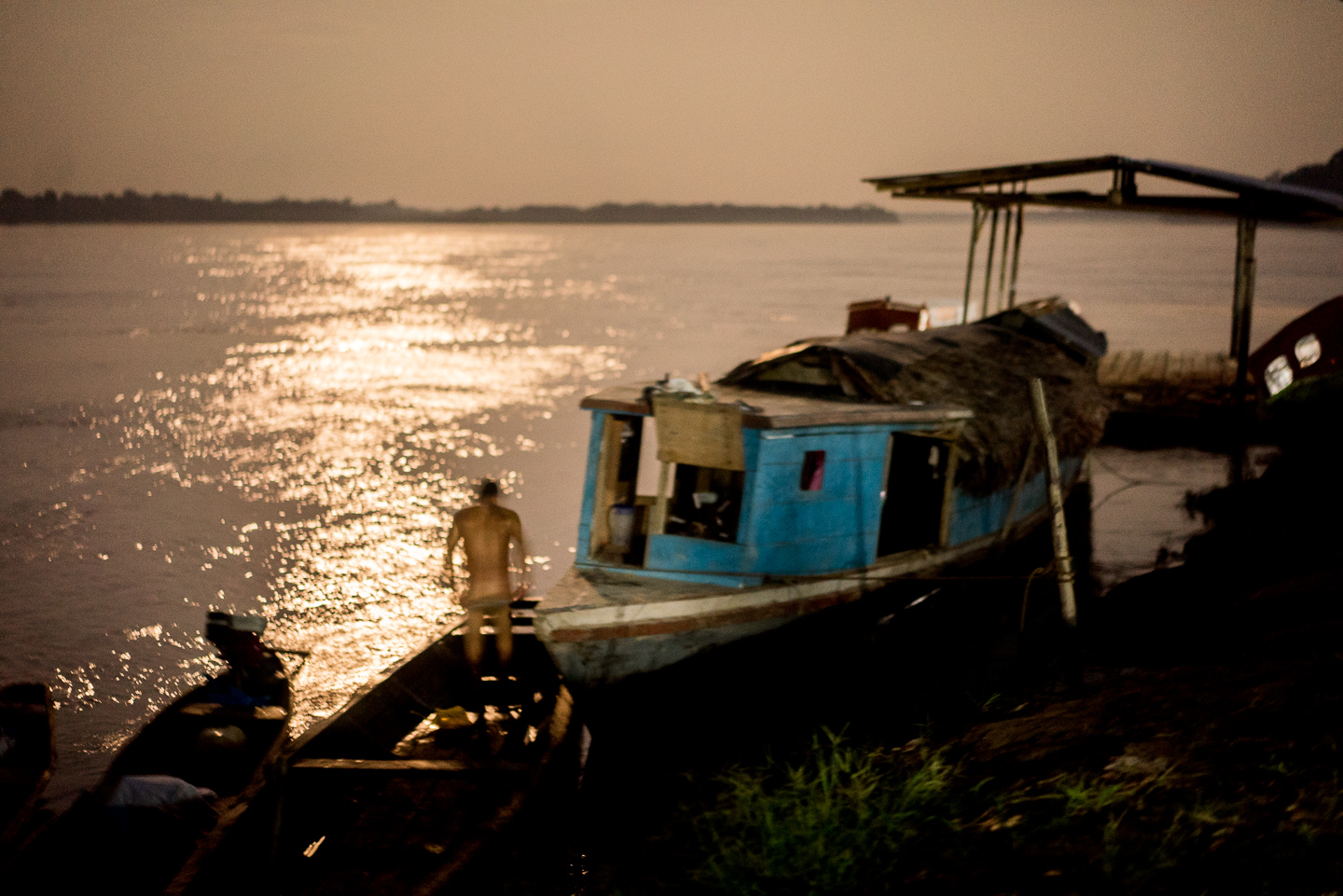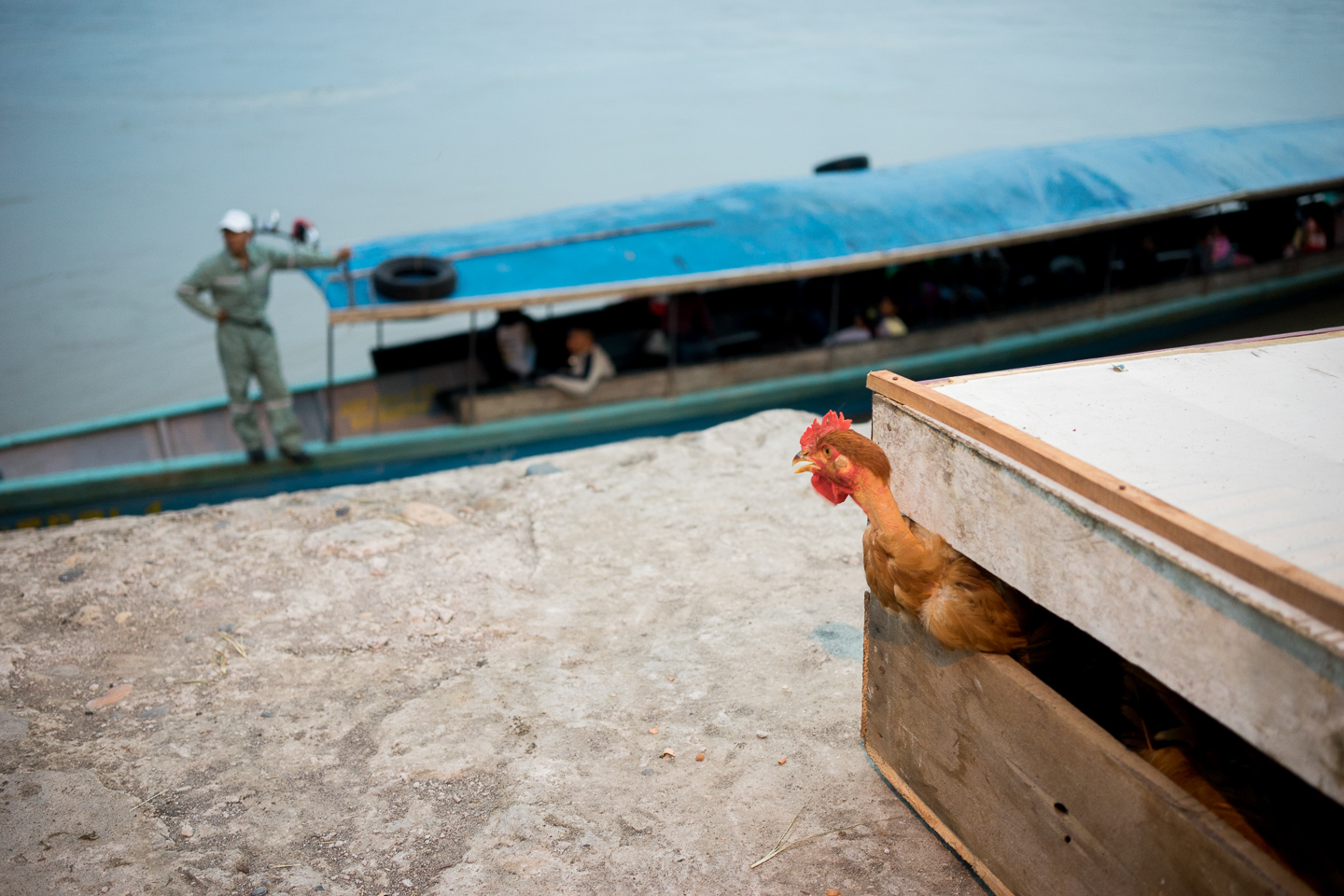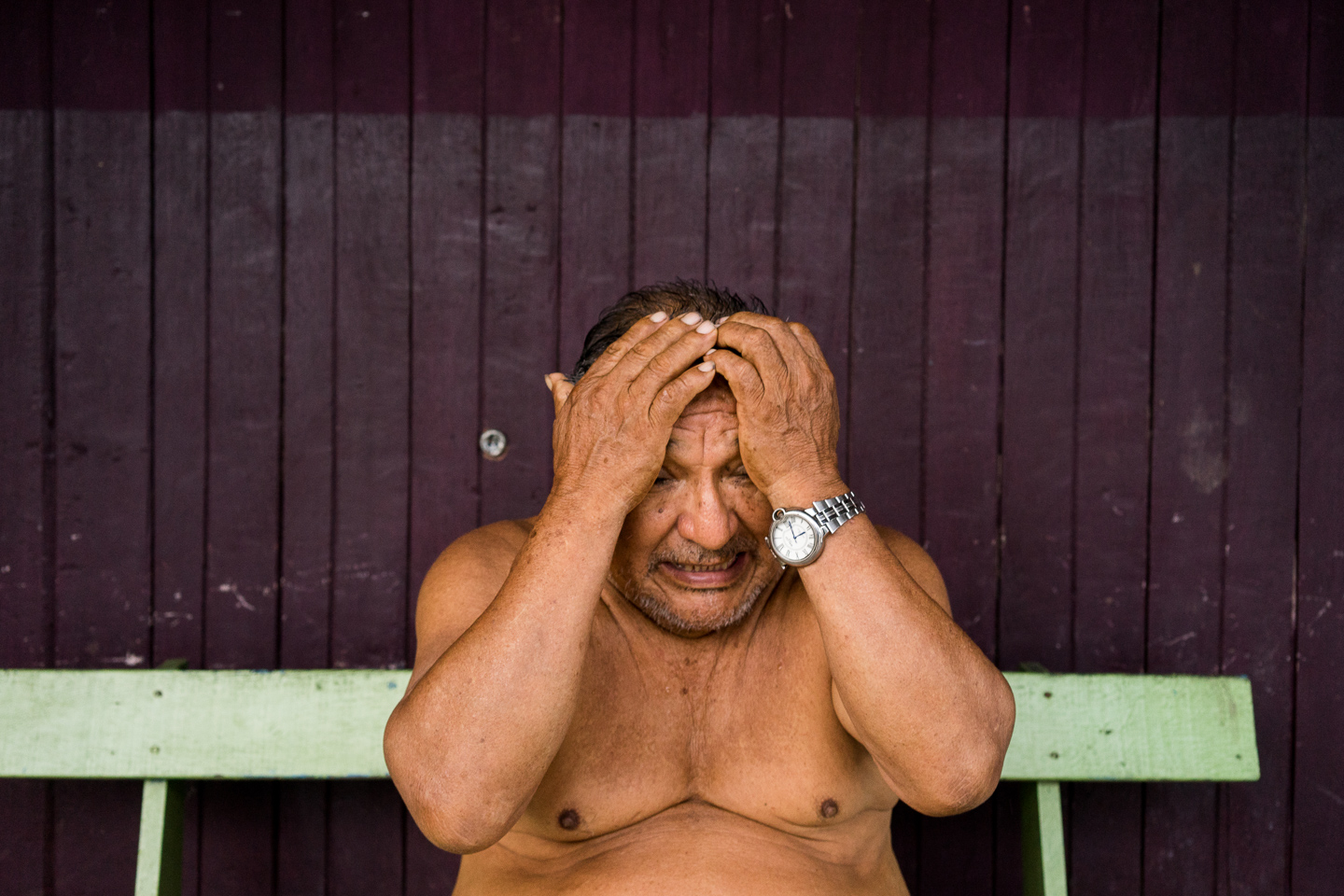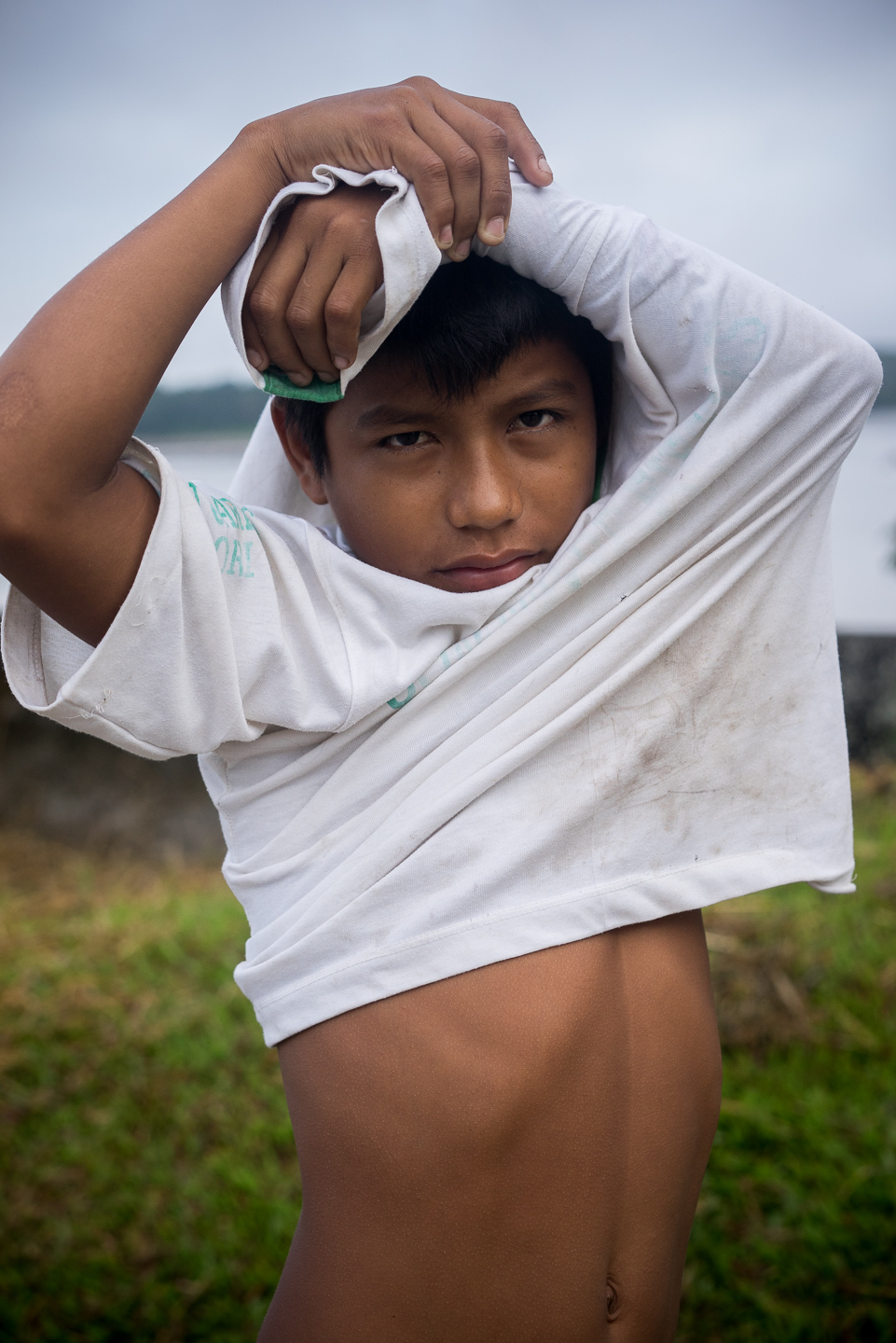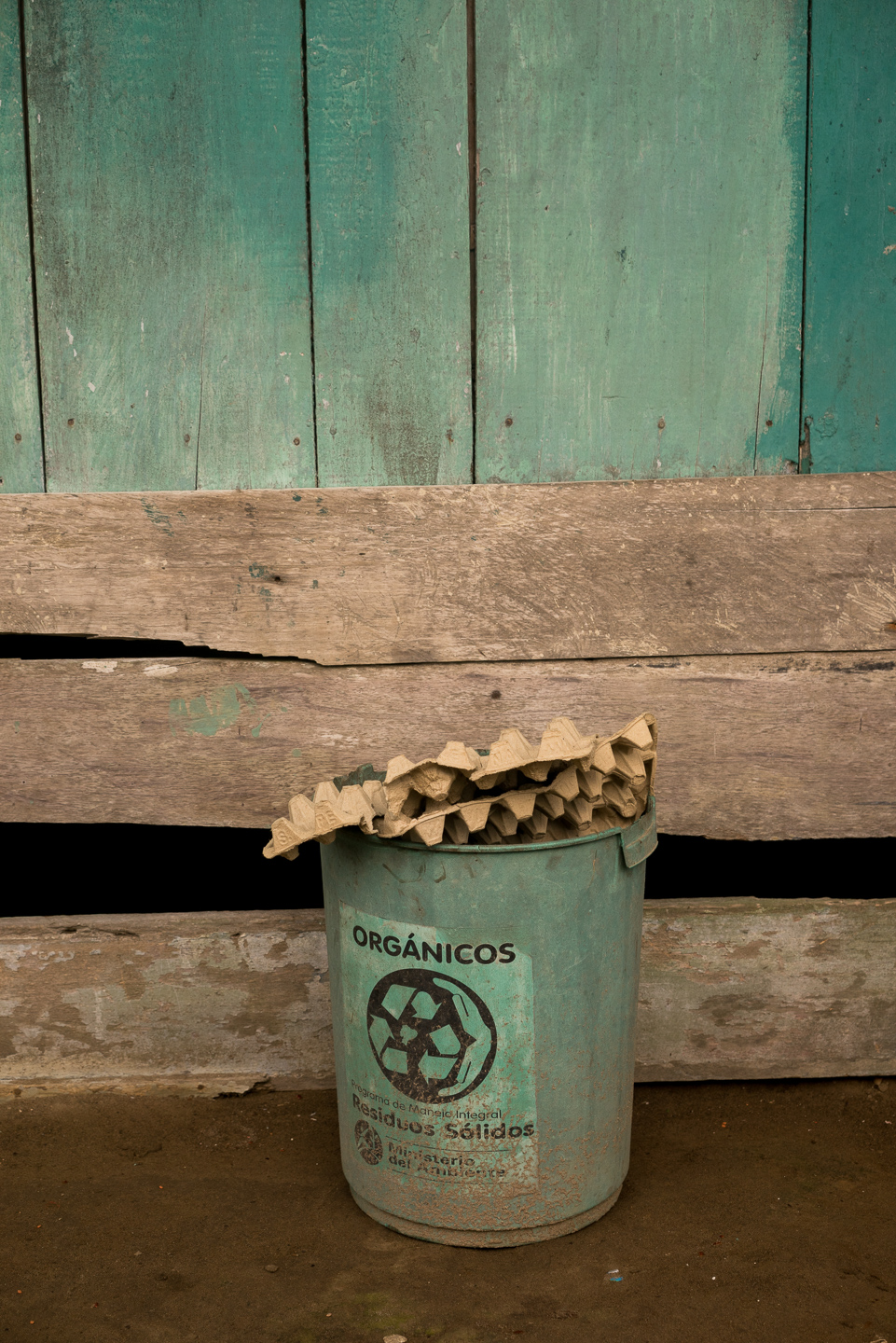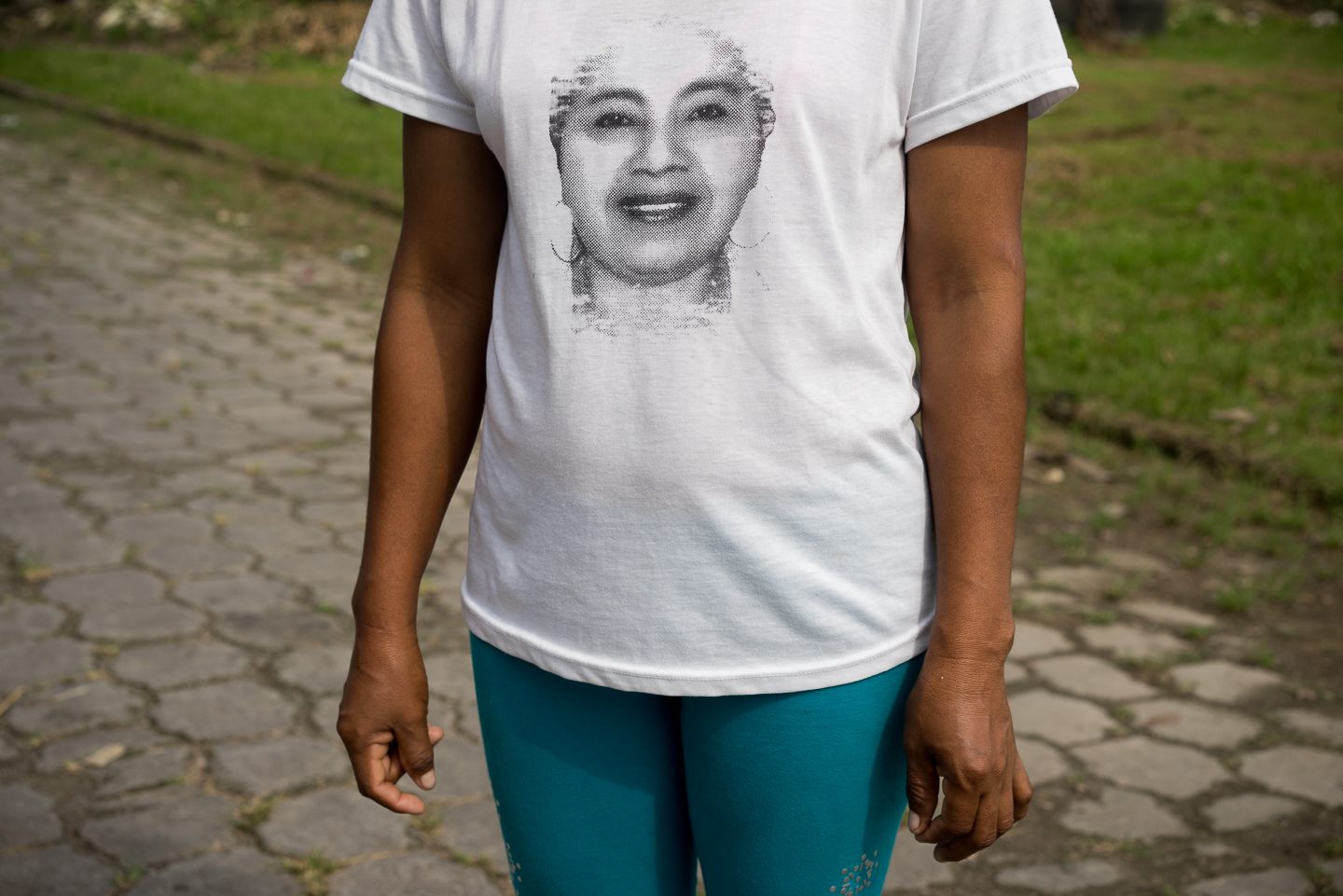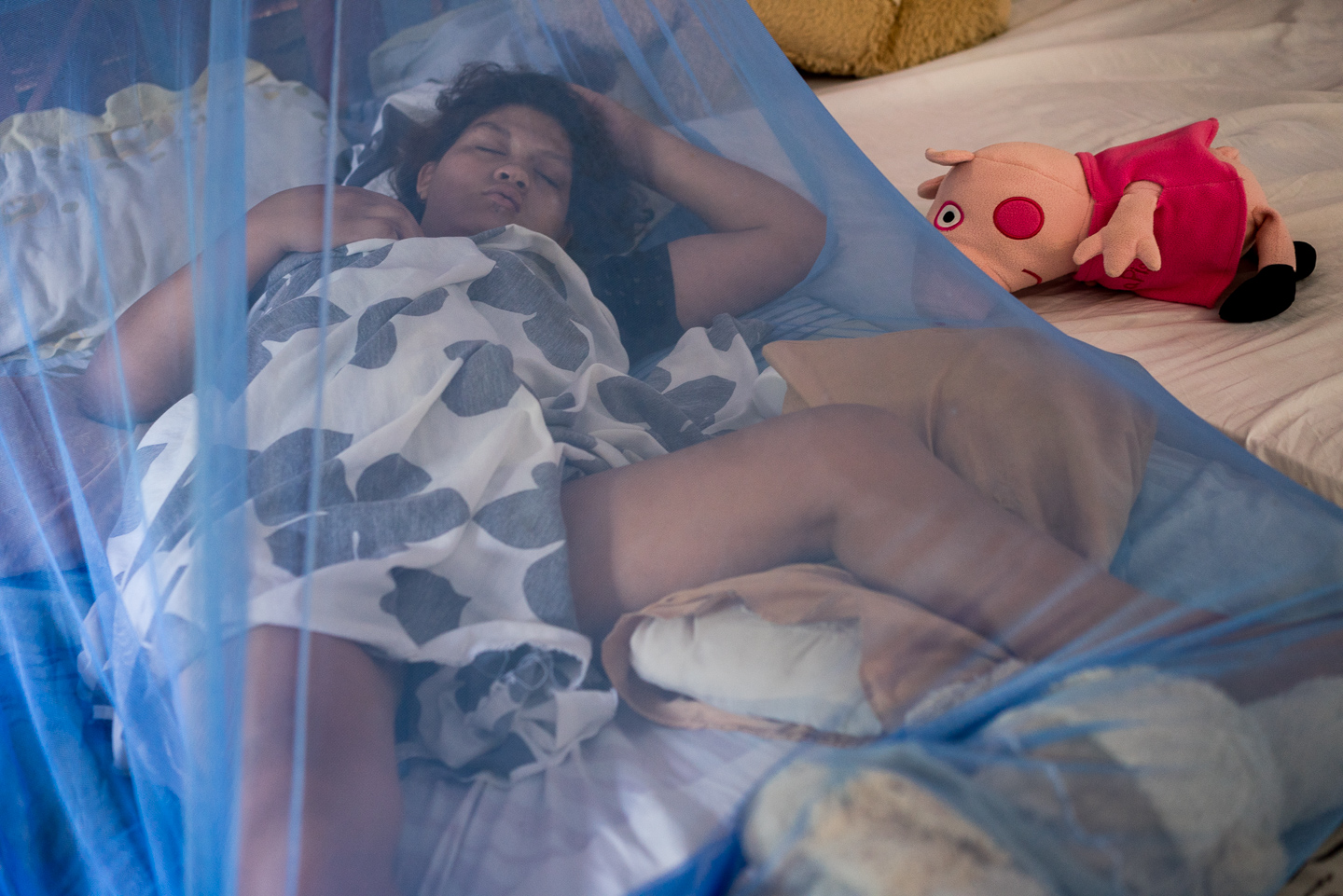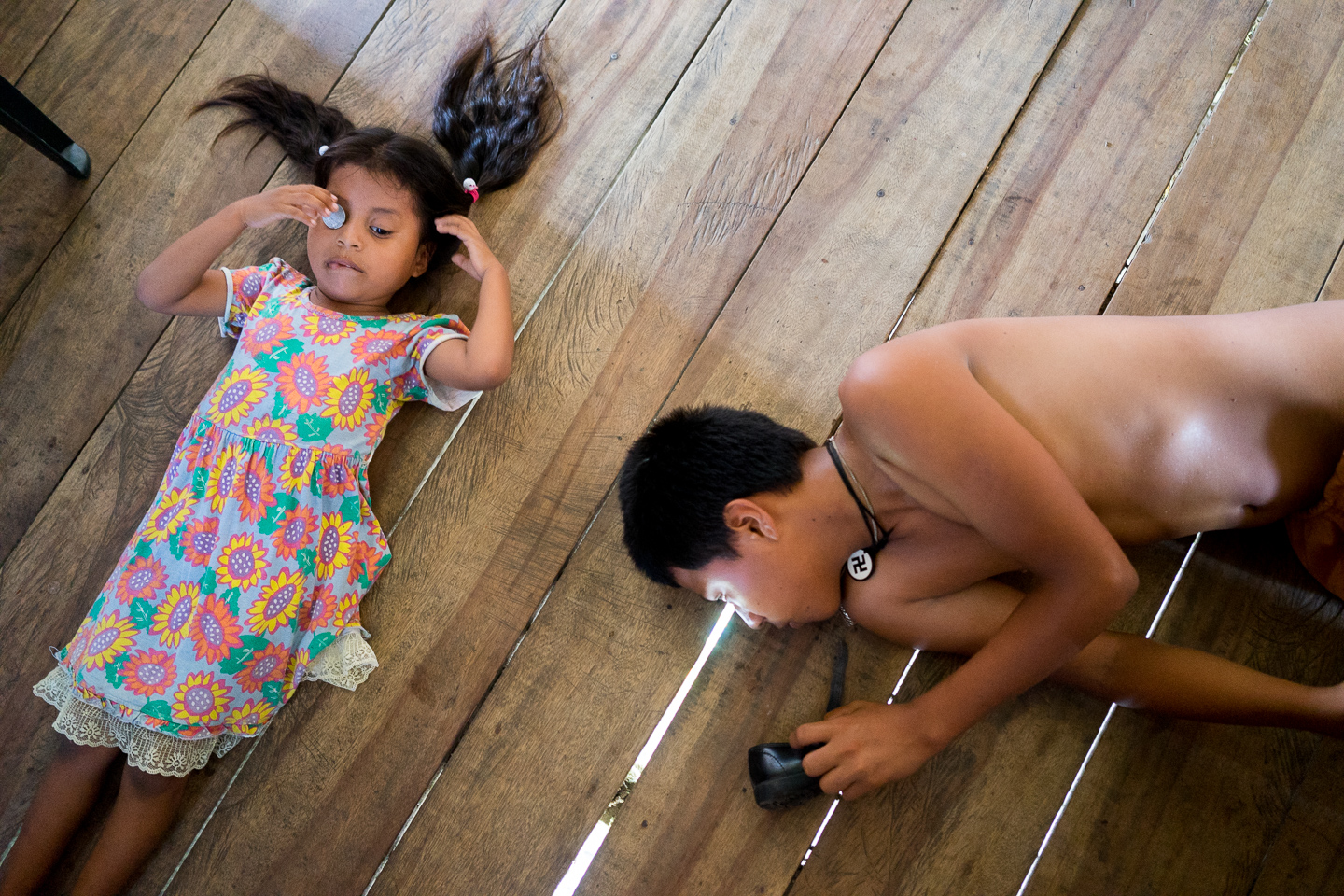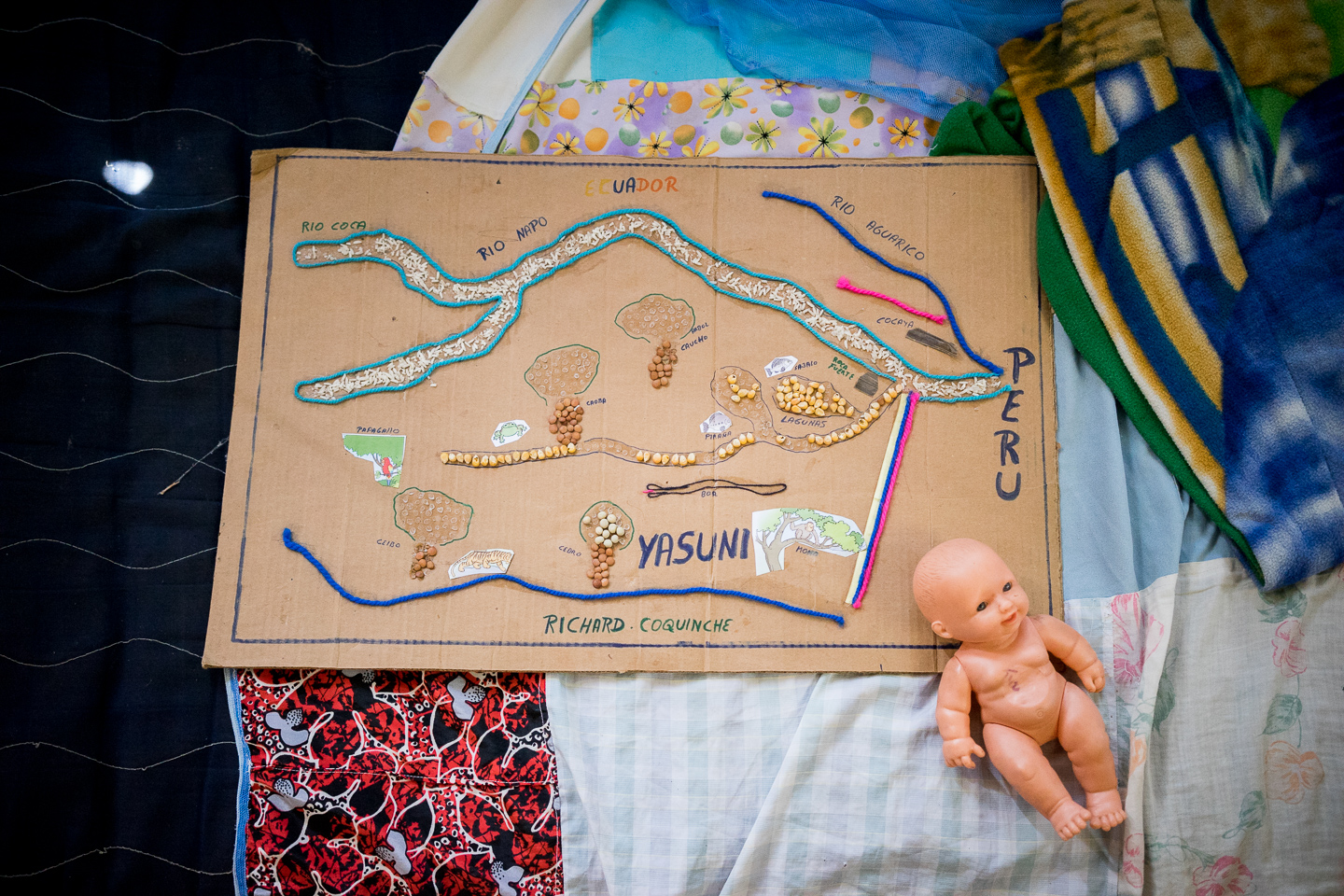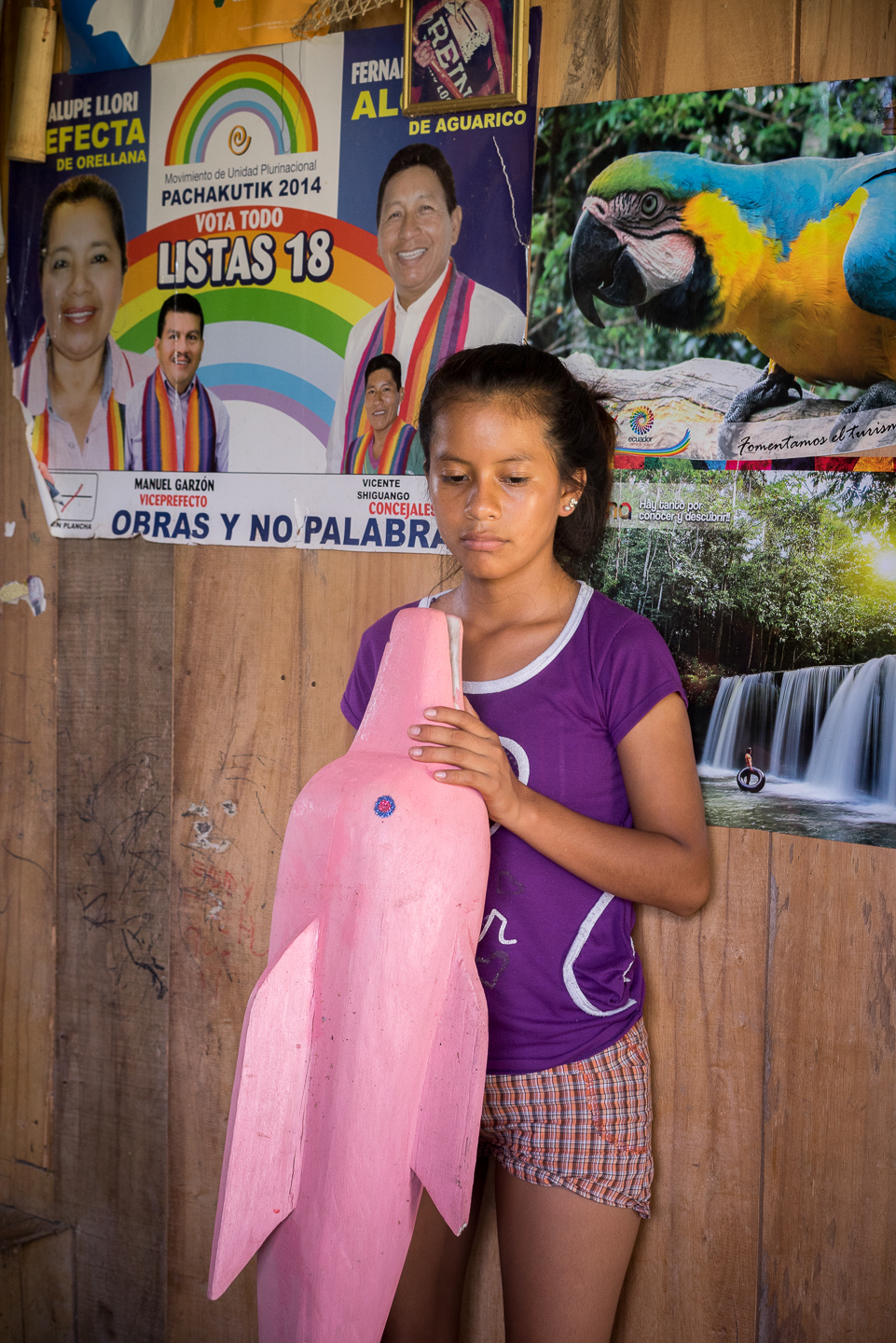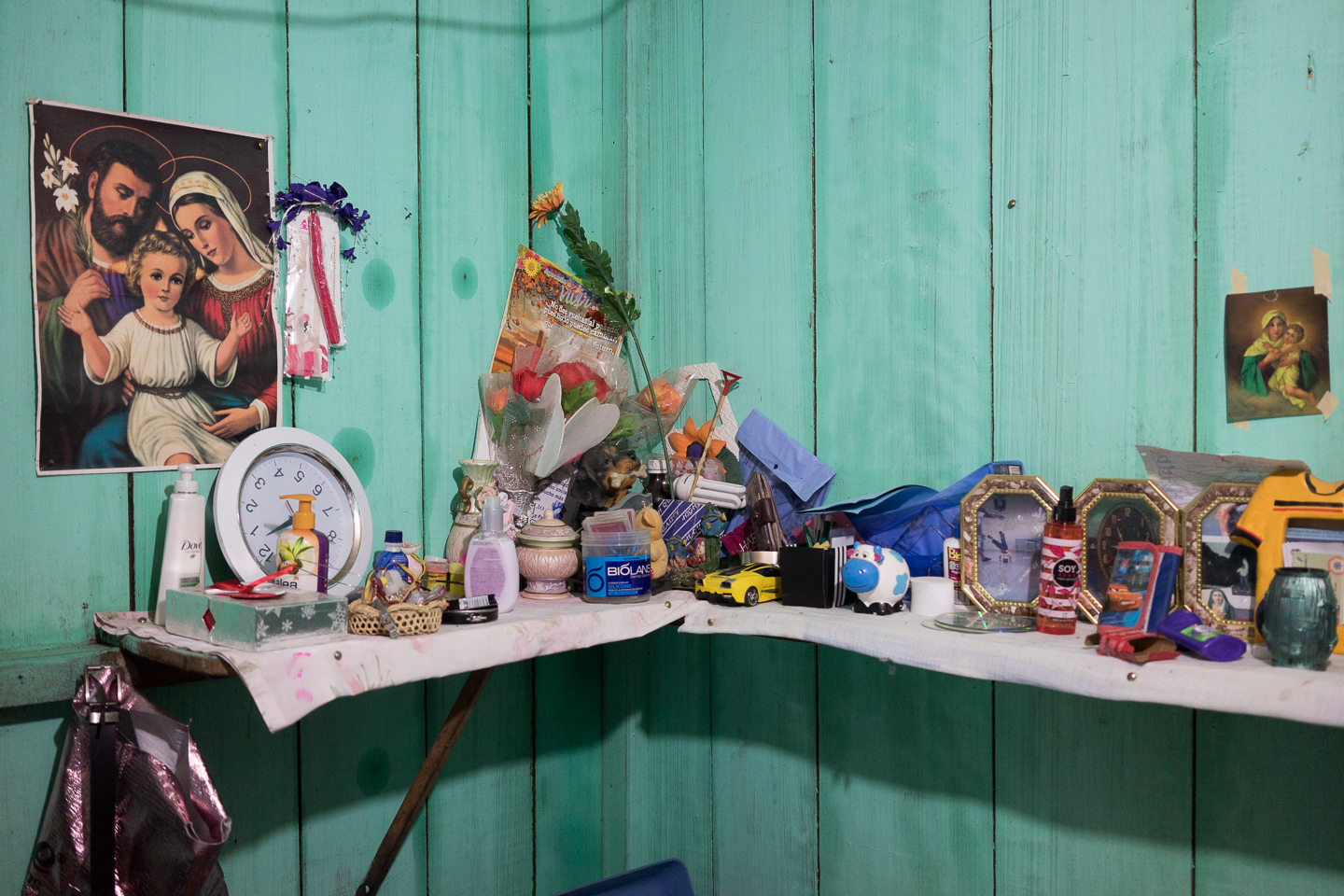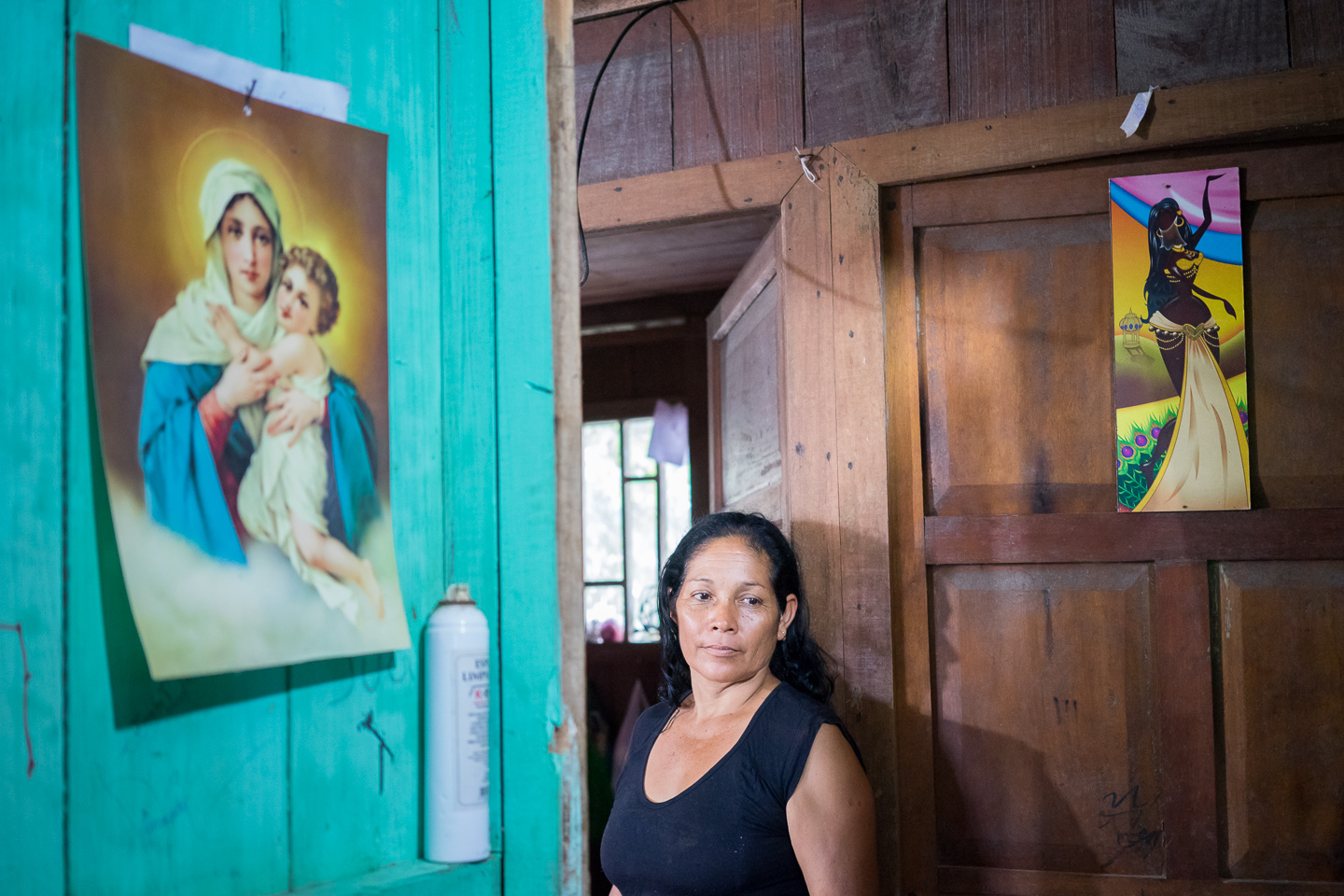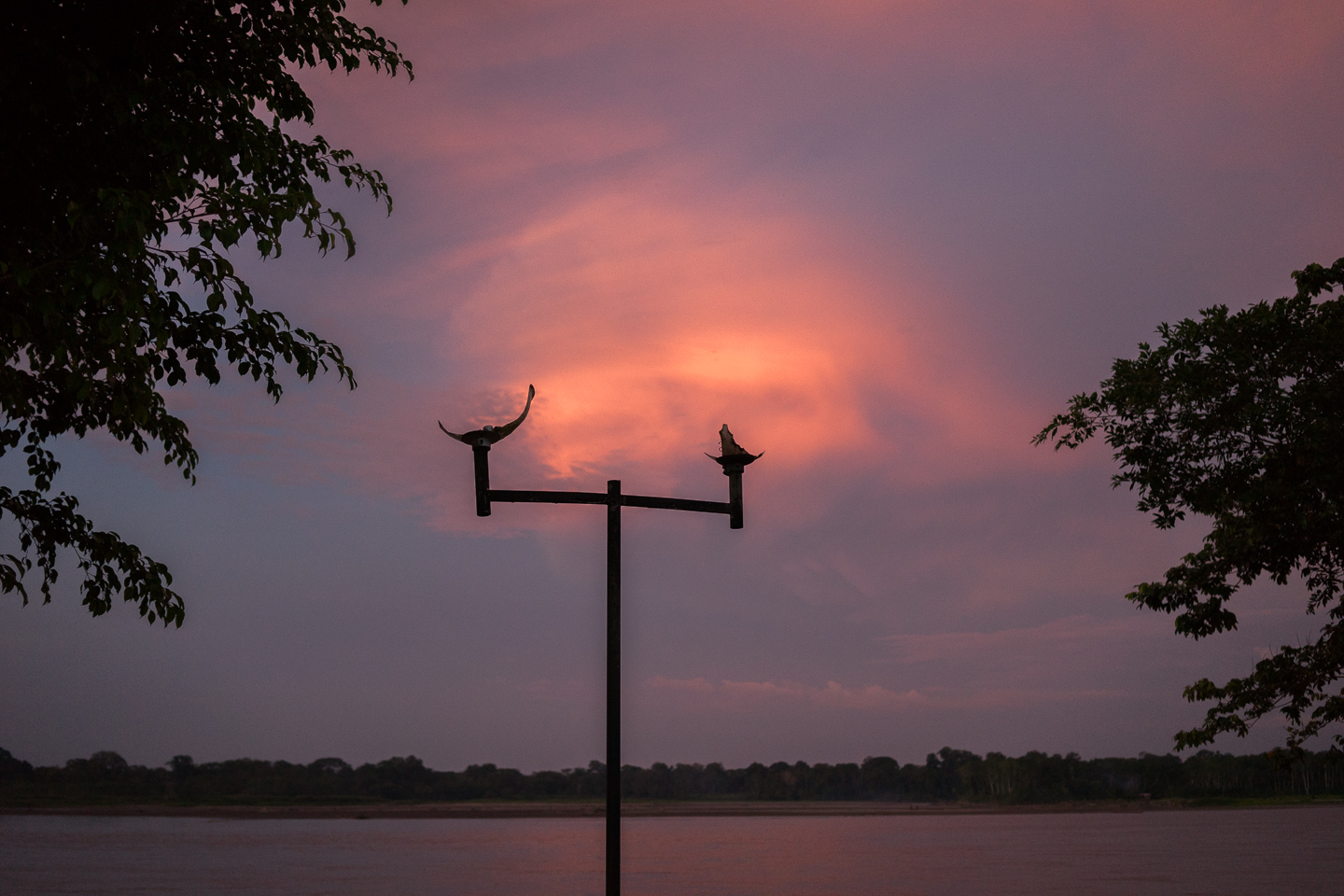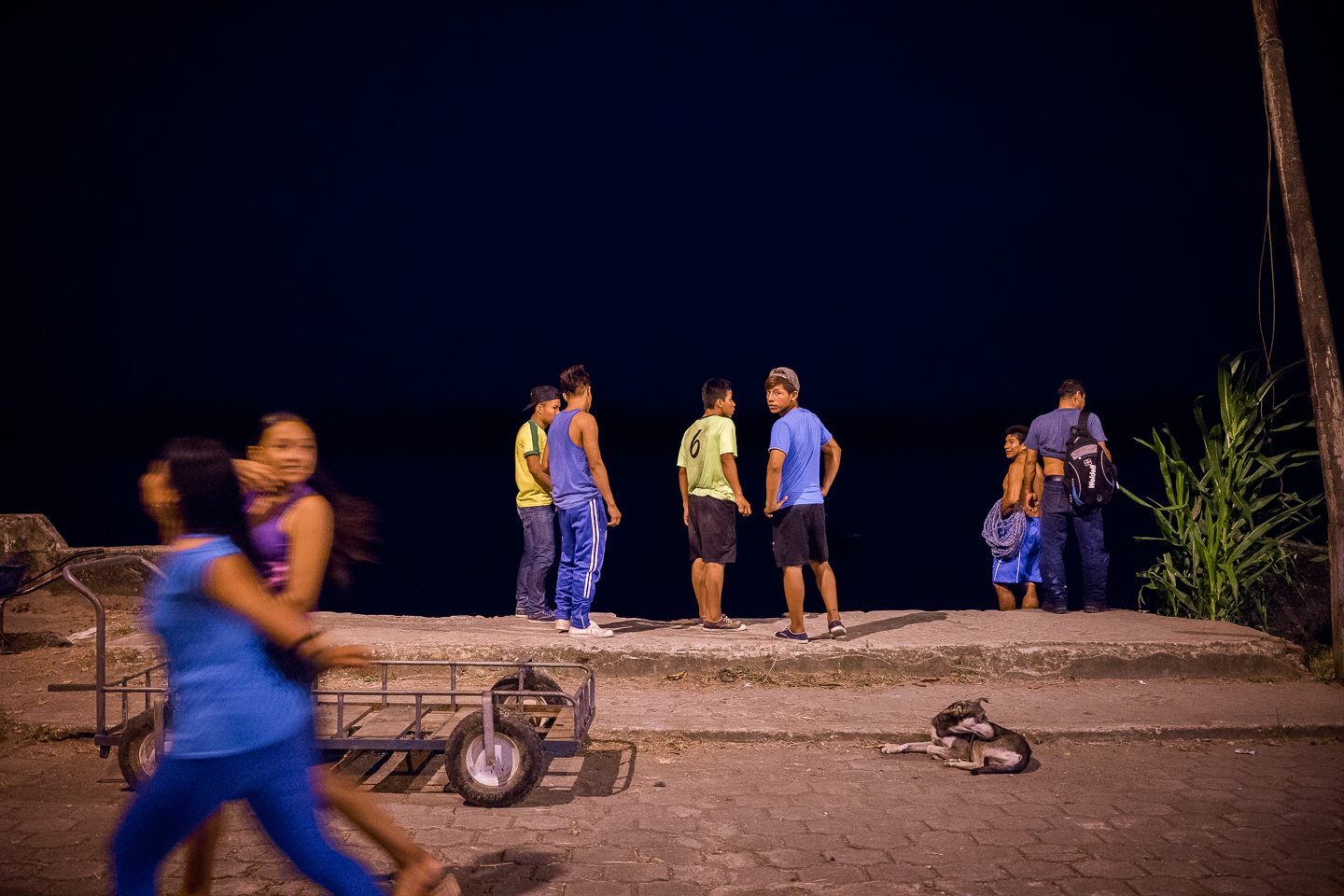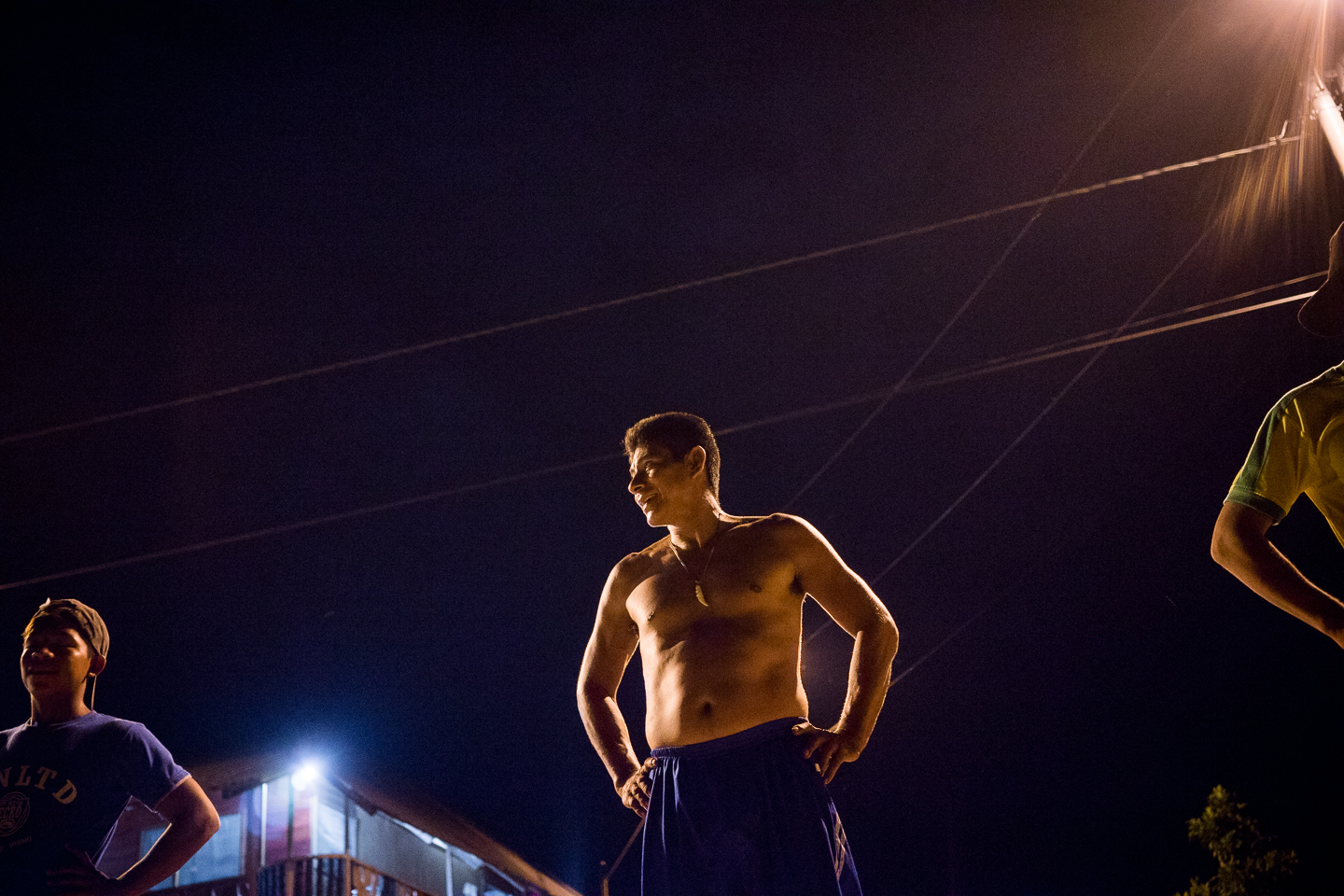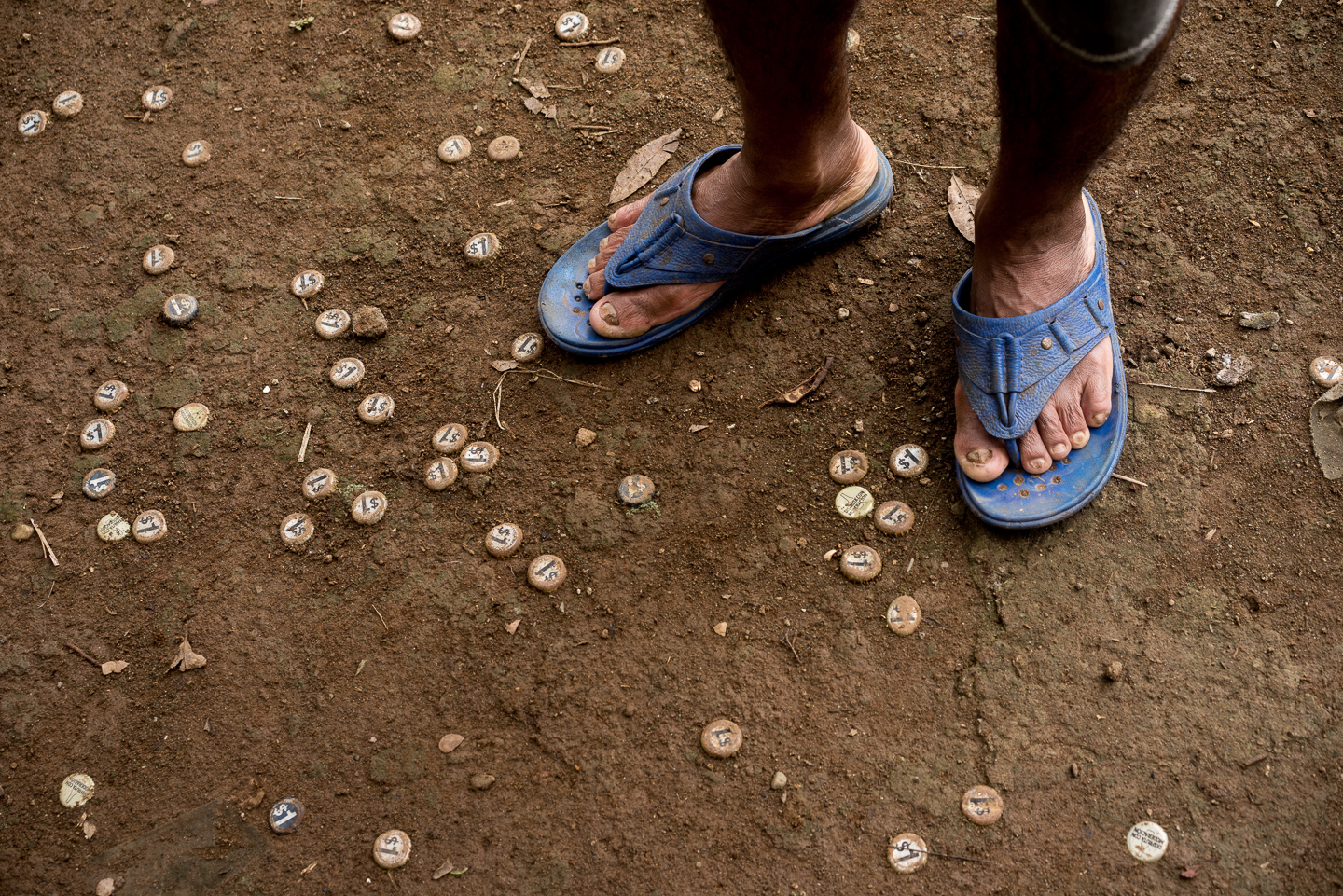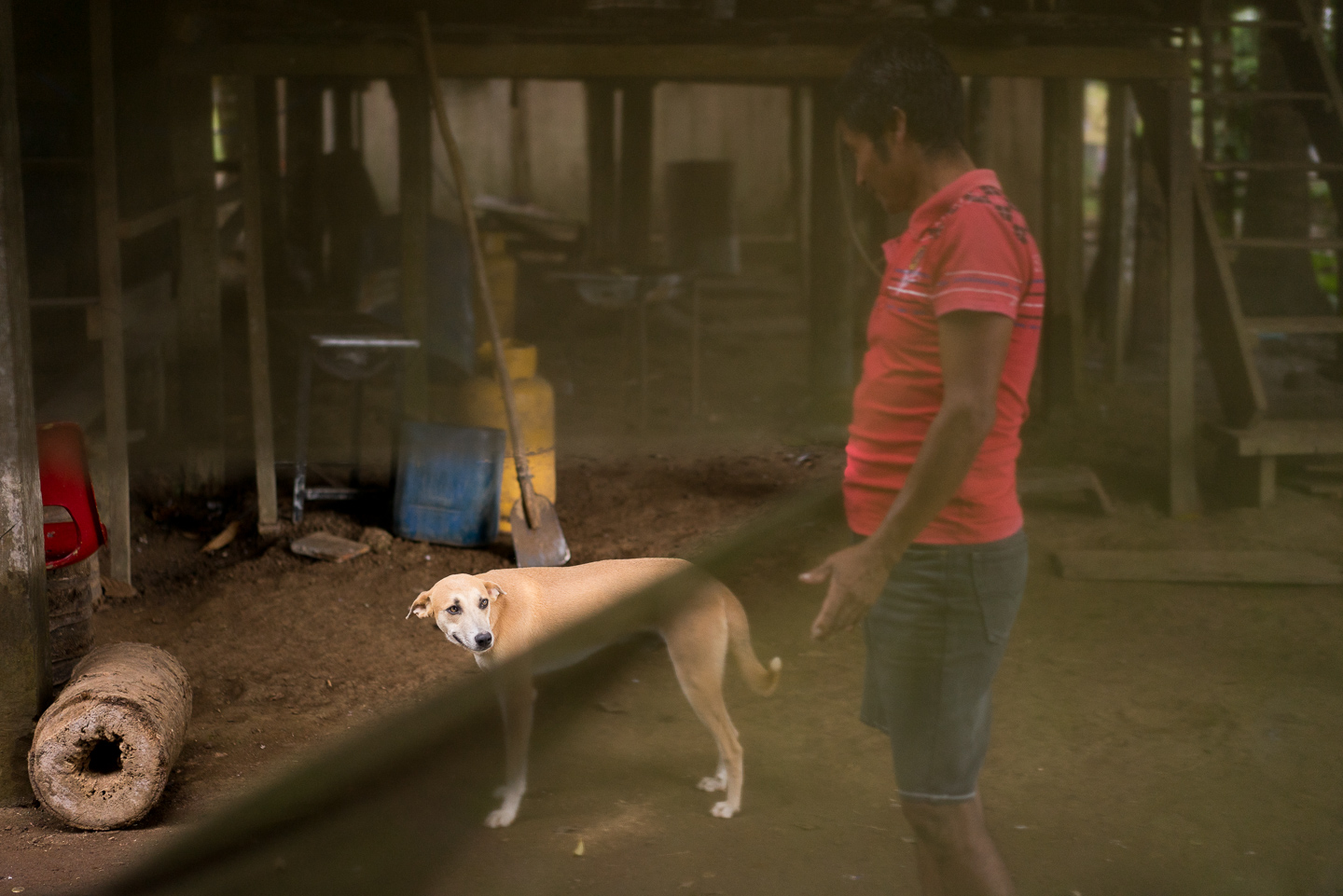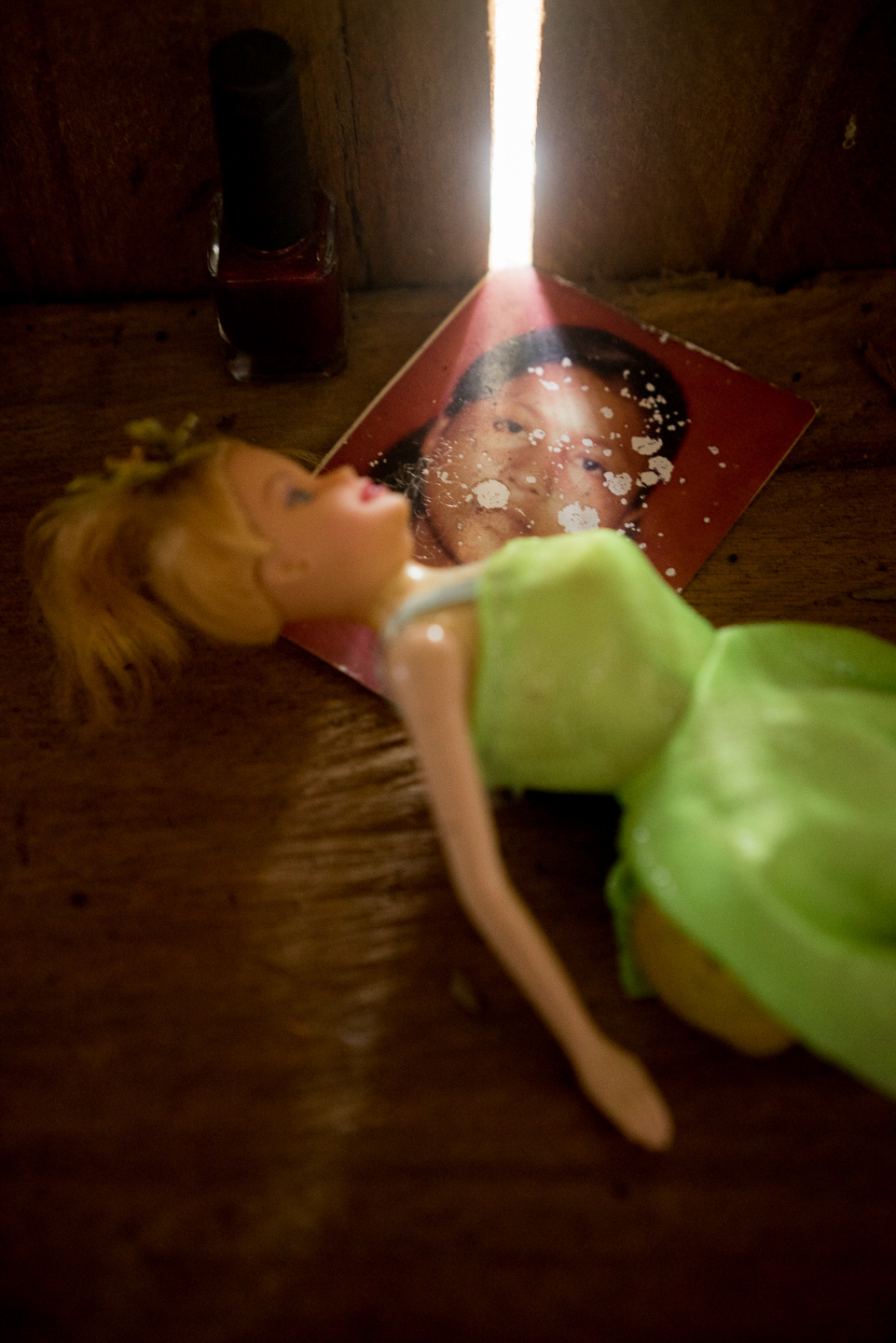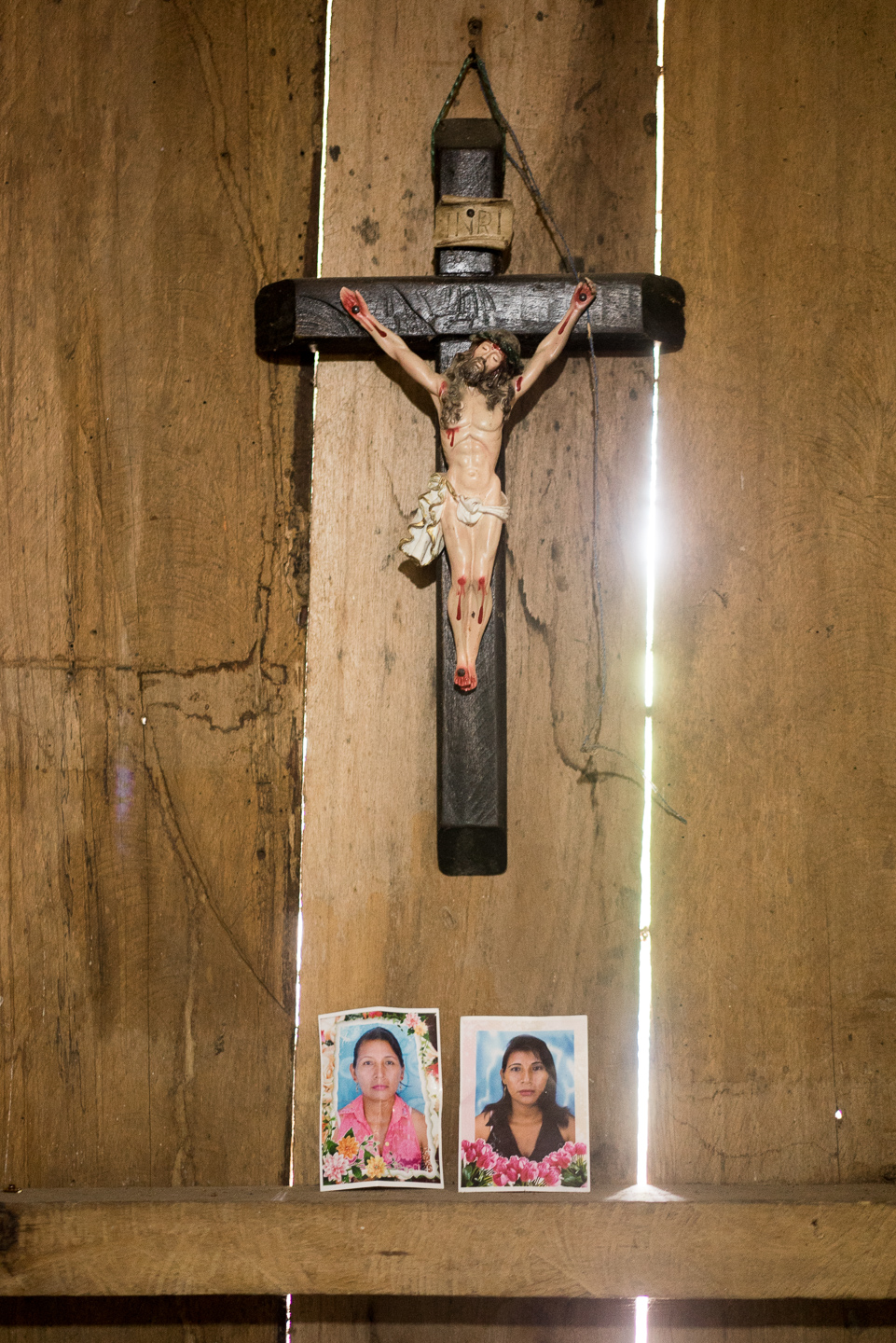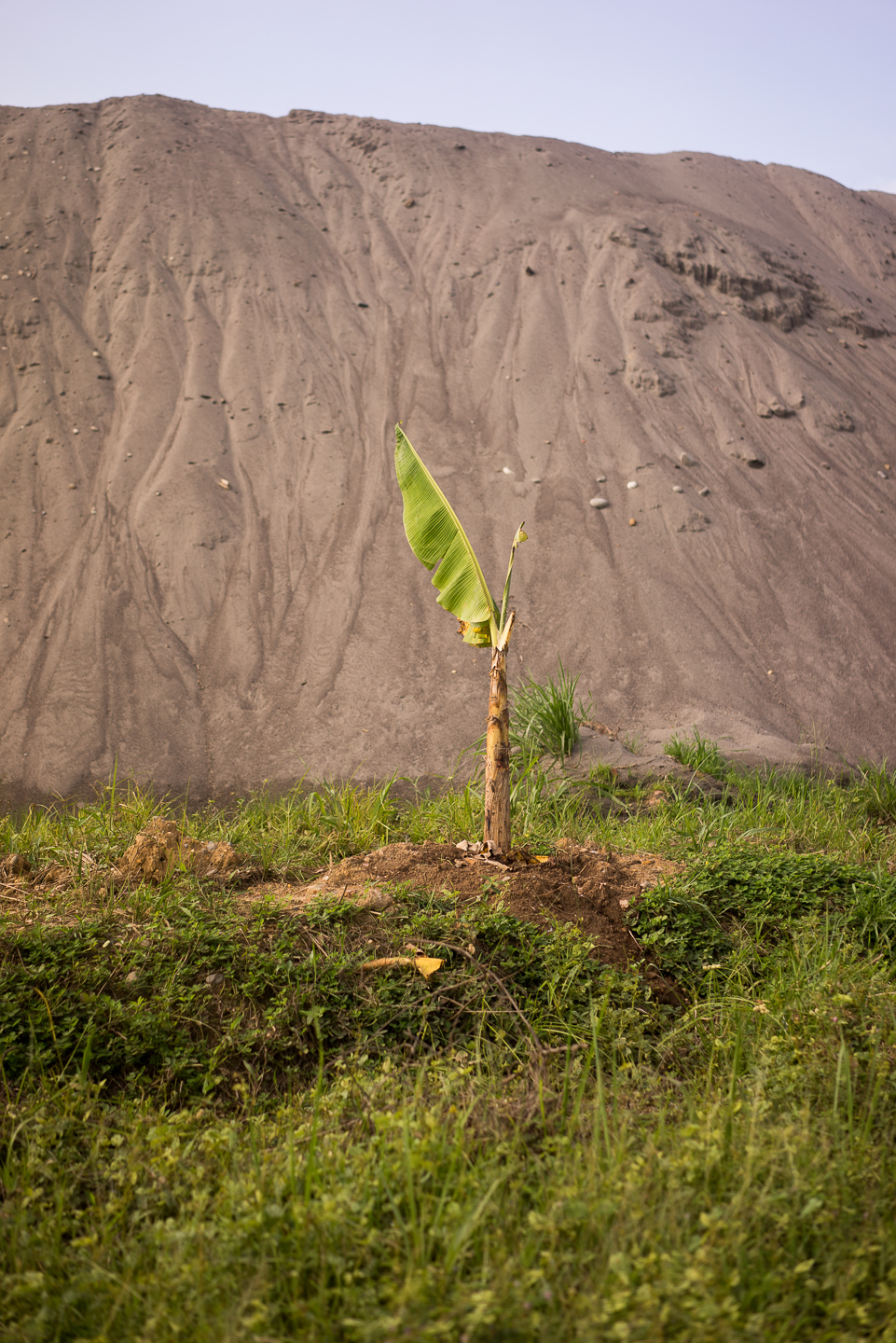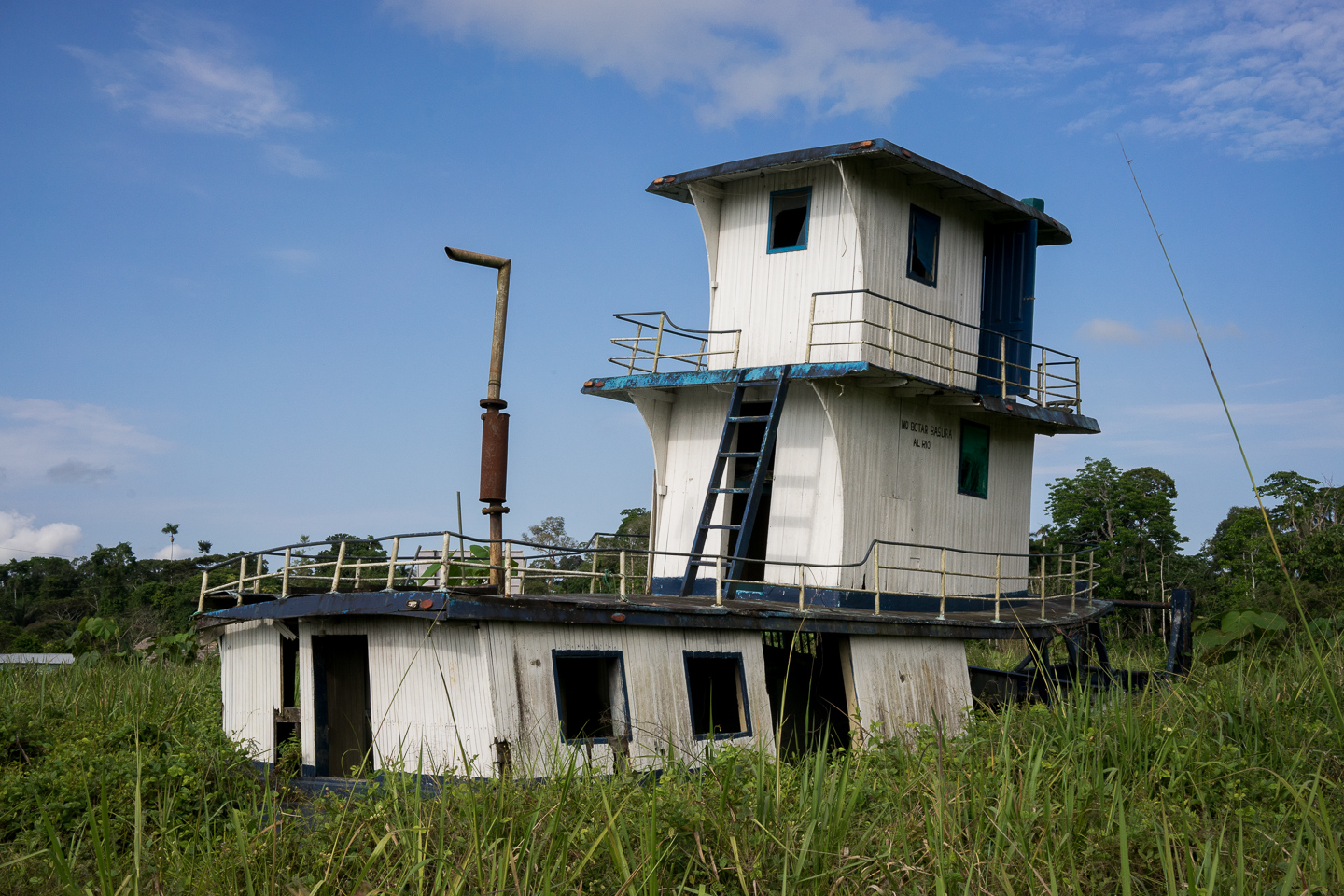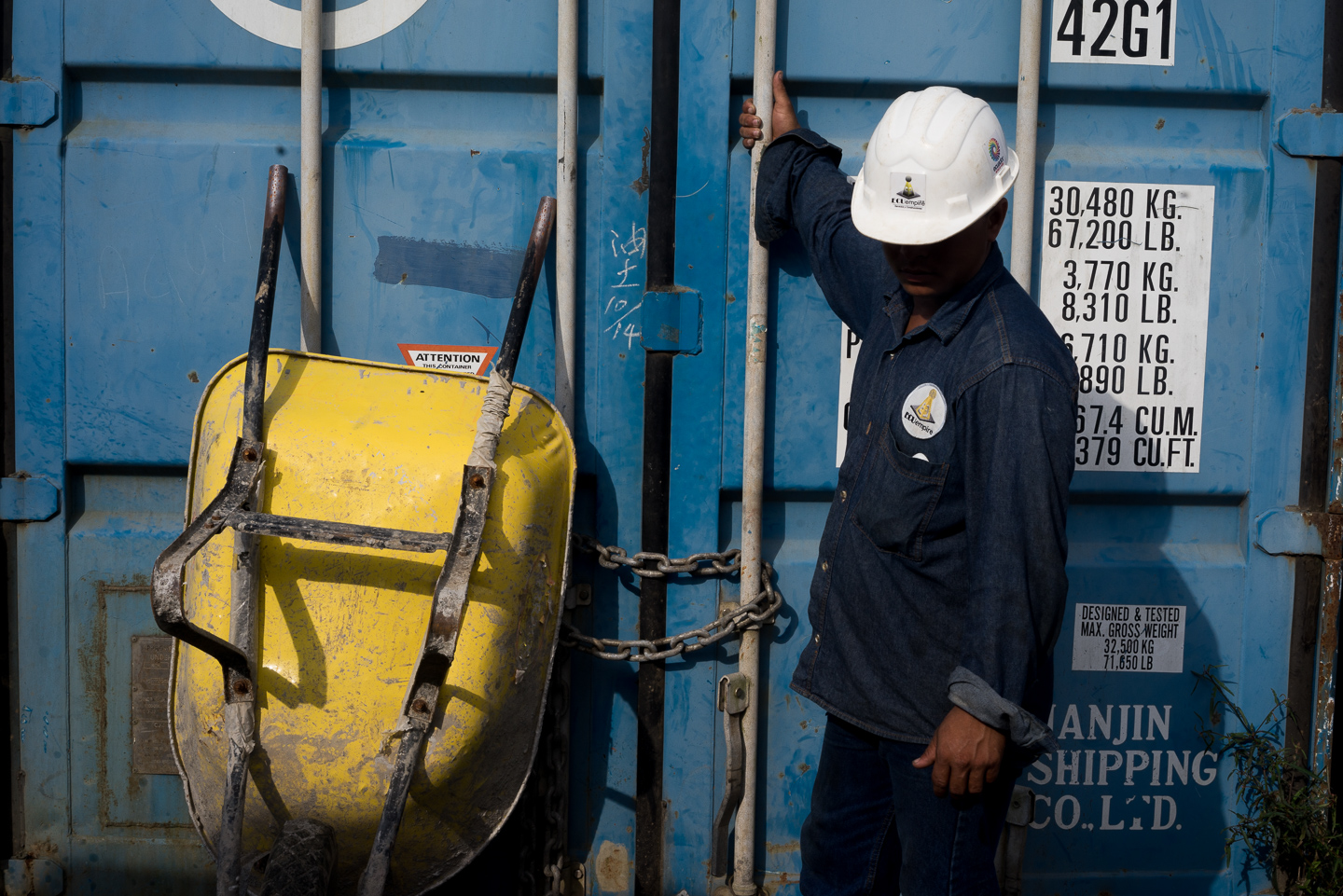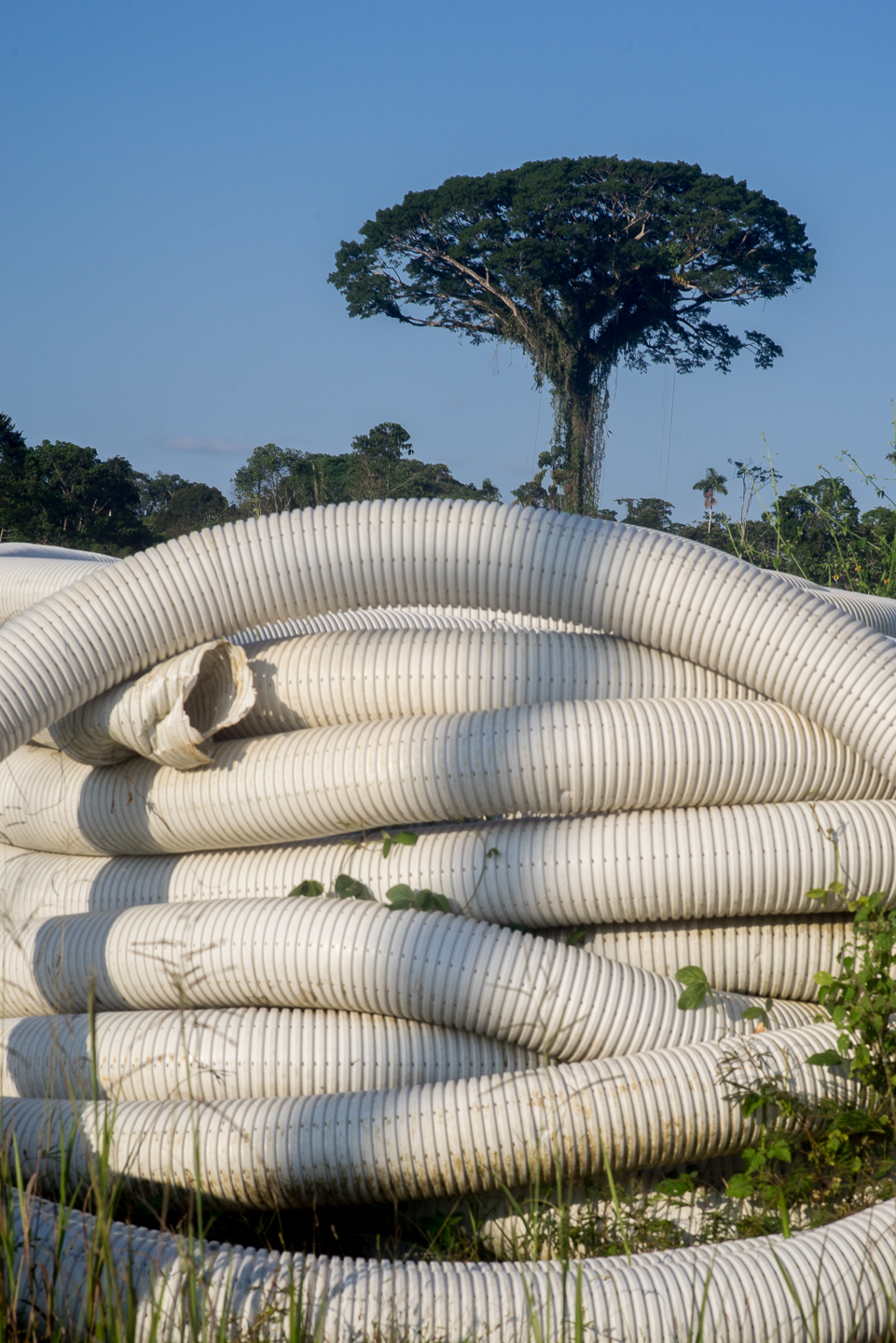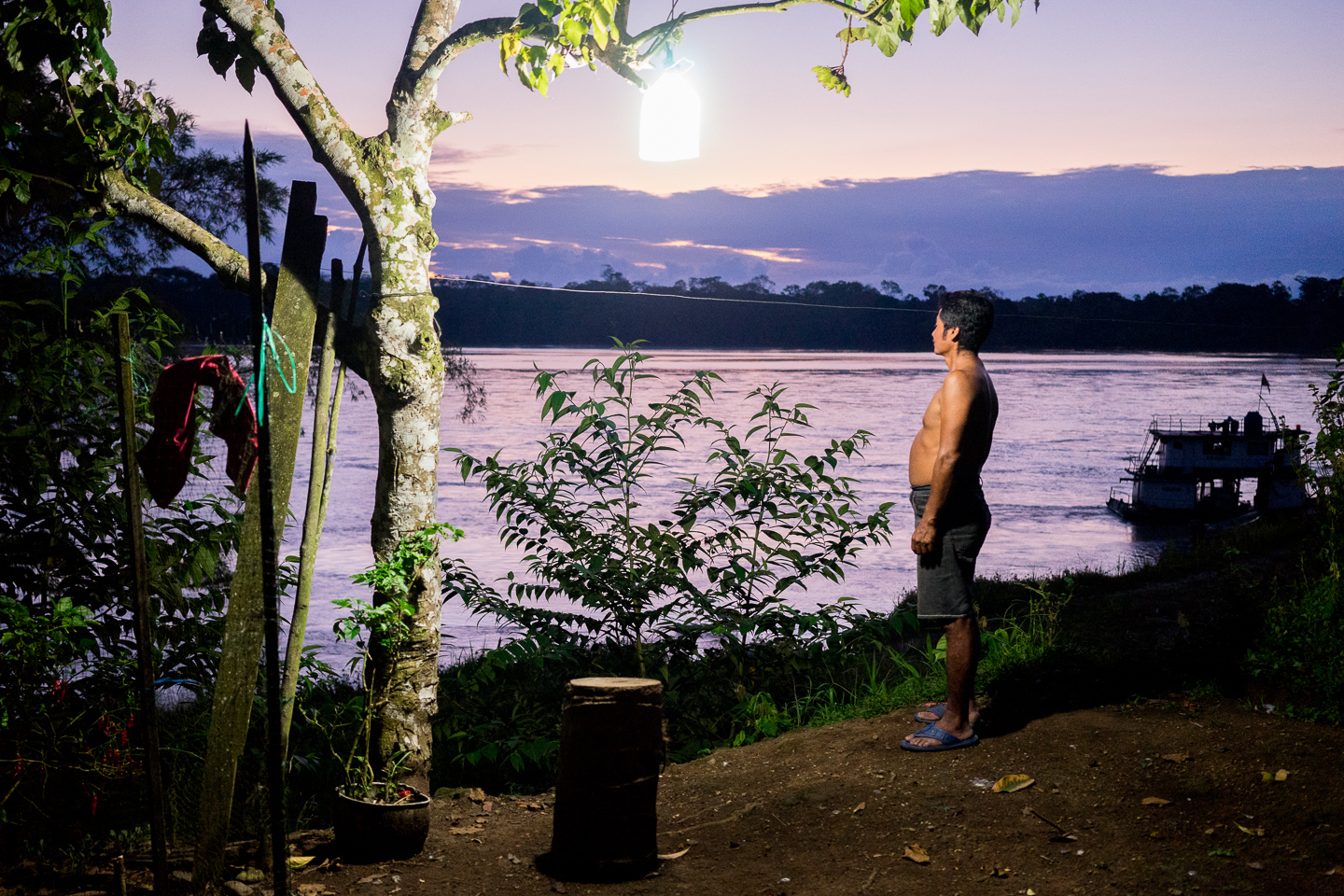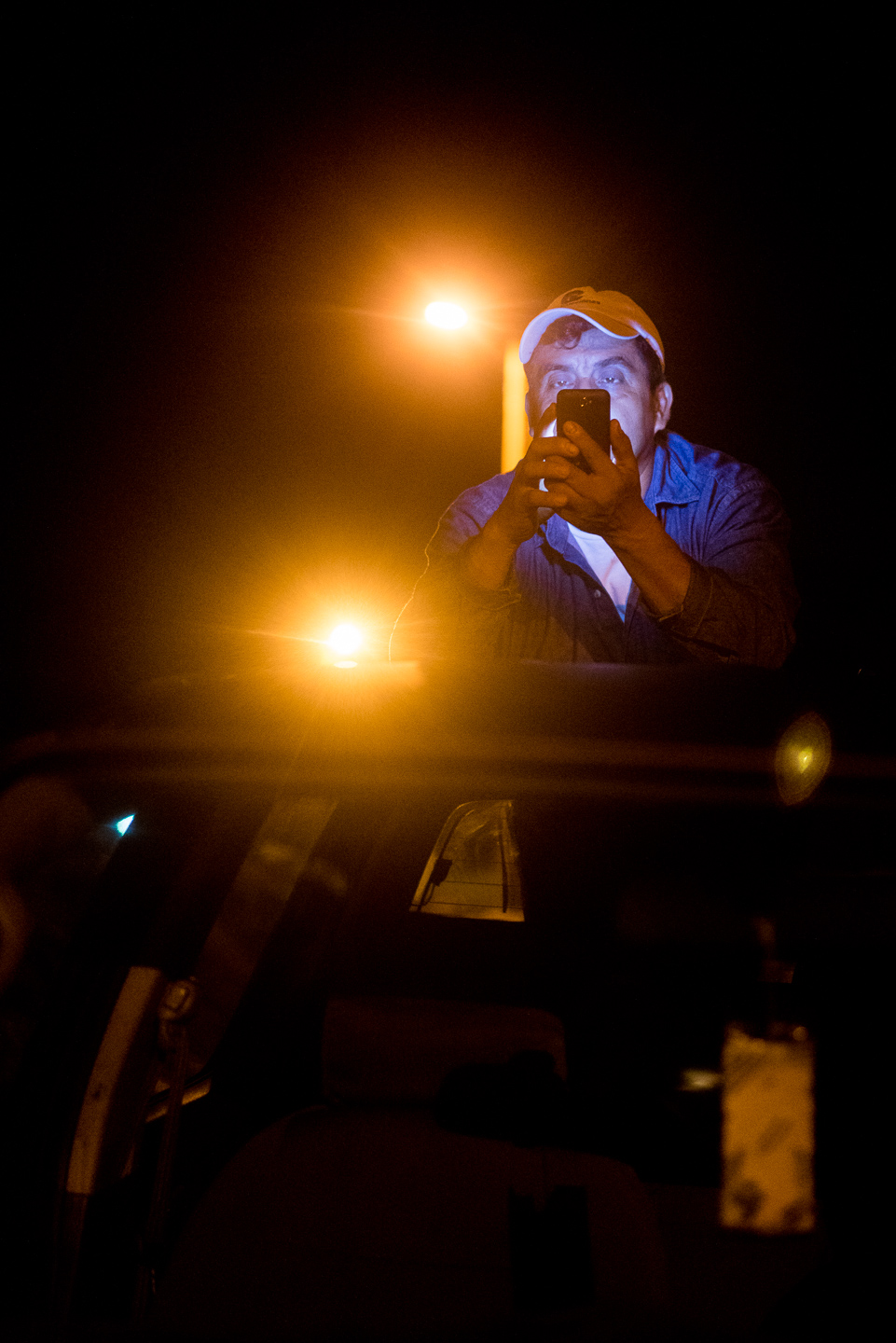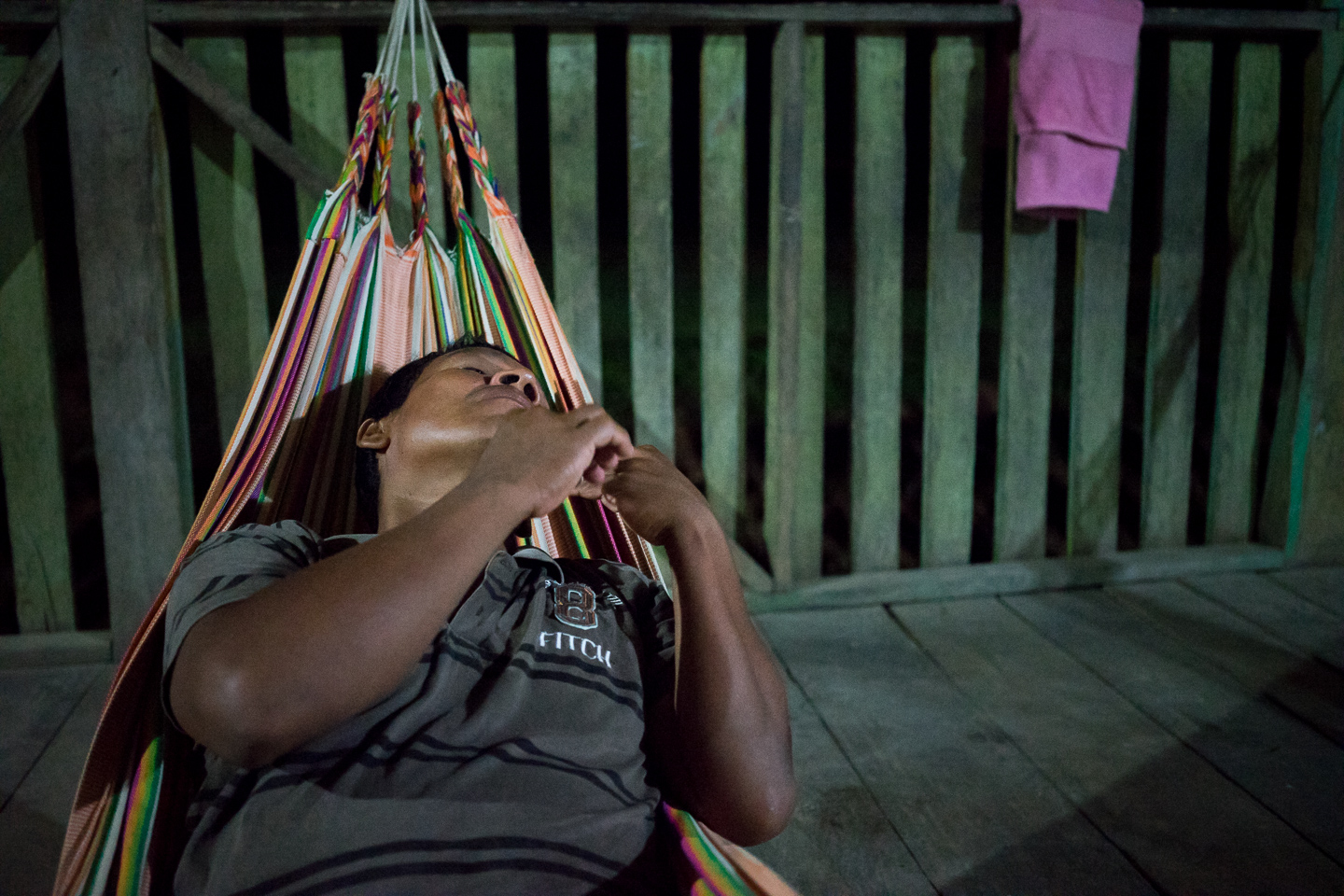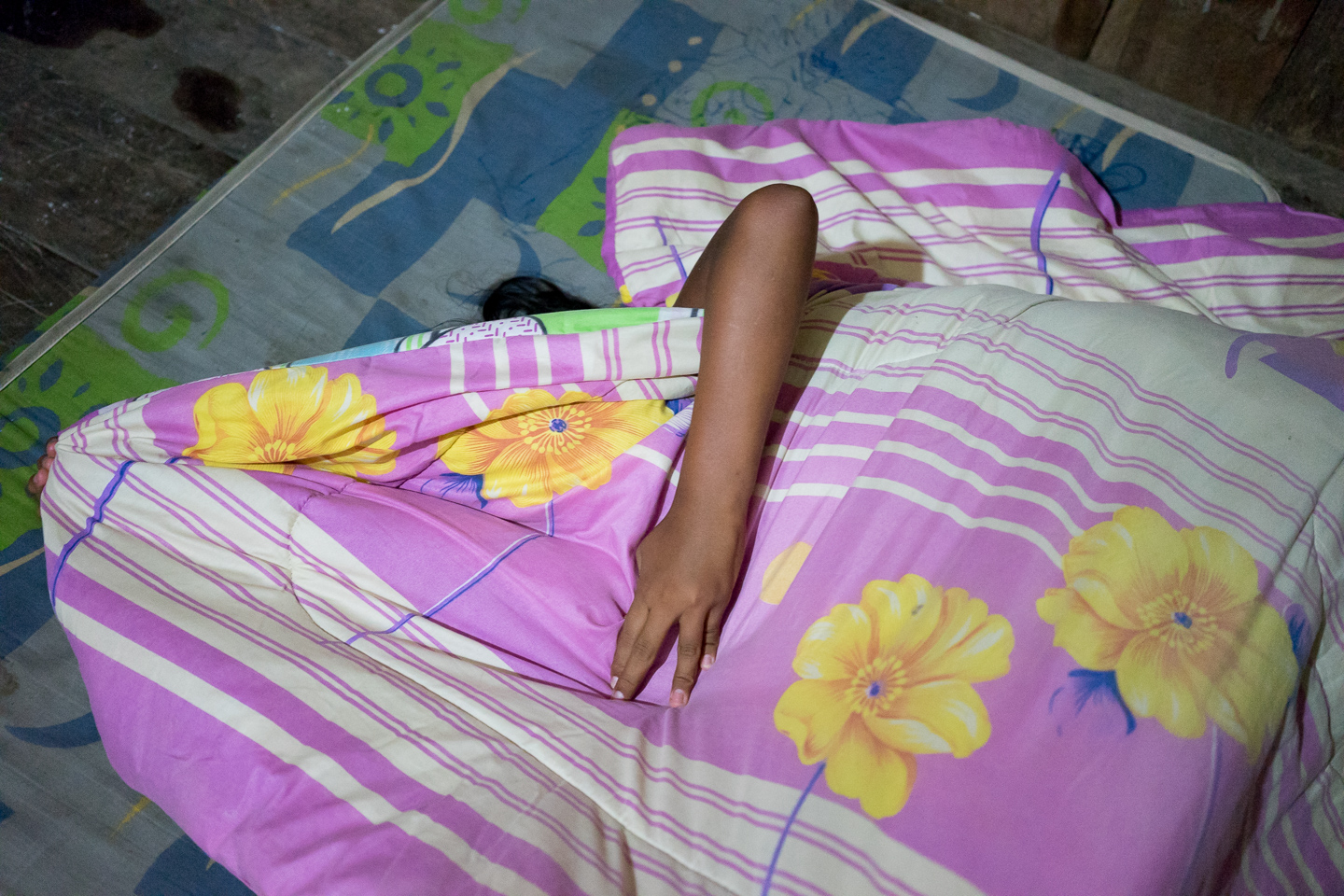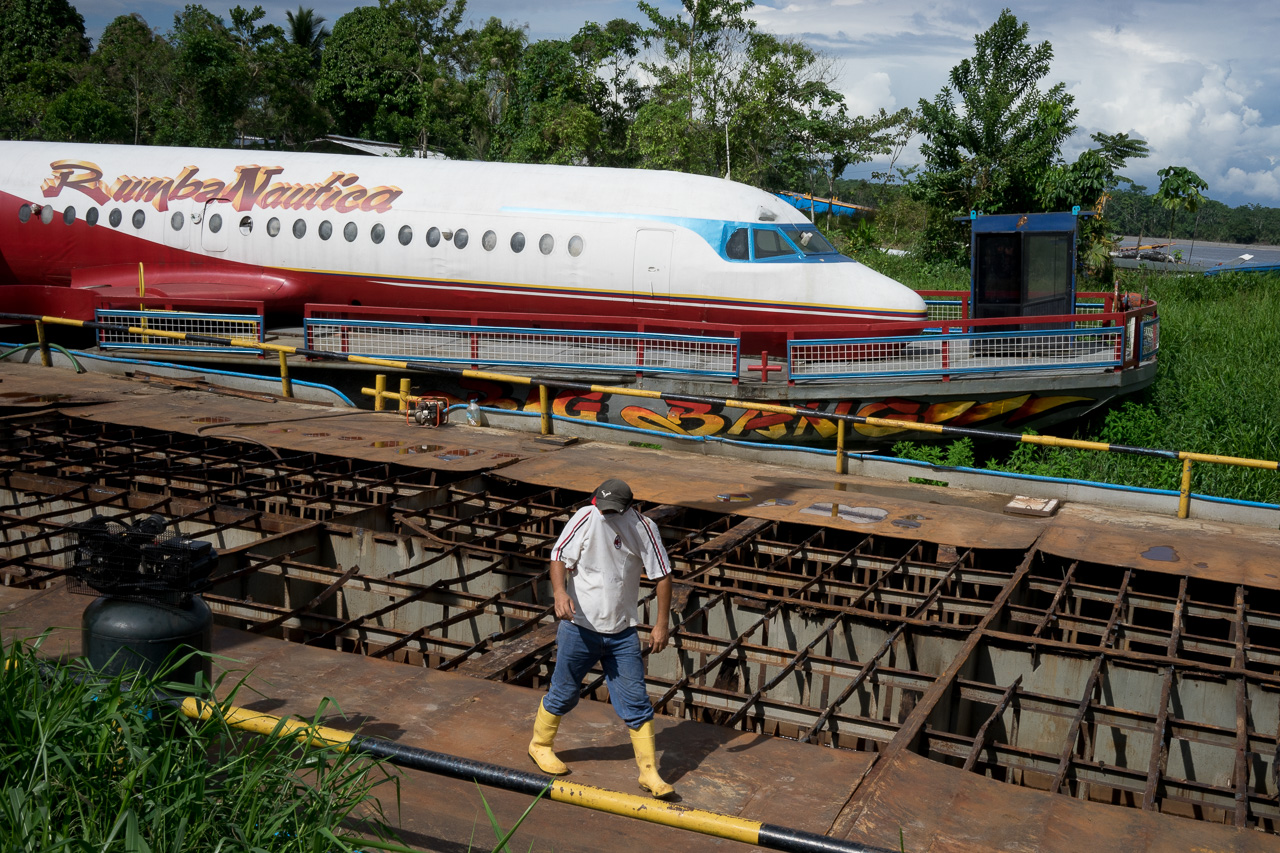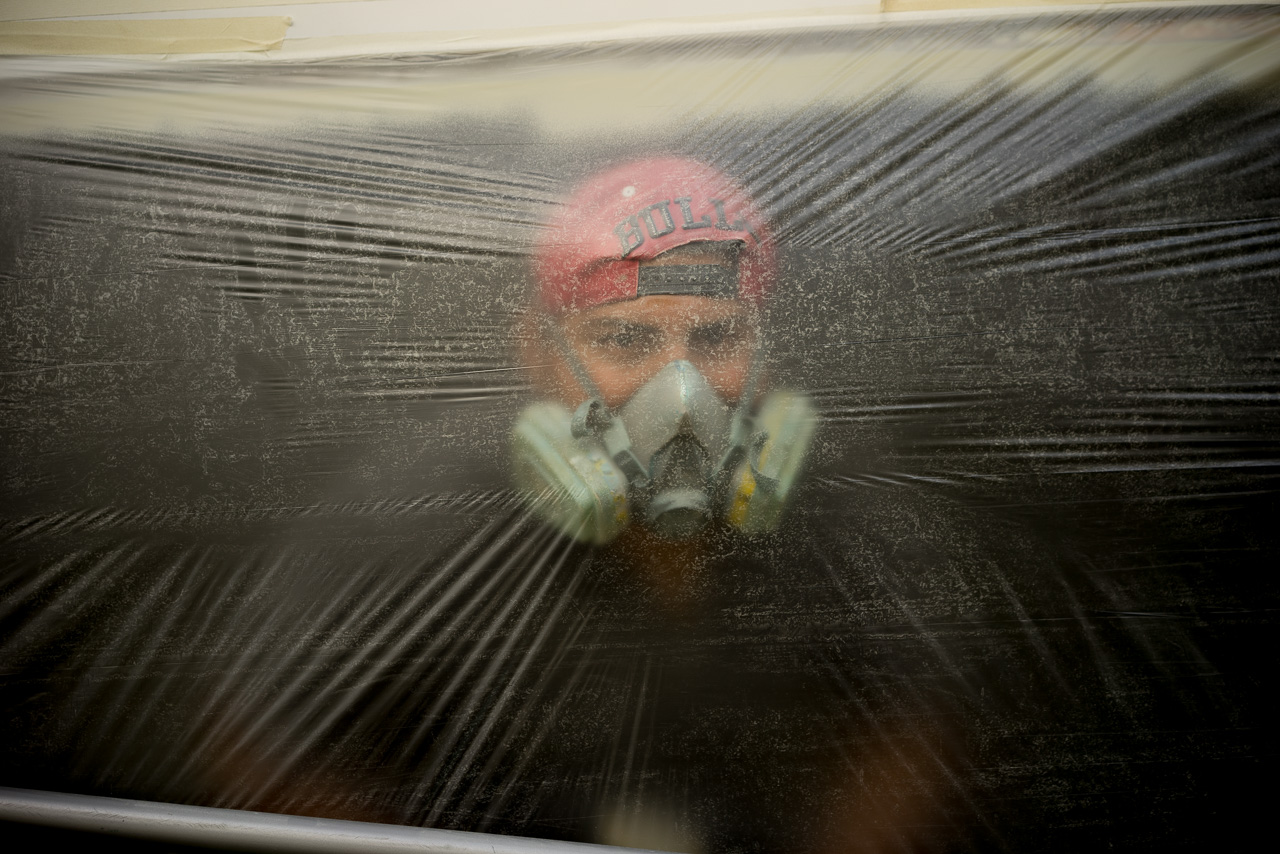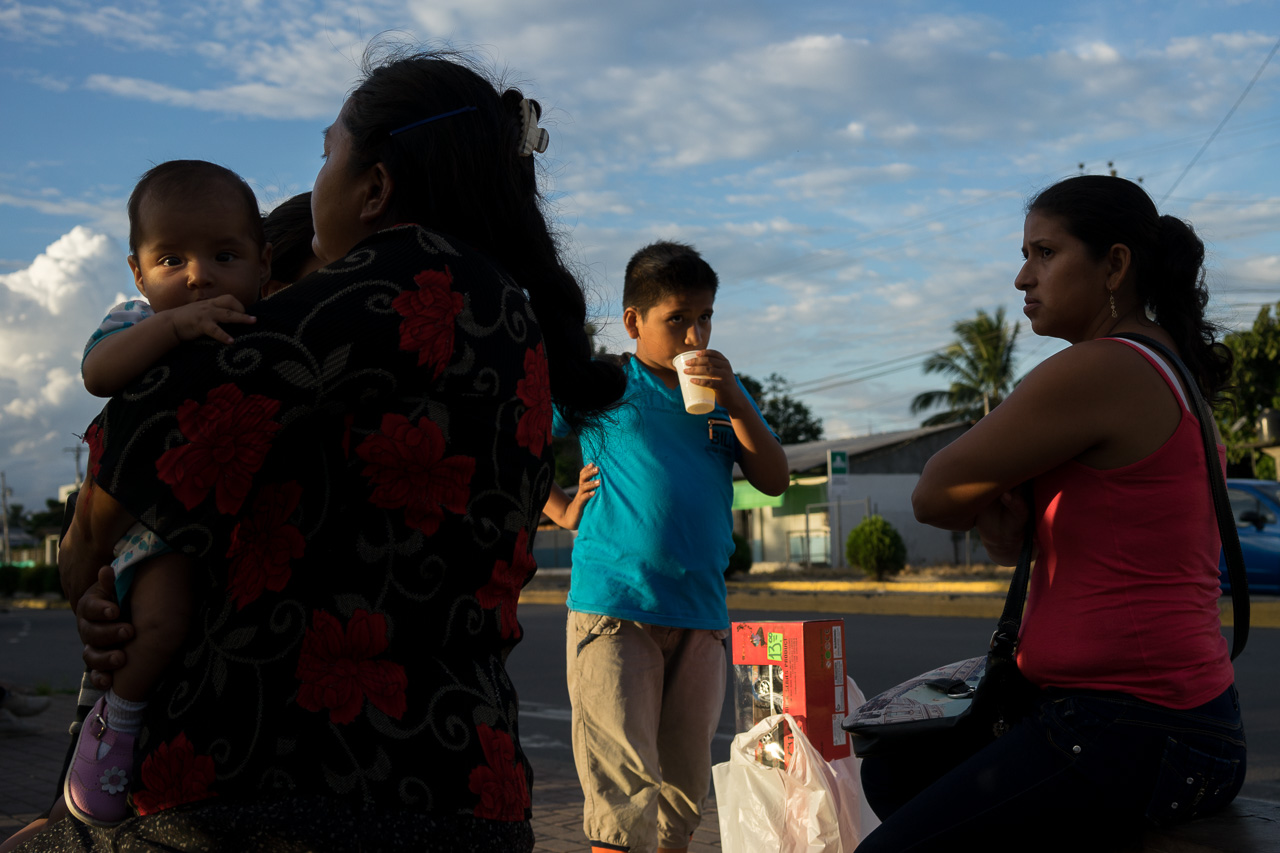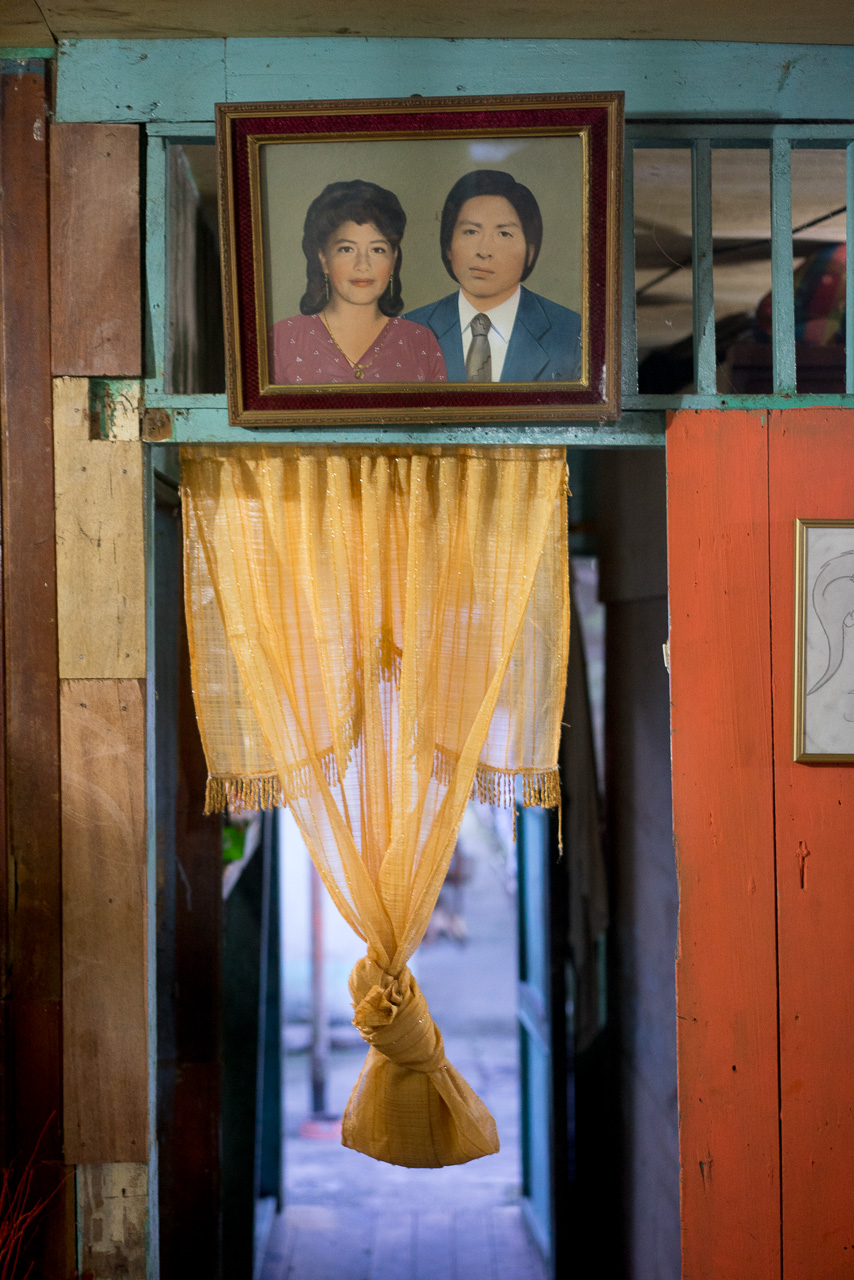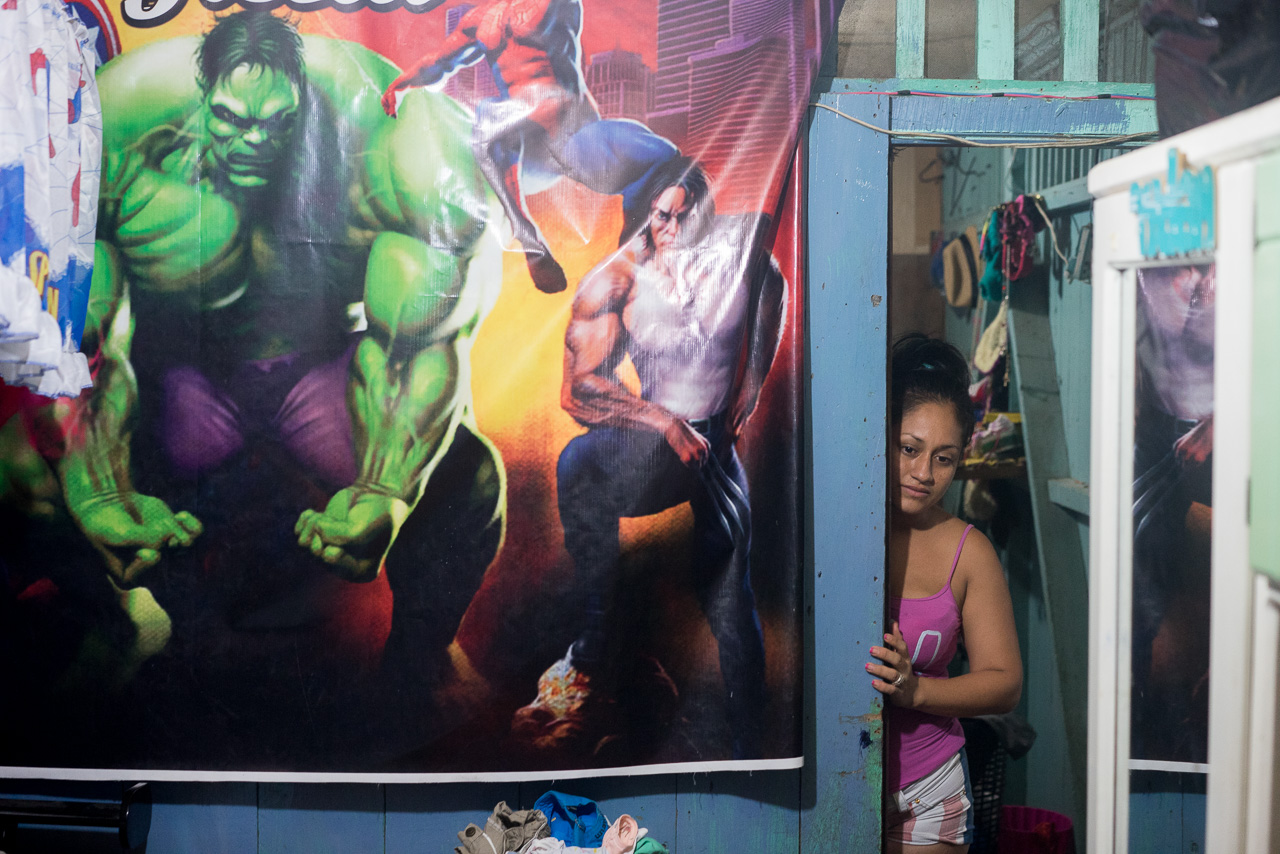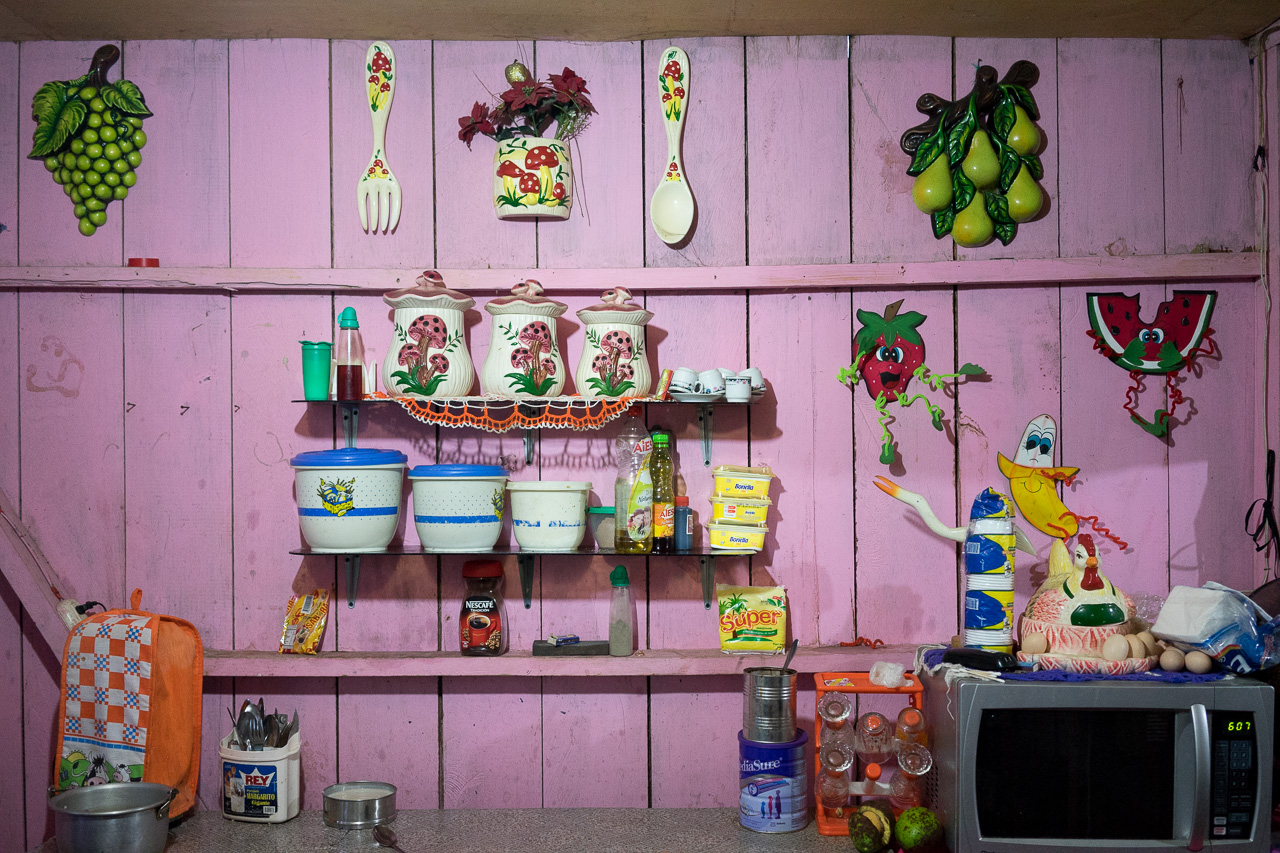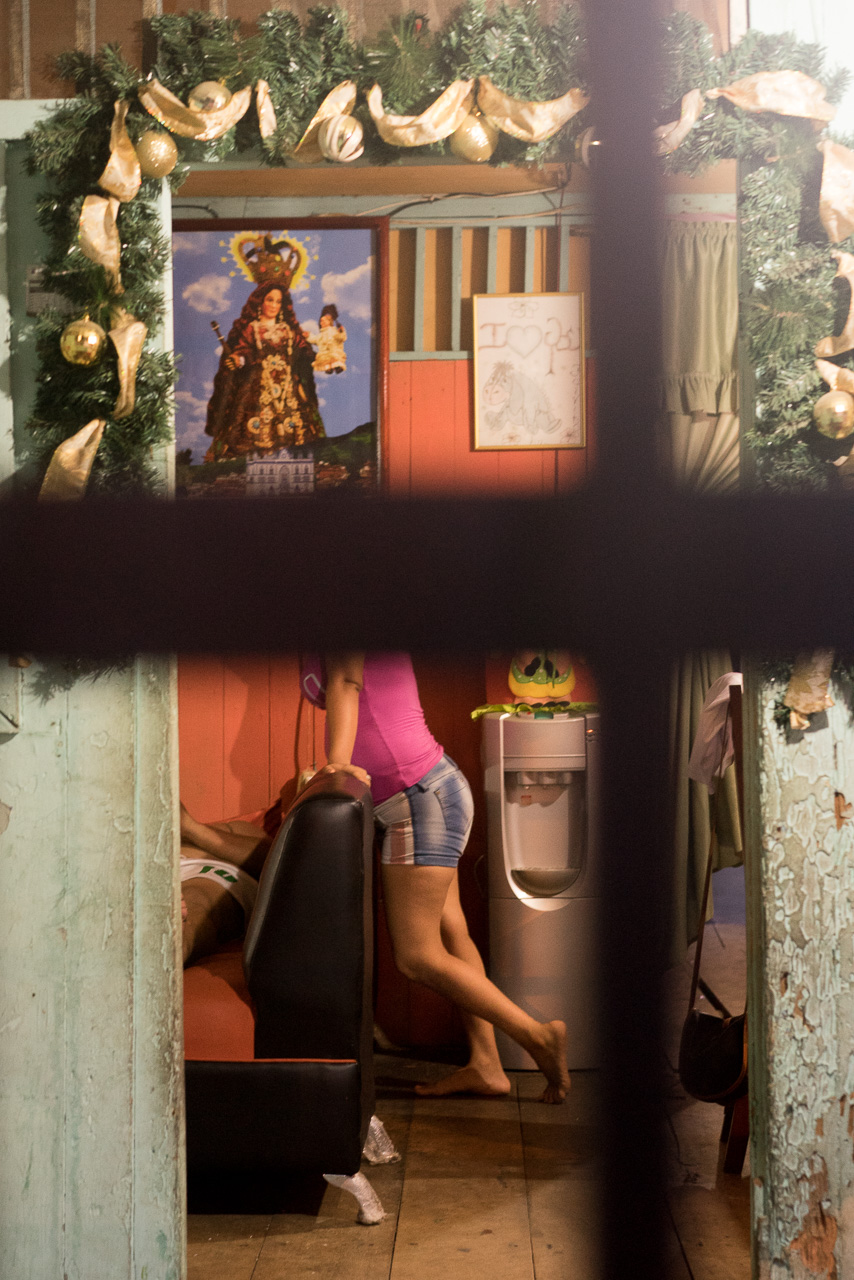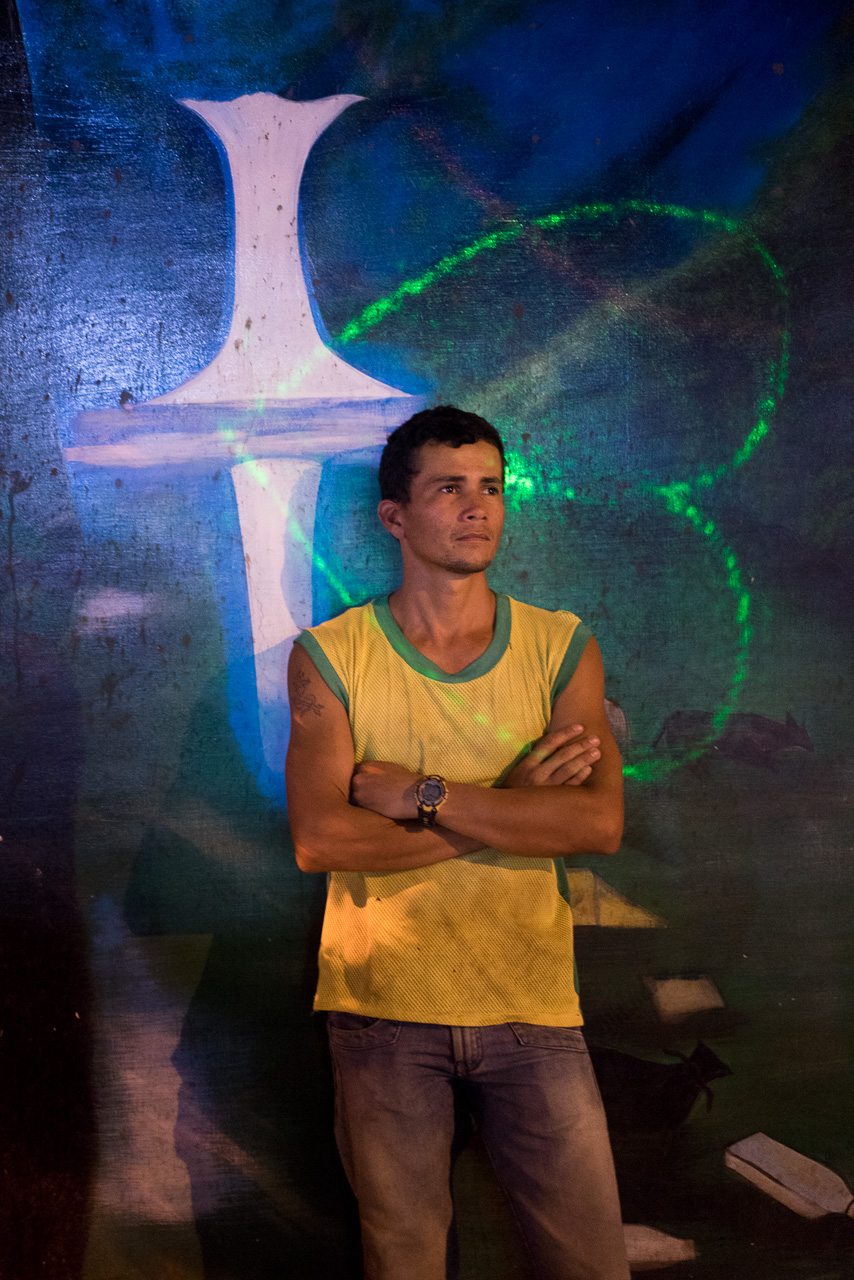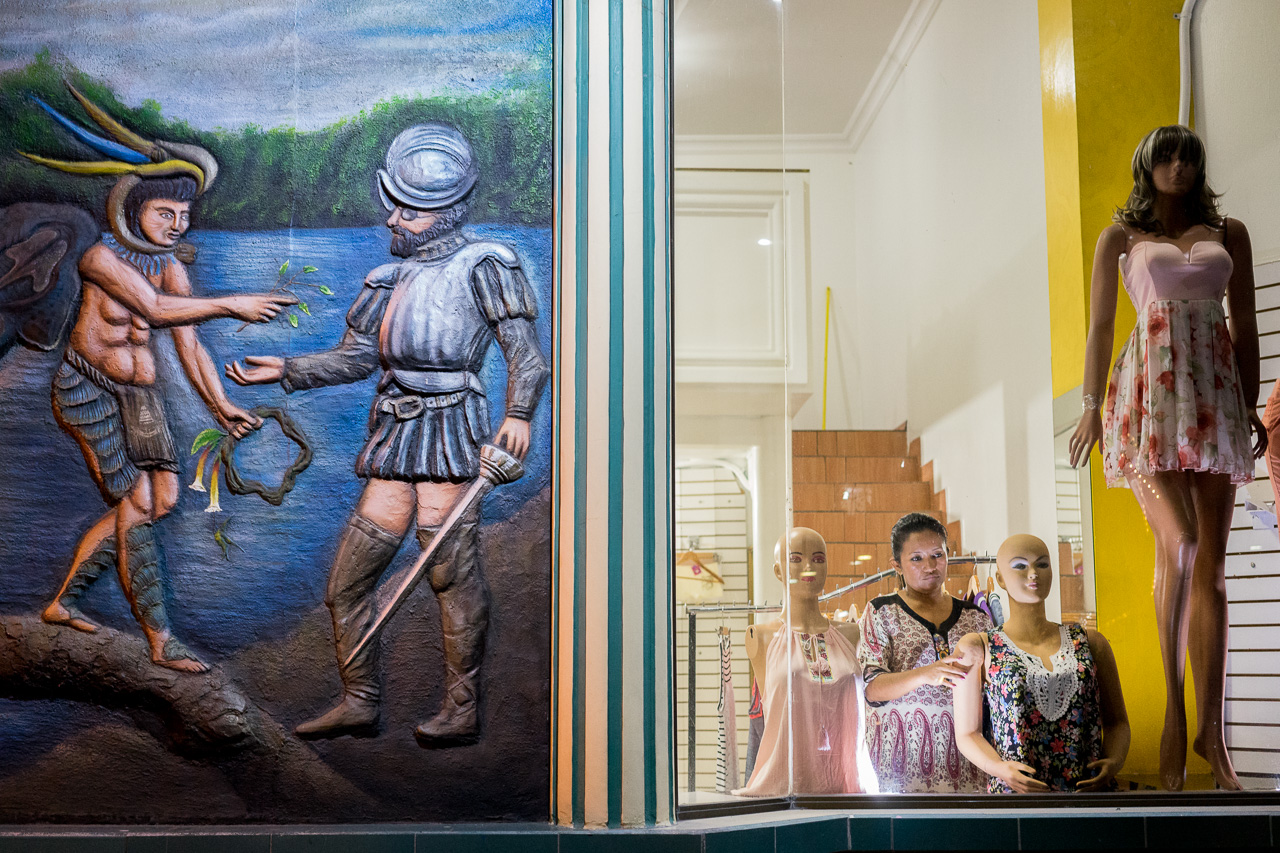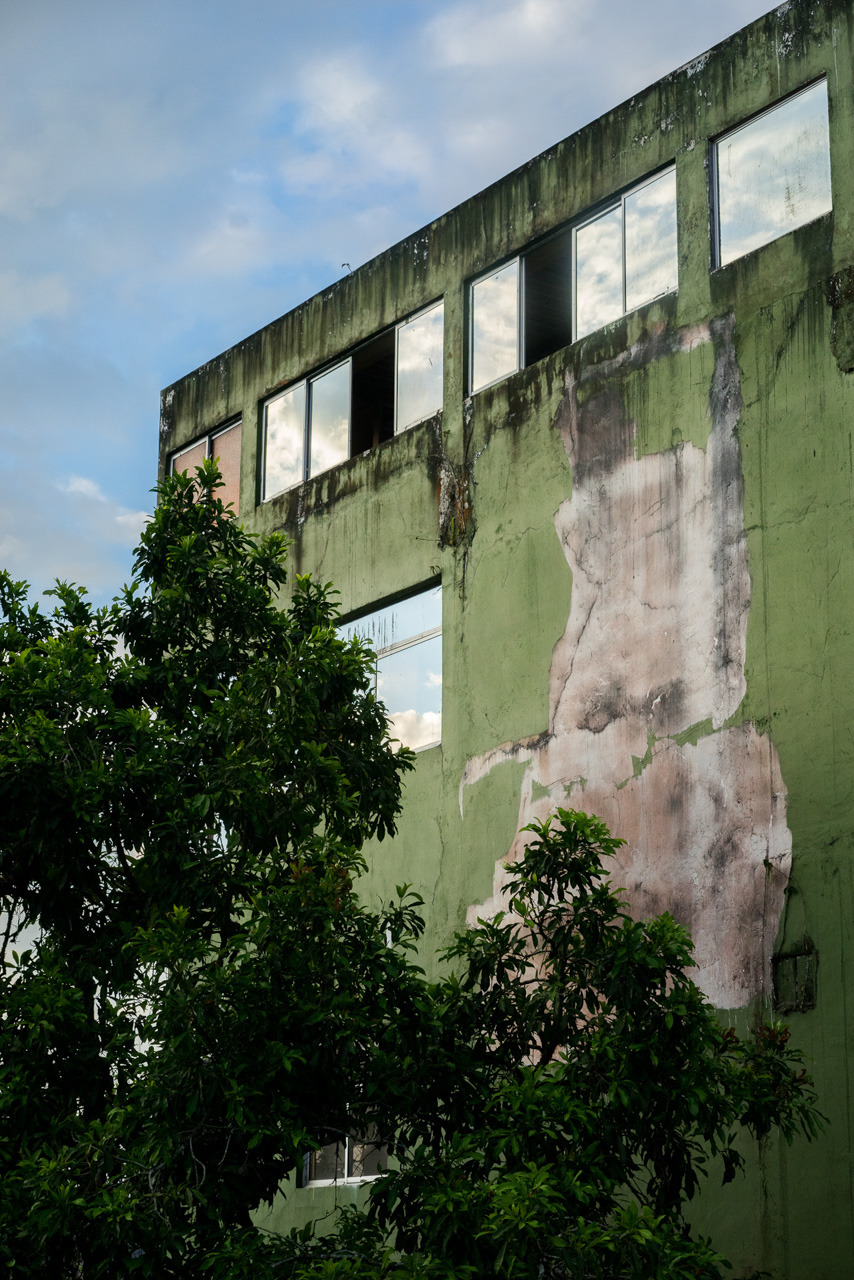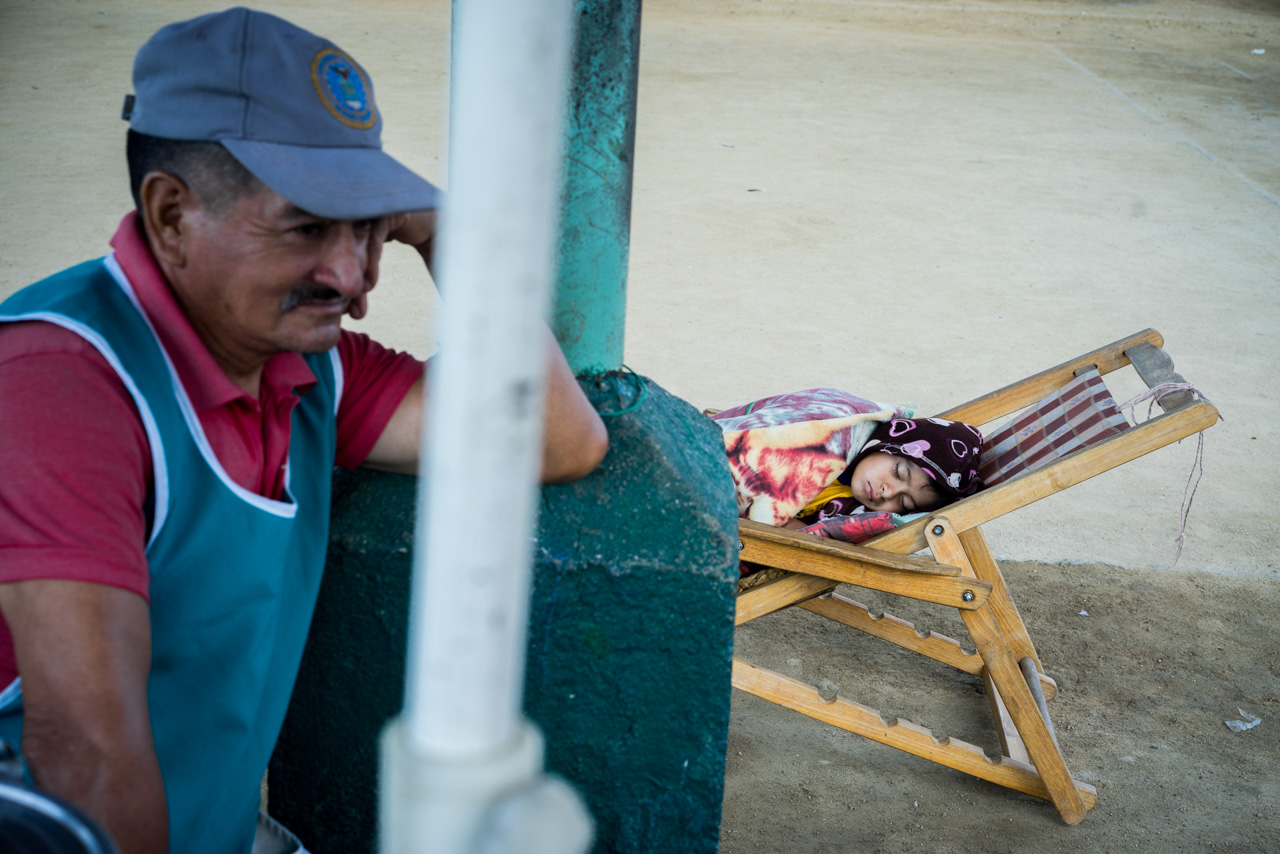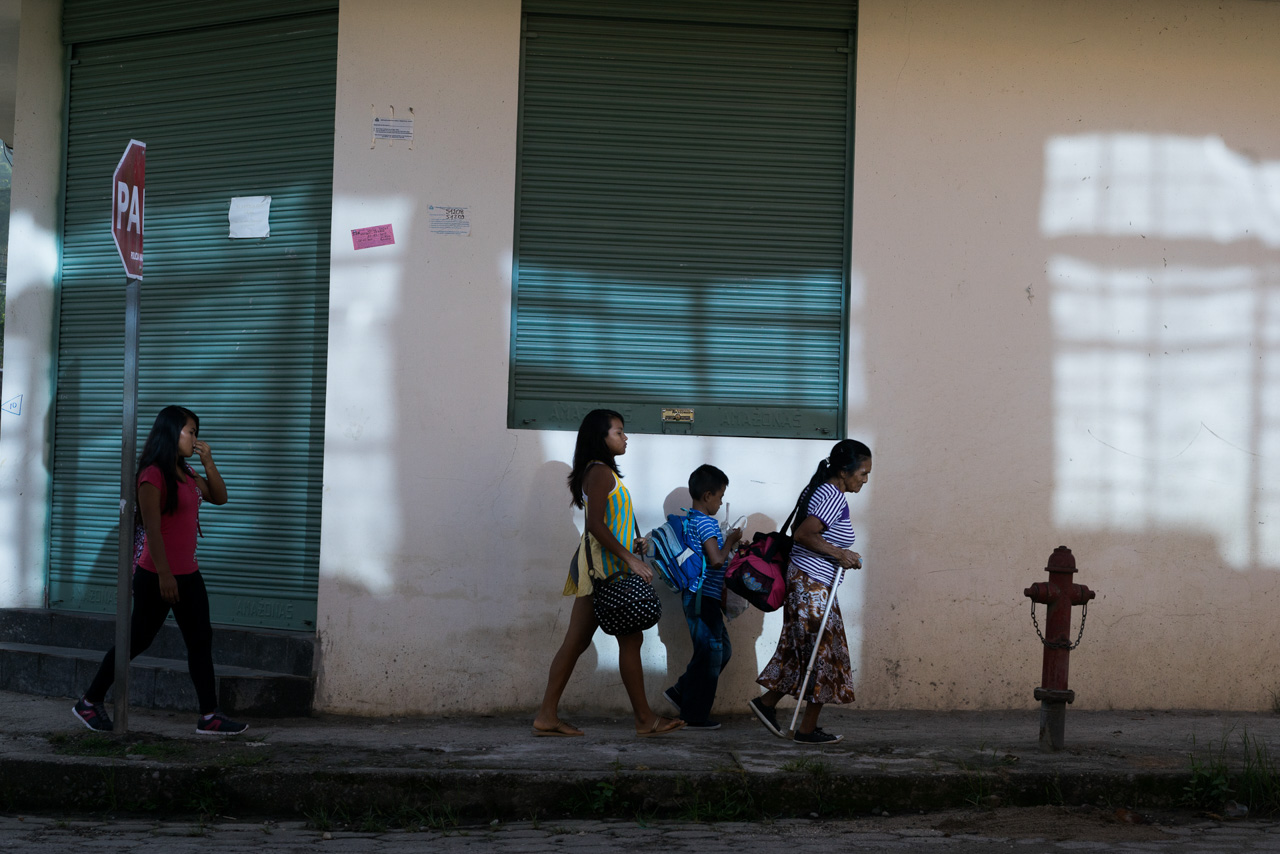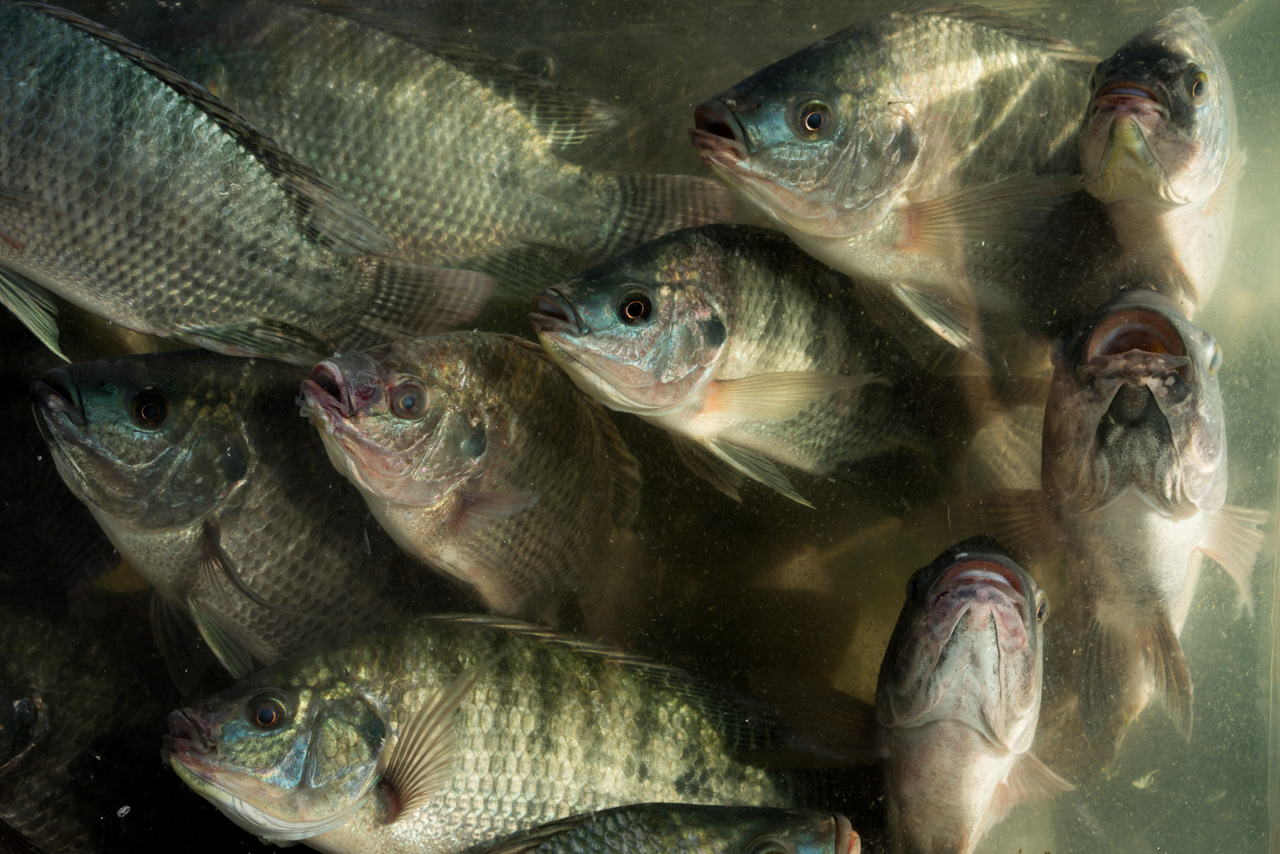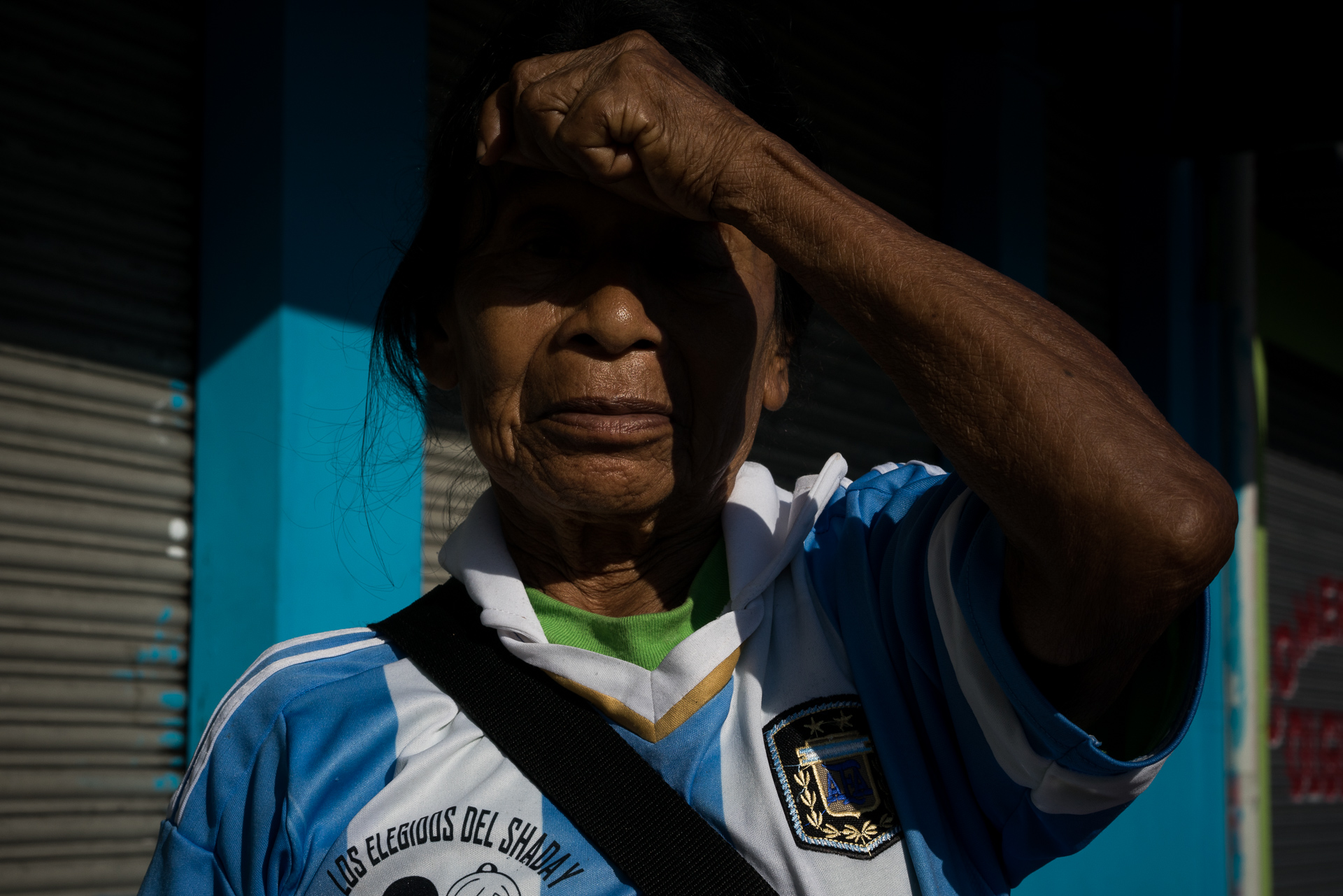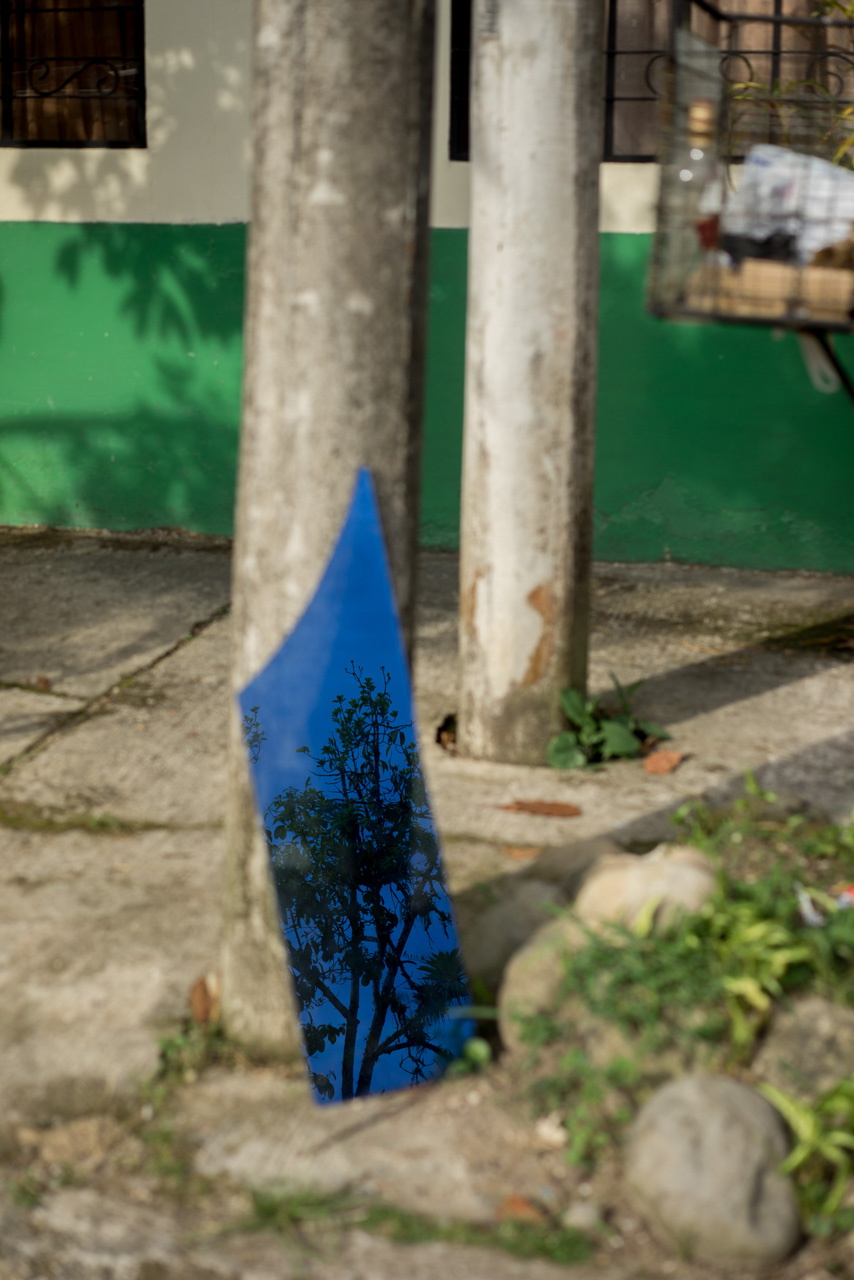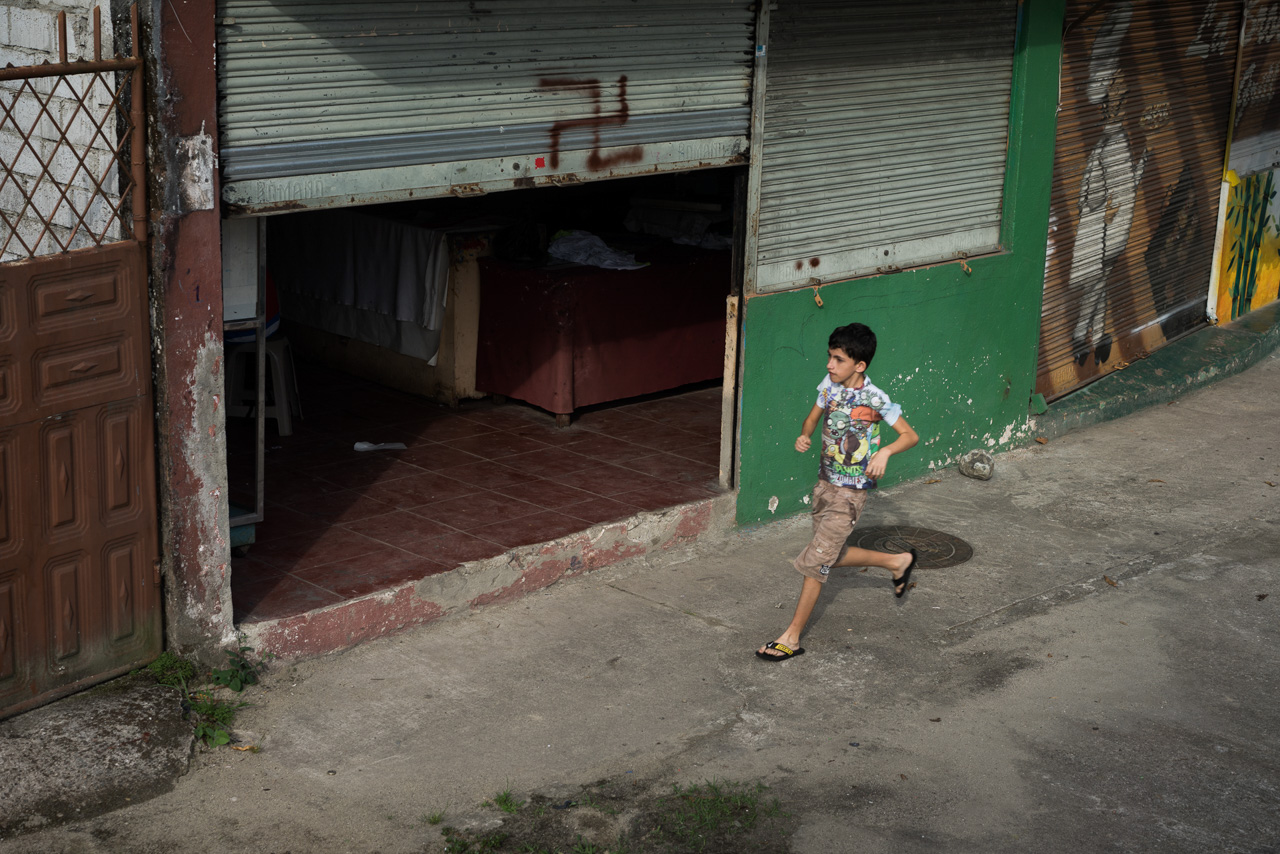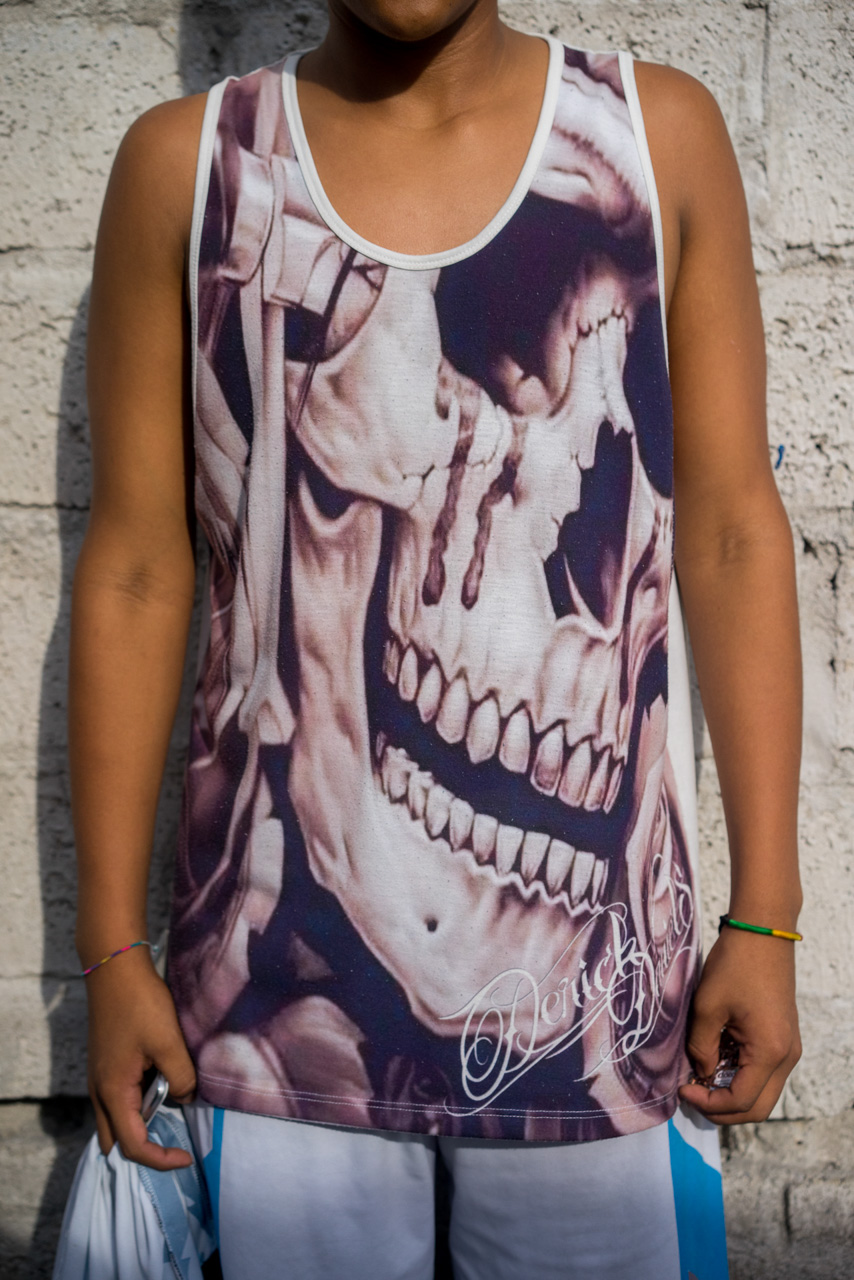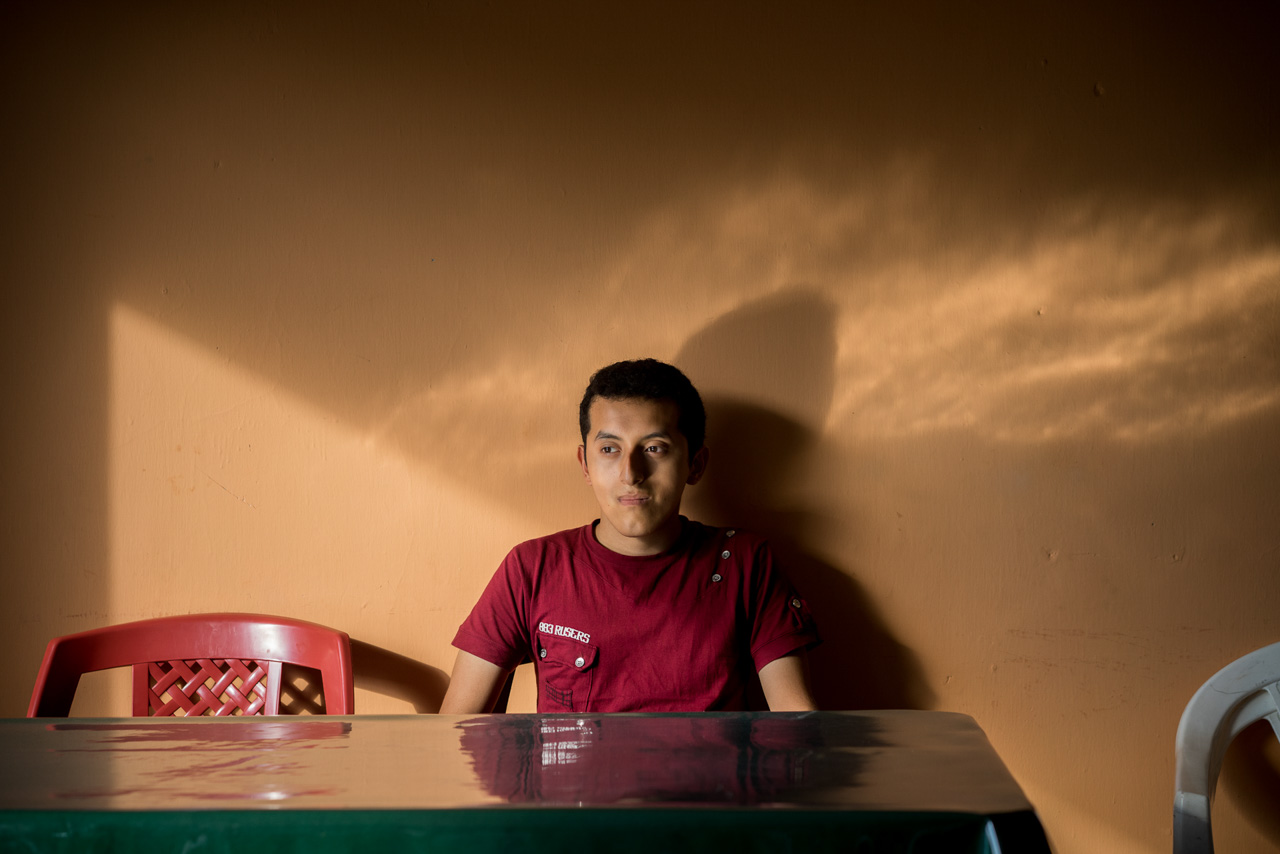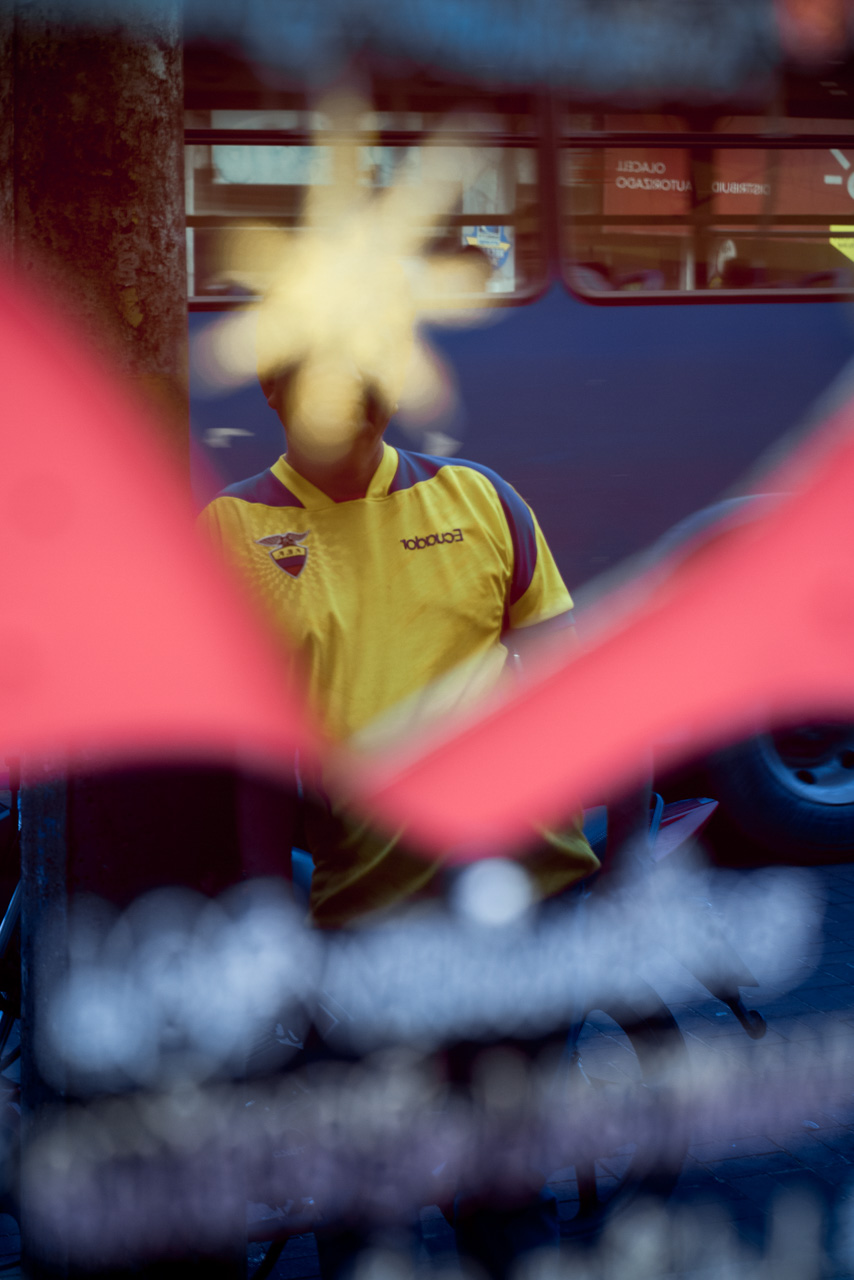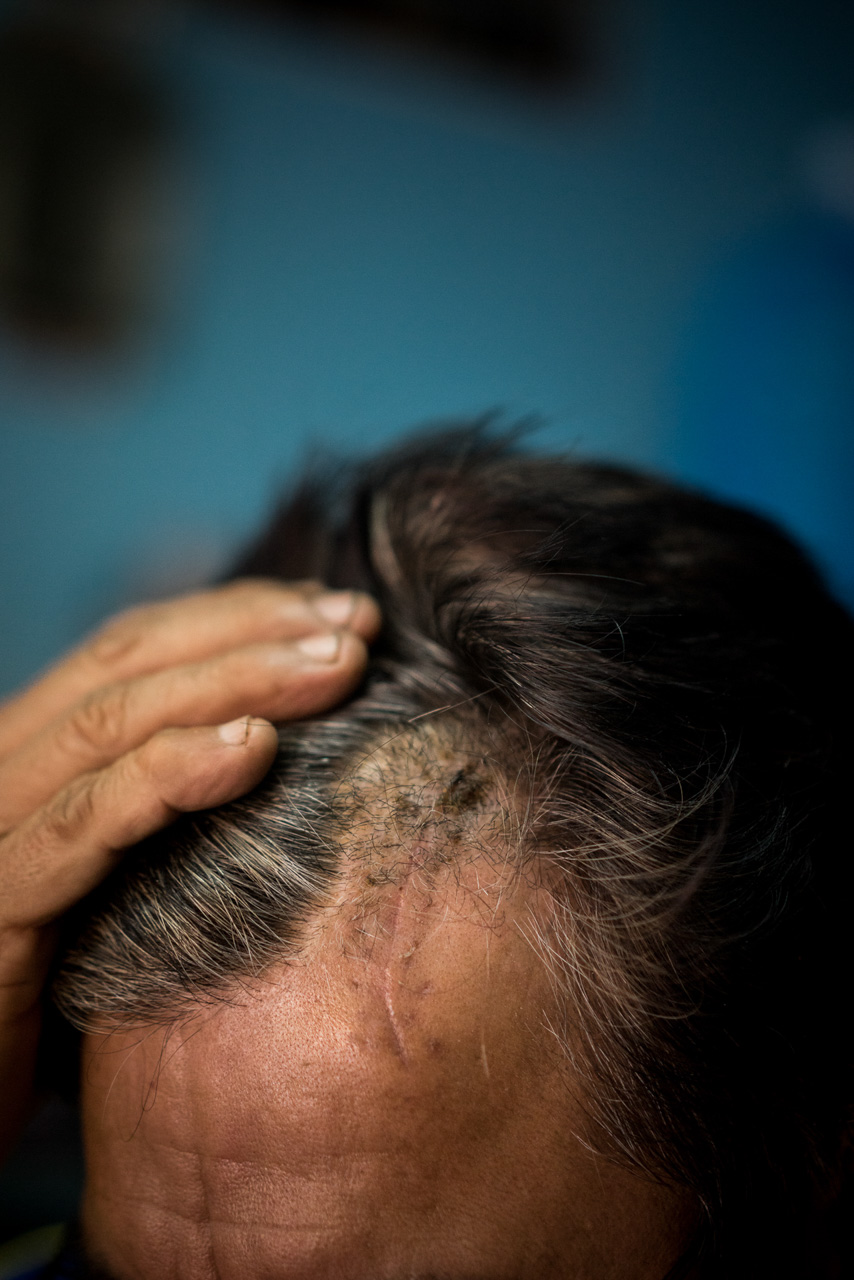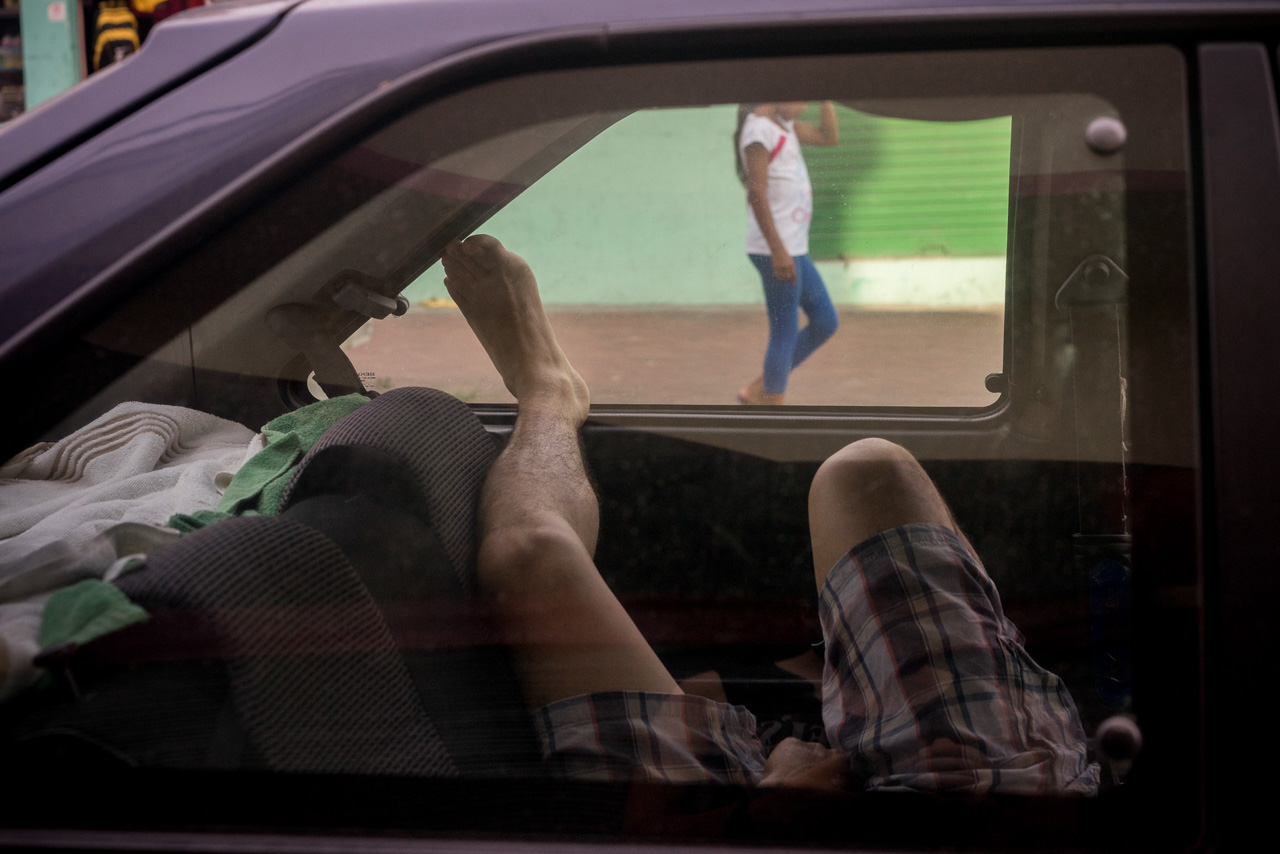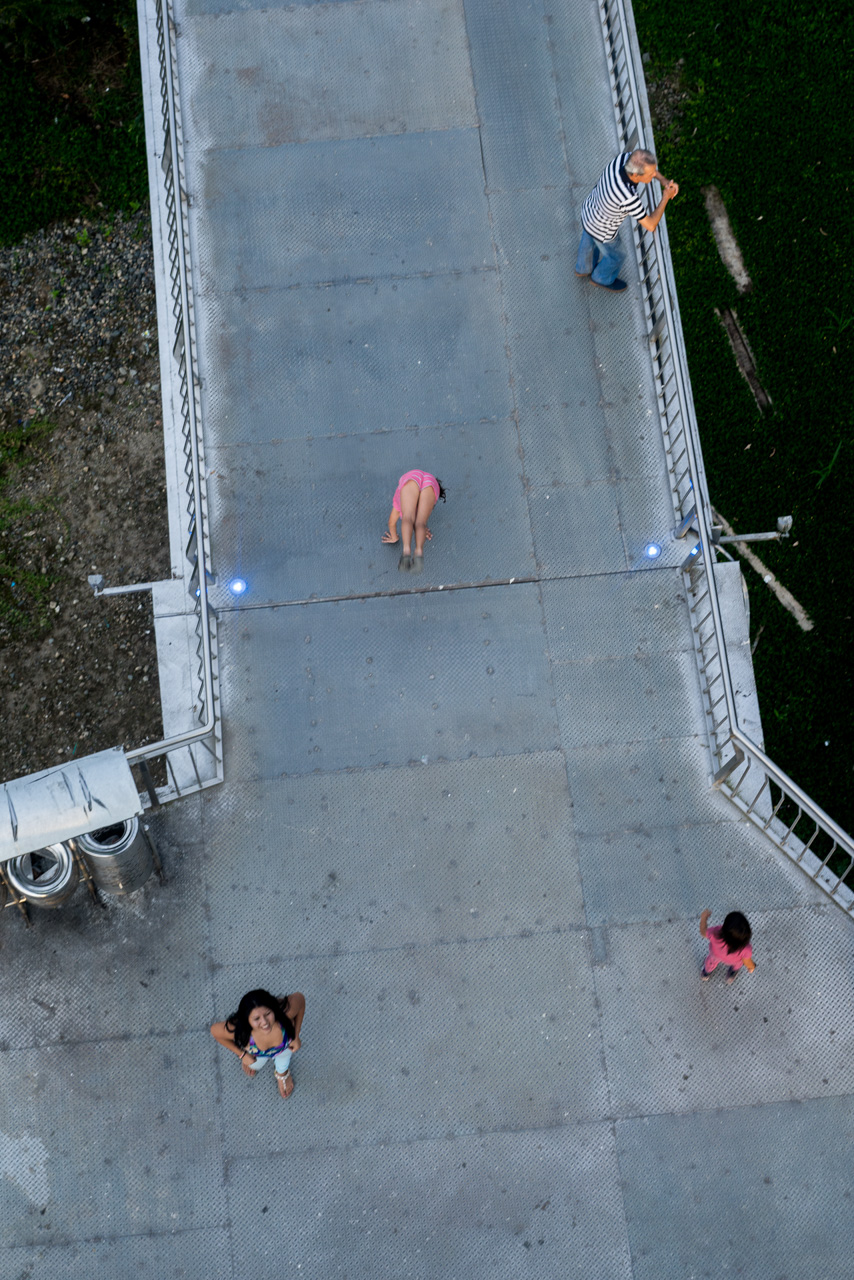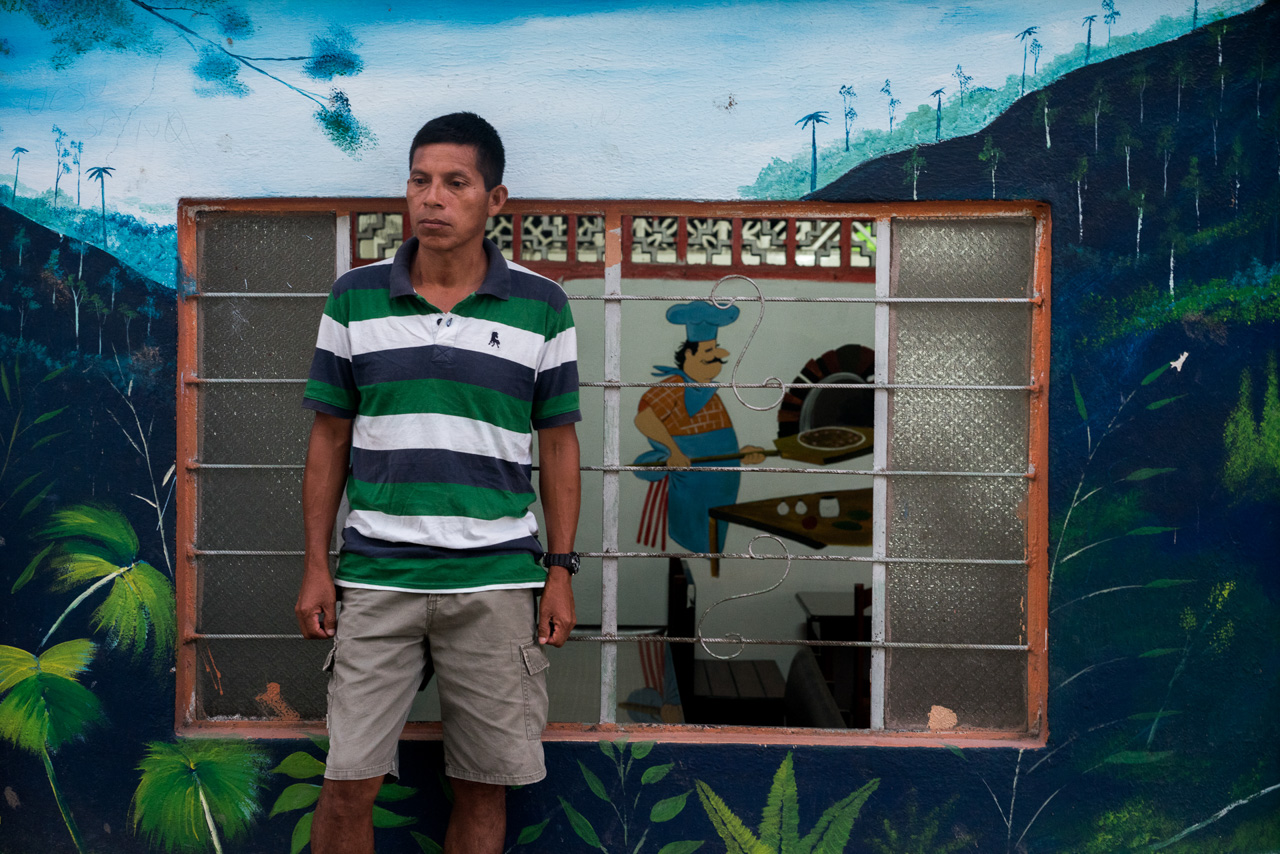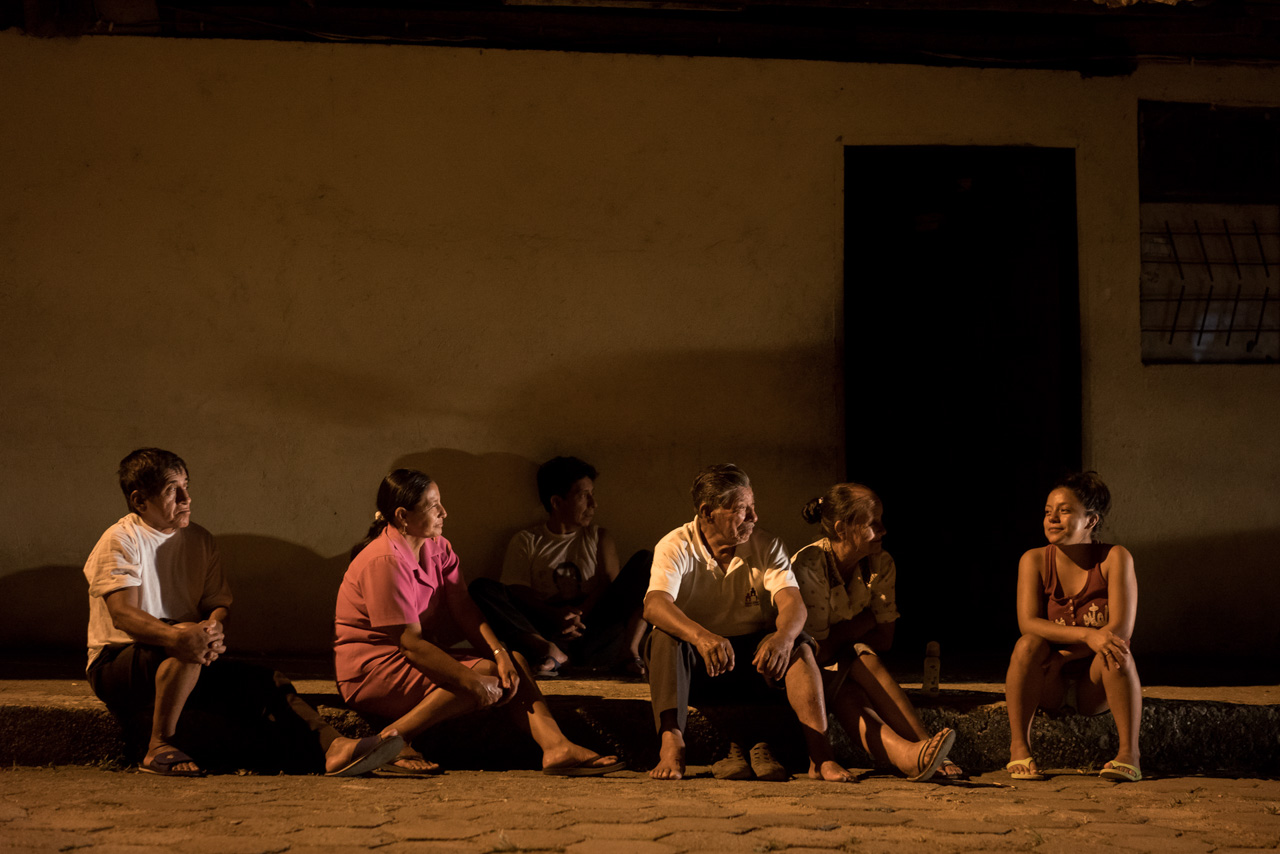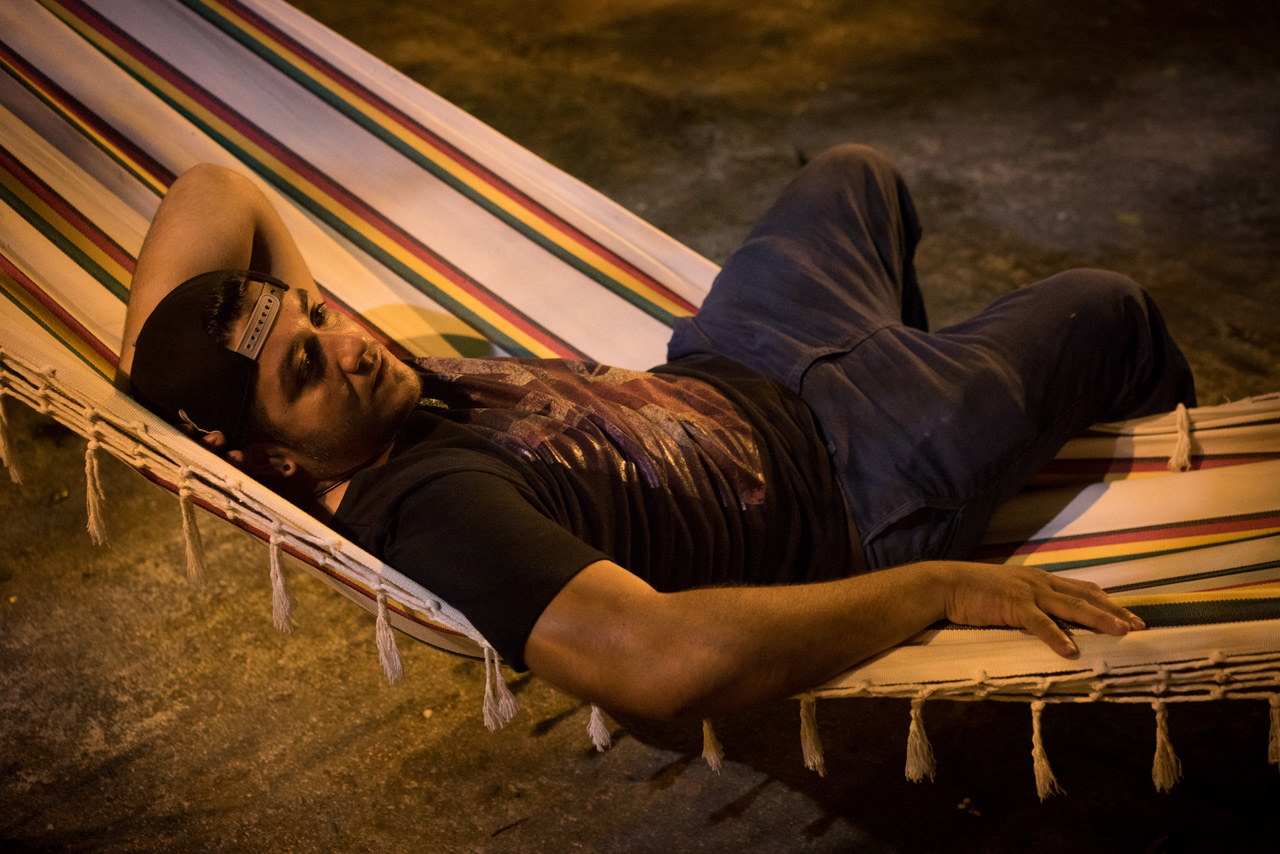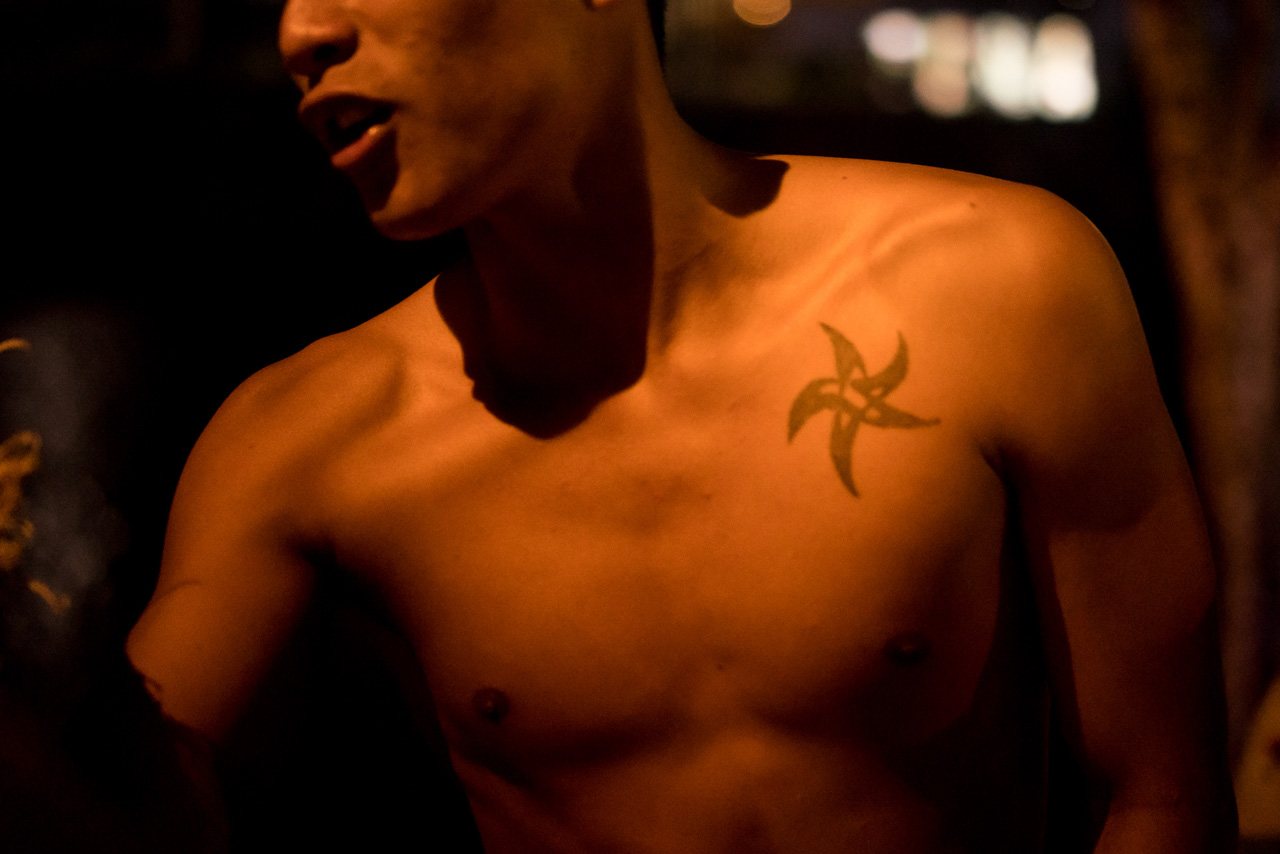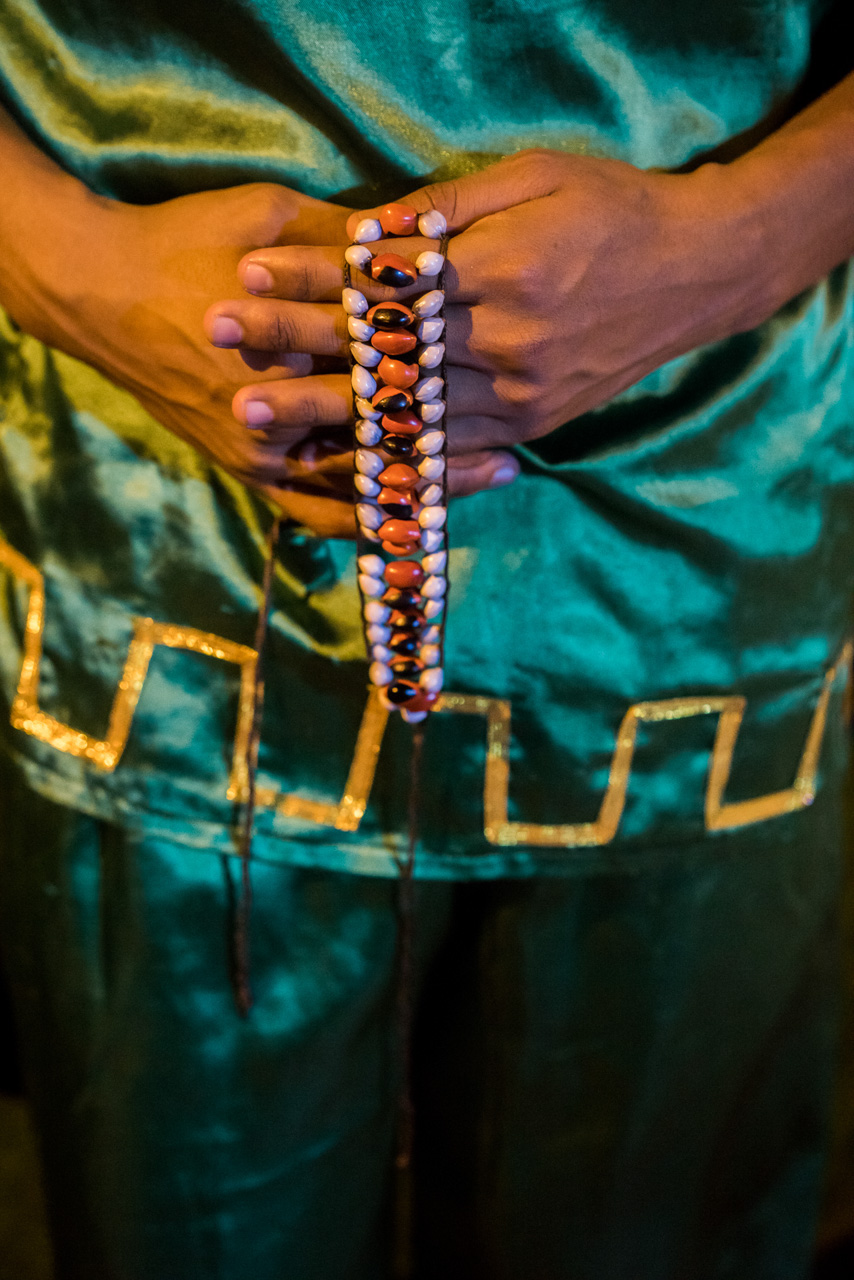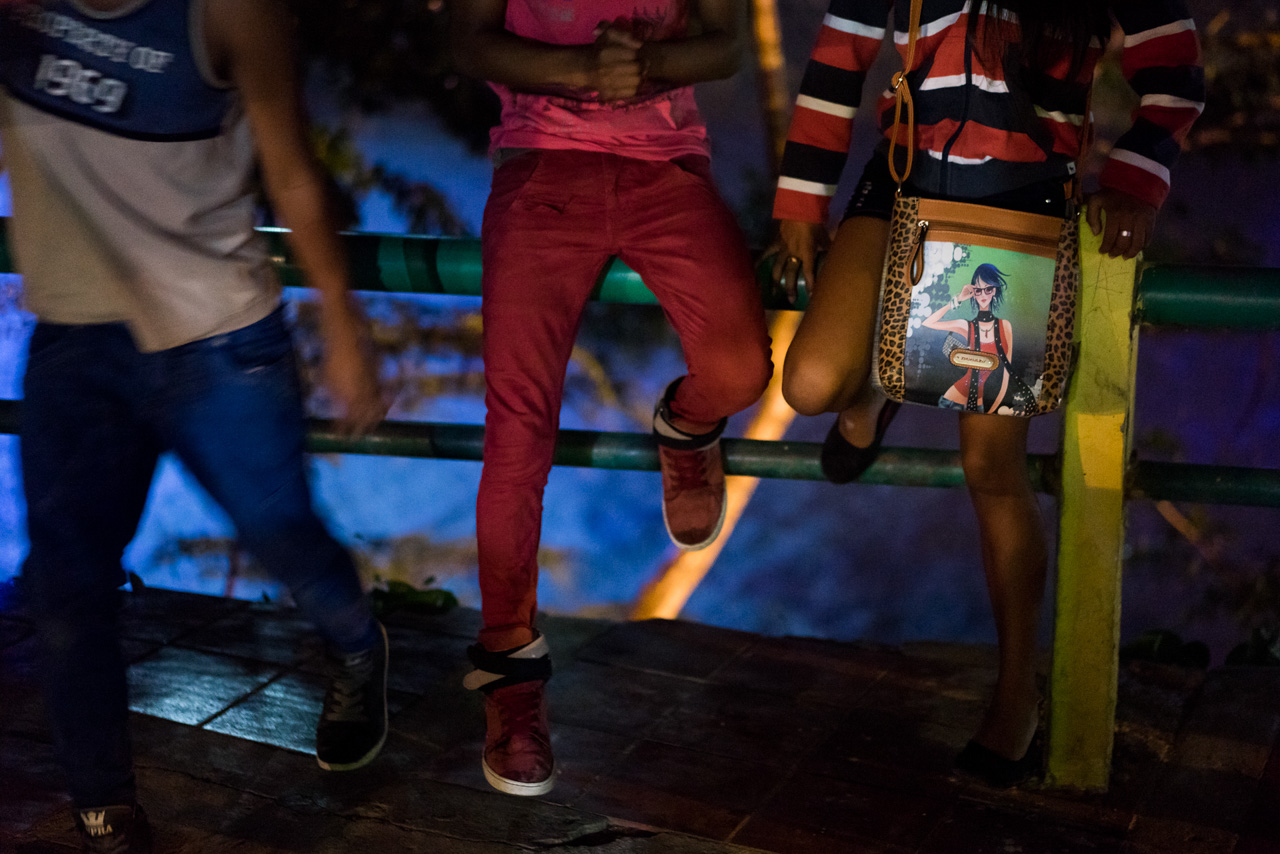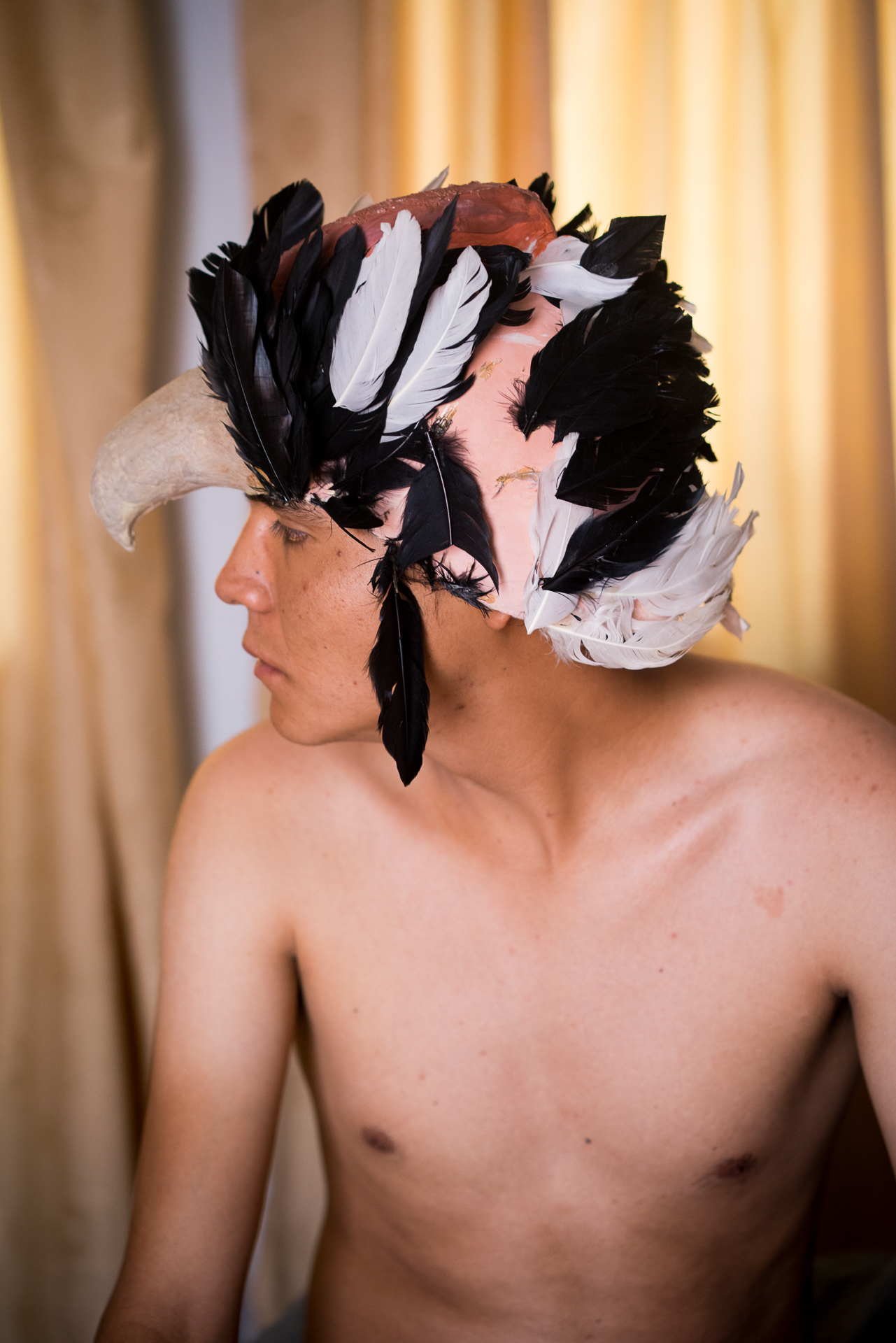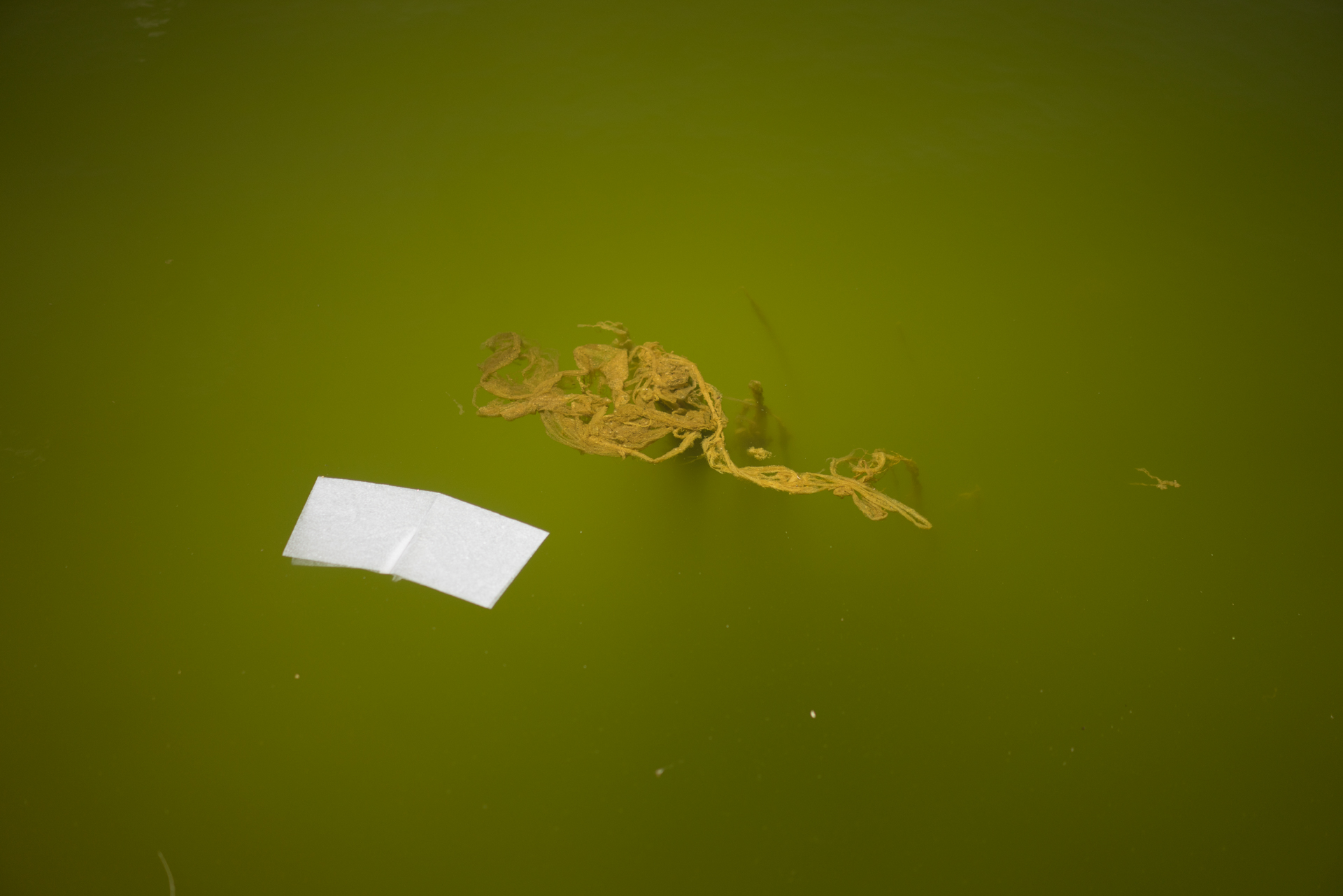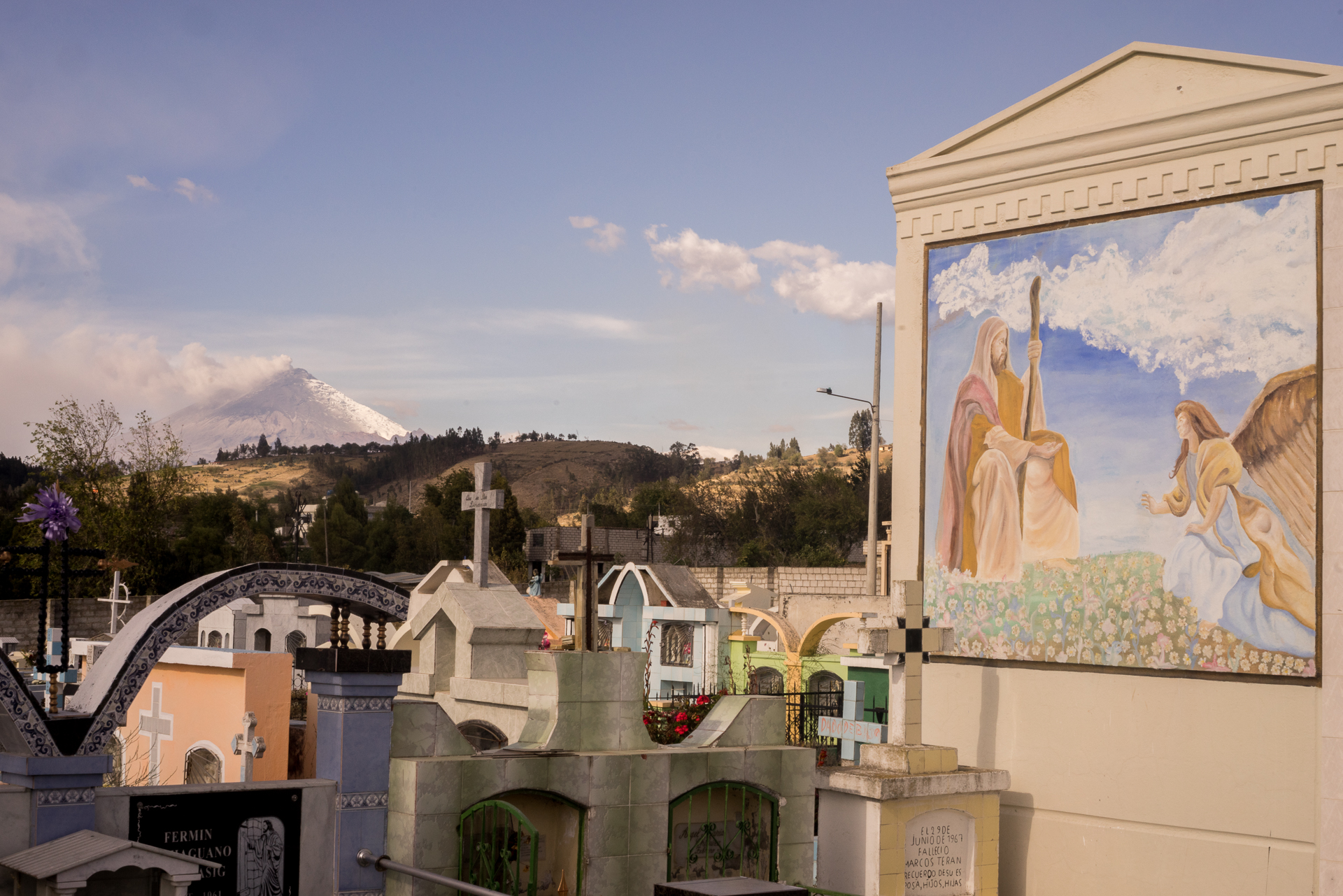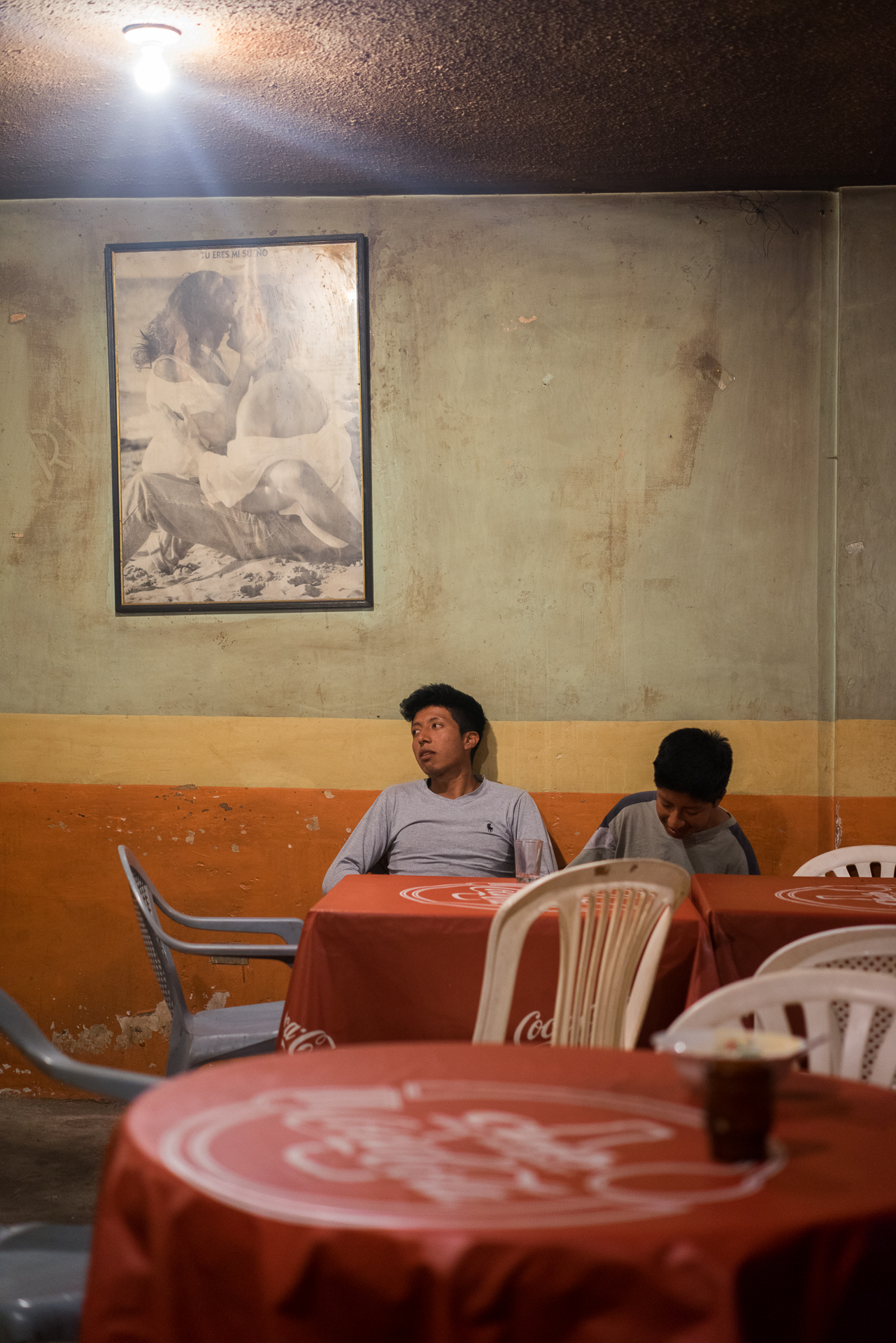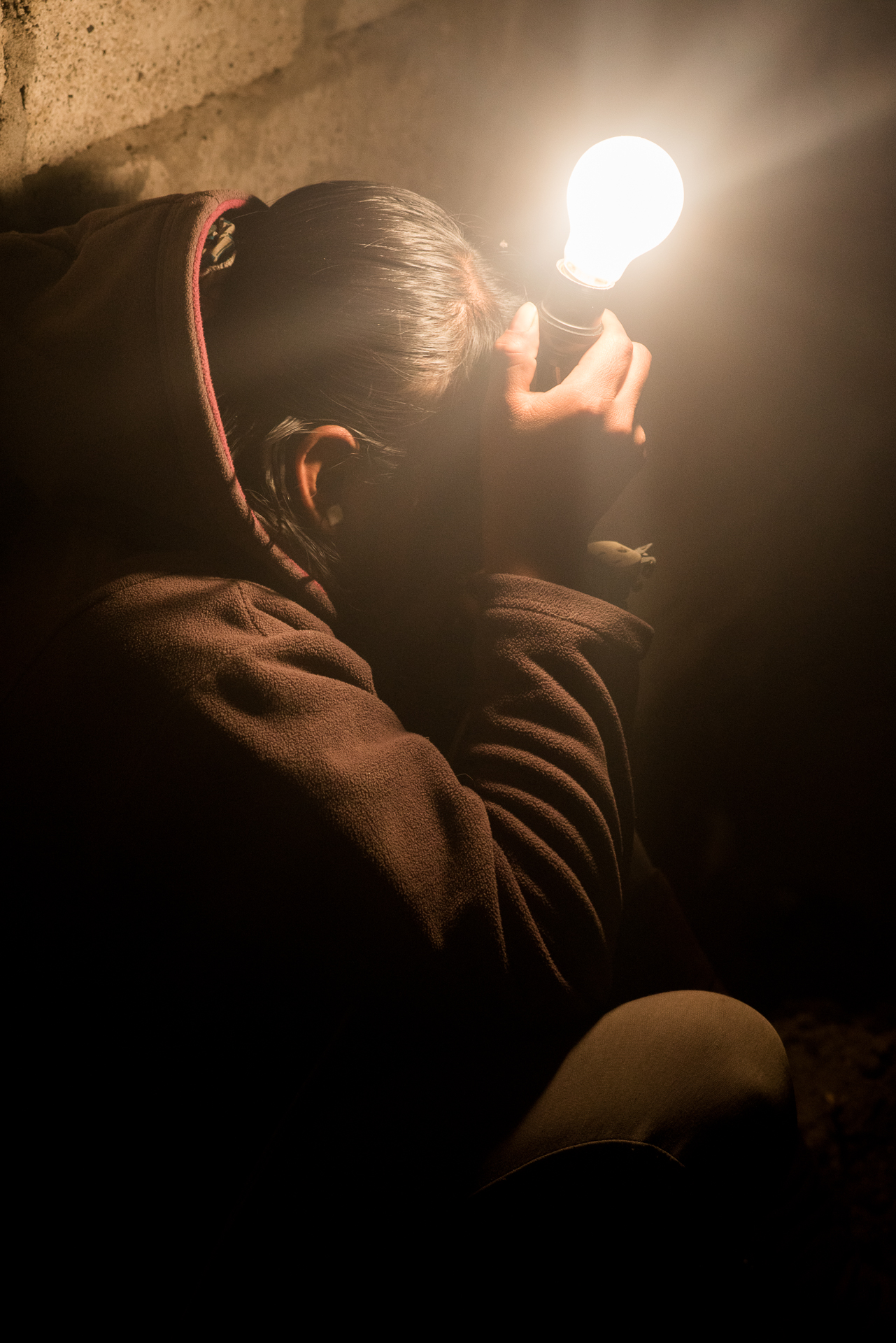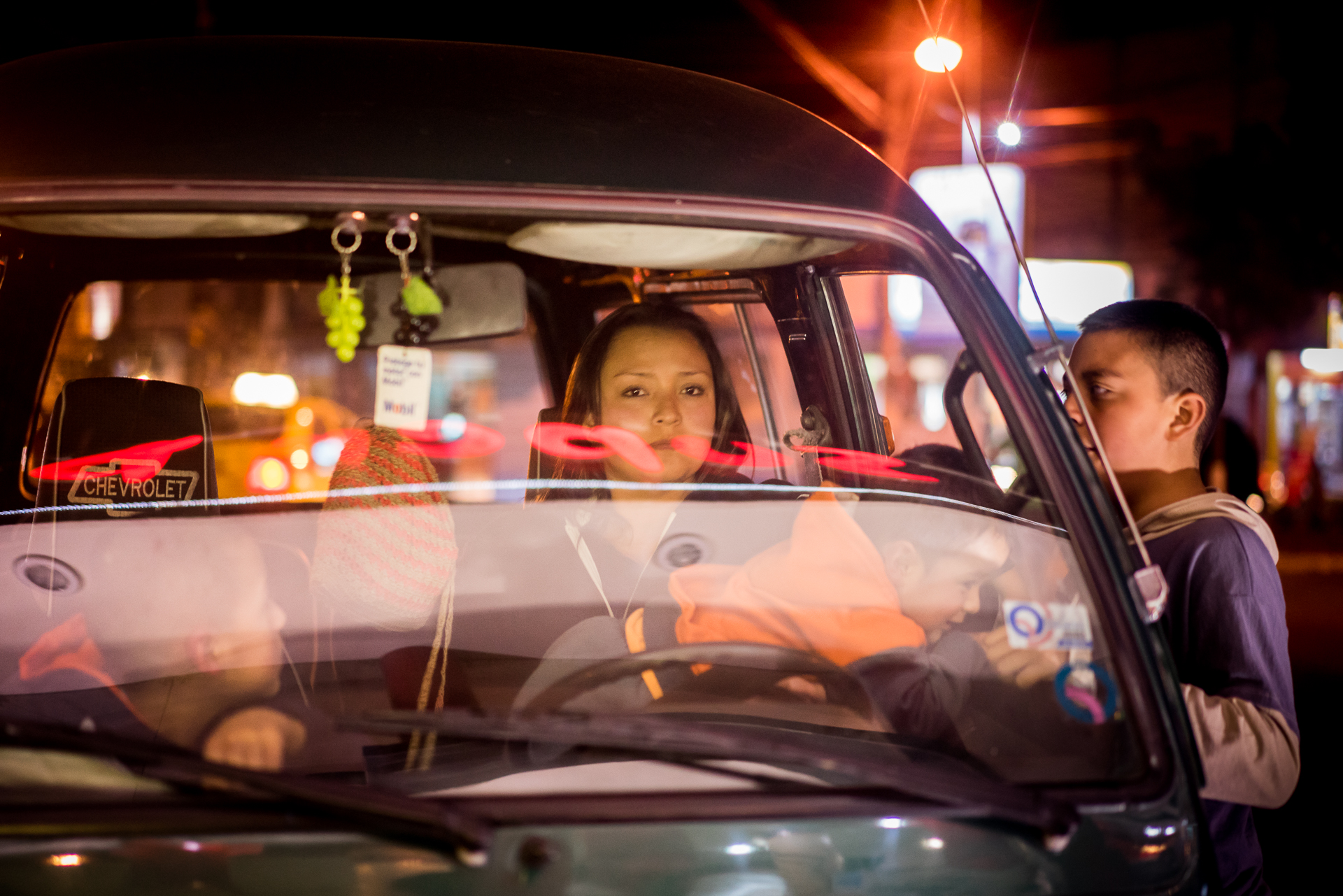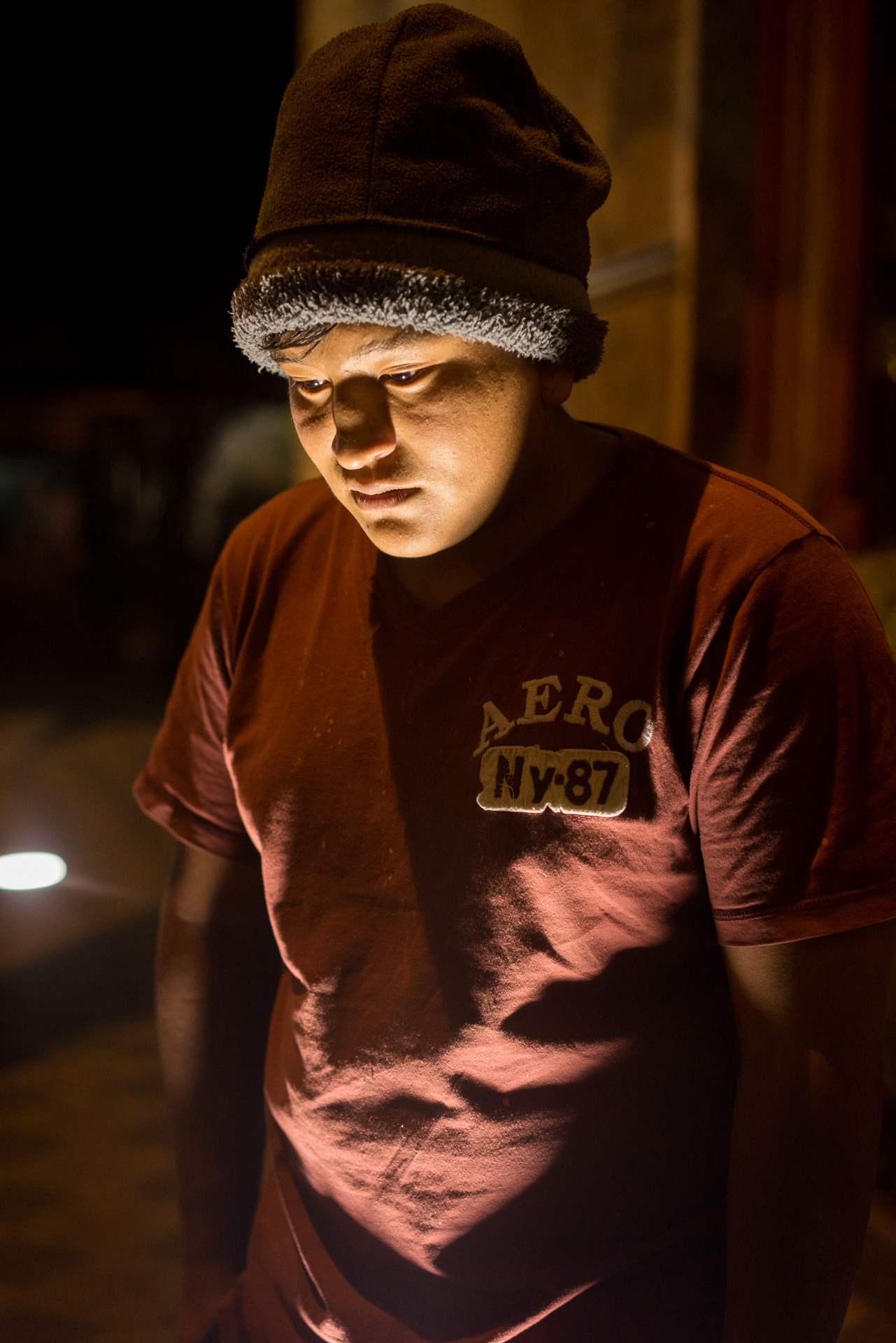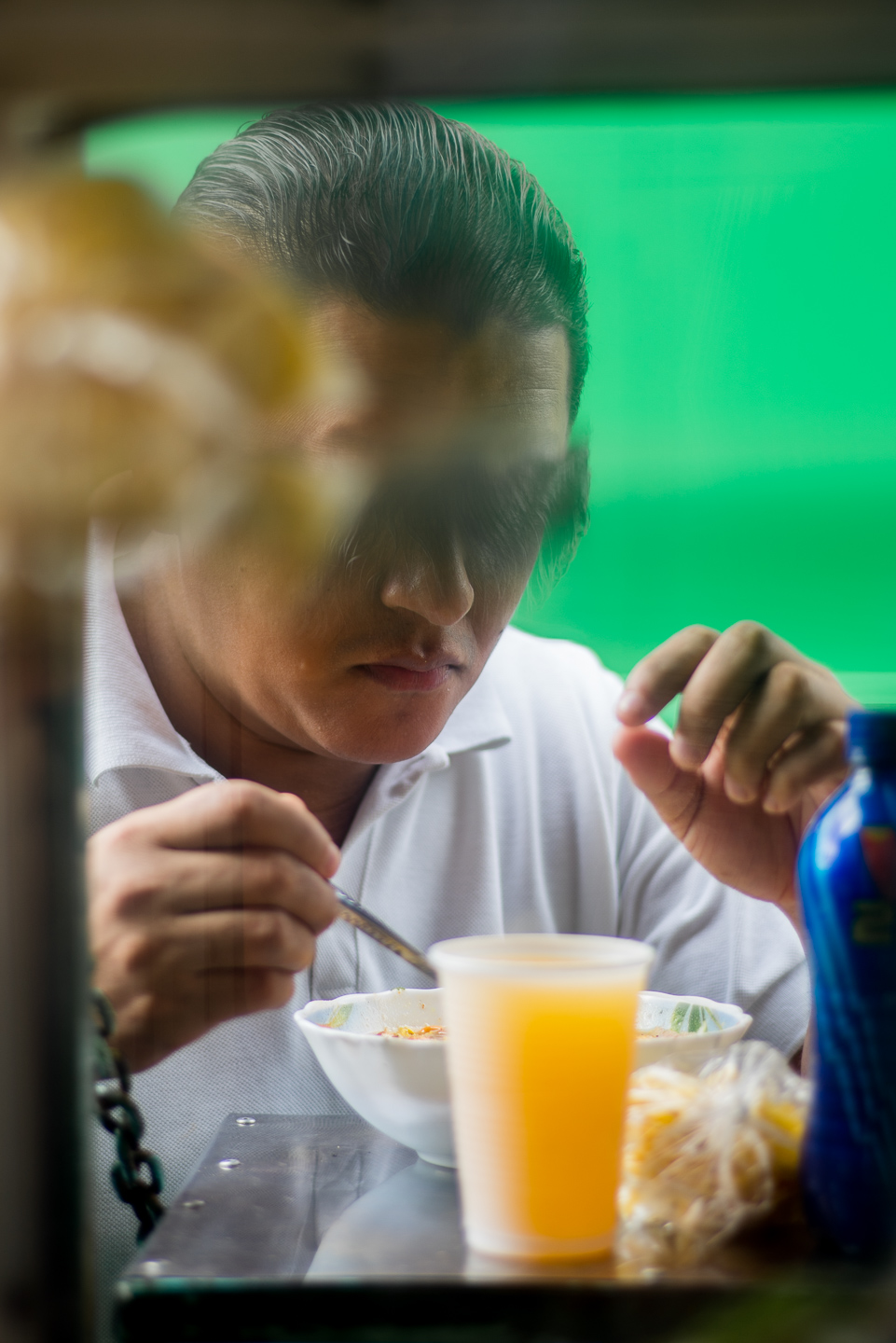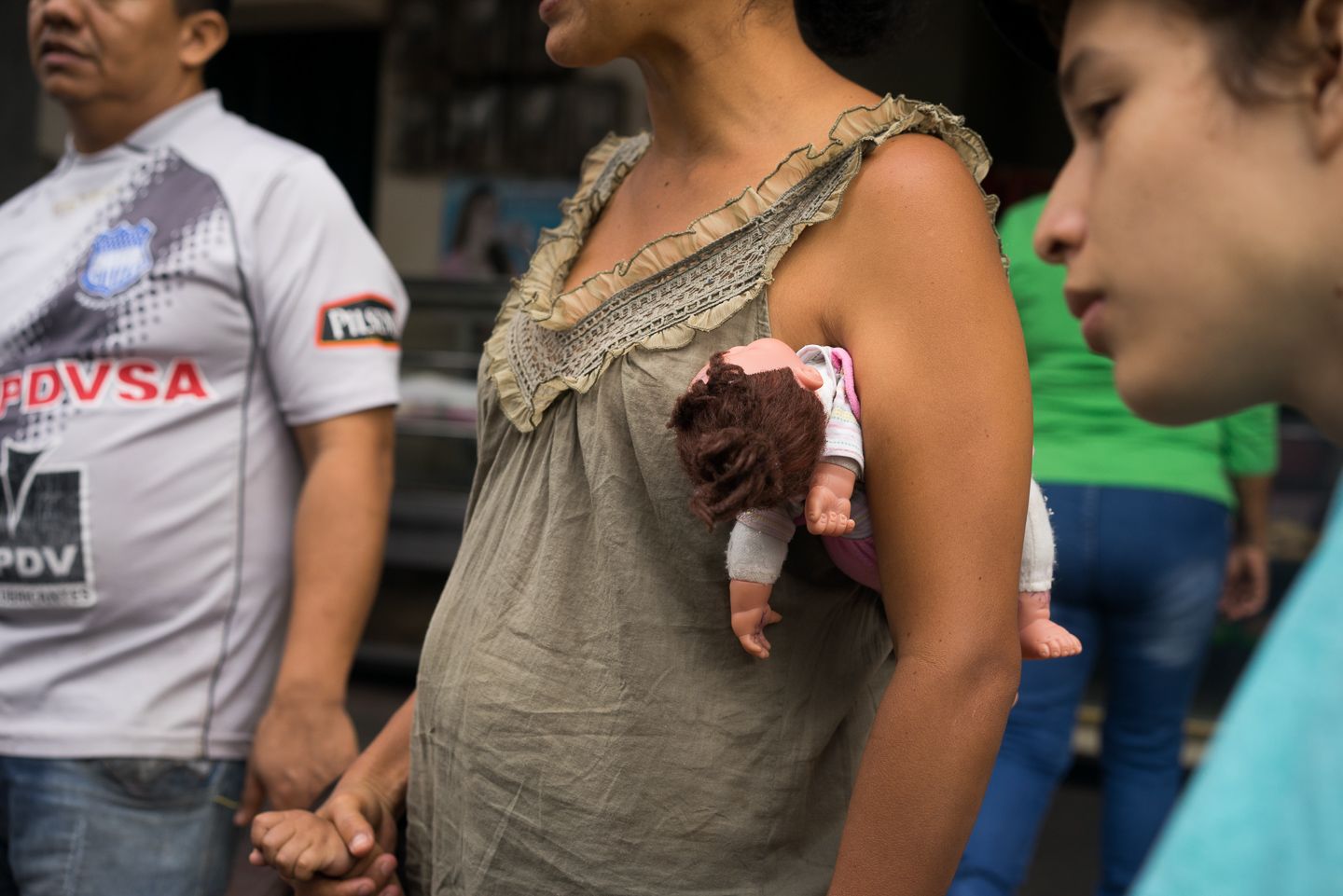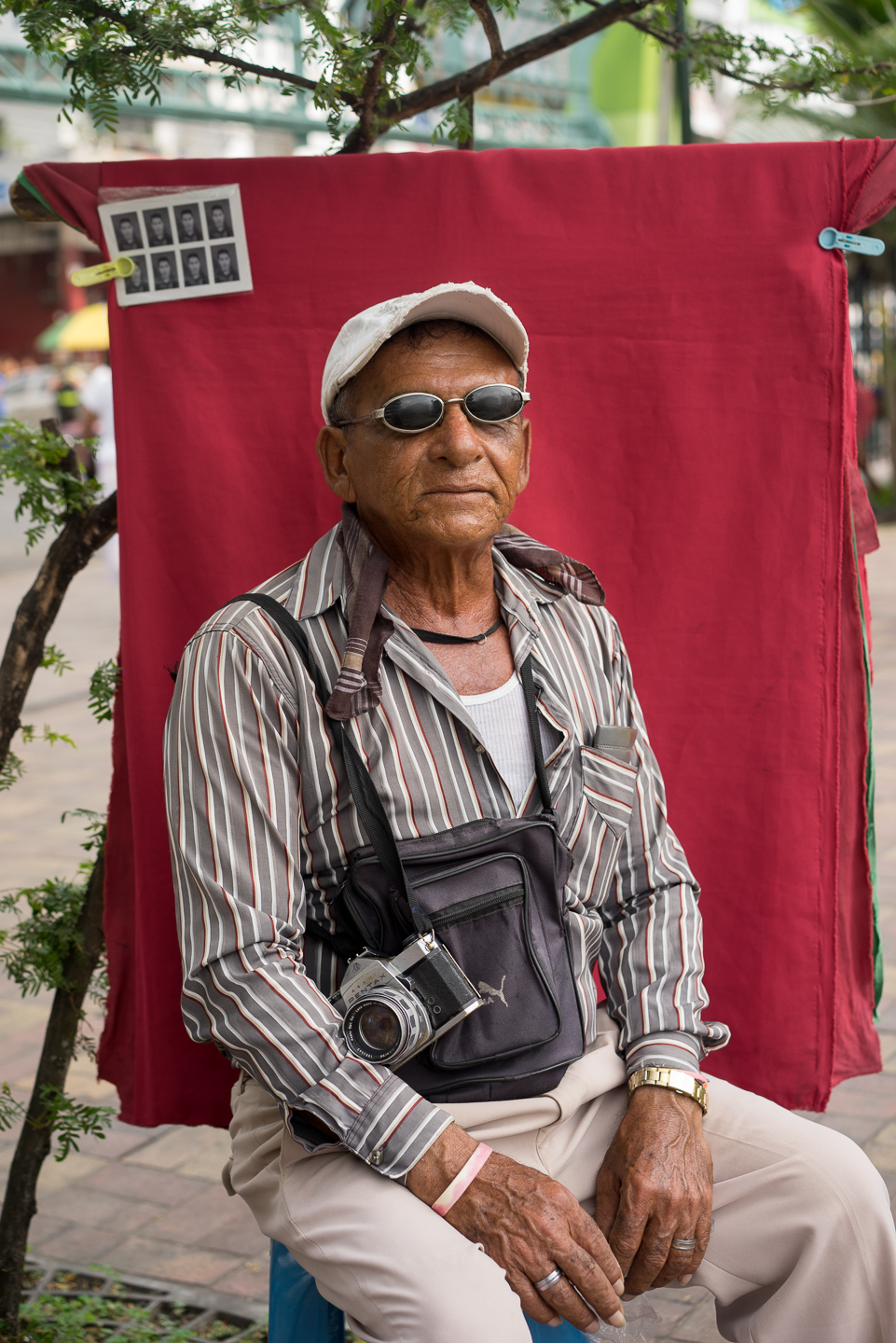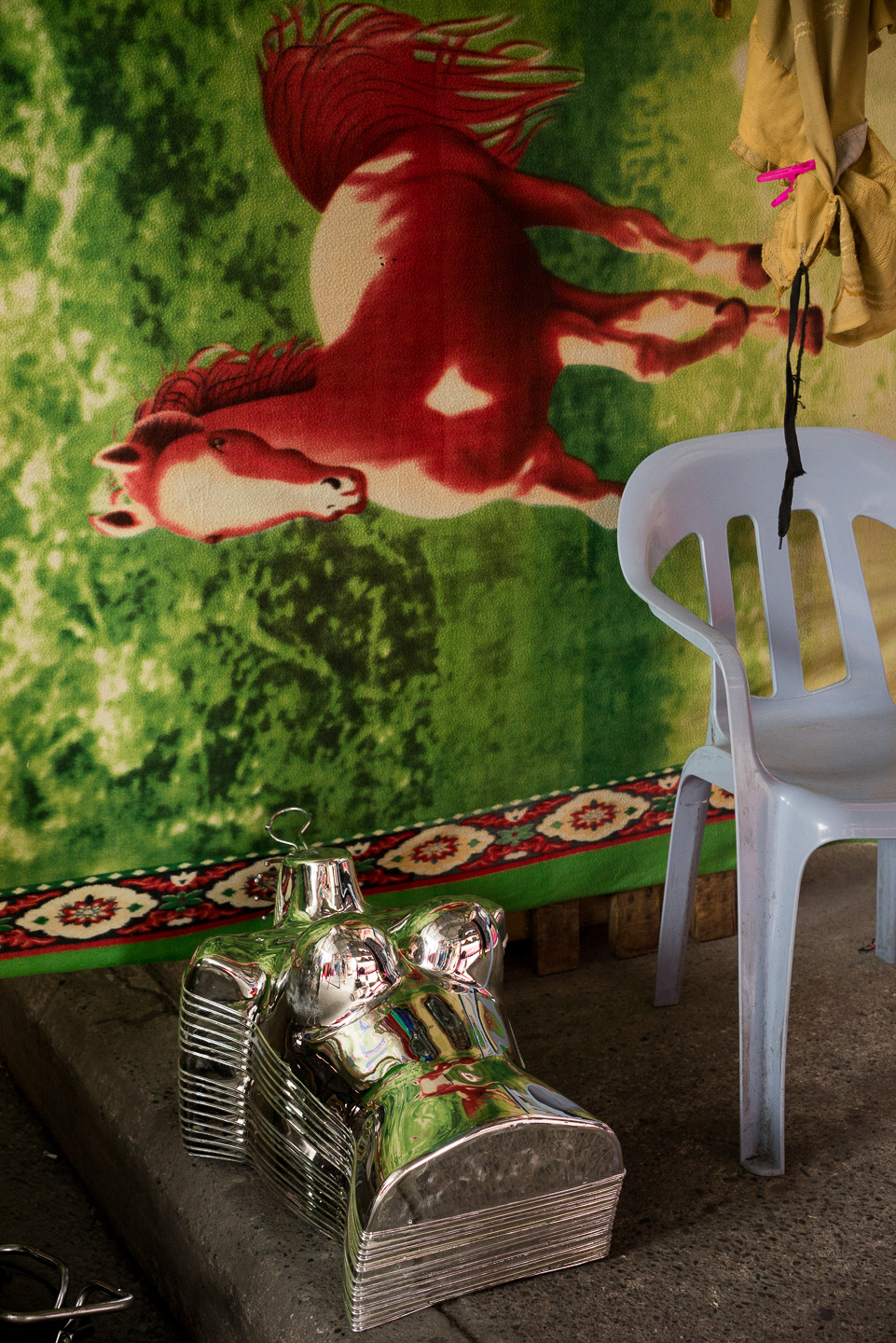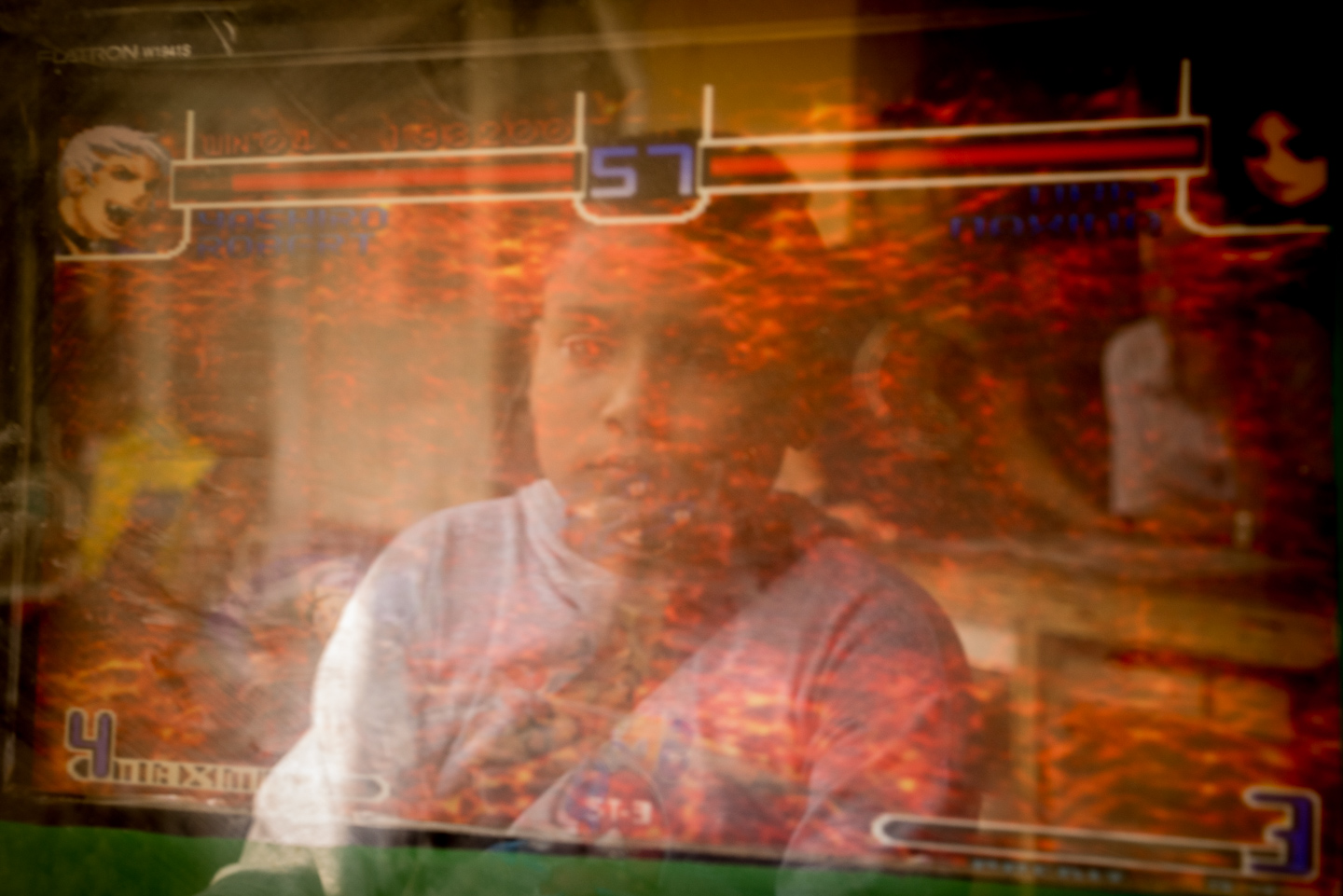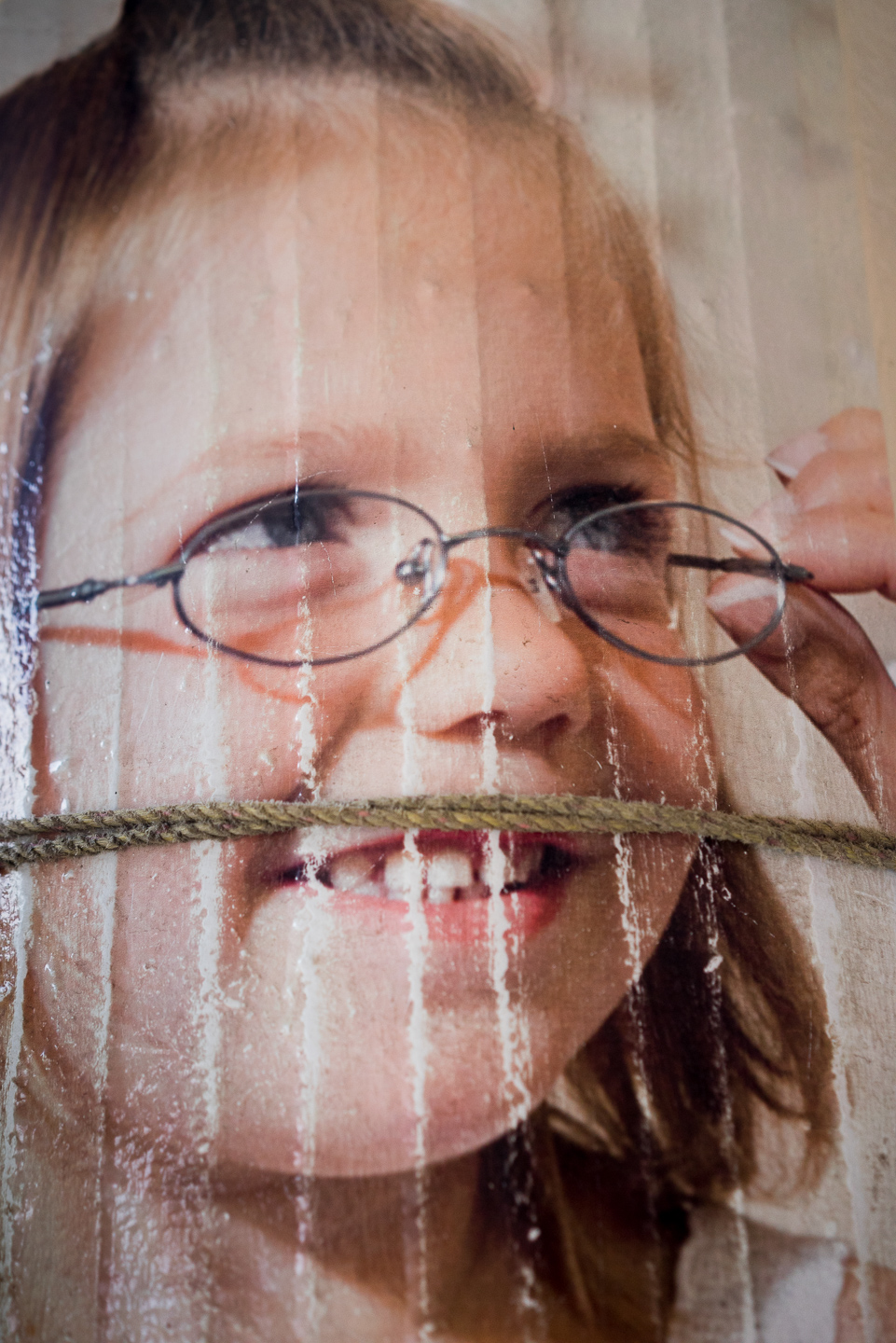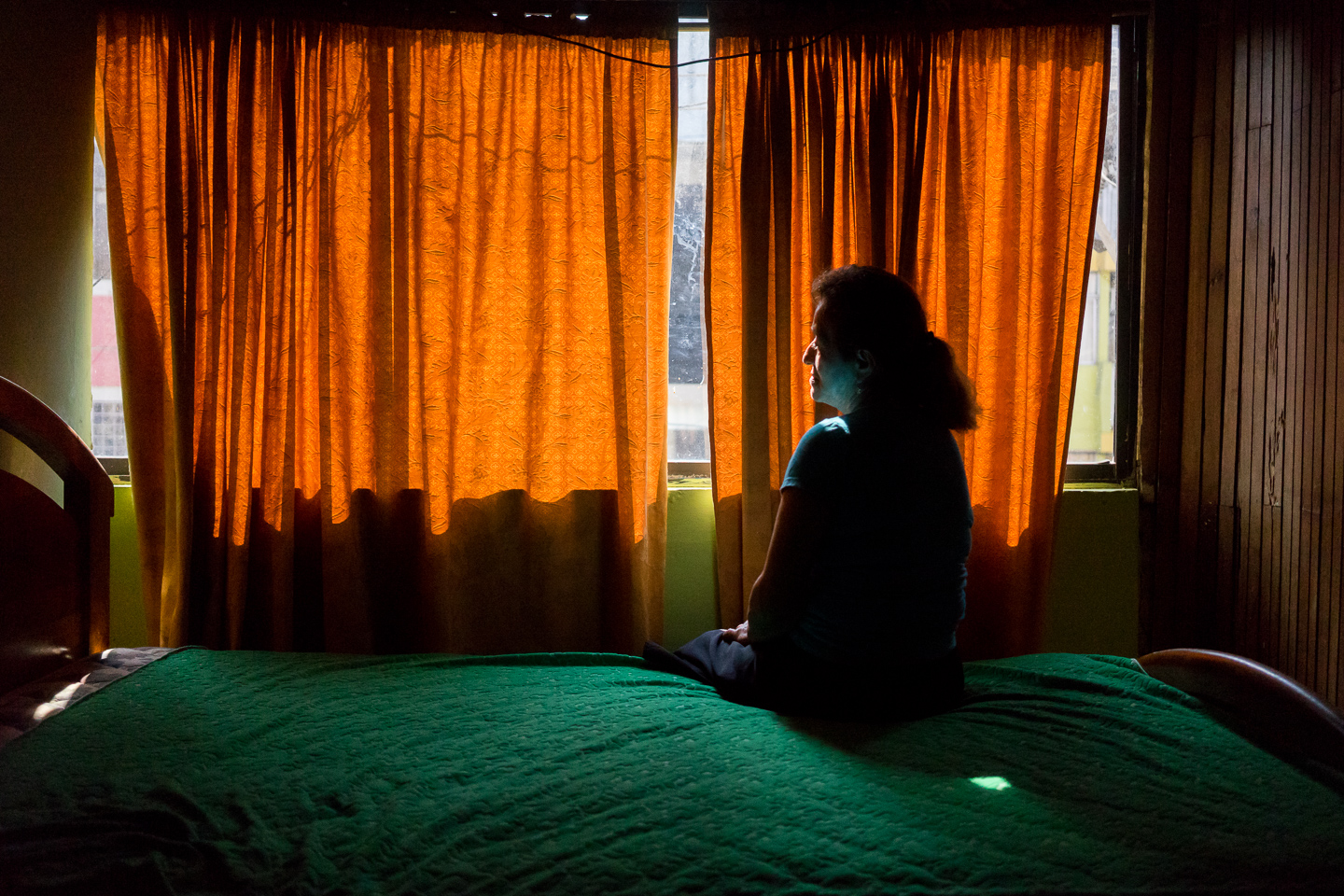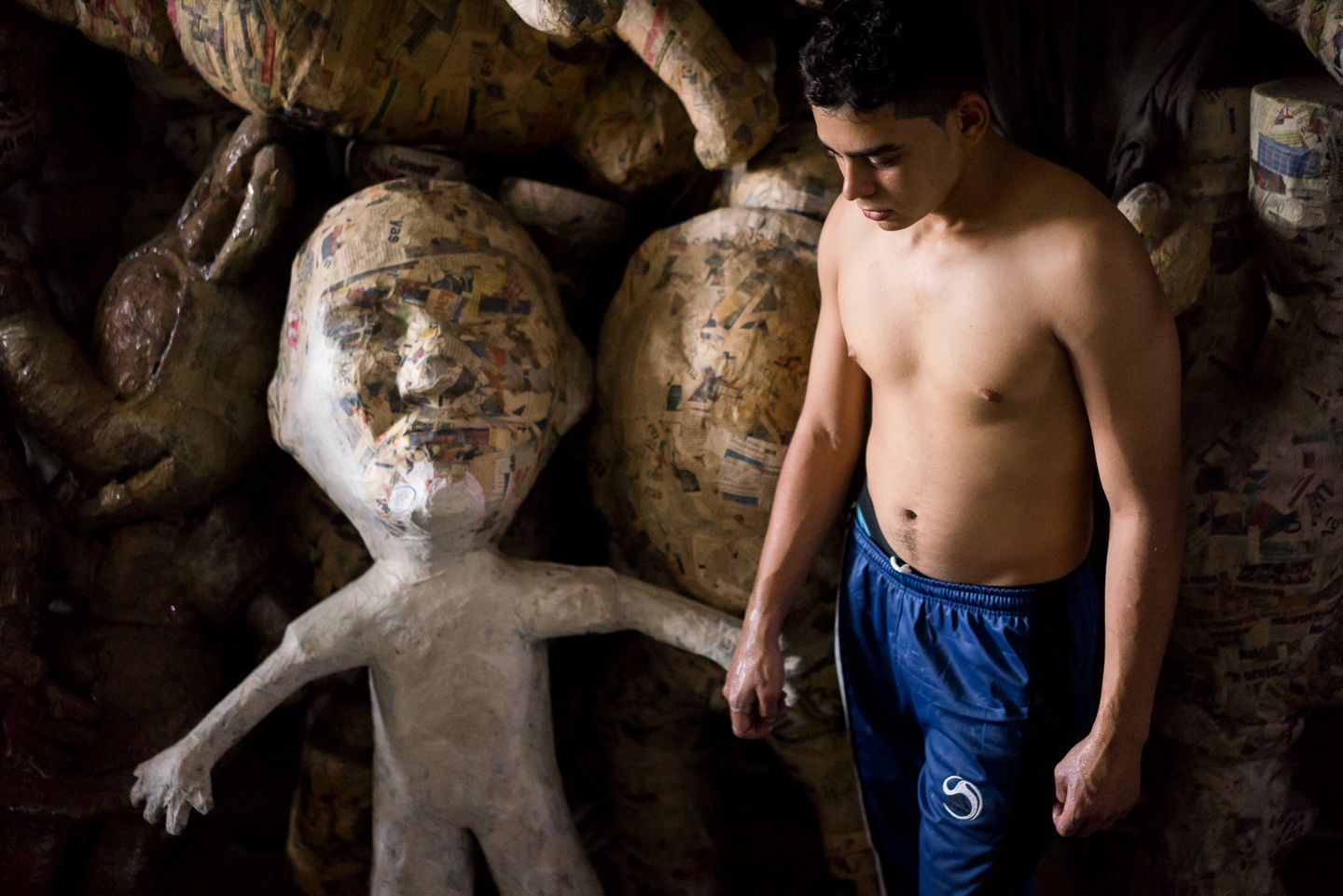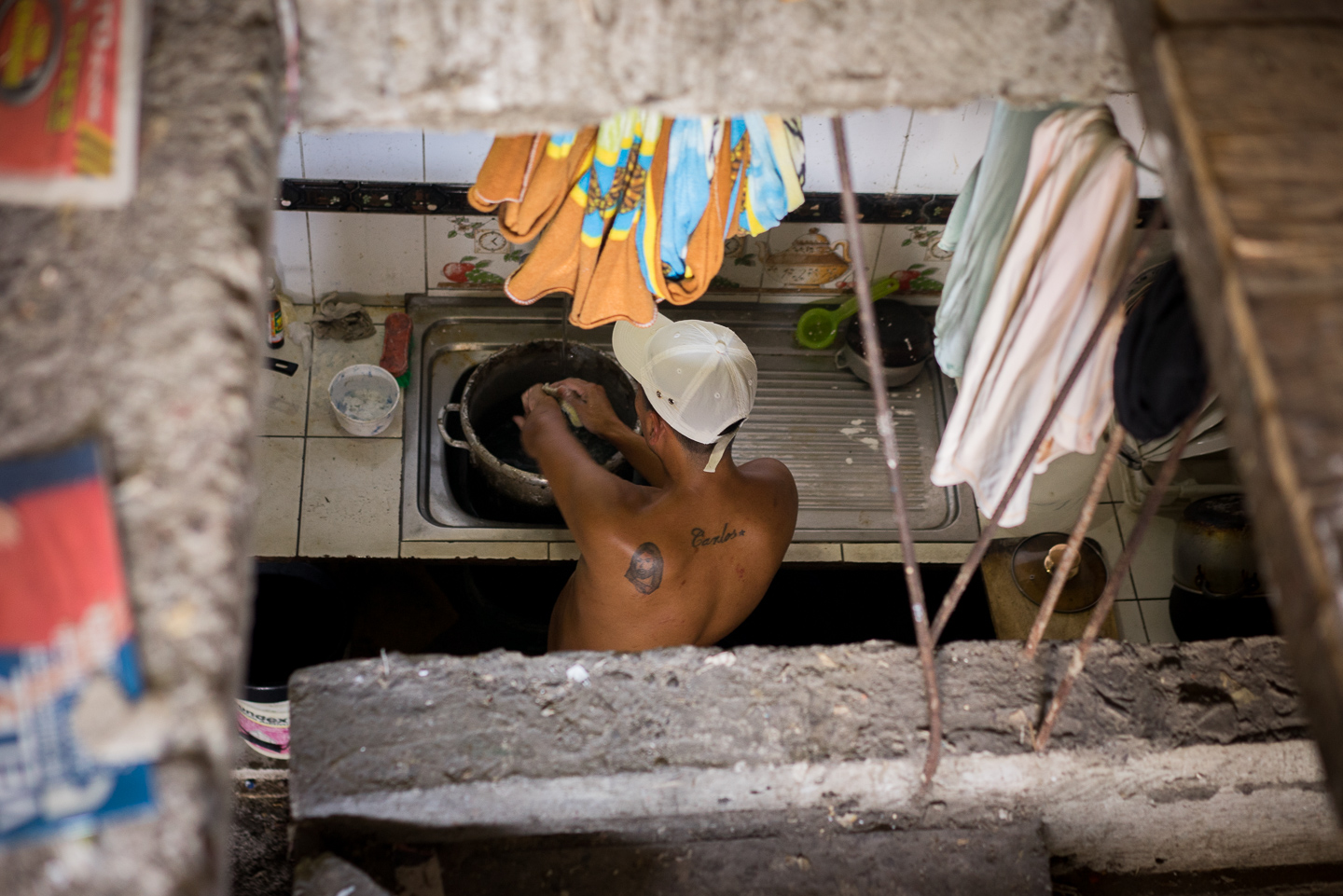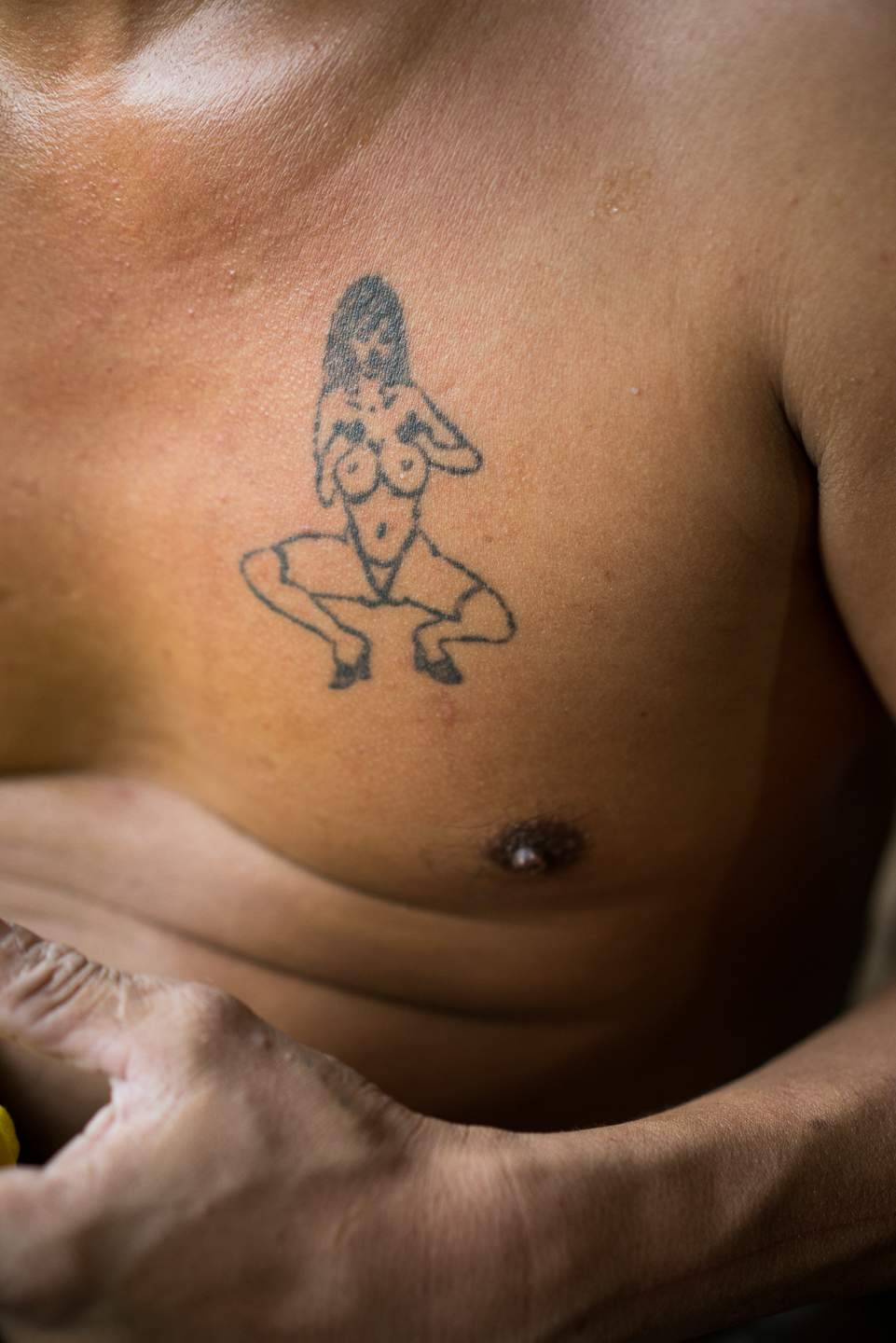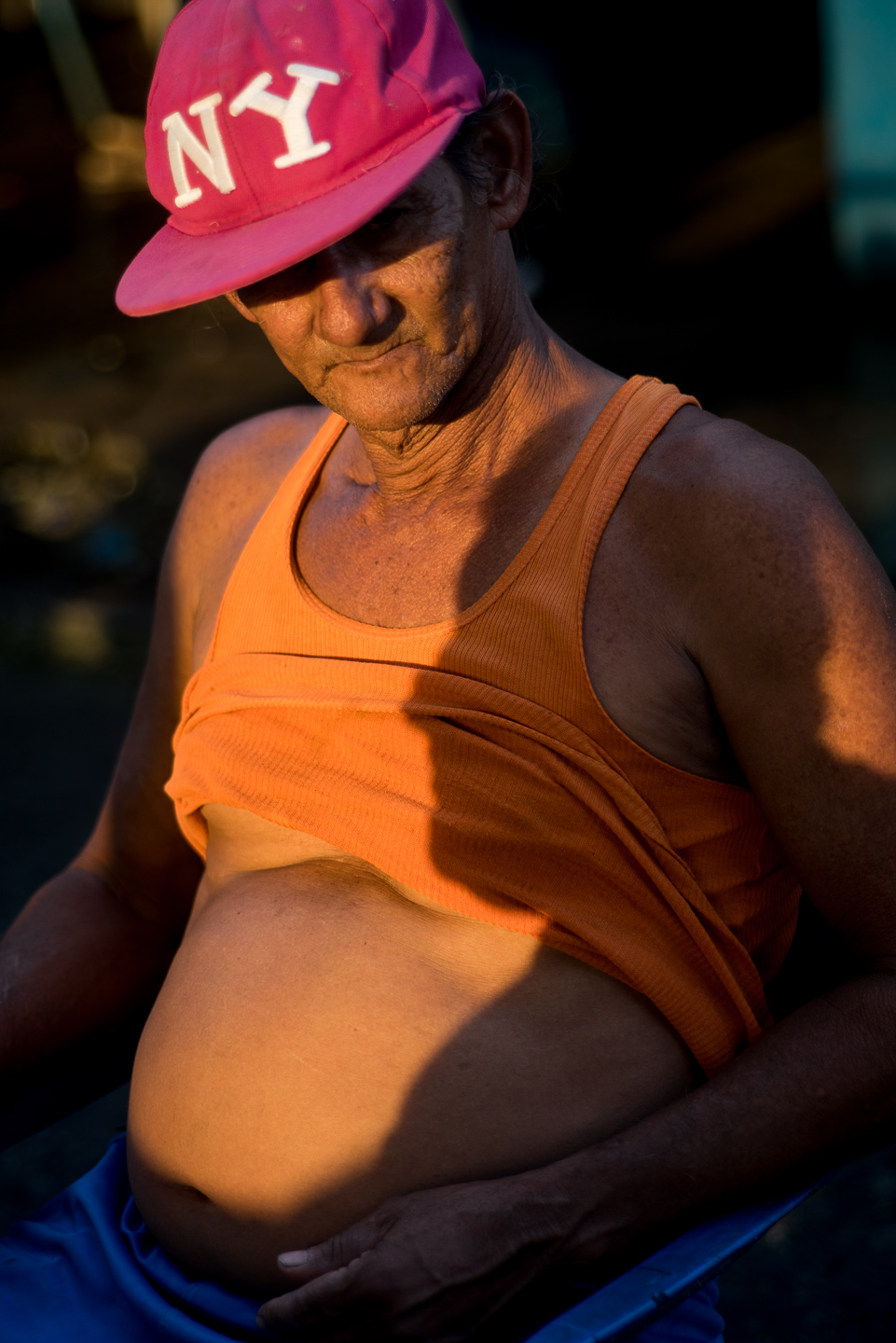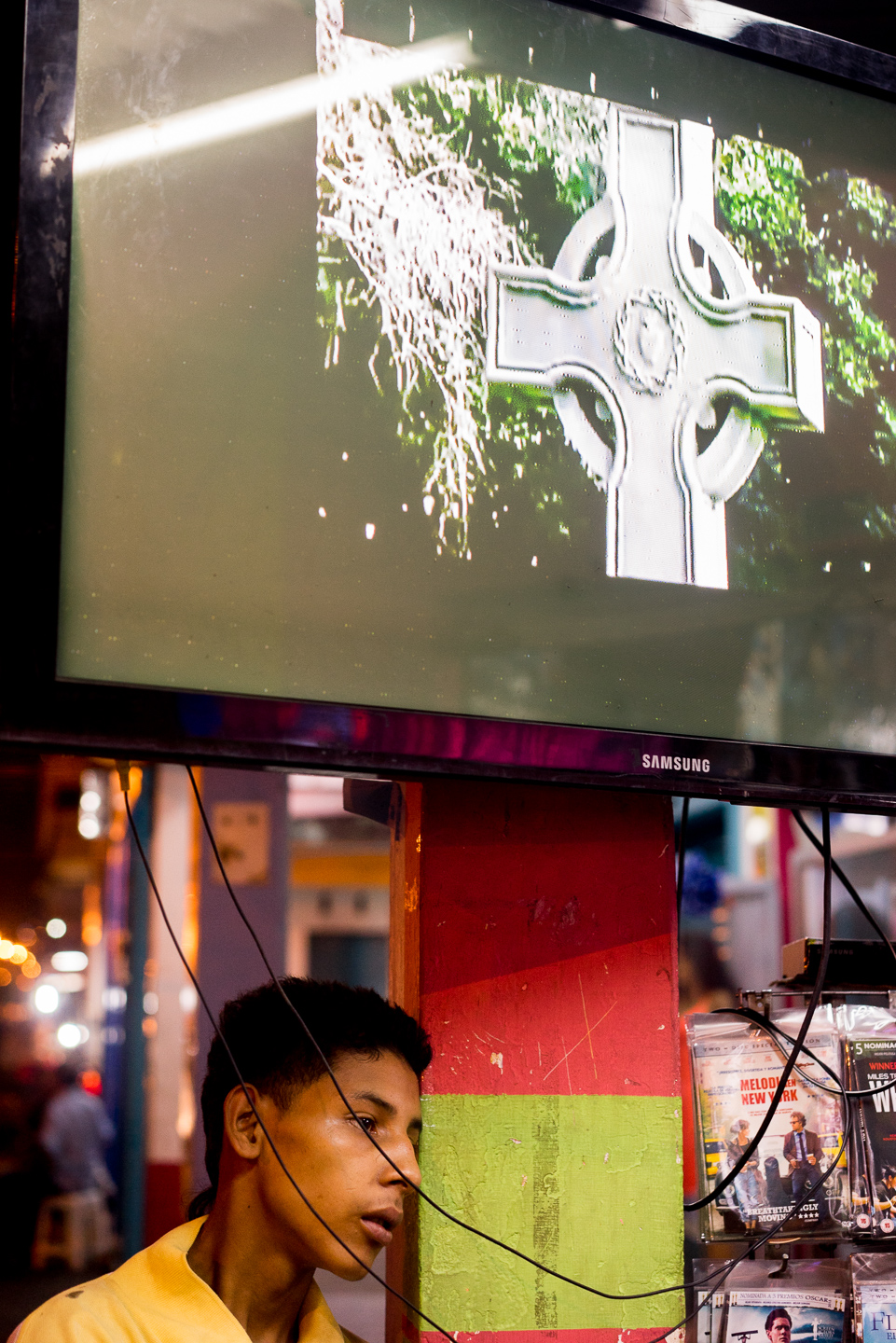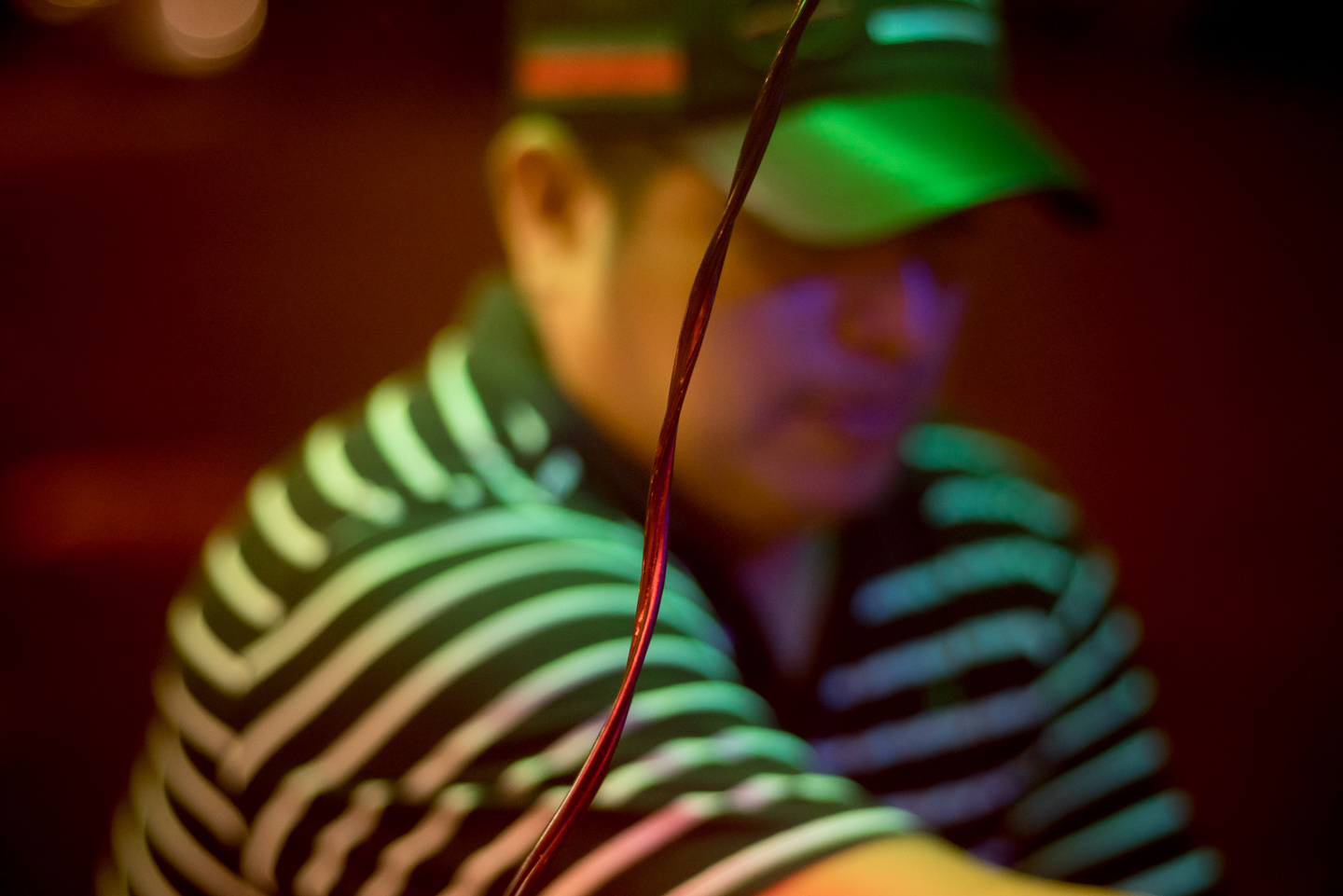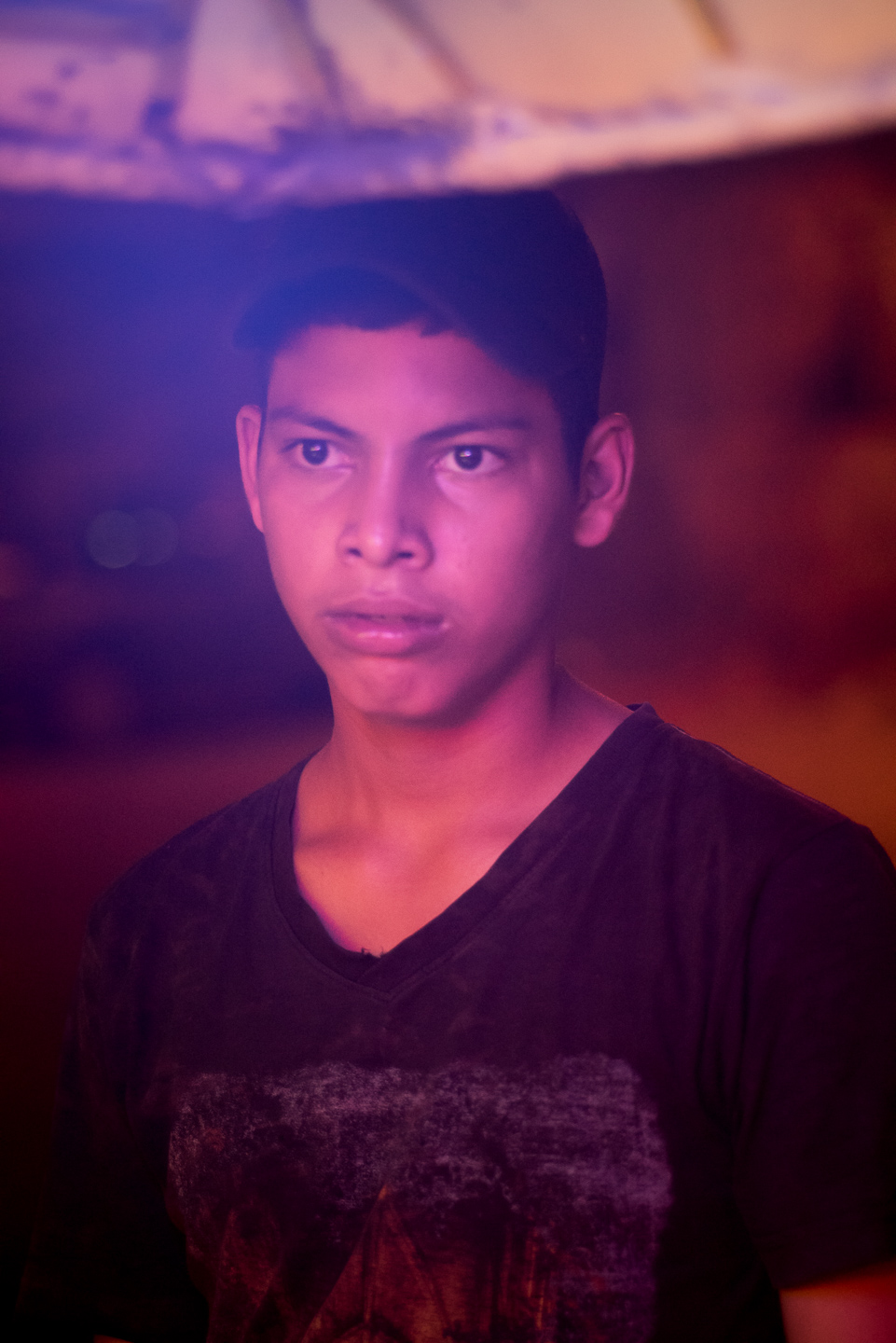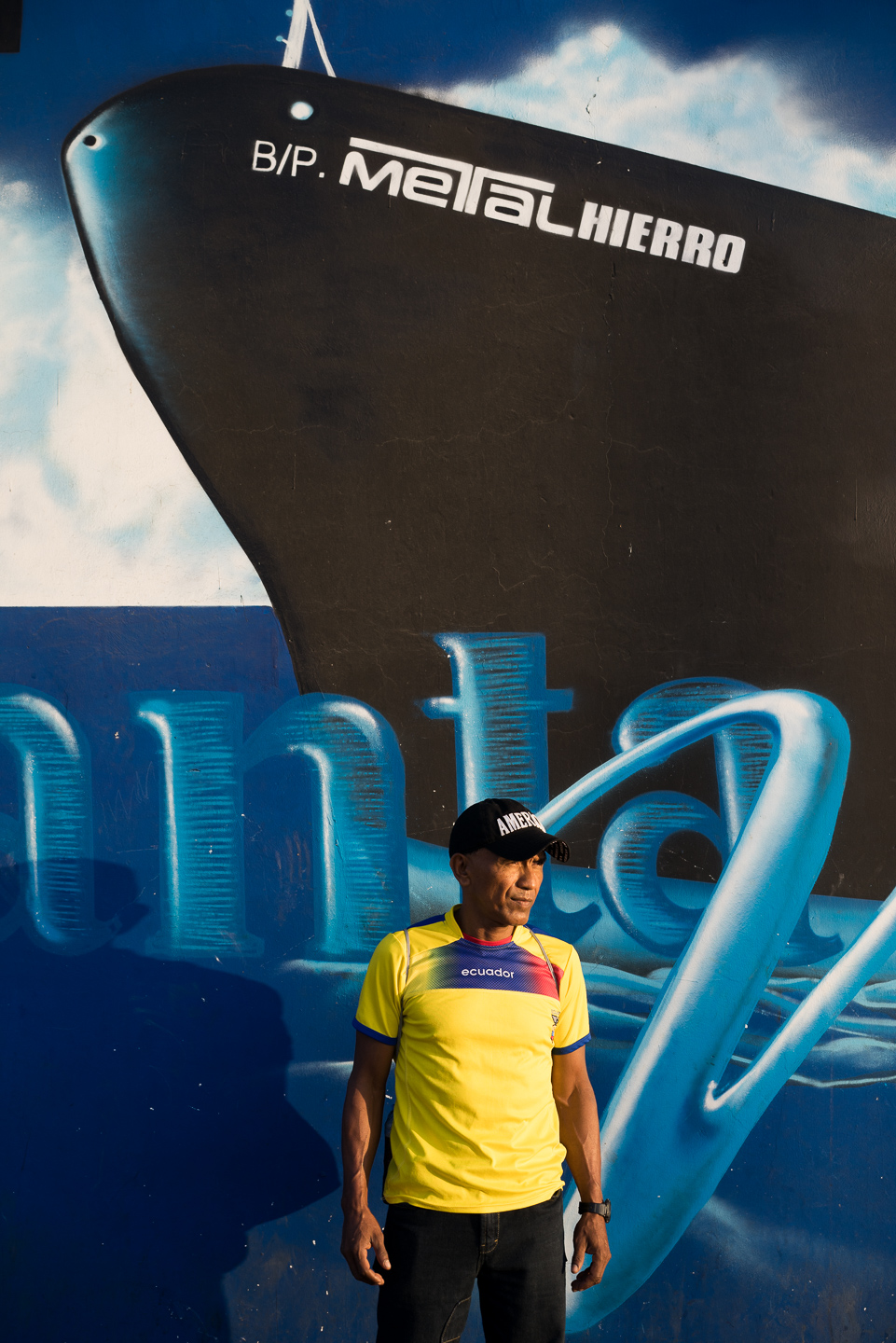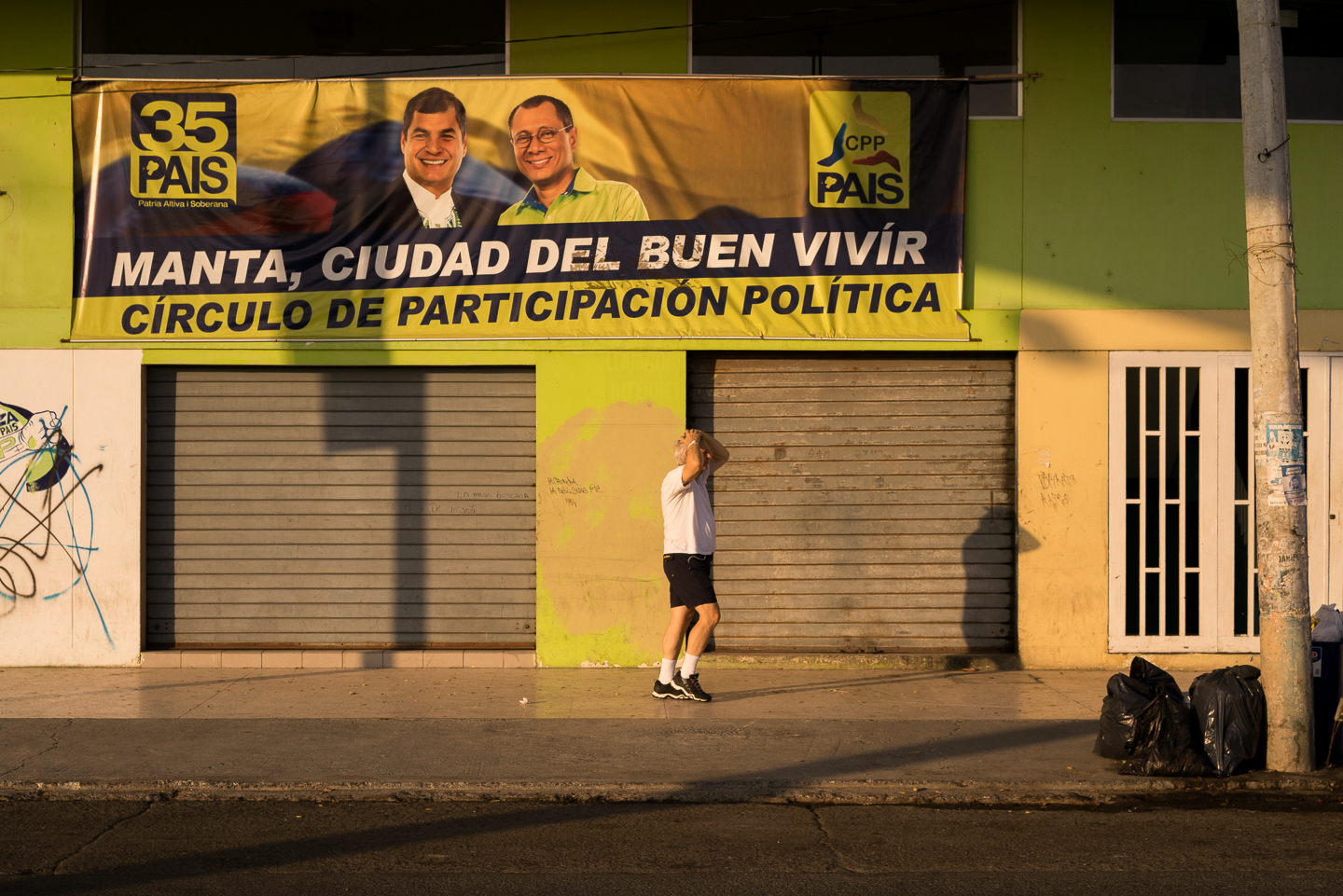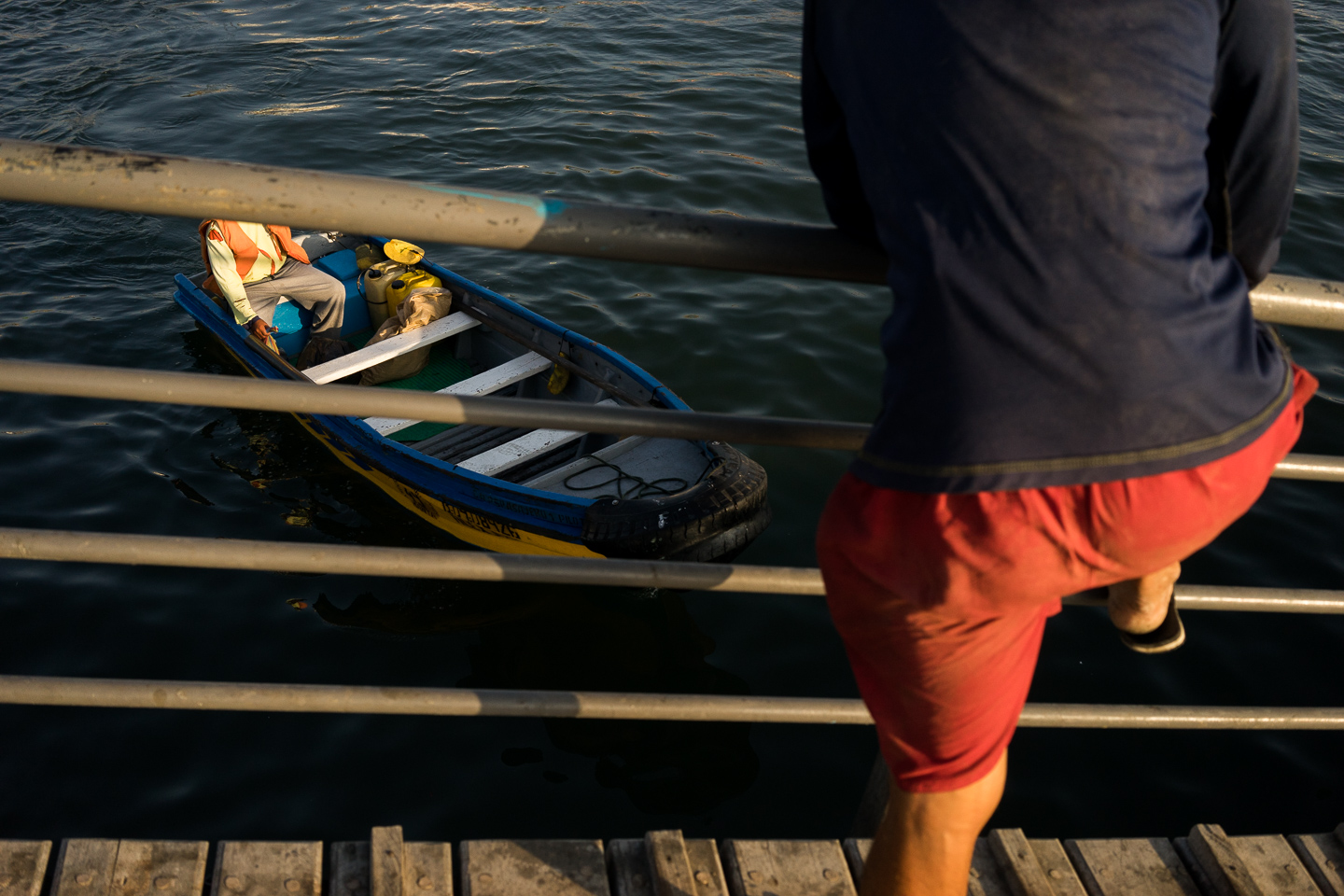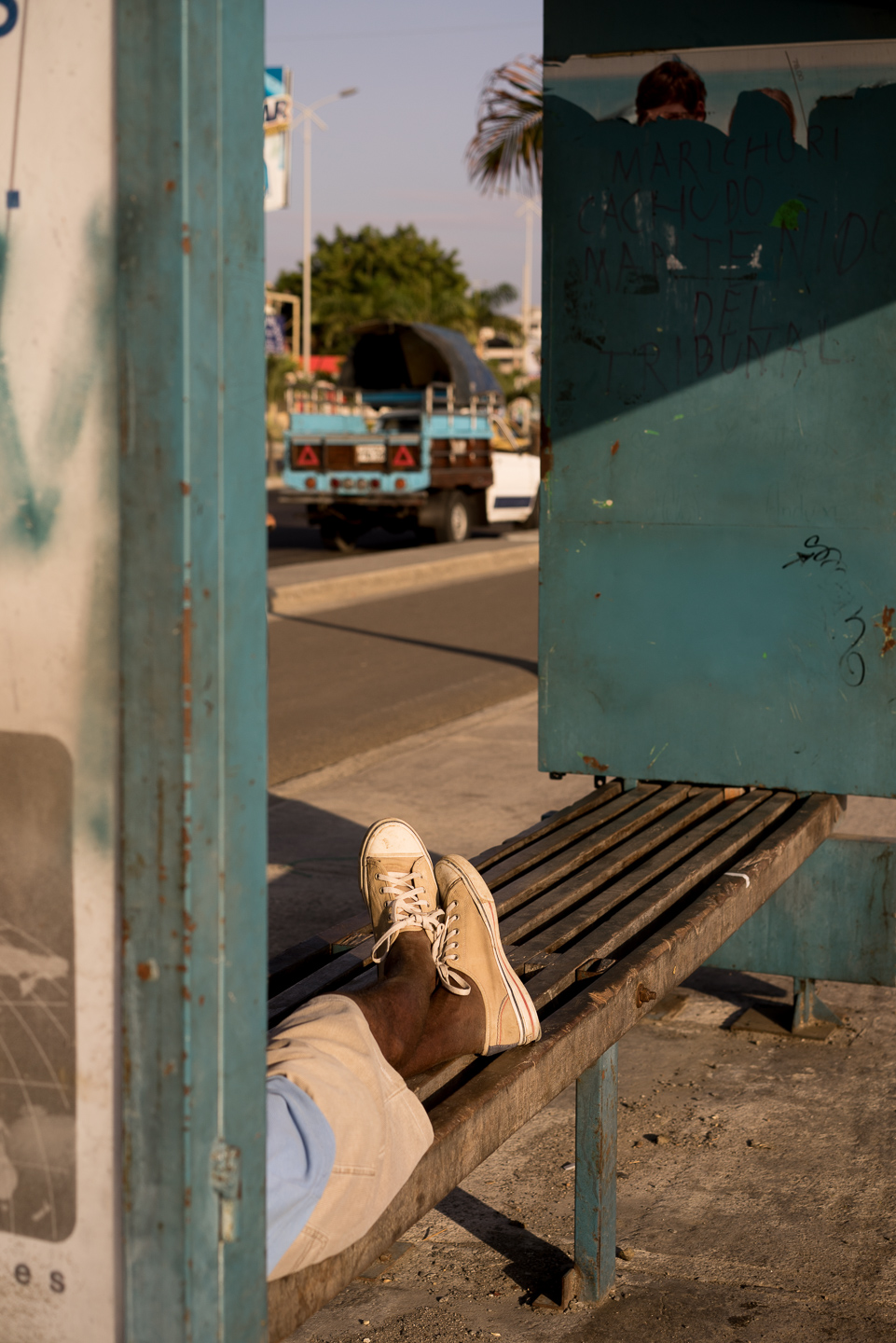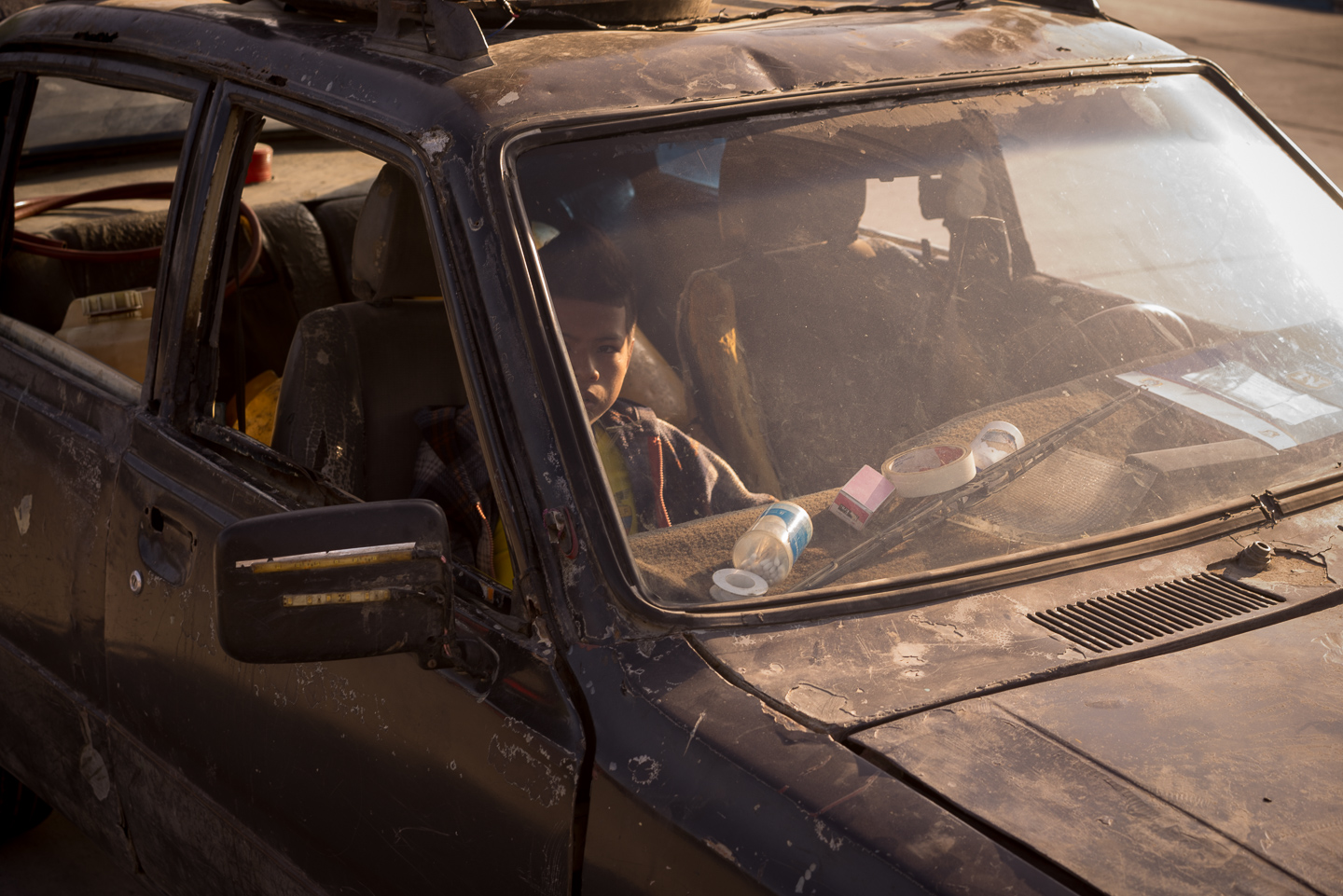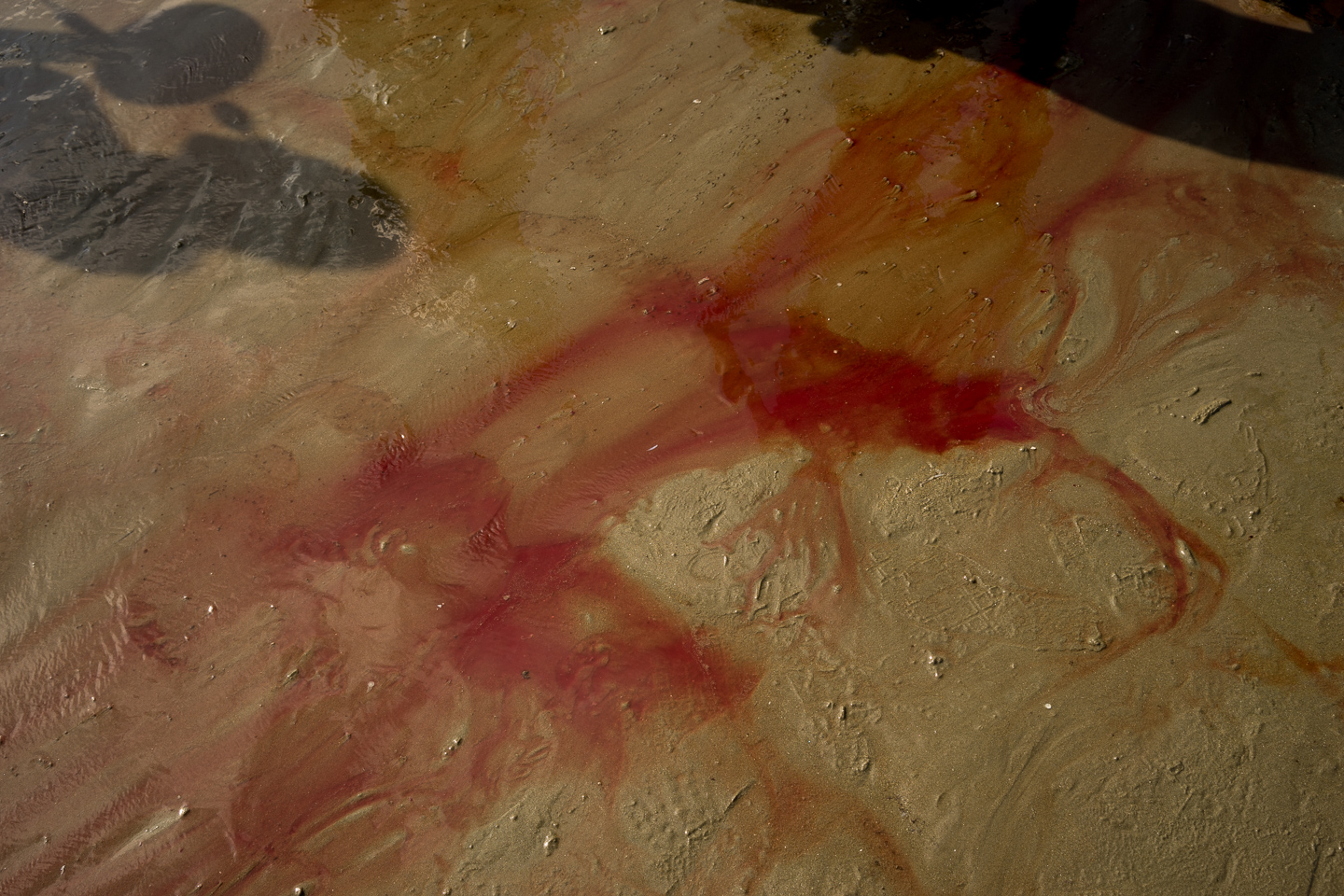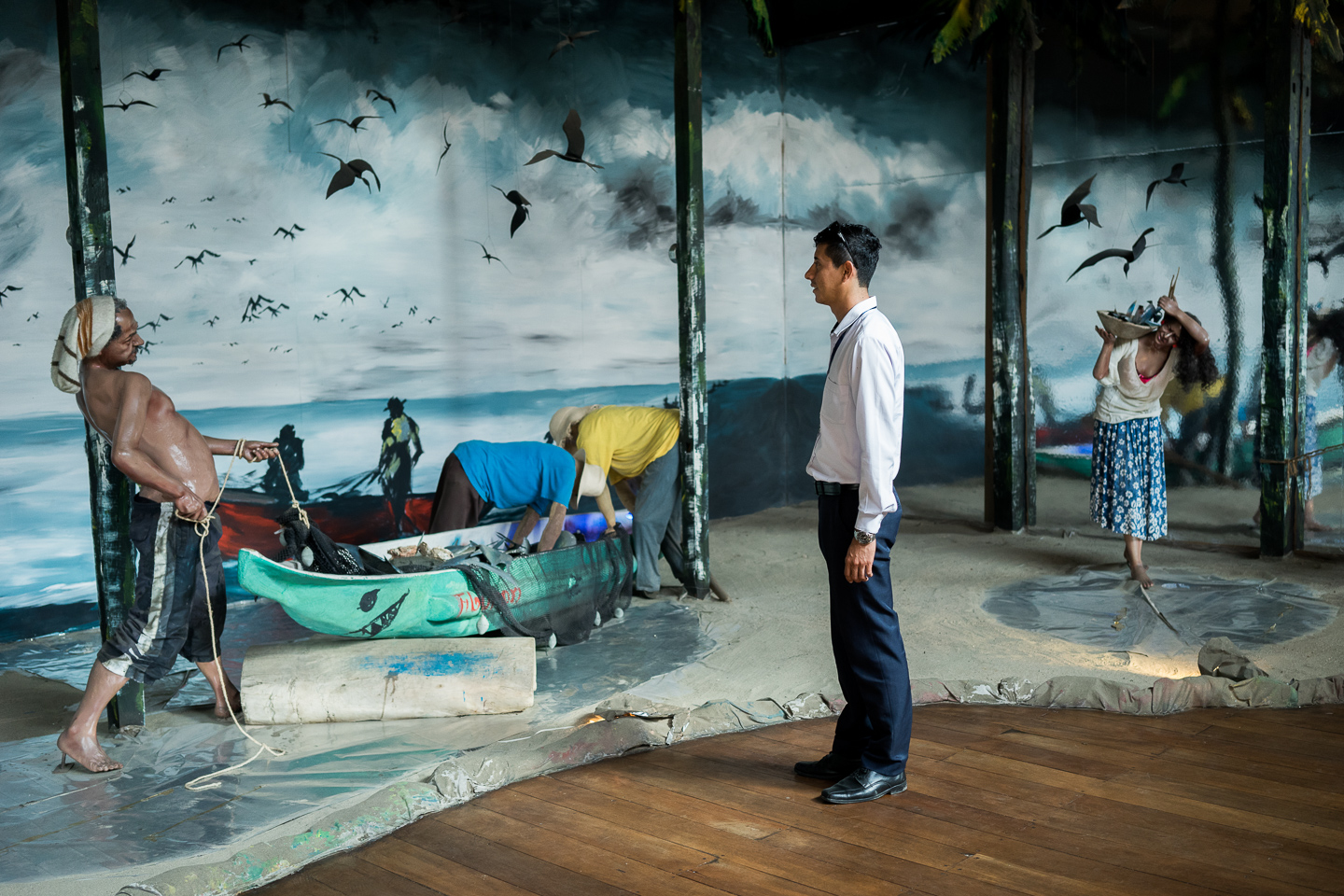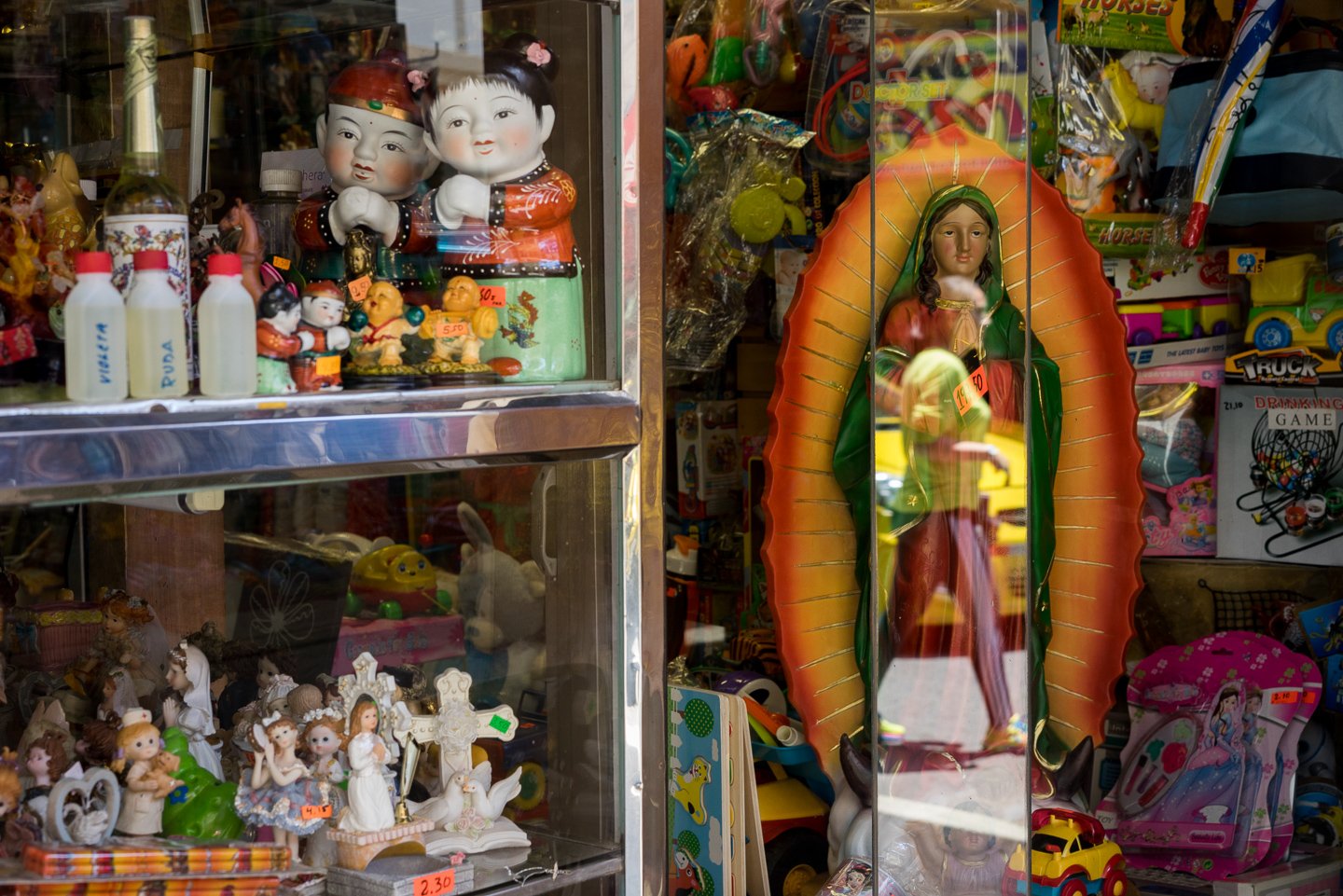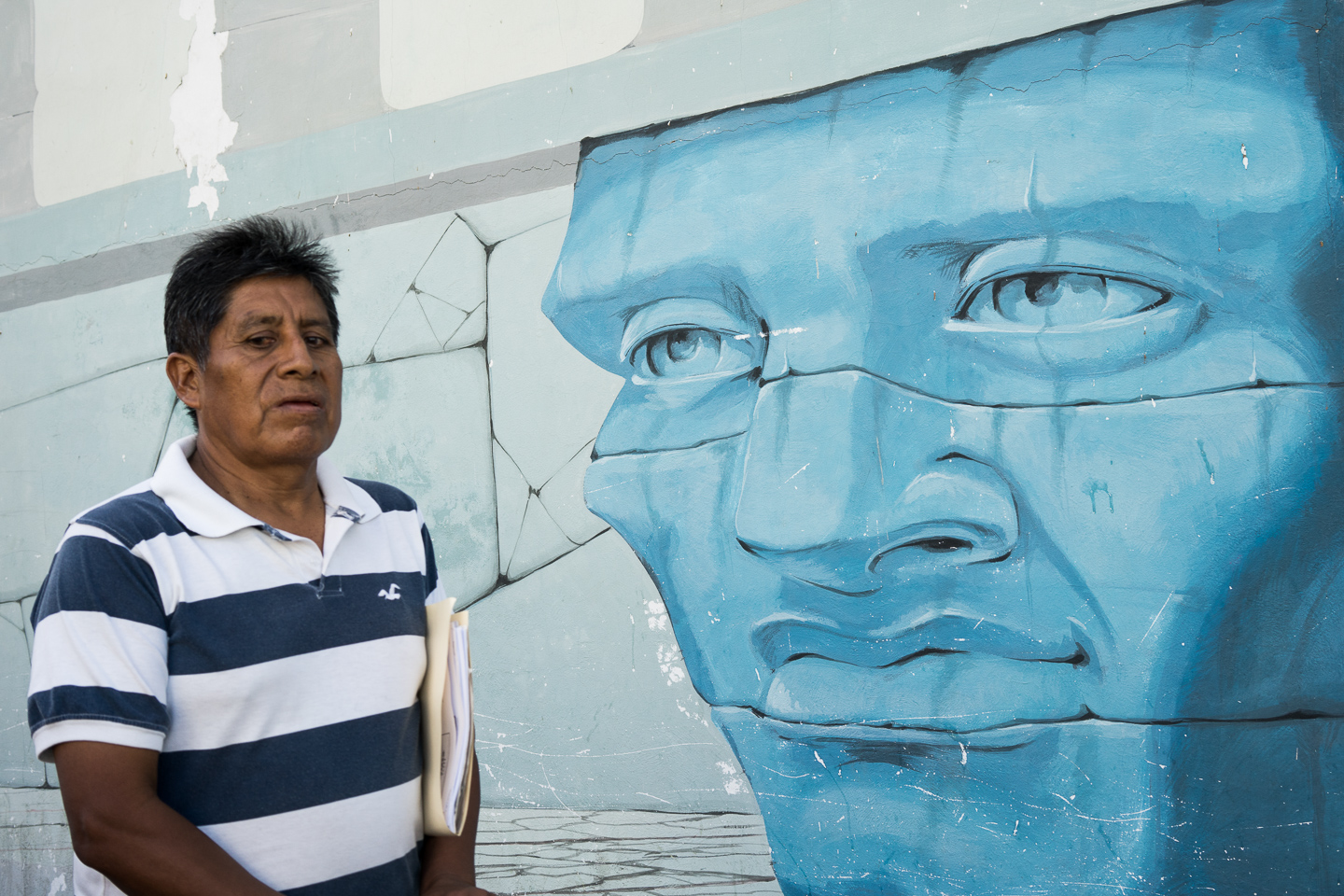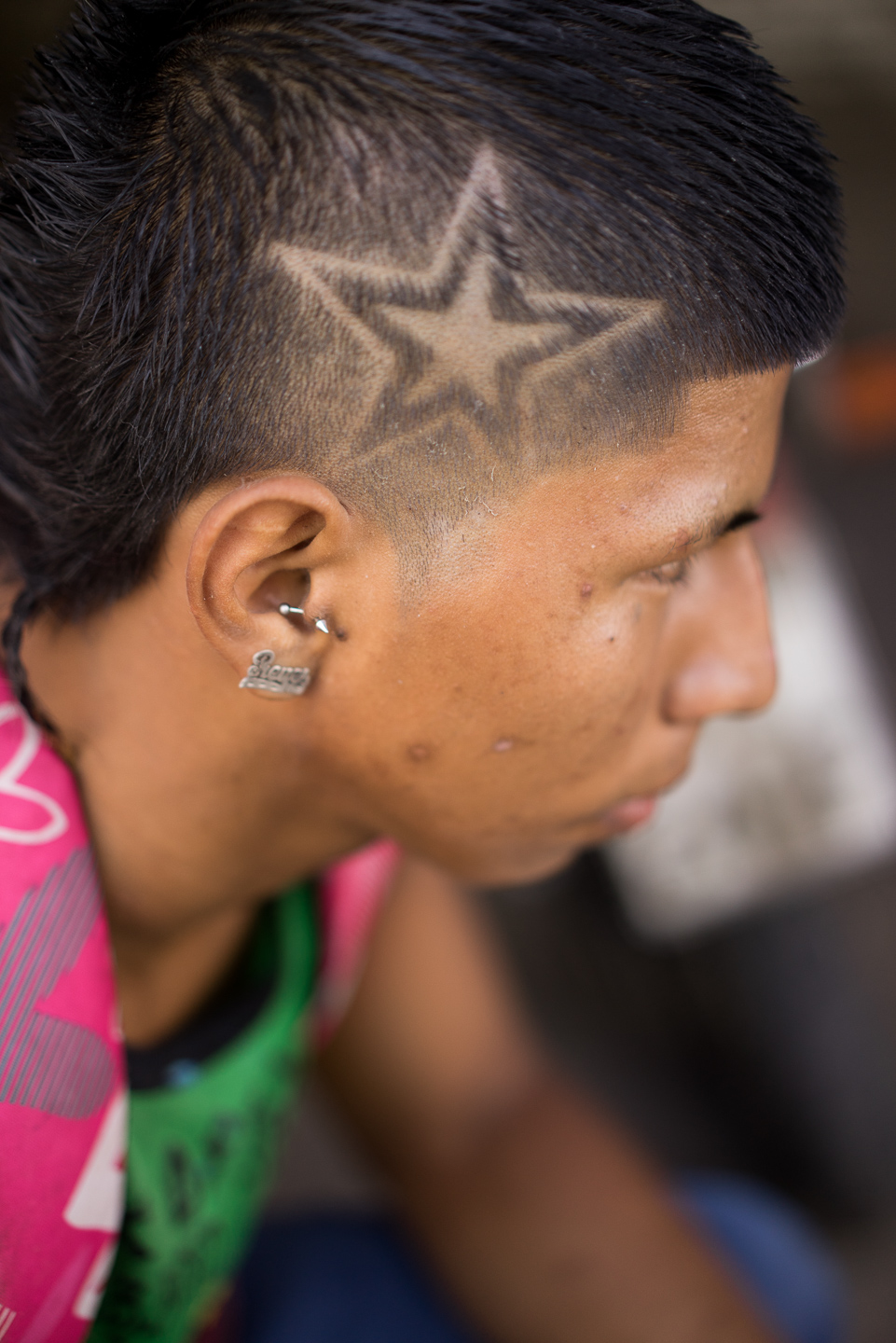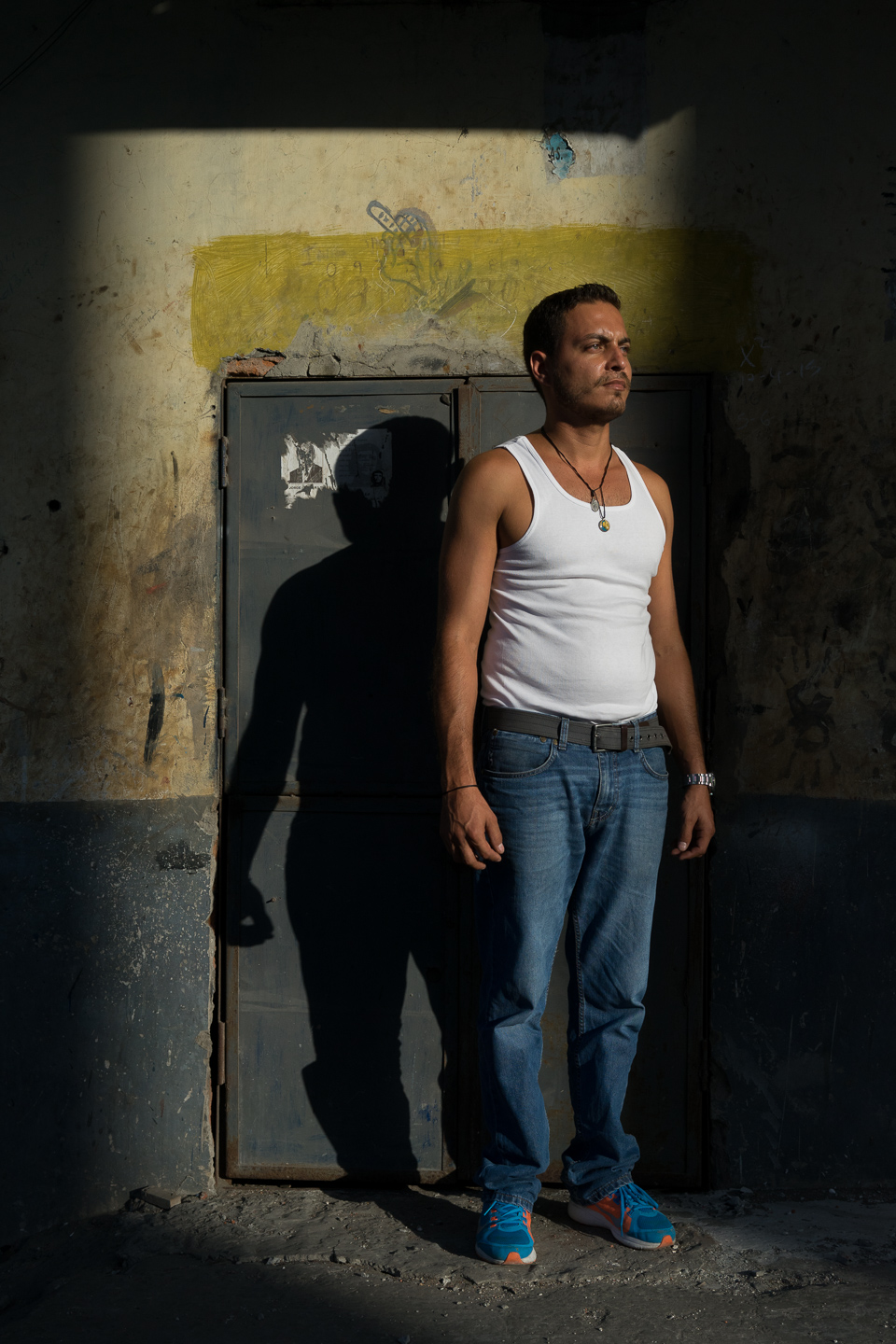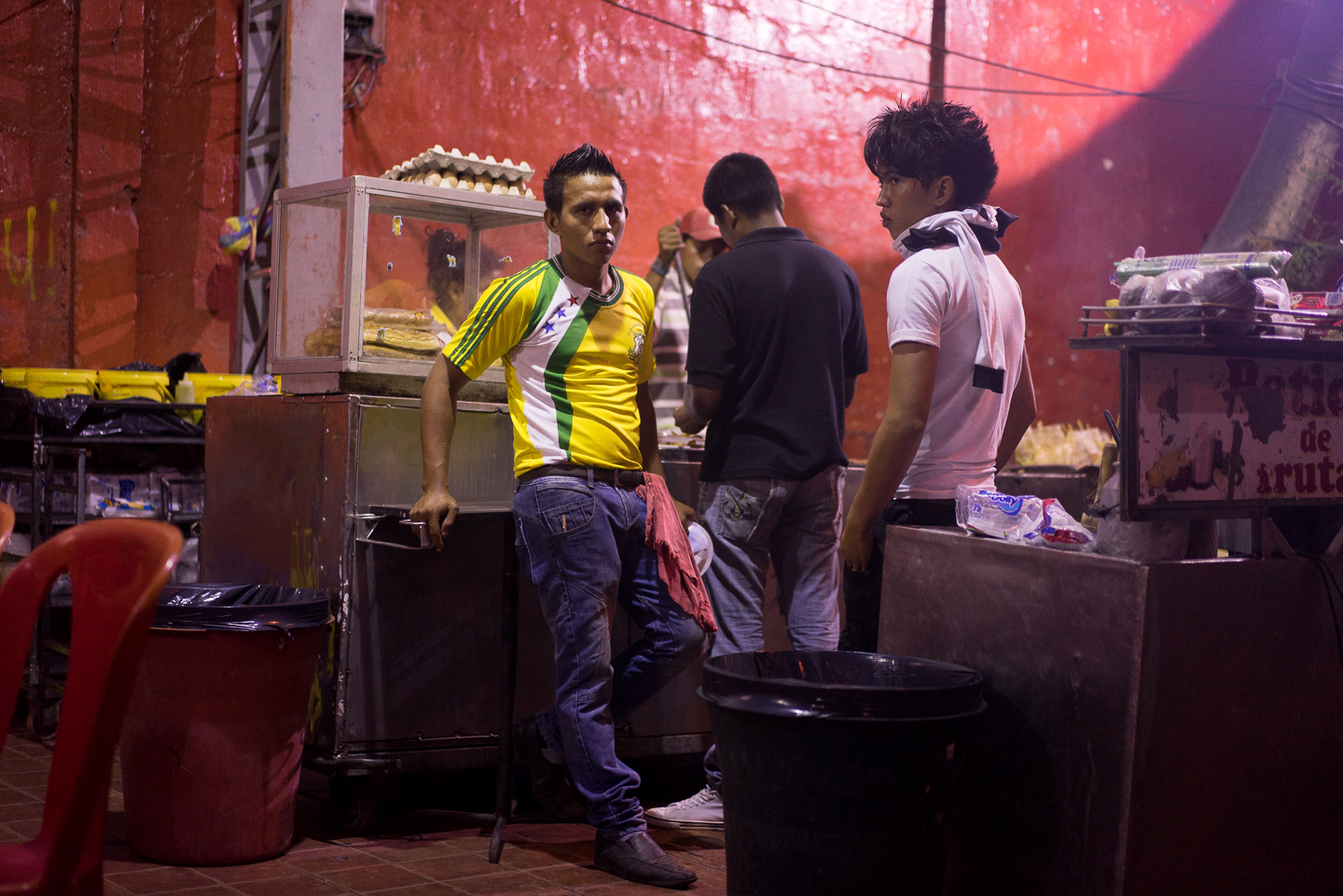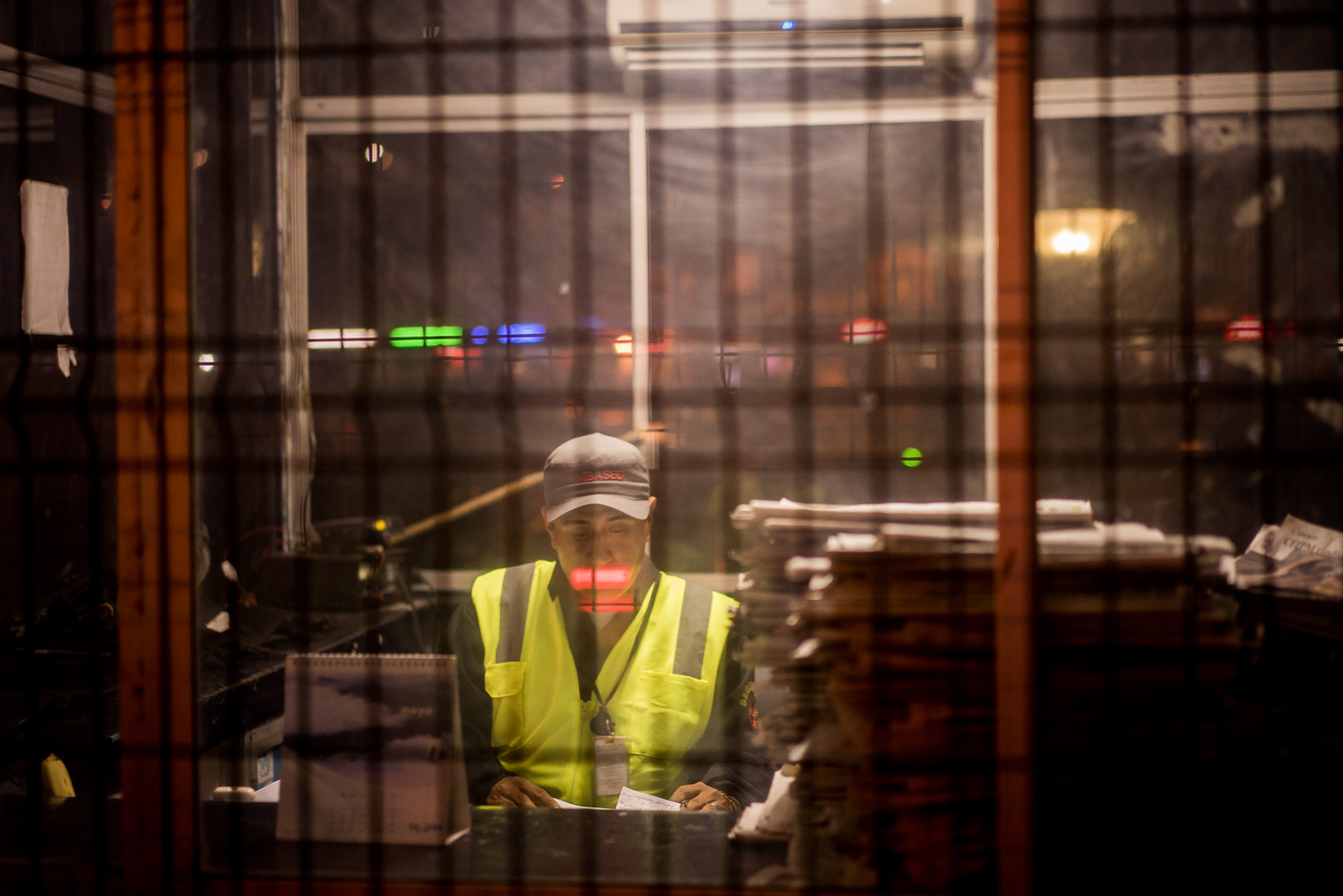Photos by Ivan Kashinsky and Karla Gachet
My grandma passed about a year ago. I had to shoot an event leading up to Day of the Dead for a story we were doing in Los Angeles. When my sister told me the news about grandma I was in such shock I didn’t know what to do. I sat in my car for a long time. I had thought about and feared this moment since I was a little kid. I felt numb, like my senses had been shut down and I was floating, suspended, inside myself. I knew the world would never be the same. I started missing her hands and their warmth when she rubbed mine. I had to touch her one last time.
That night I rushed home to buy tickets for Ecuador for me and baby Piuma, and realized he didn’t have a passport. I couldn’t leave my three month old baby. I looked up at the ceiling and cried all night. The next morning I knew what I had to do. I bought my 2 day ticket to Quito and got formula for Pi to stay with his dad. The last time I saw my grandma Angelina alive was in Ecuador a few months earlier. I flew down to visit her with my son Nahuel and an eight month old baby inside my belly. My grandma held my hand like many other times. I anchored myself to her wishing I could have her forever. I remember being so scared about all the changes that were coming, like a tidal wave about to drown us all:
There was work and being a mom and the unavoidable conflict of trying to keep life balanced.
There was Nahuel and the end of our exclusivity. Our three year love affair would be disrupted by another. I hadn’t even fully weaned him yet.
There was the new creature, who I would have to keep alive and healthy. There was the lack of sleep and life-changing chaos that a new baby brings. Not to mention the cocktail of crazy hormones coming my way.
There was Ivan, who was probably more scared than me. I had convinced him about kid #2. I figured it was a long-term investment and we would eventually all win in the end. Yet I knew when things got hairy, I would be held accountable.
As if all this wasn’t enough, the Universe decided to throw me a curve ball and we got offered the dream assignment. Ivan and I sat at my parent’s house in Ecuador looking at this giant belly in front of me, trying to decide whether to take the job or not. All of my previous conflicts became miniscule. We took a deep breath and accepted it. It had to be completed in the next months with a three month break in between shoots so I could pop the kid out.
We flew back to LA and dove right into our assignment. People thought I was joking when I would show up with a gigantic stomach and a camera. It definitely helped break the ice. At the hospital they wanted to monitor me two times a week because I had gestational diabetes. I had to keep a journal of every meal I ate and poke my fingers four times a day. Towards the end, I was prescribed insulin shots. It was ironic that I got to experience what my grandma had been doing for decades because of her diabetes.
All that was the easy part. There was Nahuel who was babysat by the grandparents, uncle Aaron, random babysitters, basically anyone who offered help. In the mornings he would ask, whose house am I going to today? Some days we didn’t get to see him awake.
Above it all, there was the pressure to shoot at the highest level possible. It’s almost like we were living in an alternate reality where all that mattered was getting the shots, connecting, gaining access, covering all we could in the time we had. I would sit in a hospital bed with a monitor on my belly making phone calls to my contacts. My car became my office, kitchen, shooting station and resting place.
The day I slept on the floor of a school with a tiny mat that couldn’t contain all of me, it hit me. It was time to stop. My feet looked like canoes. I had to nest and re-connect with my sons. Piuma was born in the middle of June, a sun baby, full of warmth. He gave off heat like cauldron just like my grandma did. Giving birth is your own ceremony, a connection with the most basic aspect of your humanity and with the divine within. Pi slept on me as I edited tens of thousands of photos. We started shooting again. I carried my camera in one bag and my breast pump in another. My dad came from Ecuador to help me with the kids and my mom stayed home with my grandma who wasn’t doing too good. Then she got worse. And then the phone call came before Day of the Dead.
The day of her funeral her whole tribe came to say a last goodbye to her. I touched her soft, cold skin and I felt my own mortality getting closer. We cried her death and celebrated her life. The birth of Piuma and the death of my grandma shook my core and shifted my perception of my own life. My grandma had many sayings. One of them was: “It’s not what you want to happen, but what God decides”. In other words, don’t make too many plans because life might come and slap you in the face. Last year was a rollercoaster. After we finished the story, I stayed home and enjoyed my dudes. Tomorrow the whole family will embark on another crazy ride, this time aboard a giant pumpkin. Let the games begin :)
PS. Thank you Ivan for documenting our life with such beauty. I love the way you see us.
Una Ultima Palabra por Dia de Difuntos
Mi abuela falleció hace aproximadamente un año. Tuve que fotografiar un evento un mes antes del Día de los Muertos para una historia que estábamos haciendo en Los Ángeles. Cuando recibí la noticia, estaba en shock y no supe qué hacer. Me quedé sentada en mi carro durante mucho tiempo. Había temido este momento desde que era una niña. Me sentía adormecida, como si mis sentidos se hubieran apagado y estuviera flotando, suspendida, dentro de mí. Sabía que el mundo nunca sería el mismo. Comencé a extrañar sus manos y su calor cuando ella frotaba las mías. Tenía que tocarla una última vez.
Esa noche corrí a casa para comprar boletos para Ecuador para mí y para mi bebé Piuma, y me di cuenta que el no tenía pasaporte. No podía dejarlo, solo tenía tres meses. Lloré toda la noche. A la mañana siguiente supe lo que tenía que hacer. Compré mi boleto de 2 días a Quito y fórmula para que Pi se quedara con su papá. La última vez que vi a mi abuelita Angelina con vida fue en Ecuador unos meses antes. Había volado con mi hijo Nahuel y un bebé de ocho meses dentro de mi vientre. Mi abuela tomó mi mano como muchas otras veces. Me anclé a ella deseando poder tenerla para siempre. Recuerdo que estaba tan asustada por todos los cambios que se nos venían, como una marea a punto de ahogarnos a todos:
Estaba el trabajo y ser madre y el inevitable conflicto de tratar de mantener una vida equilibrada.
Estaba Nahuel y el final de nuestra exclusividad. Nuestra historia de amor de tres años sería interrumpida por otro. Aún ni lo había destetado por completo.
Estaba la nueva criatura, a la que tendría que mantener viva y sana. Se me venían noches de insomnio y toda la locura hormonal que trae un nuevo bebé.
Estaba Ivan, que probablemente estaba más asustado que yo. Yo lo había convencido acerca del niño # 2. Pensé que era una inversión a largo plazo y que al final todos ganaríamos. Sin embargo, sabía que cuando las cosas se pusieran peludas, se me haría responsable.
Como si todo esto no fuera suficiente, el Universo decidió lanzarme una bola curva y nos ofrecieron la historia de nuestros sueños. Ivan y yo nos sentamos en la casa de mis padres en Ecuador, mirando mi gigantesca barriga, tratando de decidir si aceptar el trabajo o no. Todos mis conflictos anteriores se volvieron minúsculos. Respiramos hondo y lo aceptamos. El trabajo había que completar en los próximos meses con un descanso de tres meses para dar a luz al bebé.
Volvimos a Los Angeles y nos lanzamos de cabeza al trabajo. La gente pensaba que era una broma cuando aparecía con un estómago gigantesco y una cámara. Definitivamente ayudaba a romper el hielo. En el hospital querían vigilarme dos veces por semana porque tenía diabetes gestacional. Tuve que llevar un diario de cada comida que comía y pinchar mis dedos cuatro veces al día. Hacia el final, me recetaron inyecciones de insulina. Fue irónico que pude experimentar lo que mi abuela había estado haciendo durante décadas debido a su diabetes.
Todo eso fue la parte fácil. Lo difícil era encontrar con quien encargar a Nahuel. Se iba con sus abuelos, el tío Aaron, niñeras varias, básicamente cualquiera que ofreciera ayuda. En las mañanas me preguntaba, “A que casa me voy hoy? Algunos días no lo veíamos despierto.
Por encima de todo, había la presión para documentar al nivel más alto posible. Era casi como si estuviéramos viviendo en una realidad alterna donde todo lo que importaba era tener las fotos, conectarse con la gente, obtener acceso, cubrir todo lo que pudiéramos en el tiempo que teníamos. Me sentaba en una cama de hospital con un monitor en mi vientre haciendo llamadas a mis contactos. Mi carro se convirtió en mi oficina, cocina, enfermería y lugar de descanso.
El día en que dormí en el suelo de una escuela sobre una colchoneta que no podía contener mi humanidad, decidí que era hora de parar. Mis pies parecían canoas. Tenía que empezar a anidar y re-conectarme con mis hijos. Piuma nació a mediados de junio, un bebé de sol, lleno de calor. Desde que nació era una pequeña caldera, igual a mi abuela. Dar a luz es tu propia ceremonia, una conexión con el aspecto más básico de tu humanidad y con lo divino en tu interior. Pi dormía en mi mientras editaba decenas de miles de fotos. Empezamos a trabajar de nuevo. Llevaba mi cámara en una bolsa y mi extractor de leche en otra. Mi papá vino de Ecuador para ayudarme con los niños y mi mamá se quedó en casa con mi abuela que ya estaba un poco mal. Luego empeoró y luego recibí la llamada telefónica antes del Día de los Muertos.
Toda su tribu asistió para un último adiós. Toqué su piel suave y fría y sentí que mi propia mortalidad se acercaba. El nacimiento de Piuma y la muerte de mi abuela me sacudieron y cambiaron mi percepción de mi propia existencia. El dia de su funeral lloramos su partida y celebramos su vida. Mi abuela tenía muchos dichos. Uno de ellos era: "No es lo que uno quiere sino lo que Dios decide". En otras palabras, no hagas demasiados planes porque la vida podría venir y darte una cachetada. El año pasado fue una montaña rusa. Después de que terminamos la historia, me quedé en casa y disfruté de mis chicos. Mañana nos embarcamos en una nueva aventura, esta vez dentro de una calabaza gigante. Que empiecen los juegos!
PD. Ivan, gracias por documentar nuestra vida con tanto amor. Me encanta la manera en que nos ves.


